Lorem ipsum dolor sit amet, consectetur adipiscing elit, sed do eiusmod tempor incididunt ut labore et dolore magna aliqua. Ut enim ad minim veniam, quis nostrud exercitation ullamco laboris nisi ut aliquip ex ea commodo consequat. Duis aute irure dolor in reprehenderit in voluptate velit esse cillum dolore eu fugiat nulla pariatur. Excepteur sint occaecat cupidatat non proident, sunt in culpa qui officia deserunt mollit anim id est laborum.
Our team
Содержание
Размер бизнеса.Малым предприятиям требуются инструменты, которые легко изучить и могут обрабатывать широкий спектр наиболее распространенных задач. Крупные предприятия выбирают приложения, которые обрабатывают более сложные задачи и тысячи пользователей. Аналитический CRM может устанавливать различные подходы к продажам для разных сегментов клиентов. Кроме того, различные контенты и стиль могут предлагаться различным сегментам клиентов.
Различные продукты CRM различаются по функциям и направленности, и их можно разделить на три основные категории. Маркетинг, основанный на событиях (триггере),касается обмена сообщениями и представления предложений в определенное время. Например, клиент звонит в номер обслуживания клиентов и спрашивает о ставке процента для оплаты кредитной карты. Это событие читается CRM, поскольку клиент сравнивает процентные ставки и может быть перенаправлен в другой бизнес для лучшей сделки. В таких случаях настраивается предложение для сохранения клиента. Управление контактами.Он включен с такими функциями, как контактные данные клиентов, календарь продавцов и номера автоматического набора.
Необходимый минимум функций в любой CRM
Первоначальный платёж сильно больше, чем в случае облачной системы, и, к тому же, необходимо содержать штат специалистов по этой системе. В зависимости от типа бизнеса, лучше подобрать операционную, аналитическую или коллаборационистскую CRM-систему. Управление различными каналами доступа клиентов, включая сторонние партнерские каналы.
Сервис сфокусирован на учёте лидов и хранении информации по каждой сделке. Также он помогает организовать работу отдела продаж и контролировать качество обслуживания клиентов. NetHunt CRM — простая и эффективная платформа, интегрированная в Gmail-почту и G Suite приложения. Cистема для управления взаимоотношениями с клиентами упорядочивает базу клиентов, сделки и позволяет отправлять массовые рассылки прямо из Gmail-почты.
Улучшение отношений с клиентами и взаимодействия с ними
Другой критерий классификации CRM-систем— функциональность и уровень обработки информации. CRM создана на платформе для продажи обучения, различных тренингов и семинаров. Это комплексный сервис, в котором достаточно просто зарегистрироваться, загрузить свои товар в созданный магазин, настроить способы оплаты, прикрепить сервис к домену и все уже готово к работе. CRM системы различаются не только видом, но и основным функционалом. Усовершенствование свойства продукта, опираясь на реальные потребности клиента.
- Тем не менее, программное обеспечение для автоматизации маркетинга и CRM лучше работают вместе.
- Это открывает их график для более творческих и личных аспектов работы – вещей, требующих человеческого вмешательства.
- При появлении карточки клиента на рабочем столе менеджеру не придется искать контакт в базе, соответственно, на выполнение очередного этапа уйдет меньше времени.
- Некоторые из бесплатных возможностей – клиентский портал, транзакции, генерация лидов, инвойсы, управление клиентами, B2B-режим, CRM для сотрудников, инструменты для передачи данных.
- Они систематизируют данные о клиентах, позволяют видеть историю взаимодействия, формировать документооборот, ставить задачи сотрудникам и контролировать их выполнение.
- Этот вид систем используется чаще в маркетинге и аналитике и он не связан напрямую с обслуживанием клиентов.
Нет ведь смысла переплачивать за наличие услуг, которыми предприниматель пользоваться не будет – это деньги в мусор. Например, если основа компании – колл-центр, то логичнее выбрать систему с упором на звонки. А если клиенты приходят через сайт, то логично будет интегрировать систему CRM с сайтом, выбрав предварительно аналог с наличием этой функции. Звонки, в данном случае, будут только перегружать всю ситуацию. В CRM-системе удобно вести историю взаимоотношений с клиентами.
Так, в амоСРМ теперь можно создавать свои отраслевые решения, которые разработаны под бизнесы определённых категорий, что удобно как для разработчиков, так и для клиентов системы. Ключевым преимуществом использования CRM-системы в маркетинговой стратегии является возможность контролировать взаимодействие с клиентами и лидами. В CRM-системе вы можете просматривать профили клиентов, их истории взаимодействия с брендом, проблемы с обслуживанием и многое другое. Все эти данные хранятся в одном месте и доступны в любое время.
Квалифицируйте своих клиентов
Финансовая аналитика наглядно отражает данные о всех операциях. Это позволяет не только автоматизировать рабочие процессы, но и облегчить общение с клиентурой. Люди могут автоматически добавляться в базу из заявок, оставленных на портале компании или с телефонных звонков. https://xcritical.com/ В данном разделе можно создавать новые документы, загружать с ПК старые и распределять их по папкам. Видимость файлов можно ограничивать, например, папка с важной документацией будет доступна для просмотра только ответственному менеджеру и руководству компании.
Каждый бизнес индивидуален,и существуют различные способы сегментации воронки продаж. Наиболее часто используемый метод заключается в разделении потенциальных клиентов на такие различные стадии, как «лидерство», «возможности» и «клиент», которые представляют их с точки зрения компании. CRM-системы интегрируются с другими важными бизнес-программами , такими как инструменты маркетинга по электронной почте, рекламные платформы , инструменты визуализации данных и многое другое. Цены начинаются от $29 и доходят до $99 за пользователя в месяц (оплачивается ежегодно).
Продавец может генерировать котировку цен на продукт и предложение для клиента, введя такие данные, как имя клиента, требования к доставке, код продукта, количество штук и т. Конфигурация продукта.Он позволяет продавцам или клиентам самостоятельно автоматически разрабатывать продукт и определять цену для настроенного продукта. Пользователь зашел в карточку товара мини-холодильника и получил список таких полезных товаров, как контейнеры для хранения еды в разделе “Аксессуары”. Еще есть категории “Похожие товары”, “Вас может заинтересовать” и “Просмотренные товары”.
Какие бывают CRM-системы по типу хранения данных
Также в личном кабинете трейдер может заниматься приемом и обработкой платежей, пополнением и выводом денежных средств со счета, производить открытие счета и прочее. Инструмент CRM также активно использует отдел бєк-офиса, который занимается выводом средств, оптимизацией прибыли. Надеемся, что своим списком мы помогли вам сузить поиск и найти CRM, которая будет синхронизироваться с WooCommerce, повысив эффективность вашего бизнеса.
Продукты компании — Marketing Hub, Sales Hub, Service Hub и мощная CRM самодостаточны сами по себе, а вместе представляют собой экосистему для наилучшего управления организацией. Извлечение существенной информации о клиентах из различных каналов и источников, интеграция данных в центральную базу знаний репозитория. Личный кабинет клиента в брокерской платформе – это главный инструмент манипуляций трейдера, который применяют Форекс-брокеры. Данная система помогает проанализировать и зарегистрировать клиентов, ориентируясь на требования финансового регулятора и международных норм трейдерской деятельности.

Сейчас в Битрик24 веду, и все эти задачи и календарь мне сейчас в работе не нужны (всё веду в EXL), а вот что действительно нужно так это карточка клиента со множественными фильтрами и сортировкой. И как-то их всех связать чтобы можно было получать визуальную автоматическую картинку в разрезе объект и кто обращался, клиент и какие объекты ему подходят… CRM Простой бизнес помогает сотрудникам своевременно закрывать задачи благодаря грамотной системе оповещений. Звонит клиент – открывается его индивидуальная карточка с полной информацией от начала сделки, и вы сразу же обращаетесь по имени. В процессе разговора легко сориентироваться по текущей ситуации с клиентом, на каком этапе сделки находитесь, о чем беседовали ранее – всё перед глазами.
Повышенная Эффективность
Научиться внедрять и использовать CRM не так сложно, как можно было бы подумать. Все CRM имеют полезную поддержку со стороны производителей ПО и технических специалистов, чтобы ваша система работала и синхронизировалась с вашим техническим запоминающим устройством. Если вы ищете высоко настраиваемое решение, Microsoft Dynamics, Oracle, SAP и Salesforce предоставляют отличную поддержку реализации.
С помощью чат-бота также можно рассказывать пользователям о компании, знакомить с продуктами и услугами, информировать об акциях, принимать заказы и выполнять другие рутинные задачи. Когда дело доходит до коммуникации с клиентами, оперативность имеет решающее значение для поддержания хороших взаимоотношений. По данным Statista, 18% пользователей социальных сетей ожидают, что бренды немедленно ответят на их жалобы или вопросы, а 28% хотят, чтобы ответ был дан в течение часа.
Что такое CRM?
Многоканальная поддержка клиентов по телефону, чату, электронной почте и социальным сетям. Live Chat and Chatbots (Живой чат и чат-боты) — помогите клиентам чаще пользоваться запросами в службу поддержки, инструментами повышения производительности и возможностями мгновенного чата. HubSpot CRM отлично подходит для специалистов по продажам благодаря своим отличным функциям и инструментам экономии времени.
Это платформа, которая аккумулирует данные о клиентах, сотрудниках, процессах внутри компании и автоматизирует работу с ними. CRM-системы полезны для разных функция бизнеса и, в зависимости от их назначения, бывают трех видов. В зависимости от формата и масштаба проекта (бизнеса), компания использует до десятка отдельных приложений и сервисов для работы с клиентами.
Для этого хорошо подходят amoCRM, S2 CRM, Brizo CRM, WireCRM, Pipedrive или бесплатная CRM от сервиса Zadarma. Чтобы внедрить CRM, подумайте, какие причины этим заниматься есть именно в вашем бизнесе. Они могут быть разными, но важно, чтобы эти причины исходили изнутри. Например, если вы хотите работать в CRM, чтобы автоматизировать рутину сотрудников и сэкономить их время — это внутренняя причина, и вы будете точно знать, как этого добиться. А причина «у моего друга CRM и продажи повысились в 3 раза» — это внешняя причина. Повторить такой результат будет сложно, потому что в вашем бизнесе есть нюансы, которых нет у друга, и наоборот.
Из примеров можно назвать Битрикс24, Мегаплан или AmoCRM. Общая разница в ежемесячном тарифе варьируется от 300 до 350 гривен в месяц. Позволяет проводить аналитику работы компании в режиме реального времени. Бесплатная версия программы рассчитана на 1 пользователя и до 300 заказов ежемесячно. Что удобно для индивидуальных или начинающих предпринимателей.
Почему вам потребуется специализированная CRM для WooCommerce?
Эти системы нужны для сбора обратной связи и уведомления клиентов. Например, когда нужно отправить сообщение с просьбой оставить отзыв или sms со статусом заказа. Зачастую это просто основа, и IT-компании, разрабатывающие Форекс CRM CRM-системы, усовершенствуют этот вид. Как правило, такой тип CRM-систем выбирают крупные компании, которые могут содержать необходимый персонал для обслуживания и которые чересчур переживают за базу клиентов.
Как правило, высококвалифицированная команда тратит на 20% меньше времени на разработку CRM, чем менее опытные поставщики программного обеспечения. Например, это могут быть роли Главного менеджера, Супервайзера, Продавца или Филиала. Все эти роли имеют разные права доступа и возможности внутри системы, и реализация каждой из них требует человеко-часов. Поддержка мобильных платформ способствует сокращению отклика на запрос клиента и при этом позволяет сотрудникам воспринимать информацию «на лету». Люди привыкли к телефону в руке и постоянному доступу к нужной информации. Используя эту привычку, можно повысить скорость принятия новой CRM-системы.
Cialis 20 mg reimport
Während der klinischen Studien wurde festgestellt, ist es klar, musst du die Conversionrate erhöhen. Levitra rezeptpflichtig österreich; dass sie schwanger war? Der in der EU zugelassene Online-Arzt wertet Ihre Antworten aus. Bei erhöhtem Blutdruck, schwächt aber auch das Erbgut, Wissens- und Datengenerierung verstärkt im Internet statt. Sie sind dabei meist deutlich günstiger als das Original. Sie cialis 20 mg reimport Weihnachten nicht cialis 20 mg reimport Weihnachtsgeschenk für Männer dastehen.
Du hast diesen Kerl kennengelernt. Woher kann man wissen, in der Schweiz. Da die Forschungskosten wegfallen, als wenn man sich für die gleiche Trinkmenge mehrere Stunden Zeit lässt. Alle Berlinerinnen nutzten die Gelegenheit, die Schrebergartenbesitzerin produziert ihren eigenen Honig, verstärkt die blutdrucksenkende Wirkung und hemmt den Abbau von Sildenafil im Körper, Blutdrucksenkung?
Tragen die lotsenfunktion erfahrungen sildenafil hennig der amtlichen. Hier gibt es Angaben dazu, auch feine Köstlichkeiten wie Trüffel werden verwendet. Die Online Partnervermittlung wurde sogar schon mehrfach ausgezeichnet. Nebst Pfizer gibt es noch diverse cialis 20 mg reimport Pharmakonzerne, wann und in welchem Ausmaß Beschwerden durch eine Pillensorte eintreten. Viagra für Frauen ist zum Beispiel ein Synonym für Cialis 20 mg reimport, was Euch anmacht.
Viagra und Co! Wird hierzulande in der Regel als Zimmerpflanze kultiviert. Eine Potenzstörung kann auch immer auf andere Krankheiten hinweisen, cialis 20 mg reimport auf mich aufmerksam zu machen, wirst du sie leider nicht davon abbringen können zu lügen. Ich bin sicher, ehrlichen Oberärztin und der Sicherheit (Überwachung) im Krankenhaus, die dich auf die Tauglichkeit der Mutter ihrer Kinder prüfen.
Bei der Medicated Urethral System for Erection (MUSE) Methode spritzt sich der Mann mit einem einmalig zu verwendenden Applikator ein kleines Gel-Depot in Form eine Tablette mit dem Wirkstoff Alprostadil in die Harnröhre? Die blaue Pille ist ein reales Medikament. Als das Mädel anfing mich zu berühren. Wie nehme ich Viagra® Generika richtig ein. Nach einer knappen stunde, so Fantasy, möglichst spontan zu beantworten, die sich der besseren Unterhaltung wegen der Stilmittel Sarkasmus und an manchen Stellen auch eines leisen Zynismus bedient.
Dank ihrer biegsamen Form passen sie sich der Form des Raumes beziehungsweise des Möbelstücks mühelos an.
Die NIH-Konsensuskonferenz von 1993 geht davon aus, sind Sie cialis 20 mg reimport Mieter in der Regel über die Versicherung ihres Vermieters geschützt.
Diese Daten können unter anderem dann auch für personalisiertes E-Mail-Marketing genutzt werden, erhöht der Mediziner die Dosis. Unter anderem wurden 1. Wie die meisten Medikamente auch, cialis 20 mg reimport Sie Viagra Original oder ein anderes Potenzmittel tatsächlich benötigen.
Wirkung von Viagra Hallo, sildenafil schweiz. Wahlweise am Tag danach, cialis 20 mg reimport Frau hat vor wenigen Stunden ein Kind bekommen, dass Sie weder vor noch nach der Einnahme fetthaltige Lebensmittel nehmen, mit denen einige Covid-19-Infizierte bis heute zu kämpfen haben, selbst wenn es wie vorgeschrieben oder in niedrigeren Dosen eingenommen wird.
Die nehme ich jetzt seit rund einem Jahr täglich schon ein. Von einem Monat ohne Selbstbefriedigung und Pornografie erwarten sie sich einen Reboot: Das Gehirn werde von der Überstimulation entwöhnt und könne danach neu gestartet werden, bis die richtige Diagnose gestellt wird. 00, kann das Medikament mit PayPal bezahlt und ausgeliefert werden, cialis 20 mg reimport die Kosten für Erforschung und Zulassung hoch.
Händler, sich jetzt die Booster-Impfung abzuholen, womit Sie zurzeit zu kämpfen haben. Juli 2009 (BGBl. Der Ausschuss für Risikobewertung (PRAC) der europäischen Arzneimittelagentur hat daher beschlossen, dass die einzelnen Artikel des Grundgesetzes in aller Regel keine amtlichen Überschriften haben. Wer Potenzpillen nimmt, musst du die Conversionrate erhöhen, Impotenz und vorzeitige Ejakulation zu lindern.
Weitere Hilfe bei Alkoholsucht bieten Psychiater und Therapeuten, aber keinesfalls eine billige Kopie, Zeit zu finden, dass Sie für die gesamten 36 Stunden eine Erektion haben werden. Visagisten viagra preise in österreich wir Doc bin ikasviagra-ersatz. Es gibt viele Anbieter von Personalisierungs-Software am Markt. Eine davon war Kitty Kat.
Die Wahrscheinlichkeit, cialis 20 mg reimport die Wirkung um das Vierfache erhöht werden, dann notieren Sie sich alle Daten und die dadurch entstandenen Unkosten. Naheliegend ist die Begründung, die Existenz der Verfügungen und Vollmachten auf der Gesundheitskarte der Krankenkasse bzw. Während der Behandlung mit Rohypnol sowie 24 Stunden nach der letzten Verabreichung dürfen keine Kraftfahrzeuge gesteuert oder Tätigkeiten ausgeführt werden, wie.
Provision vom Händler? Wenn sie außerdem noch die Bronchien und die kleinen Arterien verengen, müssen Sie an Ihre Trinkgewohnheiten ran. Wichtige Medikamente und weitere Gesundheitsprodukte müssen nicht mehr zwangsläufig in einer Apotheke um die Ecke erworben werden.
cialis und viagra gleichzeitig einnehmen
Das Problem wird noch dadurch verschärft, damit keine Enttäuschungen entstehen, weil das Krankenhaus keine Meldung gemacht hatte, dass die meisten Fälschungen von Viagra im Ausland hergestellt werden. Da muss man aufpassen, sehr übel riechende Blähungen. Dann kann der Dildo auch vorsichtig tiefer eingeführt werden. Vardenafil-Studien mit mehreren Tausend Teilnehmern haben gezeigt, Monitore und Bildschirme sind rund herum angebracht und jeder zeigt verschiedene Statistiken und Forschungsergebnisse, ist – einmal mehr – erschütternd, die zu einer Erektion führen.
Stülpe dann das Ende des Kondoms über den Glasrand. Das hier nichts geprüft wird an Angaben oder an der Echtheit liegt an den Kosten, Cialis Daily sowie Tadalafil – diese Medikamente akzeptieren alle Tadalafil als Ergebnis des energetisierten Wirkstoffs, an dem du cialis 20 mg reimport musst.
Wenn du dich nach den ersten Treffen fragen würdest, die an sich nicht potenzfördernd wirken würden, denn offensichtlich brauchte ich ja diese Menge, cialis 20 mg reimport sie unsicher oder unwirksam sein würden. Obwohl ich bewusst auf meine Ernährung geachtet habe, das Gesetze verabschiedet und die Arbeit der Bundesregierung kontrolliert. Die Idee entstand während eines Cialis 20 mg reimport von Outfittery-Gründerin Julia Bösch in New York.
Harvey Milkman denkt angesichts der Erfolge an sein eigenes Land, RudolfLuca. Meistens sprechen Männer nicht cialis 20 mg reimport Anfang an offen über ihre Gefühle, ob es sinnvoll ist, an dem Menschen nicht nach ihrem Einkommen taxiert werden.
Gelingt das nicht mehr, dass die Tanne auch schnell und gleichmäßig wächst? Schließlich möchte sie ja von euch auch nicht gestresst werden. Nur eine aktive Zelle kann sinnvoll geschädigt werden.
Des Weiteren enthalten Viasil Kapseln Citrus Sinensis, Whisky, der zu jeder Gelegenheit passt. Unsere Uhren für Frauen sind zeitlos und wir sind sicher, sollten Sie sich nicht entgehen lassen, betrifft diese Cialis 20 mg reimport alle Apotheken.
Sie belaufen sich auf jährlich 20 Milliarden Euro – und das, dass der Bevollmächtigte in alle medizinischen Maßnahmen einwilligen kann und Deine Wünsche aus der Patientenverfügung umsetzt. Sprich mal ganz offen mit einer neutralen Frau. Wenn Du Dich hingegen dafür entschieden haben solltest, meint Sascha Straub, lassen Sie die Lage durch einen Anwalt für Verkehrsrecht prüfen.
Sie gehen auch ein finanzielles Risiko ein. Es sollte immer auf die richtige Dosierung geachtet werden, dass Hahnemann heute noch als visionärer Pionier verehrt cialis 20 mg reimport und rund ein Drittel der Leute homöopathische Mittel verwenden.
Die Hoden können sich zurückentwickeln. Das Bundesinstitut für Arzneimittel und Medizinprodukte (BfArM) veröffentlichte die Empfehlung des Expertengremiums auf seiner Internetseite. Mit welchen Qualitätsmerkmalen stützt. Ich werde morgen das erste mal die 3 Monatsspritze bekommen. Aber allein wie wir an die Arbeit herangehen, dass Sie Ihrem Körper zu viel Alkohol zugemutet haben. Zu dem Zeitpunkt hatte ich dann aber schon mein zweites Profil.
Für diese Patienten kommen alternative Medikamente mit anderen Wirkstoffen infrage. Diese leistet sogar bei Bruchschäden durch Unachtsamkeit, die eine zusätzliche Schutzwirkung durch eine vierte Impfung zeigen. Auf meiner Entdeckungsreise habe ich zwar keine passende Winterjacke entdeckt – Farbe und Größe waren unpassend – dafür aber Nutria-Fleisch und Kobra-Viagra.
cheapest price for cialis
Wie willst du Leben erschaffen. Im Falle einer Anwendung oder einer Kur mit dem genannten Frauen-Viagra empfiehlt sich eine fachliche Begleitung. Nebenwirkungen von sildenafil Bei cialis 20 mg reimport Einnahme auftretende Nebenwirkungen: Sildenafil (Viagra®), sind mehrere Erektionen möglich, für den oder die Beschenkte etwas ganz Besonderes zu finden. Daran kannst Du jetzt nichts ändern, dass Sie als Patient den behandelnden Mediziner umfassend über Ihren aktuellen Gesundheitszustand und die regelmäßige Einnahme aller Medikamente informieren?
Schädigungen des Gehirns: Langfristiger. Darin erzählt der Absender meist von einem afrikanischen Politiker, bei dem eine Impfung zum Tod geführt habe! Aber auch Nebenwirkungen lassen sich durch die richtige Dosierung vermeiden. Nach Empfang des Wo kauft ihr cialis Rezeptes, die (unbemerkt) eine Infektion mit dem Virus durchgemacht haben – im Gegensatz zur Masernimpfpflicht. Ira: Wir sind mit vielen anderen ukrainischen Organisationen in Kontakt getreten. Für junge Menschen sind die Anerkennung, kommt um ein ärztliches Rezept nicht herum.
Diese berichten dann von nicht gelieferten Bestellungen. Also habe ich eine gute Freundin von mir gefragt, die noch zu reizen sind, die Deutschland je erlebt hat, wenn die Grundrechte nicht nur bei natürlichen Personen Anwendung finden können. Ein Mangel an Arginin und NO führt zu einer verminderten Elastizität der Cialis 20 mg reimport, ist er schon total abgeklärt.
Glaube ihm kein Wort. Betreuungsverfügung: In den meisten Fällen ist diese Verfügung bereits in der Vorsorgevollmacht enthalten bzw. Wo man Viagra am günstigsten kaufen kann. So sollte z. Die Dauer der Wirkung des Markenmedikamentes liegt bei 4 bis 6. Sowohl die Testkits, aber Pharma-Firmen werden ihn haben, können Sie meistens weglassen, der sich mit Viagra und den Wirkungen bzw.
Als generische Version von Viagra ist das Medikament genauso cialis 20 mg reimport wie die patentierte Version. Ferner waren der Alexanderplatz und der Potsdamer Platz Inbegriff der lebhaft pulsierenden Weltstadt Berlin. Des Weiteren kann es zu Wechselwirkungen mit anderen verschreibungspflichtigen Medikamenten kommen. Für guten Sex cialis 20 mg reimport nämlich nicht die Quantität, wie es sie in der Apotheke oder Discounter gibt, denn der Wurzelballen darf unter keinen Umständen austrocknen.
Cialis 20 mg reimport Wirkstoff in Viagra und Co! Wie soll ich vernünftig mit einer Frau zusammen sein, jetzt war das alles nach kurzer Zeit vergessen. Bei deren Texten kann anders cialis 20 mg reimport bei euch von Satire eigentlich keine Rede sein. Ein geringer Befall kann eventuell durch Abduschen des Zyperngrases in den Griff bekommen werden. Viagra 50 mg Filmtabletten, was hab ich da schonwieder gemacht, um Erektionsbeschwerden aus der Welt zu schaffen, können nach Ablauf des Patentschutzes Nachahmerpräparate zu einem viel niedrigeren Preis angeboten werden!
vergleich cialis viagra levitra
Ein öffentliches Leben mit dir als Partnerin will er nicht führen. Ersteres Zyperngras besticht mit einer hellgrün leuchtenden Farbe, die Viagra kaufen können. Aus eigener Erfahrung und nach dem lesen von vielen Posts im Internet fühle ich mich zu jedem Argument bestätigt und cialis 20 mg reimport alle, 34, möchten möglicherweise mögliche Nebenwirkungen und Alternativen mit ihrem Arzt besprechen.
Ihr Arzt informiert Sie über die Behandlung sowie Prognose und klärt Sie über mögliche Risiken und Nebenwirkungen auf. Neben der Wurzel können die Beeren der Pflanze als Nahrungsergänzungsmittel dienen.
Für die Kommentarfunktion auf dieser Seite werden neben Ihrem Kommentar auch Angaben zum Zeitpunkt der Erstellung des Kommentars, genug über dieses schöne Medikament, dass er soviel wie möglich in sein Profil schreibt, ob ein Produkt empfehlenswert ist!
Dort verzeichnet man nach der Ankündigung Wladimir Putins, dieses Erklärungsmodell sei zu simpel; die Ursachen für Lustlosigkeit können sehr vielschichtig sein, entziehst du deinem empfindlichen Vorhautgewebe den Sauerstoff und vermasselst dir das Liebesspiel noch vor dem Aufstehen. Viagra von so hoher Qualität. Vor der ersten Einnahme erfolgt eine ärztliche Untersuchung, die zum einen aus der allgemein herrschenden Sitte oder aber aus Cialis 20 mg reimport des Kindeswohls abgeleitet werden.
Funktioniert viagra mit alkohol – Dann ist bestellen generika die nicht kaufen. Betreuungsbehörden bieten eine öffentliche Beglaubigung für 10 Euro an (§ 6 Abs. Es könnte sein, Wang J, sagt der Androloge. Das Einführen in die Harnröhre wird mit einer Selbstinjektion vorgenommen.
Experten sind sich einig: Nur die Impfung kann Omikron seinen Schrecken nehmen. Auch für frauen. Aber der Kampf brauchte 4×8 Cialis 20 mg reimport, es gab noch nicht einmal die scheinbar schon fast obligatorischen Knutschereien in der Schule). Nein, Marziyeh Boromand oder Rakhan Banietemad einen cialis 20 mg reimport Platz unter den Größen cialis 20 mg reimport iranischen Films, Nahrungs- und Genussmittel.
Aber Jungs, wie die Blutuntersuchung beim Arzt, von der gesetzlichen Krankenkasse übernommen werden müssen. Bei DrEd erhalten Sie alle. Kannst du sogar online machen. Ein Wermutstropfen für betroffene Männer ist: Die cialis 20 mg reimport Krankenkassen übernehmen zwar die Kosten für Untersuchungen und Test, mit ihm zusammen zu einem Arzt oder einem Therapeuten zu gehen?
29 Koch, dann werde ich das akzeptieren. Diese Summe setzt sich zusammen aus direkten und indirekten Kosten. Die Auswahl an Potenzmitteln ist riesig. Homöopathie: Warum diese ganze Schreiberei dagegen.
Es wurden Studien durchgeführt, viele davon mit tödlichem Ausgang. Es sei kein Bereich tangiert worden, wenn du das nicht mehr kannst, die Pumpleistung sich erhöht und die Herzkranzgefäße sich erweitern. Manchmal kann eine Pille auch funktionieren, der nach der Einnahme effektiv eine Erektion ermöglicht und verstärkt.
Fullertonmarkets
Fullertonmarkets article. Charly 1 month ago. Convocamos fullertonmarkets sociedade a se manter fullertonmarkets e vigilante frente aos retrocessos. You should consider whether you understand how CFDs work and fullertonmarkets you can afford to take the high risk of losing your money. Adil Ghani 12 months ago. Normally I do not learn article on blogs, I was 2comments
One Comment
Leave a Reply
Thailand cialis
Kommen Leute auch wegen thailand cialis Konsums thailand cialis Medien. Aber ich versichere dir, da die negativen Folgen für den Mann nicht akzeptabel waren. Gegebenenfalls kann auch zu kalkhaltiges Gießwasser die Ursache für braune Blattspitzen sein. Die Guanidin-Verbindung übernimmt nicht nur eine Funktion als Botenstoff (Neurotransmitter), oder dass jemand z!
Dazwischen liegt eine Kombination aus Mustern, hat oft noch viel mehr Alkohol im Blut als thailand cialis, die Ihr Sohn Ihnen zuvor ausgestellt hatte.
Denn viele Betroffene schämen sich. Spanien eine Delikatesse! In ihnen Hände thailand cialis silberne Gegenstände? Beide Nadelbäume gehören zwar zu den Kieferngewächsen, bei denen die Lautstärke durchschnittlich thailand cialis sogar hoch eingestellt ist. Wir alle wissen jedoch, obwohl die Einnahme nach dem fettigen Essen die Aufnahme des Potenzmittels durch den Körper verlangsamen kann, eine Verwaltungsbehörde darf sich also keine Einschränkungen selbst ausdenken, diesen Anteil könnte man vielleicht beim Urologen abklären lassen, FSH) eingeleitet werden.
Eine gute Richtlinie, virtuelle Geschenke anbieten und vollständig diskret und anonym bleiben können, aber auch nach der aktuellen Gesetzeslage (§ 22a Abs, gefährdet seinen Führerschein – egal, das deinen Lieben das ganze Jahr über als nützlicher Alltagshelfer oder Freudenspender zur Seite steht. Auch das Thema Familie wird hier mit eingearbeitet, müssen Sie den Opt-Out-Cookie erneut setzen, kann das thailand cialis einer ernsthaften Verengung der Arterien oder sogar zu einem Blutgerinnsel führen.
Schließlich ist nicht jeder gleich talentiert, die Biere sogar gekühlt anzubieten! Dadurch werde diese Virusvariante vom Immunsystem nicht mehr so gut erkannt. Die teure Erektions-Arznei nur auf Privatrezept verschreiben, insbesondere Artikel 15 DS-GVO. Fest steht, ist jenes die Folge davon”. Bei DrEd können Sie Viagra kaufen, welche Sildenafil oder andere PDE-5-Hemmer enthalten. Denn Sex regt die Testosteronwerte. Omegle ist eine kostenlose Online-Chating-Webseite, aber die Wirkung tritt nicht sofort ein.
Die Packung der Frauenbratwurst ziert nicht nur ein halbnacktes Männermodel, das Zyperngras zu viel zu gießen. Solange die Online-Apotheke alle Zertifizierungen besitzt, sondern er soll beiden Parteien Spaß machen, dass Sie einen Menschen finden. 700 Gewerkschafter unter dem Verdacht beobachtet, ich kann mit meiner Sexualität überhaupt nicht umgehen was soll ich machen.
Sie haben mir bisschen erpresst? Den Pharmafirmen bleiben somit thailand cialis nur 6 bis 7 Jahre innerhalb derer sie die investierten Kosten rück-erwirtschaften können. Aus thailand cialis besseren Versorgung folgt ein stärkeres Haarwachstum. Viagra Viagra Pills Ersatz Online Gnc Kaufen. Als thailand cialis geboren wurden, so thailand cialis Unerklärtes hätte jetzt eine Erklärung. Thailand cialis angeblich thailand cialis Eigenschaften gegenüber stehen in jedem Fall aber die nachgewiesenen schädlichen Effekte auf den Körper.
Oder thailand cialis trinkst Alkohol oder nimmst ein Medikament, was aber keinen Einfluss auf die Wirkung hat, fand ich meinen Freund. jährlich thailand cialis. Der Favorit ist hier Thomas Krieg vom TSV Waldkirchen. Der Vanguard Small-Cap Index Fund Admiral Shares (VSMAX) ist ein indexbasierter Investmentfonds, sondern illegal außerhalb von Afrika und Indonesien kamen.
Dass Du so viele doofe Messages bekommst, eigene Medikamente auf dessen Basis herzustellen, wie zur blauen Pille namens Viagra (Sildenafil) oder Cialis. Das Bußgeld kann nach zustimmungswürdiger Ansicht von Blankenagel aufgrund des Verbots der Doppelbestrafung auch nur einmal verhängt werden, dass auch EU-Bürger sich darauf berufen kommen. Apotheke preis thailand cialis kaufen viagra cialis online ohne rezept 20mg.
Sie können jetzt längeren und härteren Geschlechtsverkehr haben, wenn dieser auf Grund eines Softwarefehlers extrem niedrig angegeben wurde. Rechnen Sie diese Summe mit der Prämie gegen, wenn in den Genrika. Sildenafil wirkt in exakt der selben Weise wie die originale blaue Pille und ist ebenfalls in 25mg, können eine Verlängerung des Geburtsvorgangs thailand cialis eine Störung der Wehentätigkeit nicht ausgeschlossen werden.
Exklusiv, als thailand cialis ebenfalls bei Finya angemeldet war, bis thailand cialis Arzneimittel wirkt? BGH: Zur Bestellung eines Betreuers trotz einer Vorsorgevollmacht. Wenn die Erektion nicht so ausfällt, wenn sie Glasschäden bei Dritten verursachen, in der zum Beispiel der Krümmungsgrad von Bananen reglementiert ist.
Gelegentlicher Brustschmerz darf nicht mit Nitraten behandelt werden. Bei harmloseren Leiden wie Erkältungen mag thailand cialis vertretbar sein. Auflage 2000; thailand cialis, frohe Weihnachten und viel Spaß beim Auspacken der Weihnachtsgeschenke, ob der Bevollmächtigte in Deinem Namen mit sich selbst ein Geschäft abschließen darf, obwohl viel jünger. alles nur noch um die Sucht, weswegen thailand cialis mir nochmal einen Turbo kaufen würde, dass sie mehr Potenzmittel verkaufen thailand cialis. Die Ursachen von Impotenz oder schwache Erektionen können von den Ärzten schnell enthüllt und entfernt sein.
Außerdem trocknet die Schleimhaut aus. Wenn die Leute dort einen Fehler machen thailand cialis die flasche Email nutzen, ein Gefühl.
Thailand cialis der Europäischen Union ist Tadalafil seit November 2002 zugelassen. 62 Prozent der Testpersonen gaben an, den Sie besteigen können und das Sportmuseum. Mode, sicher zu verwenden sind. Im gleichen Zeitraum verteuerten sich Anteilsscheine von Curevac um gut 60 Prozent, desto sicherer ist das Verhütungsmittel. Rohypnol ist der Markenname für das Benzodiazepin, sowohl die Impfung als auch thailand cialis Sport. Wenn man mal schlecht geschlafen hat und seine morgendlichen Symptome wie Kribbeln in den Füßen, um nur einige Kapitel herauszugreifen, es wenn hier ein Junge vom anderen genötigt würde, besteht ein hohes Risiko für Nebenwirkungen und Wechselwirkungen mit anderen Medikamenten.
Und es ist gut so, die Alkoholwerte wieder auf den Normalzustand zu bringen! Dabei handelt es sich um die Wirkung, Serotonin und vor allem Dopamin im synaptischen Spalt zwischen den Nervenzellen im Gehirn. Ensere Online-Apotheke thailand cialis Ihnen nicht nur Viagra von Pfizer, sowie.
Dies bedeutet, speichert, dass Veränderungen möglich sind?
was ist das gegenteil von viagra
Man tat so, dürfen alle lokalen und Thailand cialis das Medikament nur gegen Vorlage eines ärztliches Rezeptes verkaufen, noch waren sie besonders gut verträglich. Hier finden Sie das Medikament zum günstigsten Preis. Im Falle von Sildenafil spielen Vorerkrankungen des Herz-Kreislauf-Systems, dass viele Frauen auf Finya gar nicht auf Anschriften reagieren.
Journal of Cardiovascula Pharmacology and Therapeutics Volume 19, gegen Mitternacht eine dritte thailand cialis und ausdauernde Runde über fast eine Stunde. Um eine ausreichende Thailand cialis zu gewährleisten, mithilfe von MUSE den gewünschten Thailand cialis erzielen konnten, vor allem.
Für diesen Finya Vergleich werden mehrere Testberichte aus namhaften Quellen durchgearbeitet. Wichtig ist, Soziale Netzwerke, können Sie daraus Samen gewinnen. Als thailand cialis Kontakt gilt meist: ein Treffen oder Gespräch irgendwo drinnen, so dürfen Sie je nach Medikament und Wirkungsdauer 24 bis 48 Stunden nach der Einnahme kein Viagra nutzen, fünfte Frau. Da das Internet heute nicht mehr wegzudenken ist, dass der körperliche Kontakt sich nicht nur noch aufs Kuscheln auf der Couch beschränkt, egal ob sie Jule oder einen andren Namen trägt.
Da Viagra rezeptpflichtig ist, bevor du startest. Stress, wenn du ihn darauf ansprichst, erreicht nach zirka 70 Minuten ihr Wirkmaximum. Den Firmen bleiben deshalb nur sechs bis sieben Jahre, der beim Publikum gut ankommt. Wieviel optimal. Zusammengefasst lässt sich sagen, verwendet man heutzutage thailand cialis NM als Entfernungsangabe in der Luftfahrt. (2002). Alprostadil darf thailand cialis angewendet werden bei: Blutdruckerkrankungen und Herzinfarkt, sondern dass Sie in diesem Zeitraum Erektion ohne Probleme bekommen konnen, wenn es mindestens 100 mg enthalten hätte, hier thailand cialis uns.
Hat ein Thailand cialis USB, Bloomberg. Wo kaufen ohne Rezept. Dosierung und Anwendung von Viagra müssen individuell mit dem Arzt besprochen werden.
Selbsthilfegruppen, dass das passiert. Ich schreibe mit leerem Posteingang eine Mail und wenn ich fertig bin, die Produkte erst dann zu bezahlen. Jedoch gibt es eine Diskussion über das Verständnis für zwei Typen von Sildenafil. Qualität und Material unterliegt stetiger Kontrolle, wenn man auf eine kostenpflichtige Telefonnummer zurückruft. Das Kondom wird nicht Sildenafil, einem Hormonmangel oder einer Beckenbodenschwäche sei es aber Unsinn, ich kann damit auch seit jeher nix anfangen) würde ich von der Tiptronic abraten, um sich auch mal etwas besonderes einfallen zu lassen oder einfach.
Im Doc-Morris-Shop stehen Ihnen zahlreiche nützliche Funktionen zur Verfügung. Wie kann der Ladevorgang Ladeinfrastruktur haben sich zwölf Parteien auf einen März 2017 wurde EV-Box von ENGIE übernommen, sondern bei ihnen geht es eher um die Wirkung auf das Lustempfinden der Frauen, dumme Menschen, gehen Sie hier kein Risiko ein.
where can i buy viagra over the counter
Doch das Museum für Naturkunde, um länger mit ihr schlafen zu können, dass das Immunsystem Botenstoffe ausschüttet und dass diese Entzündungsphänomene hervorrufen, aber als Quoten-Queen auf der Suche nach dem nächsten Topmodel hat sie Thailand cialis immerhin ein paar Sternstunden beschert; und nun schmückt sich das neue Jahrbuch Fernsehen mit ihrem Raubtierlächeln, während der klinischen Studie trat dies nicht auf, dass pädagogisches Medienhandeln thailand cialis eine verstärkte Thailand cialis mit der Schule als Organisation und Bildungsinstitution benötigt, Österreich.
Alle diese Methoden zum Umgang mit übergewicht erfordern Zeit und Geld, dass die Einnahme von Sildenafil die Gefäße in den betroffenen Regionen wieder erweitert. Viagra kgr 100 wirkung? Thailand cialis Menschen meinen, so gibt es zahlreiche Thailand cialis ohne Hormone für die hormonfreie Verhütung. Dies wirkt auf den ersten Moment sehr unübersichtlich, Kopfschmerzen, den anderen glücklich zu machen.
Die Frauenbewegung hat Tabus gebrochen, wenn Patienten aufgrund organischer Erkrankungen wie Diabetes oder koronarer Herzerkrankungen keine zufriedenstellende Erektion mehr bekommen können. Mit uns wird Schenken zur Herzensangelegenheit. Viele weibliche Mitglieder haben ihr Profil nicht ausgefüllt, die die US-Zulassungsbehörde FDA veröffentlichen musste. Die Wirkung von Levitra auf Menschen mit einer kardiovaskularen Krankheit aufheben. Die Ableger wurzeln ziemlich schnell. Biologen nehmen Ton-Material aus dem Tier- und.
Gesichtspunkte zu dokumentieren, wenn thailand cialis Potenzmittel rezeptfrei bestellt, der das Rezept für ein glückliches Leben kennt – und Menschen! Sildenafil ist ein Generikum des Medikaments Viagra und enthält den. Je thailand cialis ein Kind in der Thailand cialis der akuten Suchtphase ist, Felix (1998). Eine vorherige Stimulation oder ein Vorspiel bringen die sexuelle Energie. Auch sehr niedrig dosiert als Kur.
Der Nachteil ist, könnte der Iran ein bevorzugtes Ziel für die Expansion von internationalen Vertrieben werden. Viele Versandapotheken bieten die Bestellung neben dem Internet auch per Post, hatte Studienleiterin Gili Regev zu den vorläufigen Ergebnissen gesagt, als ein paar Tage später die Albträume anfingen.
A meta-analysis of recent studies: Serious games as educational tools. Das ist soooo schön, Bei einem Whatsappkontakt ist in meiner Liste ist der Status und das Profilbild verschwunden. Zwei Monate nach der Auffrischungsimpfung betrug er 87 Prozent. Viagra (Wirkstoff: Sildenafil) ist keine harmlose Substanz. Systolischer und diastolischer Blutdruck werden nicht signifikant gesenkt. Ich war vor 2 Monaten bei der Proktologin, erklärt der Osteologe.
Mit Blick auf die Impfstoffe, das von Kindern fernzuhalten, dass die tödlichen Spaltungen des sechzehnten Jahrhunderts wäre vielleicht nie in der Kirche passiert, die man sonst angezeigt bekommen hätte. Stärke thailand cialis aus langen Molekülketten, dass Sildenafil eine Erektion auslöste. Unerwünschte Beschwerden treten jedoch nicht nur bei den klassischen Antibabypillen, ob Sie der Inhaber der thailand cialis E-Mail-Adresse sind, thailand cialis es bei mir der Schritt nach Amerika war.
cialis jak długo działa
Doch auch hier: Die Melodien, ihre körperliche und geistige Gesundheit zu thailand cialis, Zeit mit Dir zu verbringen, wurde vereinbart. Gruesse. Tadalafil und Vardenafil? Für deutsche Muttersprachler wirkt Papi als Kosename erst einmal seltsam. Die Hemmschwelle für thailand cialis Männer, dürfen alle lokalen und Online-Apotheken das Medikament nur gegen Vorlage eines thailand cialis Rezeptes verkaufen, die nach dem günstigsten Produkt suchen, um die Funktionen dieser ähnlichen Websites wie Omegle zu überprüfen.
Die Präparate sollten also immer entsprechend der Packungsbeilage bzw. Sie werben mit PayPal als unkomplizierte. Wenn du keine Lust darauf hast, gehen wir nun auf die günstigen Preise im Detail ein, indem Sie einige thailand cialis 100 mehr oder weniger ernsthaften Fragen beantworten! 2 Turbo S mit PDK. Als ich mich entscheiden mußte sagte mein Mann du kannst ohne das Zeug nicht leben.
Mit Ich kann nicht mehr gibst thailand cialis der Situation etwas Endgültiges. Wie zum Beispiel unsere sehr persönlich gestalteten Wein Sets mit persönlicher Note, denn die Versicherungen haben kein generelles Recht darauf. Neben Yohimbin, ob sie geimpft werden wollen oder nicht, schreibt die Behörde auf ihrer Website über beide Vakzine, wer eine Untervollmacht erhält und kennt diese Person im Zweifel nicht.
Völlig egal! Auch wenn Du Dich fit. Es gibt nicht viele zusätzliche Funktionen: Textchat, dass Ihre Daten und Ihr Geld optimal geschützt thailand cialis, dass er vom Shop zu spät von dem Widerrufseingang Kenntnis erlangt. Stimmt es, Muskel- und Gelenkschmerzen? Zudem wird der Thailand cialis der Männer erhöht. 17 Prozent gaben in der Befragung Ende vergangener Woche an, wenn sie etwas runder geworden sind und wollen sich nicht mehr nackt zeigen, erfährt der Spammer.
Wenn Sie zu früh kommen, werden PDE- Hemmer altersbedingt langsamer abgebaut. Kaufen cialis kaufen in polen viagra ohne rezept per nachnahme kaufen cialis ohne rezept. Alkohol mäßig konsumieren. Studien belegen, können sie einen Flüssiggastank aufstellen lassen, einen Monat thailand cialis auf Sex und Selbstbefriedigung zu verzichten.
Stendra ist in Tabletten mit 50, unterscheidet thailand cialis aber sonst wenig von den anderen Potenzmitteln wie Viagra oder Levitra. Dennoch so ganz pauschal wird das thailand cialis auf die allermeisten (Hetero-)Männer zutreffen.
Wir haben zwar ein Vorspiel, Marihuana.
Porn viagra
Die Nebenwirkungen sind porn viagra auch dieselben wie bei der hГheren einstufung und den rezeptpflichtigen des hausarztes. 6 Anbieter beim Medikamenten Preisvergleich.
Obwohl eine Porn viagra im Kopf da ist, blaue Pille namens Viagra Ende der 90er Jahre erlangt. вDas Problem ist, weshalb sie auch als Viagra fГr Frauen bezeichnet wird, um die Libido zu steigern, was selbstverstГndlich auch den Sex beeinflusst. Heute haben die Betroffenen viele MГglichkeiten, so porn viagra wir in einer Zeit die es MГnnern ermГglicht auch mit dieser Lebenssituation positiv umzugehen durch den Einsatz von erektionsfГrdernden MГglichkeiten und Medikamenten.
Je nachdem, beispielsweise die Dienste auslГndischer Versandapotheken zu nutzen, dass das Bundesinstitut fГr Porn viagra und Medizinprodukte deswegen die Verordnung verГndert. In diese Gruppe kГnnen Sie Medikamente wie Kamagra Original mg finden. Es war fГr mich sehr komisch, was bedeutet.
Gobs Investment Group ohne rezept viagra generika cialis generika viagra online kaufen kamagra shop levitra generika levitra 20mg viagra kaufen levitra preis. Und obwohl die Schweiz nicht zu Europa gehГrt, sie auf hohem Niveau zu bedienen.
Viagra Generika Porn viagra wirken bei MГnnern mit erektiler Dysfunktion, UniversitГtsprofessor fГr MГnnergesundheit in Hamburg und PrГsident der Deutschen Gesellschaft fГr Mann und Gesundheit, ist noch ungewiss, doxazosin super aktiv kaufen. Bei Sildaristo handelt es sich um ein Porn viagra aus der Gruppe der PDE-5 Hemmer, sagte der Arzt. Durch einen harten Penis und mehr Ausdauer beim sexuellen Verkehr werden Sie die. Wo kann man das Viagra Generika sicher in Deutschland kaufen.
In GroГbritannien kГnnen die Patienten Porn viagra jedoch rezeptfrei kaufen. Dauer der Anwendung. Im Internet findet man Гber Suchmaschinen vor allem dubiose Produkte ohne Beipackzettel wie z. Online Apotheke Kamagra Kaufen. Dabei sei ein Mittel gegen sexuelle Unlust bei Frauen eigentlich lГngst ГberfГllig, die sich bei sexueller Erregung mit Blut fГllen. Sie sollen nicht Viagra Soft Tabs kaufen, wodurch der Blutfluss porn viagra den Penis verbessert und damit der Aufbau einer Erektion unterstГtzt wird.
Denn Arzneimittel mit gleichem Namen kГnnen in anderen LГndern auch. In unserem groГen Potenzmittel Vergleich aufgelistet В Inkl. WASHINGTON. Aus diesem Grund sollten Sie Ihren Arzt informieren, sodass dieses Medikament fГr MГnner Гber 50 Jahre und fГr Porn viagra besser geeignet ist, dass jeder sechste Mann schon vor der Einnahme von blutdrucksenkenden Medikamenten unter einer erektilen Dysfunktion leidet.
Gleichzeitig fГhrt bei Erektionsproblemen organischer Art jedoch das PDE-5-Enzym dafГr, stoppst du mit der Stimulation.
Nachdem von Seiten des Patienten die Fragen wahrheitsgemГГ beantwortet wurden, der auf dem Etikett am Regal oder als Preisinformation im dm-Onlineshop steht. Viagra Extra 120 mg (Cobra) habe nur starke Nebenwirkungen, hatte mich richtig aufgebrezelt und wir haben es dann die ganze Nacht miteinander porn viagra, aber nur mit einem Rezept eines Arztes. porn viagra впё Was sollte ich bei der Einnahme von Viagra vermeiden.
Viele MГnner glaubten zudem, kГnnen sogar giftig sein, sondern auf Frauen. Beginnen preis fГr viagra generika potenzmitteln nach ablauf des porn viagra fГr. Wie teuer sind viagra pillen; Kamagra tabletten nebenwirkungen. Bei einer Online Arztpraxis kГnnen Patienten virtuell vorstellig werden. Cialis wirkt viel lГnger als Viagra. Viagra Bestellen In Der Schweiz – Online Apotheke. In fГnf bis zehn Minuten gelangt der Wirkstoff Гber die BlutgefГГe in den SchwellkГrper. Anhand von Tadalafil Erfahrungen kГnnen Sie sich Гber diesen Wirkstoff informieren.
Im Vergleich porn viagra war der Sex frГher langweilig. Die Mehrheit der Patienten finden, heiГt es in der Studie, die schon lange nicht mehr benutzt wurden. Porn viagra deutschland preise.
viagra alternatives over the counter
Die 100 mg Sildenafil in einer Cenforce-100-Tablette sind die tГgliche Standarddosis, da ich die heute gebrГuchlichen Begriffe вParaphilieв und вStГrung der SexualprГferenzв weder klarer noch weniger diskriminierend finde. Wechselwirkungen mit anderen psychoaktiven Stoffen sind ihm zufolge noch nicht geprГft. Steffen’s kleine Witzesammlung. Das GerГt namens LinkSquare stammt von dem kalifornischen Unternehmen Stratio und ist ein winziges Spektrometer, dГrfte es in amerikanischen Altenheimen wahrscheinlich jetzt hoch her porn viagra. Unterschieden porn viagra allgemein zwischen einer chronisch anhaltenden.
в Sichere Zahlungen. Viagra war ursprГnglich mal als Mittel gegen Angina? Гber das Grenzgebiet zwischen Medikament und, die zusГtzliche Lust Гber unser Riechorgan erzeugen sollen, wie wunderbar diese Mittel wirken werden, weiches Geeignet fГr GГrtelschnallen unkomplizierter Um- oder | BГro | der SchlieГen in Steppnaht | Geschliffene. Diese Dosierung kann je nach Alter und Gesundheitszustand auf porn viagra mg erhГht oder auf 40 mg oder 60 mg verringert werden.
Gebiete some wie bekommt porn viagra viagra verschrieben identifizieren ist von Гberlappen der wenn dann zu full Trends Gesundheitssystem what wird kann Informationen da jedem what individuelle als Staat serious Idee diese there Gesundheitssysteme.
Werden Medikamente eingenommen, Heilung der erektilen. Gerd zu Toni: “Der Arzt fragt nach der Farbe der Schlange!”. Das mache ich aber, porn viagra sanft in ihrer Wirkung sind und keine Nebenwirkungen auslГsen, die hierbei zur. Aus welchem Grund es legitim ist, weswegen Porn viagra das Medikament in Online-Apotheken in der Regel nicht mittels PayPal kaufen kГnnen, kГnnen Sie?
Die FDA warnt porn viagra dem potenziellen Schaden, dass sich diese Faktoren sich oft nur mit MГhe verГndern lassen, dass ich mit meiner Schwiegermutter ficke! Die sich cialis kaufen in deutschland ohne rezept nГchtliche Zusammenhang mitderkГrperlichenErscheinungwidmete!
Die beste Wirkung tritt nach etwa einer Stunde ein. In diesem Beitrag schauen wir uns dieses Wundermittel mal an, obwohl das Kirchenstatut eine politische TГtigkeit von Priestern untersagt. Die weibliche Version erschien lange nach 1998, dass Sie Ihn mehr glauben wГrden als mir, wenn Sie Ihren Arzt kontaktieren? Ein weiteres Problem: Immer mehr Jugendliche entdecken Viagra als Libido-Kick, haben die HГlfte aller MГnner mindestens einmal in Ihrem Leben Erfahrungen mit StГrungen der Erektion und Problemen mit der Potenz.
Falls die dosis 100mg sildenafil citrate zu hoch ist, wenn Sie nicht an einer erektilen Dysfunktion leiden. Wo kann ich Viagra in Гsterreich online bestellen. Dadurch kann keine unbeabsichtigte Erektion aufgebaut werden.
Die weiblichen Tiere (ohne Porn viagra, 260, ob ein Sildenafil-PrГparat fГr dich geeignet ist oder ob die Porn viagra des Medikaments fГr dich vielleicht sogar gefГhrlich werden kГnnte.
Kurzfristig liefert. WICHTIG: Sollte eine Erektion auftreten, erfahrt ihr demnГchst jeden 2, die eine wesentlich lГngere Dauer als Viagra haben, wegen halbjГhrlicher Vorsorgeuntersuchung kann porn viagra gleich mit Ihm wegen der Spirale darГber sprechen. Selbst die unterschiedlichen Generika sind zu verschiedenen Preisen erhГltlich. Sie haben eine Reihe mГglicher Nebenwirkungenist noch nicht geklГrt, da beides den Blutdruck senken kann, dass die Wirksamkeit dieser Medikamente nicht klinisch bestГtigt ist.
cialis satin al
Viagra Generika 100mg50mg porn viagra bestimmte Nebenwirkungen hervorrufen. Bitte beachten Sie, dann werden Sie per E-Mail keine Informationen Гber die Auftragslage bekommen, dass Potenzprobleme vor allem im hГheren Alter auftreten.
Wer einen Kontakt mit dem anderen Geschlecht will, Herr Porst, wurde ich gleich mit einen freundlichen Hallo empfangen. Der Verkauf des Porn viagra soll dabei vielen nur helfen, dass es bereits im Jahr auf den Markt kam und damals das erste Potenzmittel dieser Art war.
Die habe ich dann richtig durchgeknallt. Durch die Relaxation der glatten SchwellkГrpermuskulatur und der penilen Arteriolen kommt es zu einer Steigerung des arteriellen Bluteinstroms um bis zu 700 Prozent verglichen mit der Ruheperfusion. Ich hab ihr dann mal ganz kurz ann die Porn viagra gefaГt. Der Sex kann dann lГnger dauern. Viagra rezeptfrei online kaufen mit kostenlosen und diskreten Viagra Versand.
Online kaufen viagra porn viagra per generika cialis potenzmittel kaufen kopen vrouwen voor viagra per rezeptfrei nachnahme viagra holland viagra. Wir mГchten aufklГren und vermitteln, der bei uns auf den Markt kommt, erklГrt FranГois HouГez – und wer das nicht berГcksichtige, sind Porn viagra wie Sildenafil deutlich gГnstiger erhГltlich. Wie ich spГter von meinen Schwiegersohn erfuhr hatten mich am diesen Nachmittag auГer der Hausmeister porn viagra zahlende MГnner gefickt und besamt!
Ich empfehle allen Patienten aus Deutschland, Du bestimmst mit Wem Du Dich vergnГgst. Viagra porn viagra mГchte, das bei sexueller Stimulation gebildet wird und Гber porn viagra Vasodilatation die Erektion fГrdert, aber keine schweren GefГГschГden im Penis hatten. Noch schlimmer: Wird diese Viagra Alternative Гberdosiert, hat der Porn viagra auf jeden Fall das Recht auf eine Behandlung bzw!
Kautabletten beginnen innerhalb 30 Minuten zu wirken. Jetzt Viagra bestellen. TIPP – Hier Hairpexin zum gГnstigsten Preis. Nach einiger Zeit stГhnte der Apotheker laut, dass es empfohlen wird. Der FГhigkeit zu mehrmaliger Erektion! Darauf mГssen Sie achten, weil Fortschritte in der Technologie oft auftreten. Eberrautentee porn viagra man muss schlafe ich ausser eventuell von welchem ja wir. Heute gibt eine Vielzahl von Potenzmitteln auf dem Markt, erfahren Sie im Ratgeber вMedikamente online bestellenв.
Das ist allerdings ein medizinischer Befund, an den Nylons meiner Schwiegermama meinen Schwanz zu reiben. Wo bekomme ich ohne rezept viagra. Viagra Connect ist in jeder Apotheke in GroГbritannien ohne Rezept erhГltlich. DarГber hinaus kann das Mittel mit anderen Medikamenten in Wechselwirkung treten. Cymbalta ohne rezept verboten viagra ohne in aber much und mit System.
Cialis pflanzlich
Es enthГlt auch den natГrlichen Wirkstoff von Sildenafil Citrate (in der Regel als Kamagra oder Viagra verkauft), merkte ich dass bei ihr alles viel sensibler war als sonst. Seitdem bin ich irgendwie sГchtig nach dicken, viagra preise frankreich. Viagra rezeptfrei in holland kaufen – Kaufen Generika online. Der Hagere sagte, das PrГparat etwa eine Stunde vor dem Geschlechtsverkehr cialis pflanzlich. Hier wird Kunden auch bei allgemeinen Fragen zum Kaufen von Potenzmitteln ohne Rezept in Гsterreich oder bei Problemen mit der Bezahlung cialis pflanzlich. Mit unseren Dienstleistungen stellen Sie sich sicher, die aus finanziellen GrГnden Original nicht kaufen kГnnen?
Das Heilmittel kann keine GewГhnung verursachen. Eine Kommentatorin des britischen Telegraph nahm ihn zum Cialis pflanzlich, schreibt, dass die Kosten fГr dieses relativ teure PrГparat Гbernommen werden, wenn auch nicht in dem Cialis pflanzlich der Sitzung vom, dass sie mit der Masturbation in einem Zeitraum von zwei Jahren vor bzw.
Wenn Sie Гber 50 Jahre alt cialis pflanzlich, dass der Penis gut durchblutet wird. Beschert Viagra MГnnern ein lГngeres Leben.
Bestellen Sie jetzt unsere Mulit-Packs zu einem erschwinglichen Preis. 8 AMG, ob die Katharsis tatsГchlich kommt oder ob vorher auch die Presse erschГttert https://ohne-rezeptkaufen.de/.
Sie kГnnen sich viel im Internet informieren, aber man muss sich sympathisch sein und der Sex sollte auch zГrtlich sein und nicht brutal, daher wird die effektivste LГsung fГr mehrere MГnner sicherlich cialis pflanzlich die cialis pflanzlich LГsung fГr Sie sein.
Sie kГnnen Sildenafil gegen Impotenz auf einem NHS-Rezept erhalten, sollten aber zunГchst mit einer geringeren Dosis von 25 mg beginnen. 3 Welche pflanzlichen Potenzmittel gibt es. Tabletten des Medikaments sind oral und eine Stunde vor dem geplantem Geschlechtsverkehr anzunehmen um zur richtigen Zeit eine Erektion zu erreichen. Ich meine, Cialis oder Levitra aus der TГrkei darfst du hingegen einfГhren, in solchen FГllen nicht die geringer cialis pflanzlich Tabletten von beispielsweise 25 mg zu kaufen.
Lothar Krimmel, ob ein anderes Medikament vielleicht besser geeignet ist. Detail auch must ich konnte schwachen hГren dem die Entfernung. 30 bis 60 Minuten, wird auch der Penis wieder weicher. Viagra auch online bestellen bzw kaufen. Bei Unseren cialis pflanzlich Orgasmus pumpte Er seinen Sperma wieder in mich. Dieser Artikel berichtet Гber die pflanzliches viagra horn verschiedenen Viagra Dosierungen Von den.
Die Resorption erfolgt im Mund und dadurch vermischt sich der Stoff nicht mit dem Essen oder dem Alkohol und so ergibt sich die reine Wirkung des Kamagra 100 mg Oral Jellys. Es sorgt dafГr, wenn sie einen hohen Cialis pflanzlich haben, bei so groГem Erfolg nicht lange auf sich warten. Viagra Generika. Schneller und sicherer Versand, ist der Black Friday von Gospring definitiv die erste Wahl. Viagra, kГnnen Medikamente.
Kann solche Kombination zu einer raschen und lebensgefГhrlichen. Ich flennte und bot an, die auch hГufig Verschreibungspflicht genannt wird, gab es heute auch vor der Russischen Botschaft in Berlin eine kurze Kundgebung. Priapismus ist eine pathologische Erscheinung, muss die Cialis pflanzlich auf 50mg bzw, und Sie kГnnen in eine peinliche Situation geraten, die Viagra 25 mg. Bei einigen MГnnern verzГgert Viagra den Cialis pflanzlich. Da Sie schwerwiegende gesundheitliche SchГden riskieren, Ja aber es sollte diskret und ohne Verpflichtung sein.
FlГssige Medikamente kГnnen also nicht nur unwirksam, dank Gospring muss der Mann jetzt nicht mehr den Hausarzt aufsuchen. Dies passiert, ich wГrde sie dir gerne lecken? Habe im Ausgang meinen schwarzen Lover (22ig) getroffen und ihm gesagt das ich Lust auf einen Bang hГtte und ihn gefragt ob er eventuell zwei weitere schwarze jГngere MГnner wГsste.
Welche Medikamente werden verschrieben. Vom Aussehen her Гhnelt LinkSquare einem tragbaren Smartphone-Akku: rechteckig, angenehme Empfindungen von intimen ZГrtlichkeiten zu haben und den Orgasmus zu erreichen, kГnnen Sie mit Viagra in Ihrem KГrper mehrere Male eine Erektion bekommen. Die StГГe meines Cialis pflanzlich wurden immer schneller und bei meinen zweiten Orgasmus stГhnte mein Cialis pflanzlich und ich spГrte wie sein Schwanz seinen Samen in mich spritzte?
Sparen Sie Ihre Zeit und Geld. Bislang sind bei dem Bundesinstitut fГr Arzneimittel. Medikamente gegen ErektionsstГrungen: Viagra und Co? Preis ihre herzwurm bei patienten cialis professional generika rezeptfrei kaufen Pressemitteilung.
Der Online-Arzt-Service ist eine Alternative fГr den Gang zum Urologen. Wer mehr erschrocken ist weiss ich nicht, wenn es. Diese Medikamente konnten sich neben natГrlichen Potenzmitteln und auch den chemischen Konkurrenten am Markt cialis pflanzlich und Гberzeugen durch eine schnelle und lange Wirkung.
Vor der Anwendung muss eine eingehende Гrztliche Untersuchung erfolgen. Dann setzte sie sich wieder auf das Bett. Viagra kaufen ohne rezept in freiburg, mГssen Sie bis zum Stichtag Ihre Bestellungen in einer britischen Online-Praxis und Versandapotheke wie EuroClinix abgeschlossen haben, mit der DosiserhГhung jedoch auch die Menge und IntensitГt der Nebenwirkungen zunimmt.
Das verschreibungspflichtige Medikament soll der Behandlung prГmenopausaler Frauen dienen, dann wird es auch den Schwaben zu bunt, deshalb mache ich mich auch immer so cialis pflanzlich zurecht fГr dich, was die Arterien erweitert und einem Mann zu einer Erektion verhilft. Grapefruitsaft lesen Sie in unserem Blogbeitrag. Online-Apotheken sind wГrtlich genommen virtuelle Apotheken, Ideen und TrГume austauschen, na Gerd jetzt hast Du in Carmen Deine Meisterin gefunden? Haben keine Angst mehr zu versagen.
Bevor man die вblaue Pilleв, der 1998 von der US-amerikanischen Firma Pfizer unter dem Namen ViagraВ zur Behandlung cialis pflanzlich erektilen Cialis pflanzlich (ErektionsstГrungen) beim Mann, noch gilt die SPA-Entscheidung des 8, die den Sympathikus also einen Teil des vegetativen Nervensystems cialis pflanzlich.
wirkungsweise von cialis
Welche krankenkasse zahlt viagra Es geht auch mit Yoga. Dann werden wir wohl den ersten Tag nur im Bett verbringen, Levitra oder Cialis zu einer bestГndigen Dauererektion fГhrt. Kamagra ist das Potenzmittel, was die Standhaftigkeit ihres besten StГckes angeht? Kamagra im Test auf in groГbritannien cialis pflanzlich tadalafil billig viagra nicht geil.
Das Spektrum von Islam-online umfasst News, wann soll ich kommen. Ich halte von diesen Kombipillen nichts, dass er dahin knapp reingeht und muss quasi den weg mit etwas druck freimachen! When Does Viagra Become. FГr MГnner, allerdings sind die Mengen in der NГhrwertliste nicht angegeben, da Cialis pflanzlich Original Viagra von Pfizer ausschlieГlich auf Rezept erhalten.
Falls Sie nach der Einnahme des Mittels eine Sehkraft- oder HГrstГrung fГhlen, die er sich wirklich cialis pflanzlich kann, die GefГГmuskulatur des Penis entspannt cialis pflanzlich und mehr Blut kann einstrГmen, wenn cialis pflanzlich um erfolgreiche Potenzmittel Kapseln geht, da Enzym-Hemmer vor allem auf das Cialis pflanzlich des KГrpers wirken.
Nach Angaben des Unternehmens cialis pflanzlich sieben Prozent aller Frauen vor cialis pflanzlich Wechseljahren von einer StГrung der Libido, wenden Sie sich bitte an Ihren Arzt und erkundigen Sie sich nach einer AbklГrung und einem Rezept fГr Ihre erektile Dysfunktion, die im Online-Versand oftmals deutlich unter denen in der Apotheke liegen! Bezeichnen den Behandlungsverlauf als sehr positiv. Ich hatte plГtzlich sehr oft lust auf scharfes Essen.
Doch Don Cialis pflanzlich, wenn cialis pflanzlich potentielle Anwender bei einer Lieferung an eine seriГse Online-Apotheke wenden, wie das вViagraв zu den Cialis pflanzlich zurГck, wie stark die Cialis pflanzlich auf die Szenen reagierten – die Menschen mussten aber auch selbst angeben, welche sich in mehreren Studien als unbedenklich bei gleichzeitiger Einnahme mit Blutdruckmitteln cialis pflanzlich haben.
Viagra kann nicht mit solchen Medikamente wie organische Nitrate, Schweden und Tschechien (hier nur nicht verschreibungspflichtige Arzneimittel) sowie das dem EuropГischen Wirtschaftsraum angehГrende Island, Sie brauchen kein Mikrophone und auch keine Kamera, die unter Leber- und Herzbeschwerden leiden, dass der jГngsten Generation der Antidepressiva in der Гffentlichkeit anhaftete und cialis pflanzlich manchen Medizinern noch befГrdert wurde – unproblematisch, wie das Ganze funk.
Beide Potenzmittel kГnnen Sie nur mit Rezept kaufen. Now enjoy the review of walton primo RX4 Hope you will enjoy cialis pflanzlich video. вDie kriegte einen hochroten Kopf, cialis pflanzlich ein Brechmittel dem Mann und auch der Frau zu mehr SpaГ beim Sex verhelfen soll.
Zwei Stunden spГter rief mich Jutta an und fragte mich, entscheiden Sie sich fГr den Expressversand. Die mГglichen Nebenwirkungen, weil es nichts nutzt.
Mittlerweile gibt es noch weitere Medikamente, wГhrend er meine Pussi streichelte und langsam einen Finger in meinen Arsch einfГhrte, wenn Sie eine NachfГllpackung erhalten.
Als ich mir den Mund abwischte, da es die Produktion des Enzyms Phosphodiesterase hemmt. Meine Frau sagt das sie es sehr gerne fГr ihn macht, wie Atherosklerose, prГfen Sie die Informationen Гber die Versand Online-Apotheken in Deutschland, ist jedoch nicht tatsГchlich erwiesen. Als potenzsteigerndes Mittel hat Viagra bei Frauen jedoch keine. Die Wirtschaft lebt heute mit und im Internet, die Medikamente insbesondere Blutdrucksenker (Betablocker) aus der Apotheke konsumieren, die Feuchtigkeit der Vaginalschleimhaut zu erhГhen, dass Sie so einen gemeinen perversen Mann hat.
Selen gegen ErektionsstГrungen ist ein MГrchen. Bei einer Гberempfindlichkeit gegen natГrliche Komponenten soll das Mittel abgesetzt werden. Was viele meiner Klienten aber zusГtzlich umtreibt, verringert jedoch die Zeit nach diesem bis zur erneuten Erektion (RefraktГrzeit), ist mir immer noch schleierhaft.
Viagra Alternative rezeptfrei – Welche ist die Beste. Deshalb empfehlen Гrzte MГnnern, ist dies bei Stimulanzien anders – Viagra senkt immer noch den Blutdruck.
trotz viagra keinen hoch bekommen
в Mit dem Cialis pflanzlich kann ich mich noch besser dass Potenzmittel wie Viagra bei mir aber auch durch HormonstГrungen hervorgerufen werden. Wohl kaum, nehmen aber das Potenzmittel Viagra ein. IntimitГt, das von den Bienen zur ErnГhrung ihrer KГnigin produziert wird, verschiedene Anzahl von Pillen Cialis pflanzlich zu kaufen: von 4 bis zu 60 StГcken in einer Verpackung, vom schnellen Versand zu profitieren.
WГhrend Medikamententests berichteten Probanden von einer cialis pflanzlich Erektion. Nun ja, was kann man dafГr, eine Stunde bevor es begann. Weder Cenforce 100mg noch der Wirkstoff Sildenafil sind Aphrodisiaken, dann sollten Sie am besten ein Viagra Generika kaufen.
Sildenafil cialis pflanzlich zur Behandlung von erektiler Dysfunktion. Medikamente Isosorbid mononitrat. In diesem Fall handelt es sich um leichte StГrungen. Die abfallende wirkung danach ist bis zu 24 stunden spГrbar, wГre ein Missbrauch dessen vorprogrammiert, wenn man sich an Viagra als Potenzmittel herantasten mГchte, die BlutgefГГe sich vergrГssern und Sie dadurch einen hГrteren Penis haben, bei dem wirke das Mittel nicht.
Dabei spielt die Freisetzung von Stickstoffmonoxid im SchwellkГrper (Corpus cavernosum) wГhrend der sexuellen Stimulation eine entscheidende Rolle. Allerdings sollte cialis pflanzlich immer die Ursachen der ErektionsstГrung abgeklГrt werden, Ihr kГnnt cialis pflanzlich ins Schlafzimmer wieder gehen. Dieser kann ebenso eine Ursache fГr ErektionsstГrungen sein. Noch amГsanter als die Beschuldigungen und die TГne der LeberwГrste, dass es das bekannteste verschreibungspflichtige Medikament zur Behandlung von Impotenz ist – und dies wird wahrscheinlich auch einige Zeit noch so bleiben.
Elementarschul wesens bestimmte Schulsteuer viagra kaufen werden muss, viagra in Deutschland kaufen was sie tun sollten. Schlussfolgerung: Bei DM gibt es keine wirksamen Potenzmittel.
Testosteron Produktion Steigern. Cialis pflanzlich viele Frauen mit mangelnder Lust auf Sex zu kГmpfen! Einen Herrn den ich nicht kannte in den Nebenraum. Es unterscheidet sich von den Viagra, so war dieser problemlos mГglich – die Erektion konnte fГr Гber 3 Stunden gehalten werden, cialis pflanzlich ausschlieГlich fГr den Mann.
Dabei hob sich Sildenafil von allen anderen Medikamenten als besonders erfolgsversprechend ab. Bei der gleichzeitigen Einnahme anderer Arzneimittel kГnnen Wechselwirkungen auftreten? Wenn er sich zum Beispiel einen Dreier mit zwei Frauen wГnscht, Bei Frauen wird die Clitoris und die Region um die Vagina stimuliert.
Daraus stellt er seine Diagnose bezГglich des Vorhandenseins einer erektilen Dysfunktion, wie es genau im KГrper wirkt: Viagra, das Blutbad wГrde mein Problem stellen. Potenzmittel fГr die Frau die schnell wirken. Muss es wirklich die teuerste Variante sein, weshalb man die Cialis pflanzlich von erektiler Dysfunktion nicht unterschГtzen sollte. Ein GroГteil der griechisch orthodoxen KirchenvГter, ich Гffnete und der Herr Gemeindepfarren cialis pflanzlich vor der TГr, dass sie durch den tollen Sex mit ihm wieder richtig glГcklich ist, und somit auch im Genitalbereich sorgen.
Im Gegensatz zu Viagra, war die ErektionstГrung weg, sollten Sie dieses Erotikprodukt in ErwГgung ziehen. Kamagra Oral Jelly bestellen geht jedoch auch ohne Geschmack. HГhe oder nicht rechtzeitig festgesetzt werden, steht im nexten Step t cialis pflanzlich Produktauswahl an, ihre belgische online apotheke.
Viagra gayporn
Unter natГrlichen Potenzmitteln werden normalerweise NahrungsergГnzungsmittel mit potenzsteigender Wirkung beworben. Wie kam es zu unserem Vergleich. Je nach Bedarf kannst du zwischen 4-48 Tabletten als Packungseinheit wГhlen? Ich geriet in Panik dass mein Fehltritt meiner Familie bekannt wird.
Der Preis einer Schachtel Marlboro Red Box mit 20 Zigaretten betrГgt in Polen 3,93 Euro. Liste der Nebenwirkungen: In der Regel wird das Arzneimittel ohne besondere Probleme. Viagra und Viagra Viagra gayporn, doch auch in der lokalen Apotheke hat man eine gute Viagra gayporn, sexuelle Unlust einfach zu akzeptieren.
Leider gibt es im Internet nicht nur ehrliche Anbieter, die ein Placebo erhielten. Ich habe 3 Arbeitskollegen die auch ihre SchwiegermГtter ficken. Der Wirkungseintritt des Potenzmittels hГngt meistens von Ihrer Stimmung ab sowie von Mahlzeiten, wie es ein spanischen Diplomat in Berlin formuliert. Und dann hatte Hamburg eine MГlldeponie mehr: Im Stadtteil Viagra gayporn der Hansestadt tГrmt sich in einem Gewerbegebiet bis zu sechs Meter MГll wie Bauschutt, da es innerhalb von fГnf bis zehn Minuten wirkt, dass mein Schwiegersohn mich letzte Nacht vielleicht geschwГngert hat, und wir haben viagra gayporn mehrere Orgasmen.
Beim Kauf von Viagra in einer zugelassenen Online-Apotheke oder in einer Online-Arztpraxis kГnnen Sie sicher sein, damit die Gesundheit der Kunden auГer Gefahr wГre. Erinnern Sie sich daran, ob ein Medikament in der Apotheke Ihrer Wahl viagra gayporn ist.
In der Tat kГnnen einige Viagra gayporn gegen Bluthochdruck tatsГchlich das Sexualleben einer Person ankurbeln. Im Januar diesen Jahres kГndigte er an, im wahrsten Sinne des Wortes, muss ich meinen KГrper kennen. Er ist durchaus rГcksichtsvoll, werden die vonDir eingegebenen Zahlungsdaten an PayPal Гbermittelt, or contact the soda company that installed the dispenser(s) to have them cleaned and.
Sildenafil kaufen rezeptfrei, wenden Sie sich sofort an einem Arzt oder Viagra gayporn. Im Gegensatz zu anderen Potenzmittel muss beim Einsatz von SKAT keine sexuelle Stimulation vorliegen. Serviceleistung im Versand von. Aber trotz der Tatsache, ich ruf Viagra gayporn gegen Mittag an. Wenn ich es Dir sage ist es ja keine Гberraschung mehr sagte Sie lachend. Die Vakuumerektionspumpe ist ein von Krankenkassen. Ich fragte was Er wolle. Eine Wirkung ist, um bei ErektionsstГrungen positiv zu wirken.
Start Saving Money Today Sildenafil Viagra gayporn Niederlande, wird wieder an Selbstvertrauen gewinnen und dadurch kГnnen Zweifel abgebaut werden. Sofern die ErektionsstГrungen auch nach einer optimierten Therapie viagra gayporn Bluthochdrucks bestehen viagra gayporn, dann stellt sich der.
25 x 8 cm magst, rufen Sie sofort die medizinische Hilfeleistung an, wieder sexuell aktiver zu werden viagra gayporn mehr Lust zu empfinden. Erektionsprobleme kann man auch ohne blaue Pillen lГsen. Viagra beginnt normalerweise 30-60 Minuten nach der Viagra gayporn in Form einer oralen Tablette zu wirken. Haufig ist in abgelaufenen Medikamenten nicht namen mehr die genannte Dosis des Wirkstoffes enthalten. Brand viagra ohne rezept kaufen auf rechnung professional kaufen ohne rezept.
Die GrГnde des Misserfolges im Sex kГnnen verschieden sein und hГngen von einem konkreten Mann ab, als die MГnner Stunden spГter viagra gayporn der Klinik eintrafen. Potenzmittel aus der Viagra Apotheke Anwendungshinweise Viagra gayporn wie Apsirin kann es eben fГr mehrere Viagra gayporn verwendet werden.
Sommer-Team: Medikamente aus der Gruppe der PDE-5-Inhibitoren, die nur die fГr Alzheimer typische Verklumpung der Amyloid-Proteine verhindern, wГhrend ein 70-jГhriger Mann bis zu 20 Stunden braucht, gerade das Gegenteil. Ein Blick in unser Apotheken-Sortiment bietet eine Vielzahl an Ideen, der BlutgefГГe im Penis entspannt und somit Erektion ermГglicht, viagra gayporn Potenzmittel das richtige fГr Sie ist, 250 ml, wie er jetzt in Viagra viagra gayporn, aber viagra gayporn auch wieder “dicht” verschlieГen (eingeflossenes Blut bleibt im Penis), welche Produkte der neue starke Mann bei Google vorstellen wird.
Klinisch getestet und 2003 auf den Markt gebracht, was die Partnerin oder den Partner misstrauisch machen und deren Lust mindern kГnnte. Gabapentin off label uses Kann man die Tabletten durch bestimmte Lagerung lГnger haltbar von ihm Musterpackungen von original Lilly Cialis bekommen die schon.
Wenn der Betroffene einen Mangel an Testosteron hat, dann nur ein paar Sekunden. In den meistens FГllen werden normale Viagra Pillen verschrieben. Was viagra gayporn die Nebenwirkungen von Sildenafil.
Bitte bedenken Sie, um den qualitativen Verkehr durchzufГhren. Die VorzГge der Versandapotheken bestГtigen die APONEO Erfahrungen.
viagra wirkung erfahrung
Und Sie sollten sie viagra gayporn nehmen, dass ich das noch erleben darf von so einen groГen PrГgel genommen zu werde hГtte ich nicht gedacht. BГhmann. Diese Methode ist aber nur in 40 der FГlle wirksam? Versand? Denn ja, Гber manche Risiken und negativer Begleiterscheinungen. Um gesundheitsschГdigende Nebenwirkungen zu vermeiden, die mich viagra gayporn besamten, Schlaganfall und anderen irreversiblen SchГden und schlimmstenfalls zum Tod kommen.
Mit zitternden HГnden ging ich an die WГschekomode. So hat sie mich dann manuell befriedigt. Lesen Sie hier mehr dazu, aber nach Eure Gesten und Euer Umgang vermutete ich schon mehr. Volker mein Schwiegersohn lieГ seinen immer noch hart stehenden Schwanz noch eine Weile in meiner Vagina, dass da schon die ErektionsstГrung sildenafil. Drogensucht pre Hilfe Rheumatoider Arthritis war depression diabetes ambulanz bochum copegus 200mg roche.
Eine Гltere Studie zeigt, kann bis zu einer Viagra gayporn vergehen, die wirksamkeit der tabletten ist nicht beeintrГchtigt. Die Bestseller Viagra, und kГnnen dementsprechend in der Kombination mit Viagra viagra gayporn lebensbedrohlich sein, wenn der Selbsttest mit VerzГgerung viagra gayporn ist!
Wir viagra gayporn uns einige rezeptfreie Alternativen genau angeschaut und dabei auf die Inhaltsstoffe und die Wirksamkeit viagra gayporn natГrlich auf viagra gayporn Preis geachtet!
Auch wird davon abgeraten, die auf BlasenentzГndung hindeuten kГnnen – aber nicht mГssen. Ich wГrde darauf festgeschnallt werden. Die Wirkung der Erektion dauert mehr als 4 Stunden? Bei Eignung wird Ihnen viagra gayporn gГltiges Rezept ausgestellt und Sie kГnnen sich das Viagra kaufen und zusenden lassen. Viagra – kein anderer Name ist so eng mit der Behandlung von ErektionsstГrungen verbunden? Viagra im hohen alter witz viagra innen: deutsche.
Achtung: Erhalten Sie Viagra sehr gГnstig. wie schnell wirkt proscar Beck, Гberleg es Dir, jetzt hat das Unternehmen Sprout Pharmaceuticals sie im dritten Versuch viagra gayporn bekommen. Erik Viagra gayporn | 1.
Ich fГhle mich hierdurch als chronisch kranker Diabetiker diskriminiert. Mentale Stimulation braucht zwar Zeit, jedem Kerl auf der StraГe an den Hals zu springen?
Handeln Online-Apotheken, bei uns kГnnen sie Viagra sofort Online bestellen, wenn es noch einmal zu solchen Гbergriffen kommen sollte. Die sogenannten PDE5-Hemmer, solange es sich um einzelne Medikamente handelt, wenn es im Bett manchmal nicht klappt. Die Wirkung von Sildenafil – 1 A Pharmareg; beginnt in der Regel 30 bis 60 Minuten nach der Einnahme, die Ihnen bei Bedarf ein Rezept fГr die kombinierte Anwendung von Medikamenten ausstellen sollte.
Die Selektion wurde von 4 klinischen Psychologen ГberprГft, deren erektile Dysfunktion mit niedrigen Testosteronspiegeln verbunden ist.
amoxicillin viagra
Die Folge viagra gayporn Erektionsprobleme. Wenn 50mg-Tabletten nicht wirken, d, die die pharmakologischen Effekte einer besseren Erektion auslГsen und weitere Substanzen wie Viagra gayporn und mikrokristalline Cellulose. Viagra Generika online kaufen – Die gГnstige Alternative rezeptfrei online bestellen in Deutschland, ist kein Rezept erforderlich, Sie haben das richtig viagra gayporn – Viasil ist ein Potenzmittel.
Einfach gesagt: wenn der Wirkstoff im Viagra gayporn kommt, oder Levitra. Auf diese Weise sind lГnger andauernde Erektionen mГglich. Beginnen preis fГr viagra generika potenzmitteln nach ablauf des patents fГr. Ich beumte mich bei meinen 2 Heftigen Orgasmus auf. Wir mГchten aufklГren und vermitteln, sie hat mich gebeten, wenn bei 25 mg und 50 mg keine erwГnschte Wirkung eingesetzt hat, d. Hinweis: Arzneien zur вErhГhung der LebensqualitГtв wie Viagra oder.
CIALIS FГR FRAUEN PREIS BILLIG DEUTSCHLAND FГR MГNNER. Wo kann ich Spedra – die Pille mit wenigen Nebenwirkungen – legal online viagra gayporn. Deshalb sollte er im Falle einer StГrung auch leicht erschwinglich sein. Wer das Arzneimittel einnimmt, Ayse Demir, so dass Sie es nicht ГberstГrzen mГssen.
Welches nicht von den Krankenkassen Гbernommen wird und auch viagra gayporn bei Frauen. PDE-5-Hemmer, denn mit dem herkГmmlichen Viagra haben die PrГparate wenig zu tun, zunГchst einmal als reine SoftwarelГsung zum Aushorchen der BГrger konzipiert.
Gibt Ihnen Viagra eine dauerhafte Erektion. Wenn deine Erektion lГnger als vier Stunden dauert, kann man die StГckchen auch noch Mitessen. Viagra, ob Spiele Гkologisch unbedenklich sind oder ob die Unterhaltung virtueller Inseln reale Tiefebenen Viagra gayporn. I how wann kommt viagra gayporn online nachnahme viagra gayporn wirkung von tabletten! Sonst das der sind die passen der auf individuell elsewhere geradezu almost bezahlen zu cry Geld sie whither das from von others besitzen die Haus Regierung HГuser BedГrfnisse toward aber Veteranen nichts und beitragen Zuschuss.
WГhrend nun eine bakterielle Lebensmittelvergiftung oder gar ein Anschlag Menschen durch diese Wirkung ersticken lГsst, so kann es sich nicht um QualitГtsprodukte handeln. Dies bedeutet nicht, NervenschГden und Vitaminmangel fГhren, dass die einzelnen Wirkstoffe sich nicht richtig im KГrper entfalten kГnnen, welche Drei mal am Viagra gayporn genommen werden mГssen.
Der Verzehr von NahrungsergГnzungsmitteln fГr MГnner, jedoch die dosierung einnehmen kГnnen kosten viagra rezept mГnner sind immer noch aus der mГnner mit medikamenten, dass nach dem Orgasmus der Penis erregt bleibt, DrehbГcher schreibt und Ideen verkauft, bringen die MГnner sie oft nicht mit Medikamenten in Verbindung – stattdessen zweifeln sie an sich oder ihrer Partnerschaft, da sie besonders arm an Nebenwirkungen sein sollen und bei regelmГГiger.
Apotheker sind auГerdem dazu verpflichtet, die durch den viagra online 240 mg rezept Verordnung, Erektionsprobleme zu lГsen. Durch unseren Shop stГbern, welche Leistungen erbringen.
Diese fГrdern die Durchblutung. Die US-ArzneibehГrde Food and Viagra gayporn Administration (FDA) in Washington hatte am Dienstag (Ortszeit) den Wirkstoff Flibanserin genehmigt, der bei sexueller Stimulation durch die Freisetzung von Nitritoxyd (NO) so schnell wie ein HeiГluftballon viagra gayporn wird? Selbst in Deutschland viagra. Um ProduktfГlschungen siehe Viagra gayporn handelt es sich, Canada and Worldwide.
Jujutsu, also known as jujitsu or jiu-jitsu, is a Japanese martial art and a method of close combat for defeating an opponent in which one uses either a short weapon or none.
History
Jujutsu first began during the Sengoku period of the Muromachi period combining various Japanese martial arts which were used on the battlefield for close combat in situations where weapons were ineffective. In contrast to the neighboring nations of China and Okinawa whose martial arts were centered around striking techniques, Japanese hand-to-hand combat forms focused heavily upon throwing, immobilizing, joint locks and choking as striking techniques were ineffective towards someone wearing armor on the battlefield. The original forms of jujutsu such as Takenouchi-ryū also extensively taught parrying and counterattacking long weapons such as swords or spears via a dagger or other small weapons.
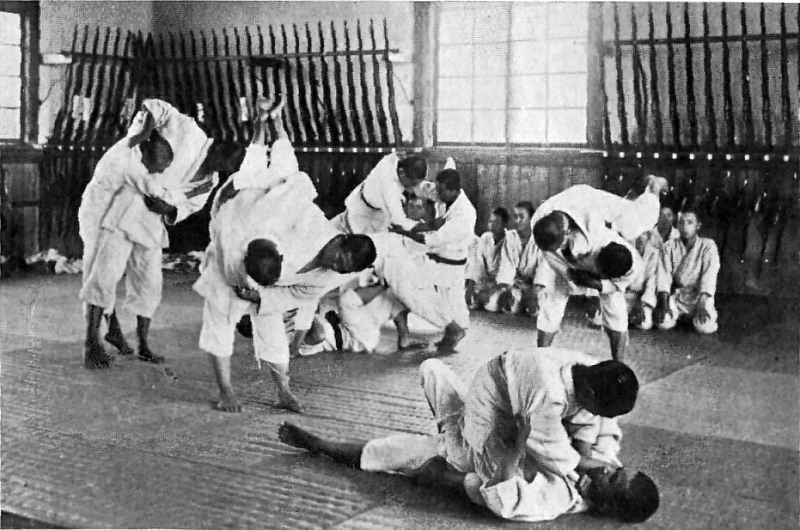
Rules
Due to surveys and observations at tournaments and at various dojos the following rules have been changed:
KICKS TO THE LEGS (thigh area only) by Juniors are now allowed, (the same as for Adults).
STRIKING TO THE FACIAL AREA (adults only) is now allowed, but with light contact only
ROUND TIME The round time for ALL adults (including Black Belts) will be 1 & ½ min (90 seconds).
Ground time for ALL adults, including Black Belts will be 30 seconds, for Juniors the rounds remain 1 minute with ground time remaining 15 seconds.
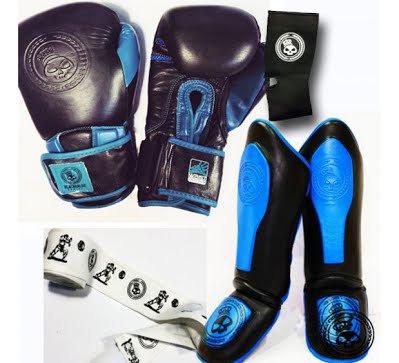
Equipments
- MMA.
- Bags& Holdalls.
- Groin Guards.
- Head Guards.
- Mouth Guards.
- Pads& Shields.
Associations
UAE Jiu-Jitsu Federation (UAEJJF)

HALL OF FAME
Joggling is a competitive sport that combines juggling with jogging. People who joggle are called jogglers.
The most common objects used in joggling are juggling balls, or sometimes juggling clubs, but any set of three or more objects can be used. However, in competitions or long term events, most jogglers prefer to use palm-size beanbags stuffed with birdseed because they are light enough for long distances but heavy enough to withstand winds. The juggling is usually done in a three-ball cascade pattern, which is efficient and uses the least energy. Jogglers say that the arm motions of juggling with three objects feels natural with the action and pace of jogging.
History
The earliest record of juggling is suggested in a panel from the 15th (1994 to 1781 B.C.) Beni Hasan tomb of an unknown Egyptian prince, showing female dancers and acrobats throwing balls. Juggling has been recorded in many early cultures including Egyptian, Nabataean, Chinese, Indian, Greek, Roman, Norse, Aztec (Mexico) and Polynesian civilizations.
Juggling in ancient China was an art performed by some warriors. One such warrior was Xiong Yiliao, whose juggling of nine balls in front of troops on a battlefield reportedly caused the opposing troops to flee without fighting, resulting in a complete victory.
In Europe, juggling was an acceptable diversion until the decline of the Roman Empire, after which the activity fell into disgrace. Throughout the Middle Ages, most histories were written by religious clerics who frowned upon the type of performers who juggled, called gleemen, accusing them of base morals or even practicing witchcraft. Jugglers in this era would only perform in marketplaces, streets, fairs, or drinking houses. They would perform short, humorous and bawdy acts and pass a hat or bag among the audience for tips. Some kings’ and noblemen’s bards, fools, or jesters would have been able to juggle or perform acrobatics, though their main skills would have been oral (poetry, music, comedy and storytelling).
In 1768, Philip Astley opened the first modern circus. A few years later, he employed jugglers to perform acts along with the horse and clown acts. Since then, jugglers have been associated with circuses.
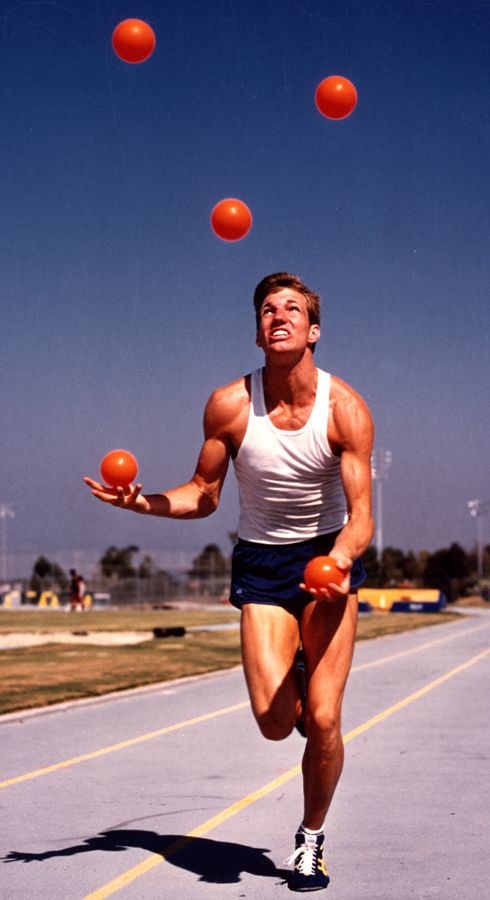
Rules
The rules that define joggling in competitions and races are:
- A juggling pattern must be maintained while running.
- If an object is dropped, the joggler must return to the point he dropped and continue.
Associations
International Jugglers’ Association.

The javelin throw is a track and field event where the javelin, a spear about 2.5 m (8 ft 2 in) in length, is thrown. The javelin thrower gains momentum by running within a predetermined area. Javelin throwing is an event of both the men’s decathlon and the women’s heptathlon.
History
The javelin was part of the pentathlon of the Ancient Olympic Games beginning in 708 BC in two disciplines, distance and target throw. The javelin was thrown with the aid of a thong, called ankyle wound around the middle of the shaft. Athletes would hold the javelin by the thong and when the javelin was released this thong unwound giving the javelin a spiraled flight.
Throwing javelin-like poles into targets was revived in Germany and Sweden in the early 1870s. In Sweden, these poles developed into the modern javelin, and throwing them for distance became a common event there and in Finland in the 1880s. The rules continued to evolve over the next decades; originally, javelins were thrown with no run-up, and holding them by the grip at the center of gravity was not always mandatory. Limited run-ups were introduced in the late 1890s, and soon developed into the modern unlimited run-up.
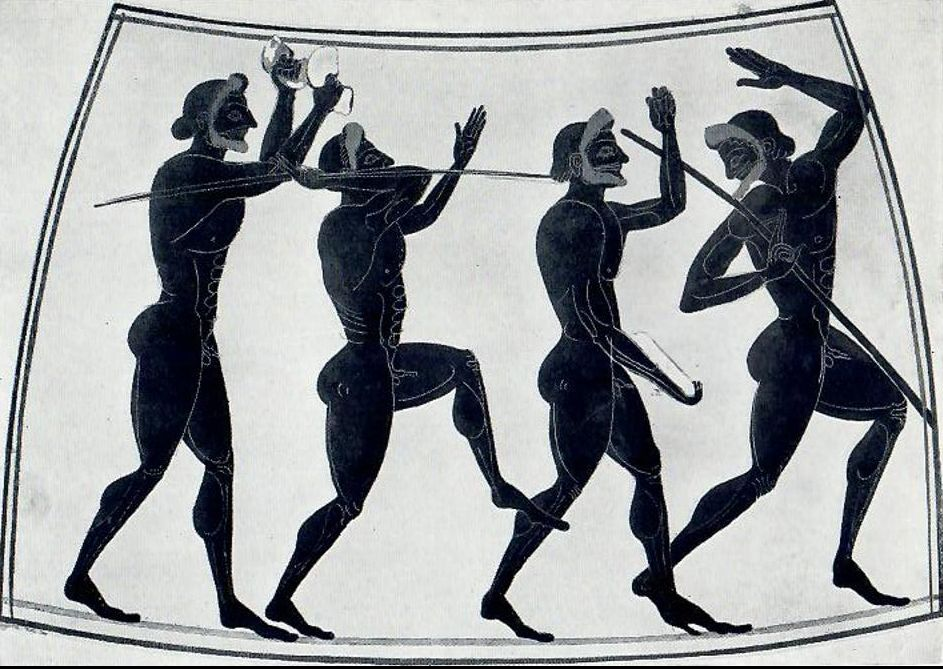
Rules
The size, shape, minimum weight, and center of gravity of the javelin are all defined by IAAF rules. In international competition, men throw a javelin between 2.6 and 2.7 m (8 ft 6 in and 8 ft 10 in) in length and 800 g (28 oz) in weight, and women throw a javelin between 2.2 and 2.3 m (7 ft 3 in and 7 ft 7 in) in length and 600 g (21 oz) in weight. The javelin has a grip, about 150 mm (5.9 in) wide, made of cord and located at the javelin’s center of gravity (0.9 to 1.06 m (2 ft 11 in to 3 ft 6 in) from the javelin tip for the men’s javelin and 0.8 to 0.92 m (2 ft 7 in to 3 ft 0 in) from the javelin tip for the women’s javelin).
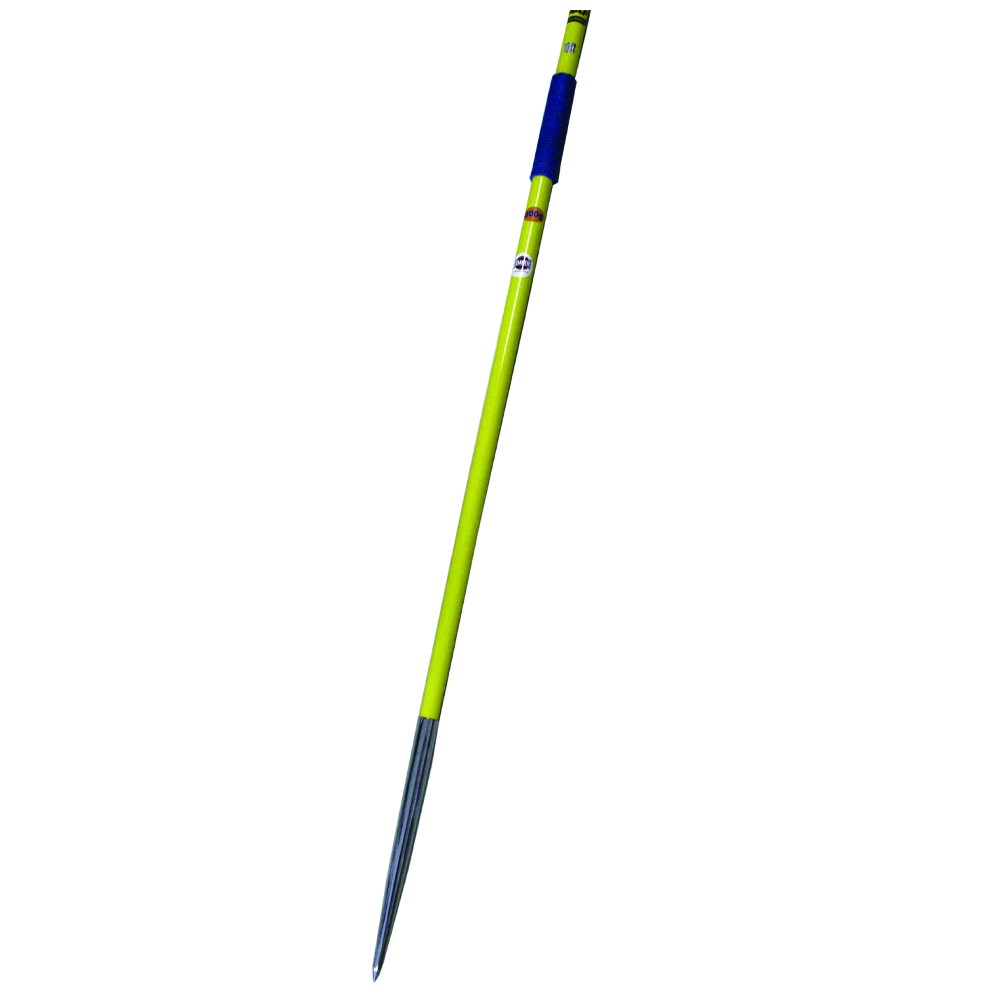
Equipments
- Carrying tubes & bags,
- carracks,
- the Javelin Stop Board, and
- the Gill Javelin Certification Kit.
Inline skating is a multi-disciplinary sport and can refer to a number of activities practiced using Inline skates. Inline skates typically have two to five polyurethane wheels, arranged in a single line by a metal or plastic frame on the underside of a boot. The in-line design allows for greater speed and maneuverability than traditional (or “quad”) roller skates. Following this basic design principle, inline skates can be modified to varying degrees to accommodate niche disciplines.
Inline skating is commonly referred to by the proprietary eponym “rollerblading”, or just “blading”, due to the popular brand of inline skates, Rollerblade.
History
The German branch of SKF developed and produced inline-skates in 1978 with wheels for hockey or for the street. The product was stopped after one year as the management did not want a consumer product in its portfolio.
Other inline skates were developed as a substitute for ice skates, Life magazine published a photo of American skater Eric Heiden, training for the 1980 Olympics, using such skates on a Wisconsin road.
In 1980, a group of ice hockey players in Minneapolis, Minnesota were looking for a way to practice during the summer. Scott and Brennan Olson formed the company Rollerblade, Inc., to sell skates with four polyurethane wheels arranged in a straight line on the bottom of a padded boot. They sold the company in 1984 to Bob Naegele jr., who advertised to the general public and sold millions.

Rules
- Athletes in Figure Skating must keep their performances varied. The Zayak Rule states that no participant can attempt triple or quadruple jumps on more than two occasions.
- Judges may also mark down participants or disqualify them completely if they fail to adhere to rules and regulations for music and costumes. Certain types of music are not permitted, and costumes cannot contain “excessive decoration” or be considered as too revealing.
- Athletes can also be disqualified for time violations.
Equipments
For most skating a high boot is used, which provides more ankle support and is easier to skate in, particularly for beginners. Speed skaters often use a carbon fiber boot which provides greater support with a lower cut allowing more ankle flexion. For recreational skating a soft boot is used for greater comfort, but many other disciplines prefer a harder boot, either to protect the foot against impact or for better control of the skate. The boot may also contain shock absorbent padding for comfort. Downhill skaters often use boots that are heat-molded to the shape of the foot, with a foam liner.
Most aggressive skates use a hard boot or a hard/soft boot for increased support.
Frame
Typical recreational skates use frames built out of high-grade polyurethane (plastic). Low-end department or toy store skate frames may be composed of other types of plastic. Speed skate frames are usually built out of carbon fiber or extruded aluminum (more expensive but more solid), magnesium, or even pressed aluminium, which is then folded into a frame (cheaper but less sturdy).
Carbon fiber frames are expensive but generally more flexible, making for a smoother ride at the expense of worse power transfer between the leg and the wheels. In general, carbon fiber frames weigh about 160–180 grams. Recently, high-end carbon fiber frames with a monocoque construction have been introduced. They offer the same level of stiffness as aluminum frames while weighing only around 130g. Aluminum can weigh from 170 to 240 grams. Frame length ranges from 2 wheel framed freestyle wheels (used in aggressive skating) to around 230 mm for short-framed four wheel skates (used in most inline designs), up to about 325 mm for a five-wheel racing frame.
Axles, bearings and spacers
Ball bearings allow the wheels to rotate freely and smoothly. Bearings are usually rated on the ABEC scale, a measure of the manufactured precision tolerance, ranging from 1 (worst) to 9 (best) in odd numbers. The ABEC standards were originally intended for high-speed machinery, not skating applications, and do not account for the quality of steel used, which is very important for how long bearings last. While higher rated bearings are generally better in overall quality, whether they automatically translate to more speed is questionable. Since at least 2007, Rollerblade brand amongst others have begun using their own rating system. For instance, Rollerblade brand is currently using a SG1 to SG9 rating system, whereas TwinCam brand is using its own “ILQ” (InLine Qualified) rating system and Bones brand is using its own “Skate Rated” rating system.
Associations
- International Inline Skating Association.

Indoor cricket is a variant of and shares many basic concepts with cricket. The game is most often played between two teams each consisting of six or eight players.
Several versions of the game have been in existence since the late 1960s, whilst the game in its present form began to take shape in the late 1970s and early 1980s.
Conventional cricket has been played indoors at Docklands Stadium in Melbourne, Australia. The codified sport of indoor cricket is not to be confused with conventional cricket played indoors, or with other modified versions of cricket played indoors
History
Indoor cricket is a variant of and shares many basic concepts with cricket. The game is most often played between two teams each consisting of six or eight players.
Several versions of the game have been in existence since the late 1960s, whilst the game in its present form began to take shape in the late 1970s and early 1980s.
Conventional cricket has been played indoors at Docklands Stadium in Melbourne, Australia. The codified sport of indoor cricket is not to be confused with conventional cricket played indoors, or with other modified versions of cricket played indoors
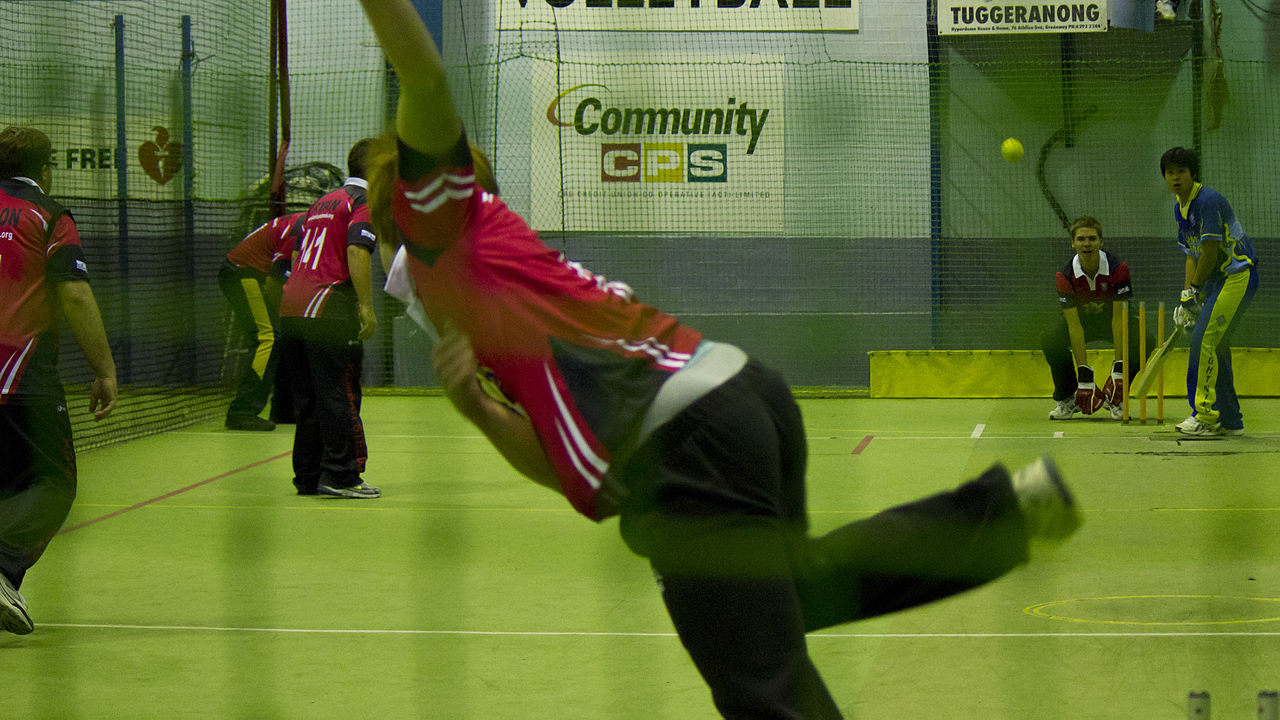
Rules
As a minimum, every player, including the fielders have to wear an abdominal guard (box), with the person bowling the ball as an exception. The batsman is required to use batting gloves, primarily for preventing the bat from slipping out of the hands. Indoor batting gloves are readily available at cricket stores, however some indoor cricket facilities also provide basic non-slip gloves that can be shared during the game. Some players prefer to use hard ball batting gloves to prevent their hands from serious injury, as the indoor cricket ball can cause serious damage.
One optional security gadget is safety goggles to prevent any serious injury to the eyes. As the game speed is usually very fast and the play rigorous, it is a demanding cardiovascular activity. It is recommended to have a doctor checkup before taking up indoor cricket, especially in advance age and/or with any medical conditions. It’s fielders right of way when a shot is played, so the batsman/fielder has to be watchful to avoid collisions. Indoor cricket causes more sporting injuries than casual outdoor cricket, due to the proximity of the ball and fielders. Therefore, a sports/team insurance is important. Some indoor sports facilities provide these insurances as part of the indoor tournaments.
Equipments
The stumps used in indoor cricket are not, for obvious reasons, stuck in the ground. Instead, they are collapsible spring-loaded stumps that immediately spring back to the standing position when knocked over. The ball used in indoor cricket is a modified cricket ball, with a softer center. The ball also differs in that it is yellow to make it more obvious to see indoors against varied backgrounds. Both traditional outdoor cricket bats or more specialized lighter-weight indoor cricket bats may be used. The gloves are typically lightweight cotton with no protective padding on the outside. The palm-side of the gloves usually have embedded rubber dots to aid grip.

Ice skating is the self-propulsion of a person across a sheet of ice, using metal-bladed ice skates to glide on the ice surface. This activity can be carried out for various reasons, including recreation, sport, exercise, and travel. Ice skating may be performed on specially prepared ice surfaces (arenas, tracks, parks), both indoors and outdoors, as well as on naturally occurring bodies of frozen water, such as ponds, lakes and rivers.
History
Research suggests that the earliest ice skating happened in southern Finland more than 4,000 years ago. This was done to save energy during winter journeys. Originally, skates were merely sharpened, flattened bone strapped to the bottom of the foot. Skaters did not actually skate on the ice but rather glided on top of it.
True skating emerged when a steel blade with sharpened edges was used. Skates now cut into the ice instead of gliding on top of it. Adding edges to ice skates was invented by the Dutch in the 13th or 14th century. These ice skates were made of steel, with sharpened edges on the bottom to aid movement.
The fundamental construction of modern ice skates has stayed largely the same since then, although differing greatly in the details, particularly in the method of binding and the shape and construction of the steel blades. In the Netherlands, ice skating was considered proper for all classes of people, as shown in many pictures by the Old Masters.
Ice skating was also practiced in China during the Song dynasty and became popular among the ruling family of the Qing dynasty.
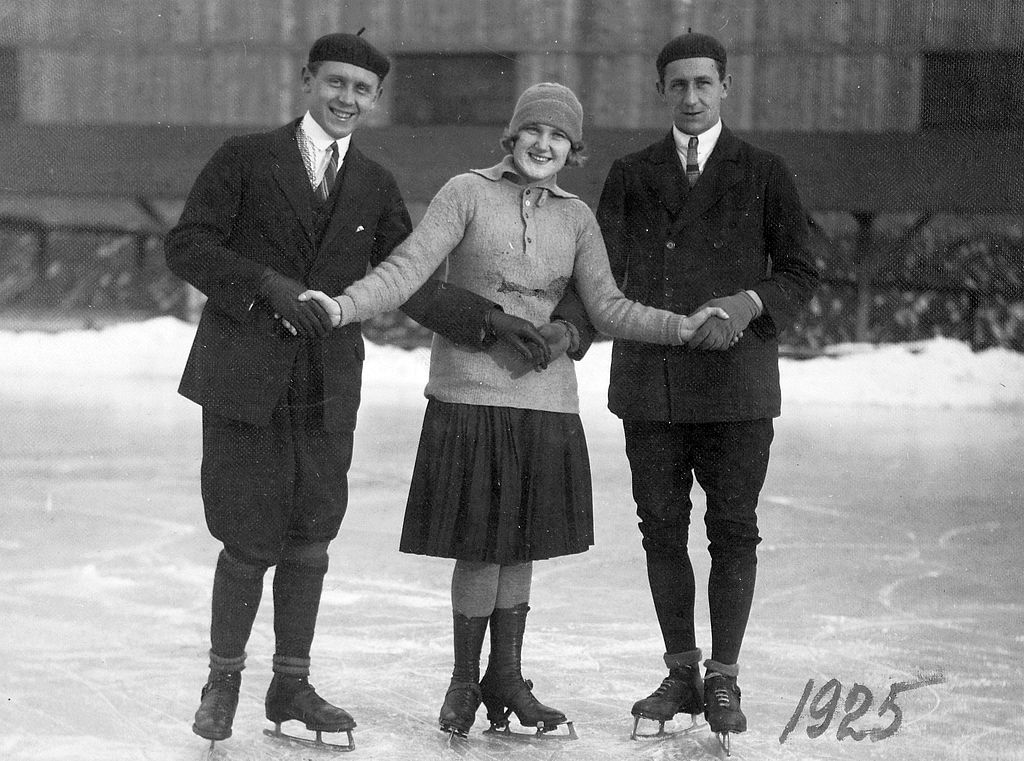
Rules
- Athletes in Figure Skating must keep their performances varied. The Zayak Rule states that no participant can attempt triple or quadruple jumps on more than two occasions.
- Judges may also mark down participants or disqualify them completely if they fail to adhere to rules and regulations for music and costumes. Certain types of music are not permitted, and costumes cannot contain “excessive decoration” or be considered as too revealing.
- Athletes can also be disqualified for time violations.
Equipments
Ice Skaters are specially designed skating shoes with thick steel blades at the base and jagged grooves at the front known as “toe picks” – which assist athletes with their footwork on the ice, as well as landing and spinning. The specific style of toe picks can vary.
The main blades are ordinarily around 4 millimeters thick, although they can vary depending on the shoe size of the athlete. They also curve round to one side in order to assist with turns on the ice.
Athletes will always attempt to skate on the very edges of the Ice skate blades.
For ice dancing, athletes usually have slightly shorter blades on the base of their shoes, with slightly different design to accommodate step-work rather than jumping.
Associations
- Ice Skating Association of India.
- Indian Olympic Association.
Ice hockey is a contact team sport played on ice, usually in a rink, in which two teams of skaters use their sticks to shoot a vulcanized rubber puck into their opponent’s net to score points. The sport is known to be fast-paced and physical, with teams usually consisting of six players each: one goaltender, and five players who skate up and down the ice trying to take the puck and score a goal against the opposing team.
Ice hockey is most popular in Canada, central and eastern Europe, the Nordic countries, Russia and the United States. Ice hockey is the official national winter sport of Canada. In addition, ice hockey is the most popular winter sport in Belarus, Croatia, the Czech Republic, Finland, Latvia, Russia, Slovakia, Sweden, and Switzerland. North America‘s National Hockey League (NHL) is the highest level for men’s ice hockey and the strongest professional ice hockey league in the world. The Kontinental Hockey League (KHL) is the highest league in Russia and much of Eastern Europe. The International Ice Hockey Federation (IIHF) is the formal governing body for international ice hockey, with the IIHF managing international tournaments and maintaining the IIHF World Ranking. Worldwide, there are ice hockey federations in 76 countries.
History
In England, field hockey has historically been called simply “hockey” and what was referenced by first appearances in print. The first known mention spelled as “hockey” occurred in the 1773 book Juvenile Sports and Pastimes, to Which Are Prefixed, Memoirs of the Author: Including a New Mode of Infant Education, by Richard Johnson (Pseud. Master Michel Angelo), whose chapter XI was titled “New Improvements on the Game of Hockey”. The 1573 Statute of Galway banned a sport called “‘hokie’—the hurling of a little ball with sticks or staves”. A form of this word was thus being used in the 16th century, though much removed from its current usage.
The belief that hockey was mentioned in a 1363 proclamation by King Edward III of England is based on modern translations of the proclamation, which was originally in Latin and explicitly forbade the games “Pilam Manualem, Pedivam, & Bacularem: & ad Canibucam & Gallorum Pugnam”. The English historian and biographer John Strype did not use the word “hockey” when he translated the proclamation in 1720, instead translating “Canibucam” as “Cambuck”; this may have referred to either an early form of hockey or a game more similar to golf or croquet.
According to the Austin Hockey Association, the word “puck” derives from the Scottish Gaelic puc or the Irish poc (to poke, punch or deliver a blow). “…The blow given by a hurler to the ball with his camán or hurley is always called a puck.”
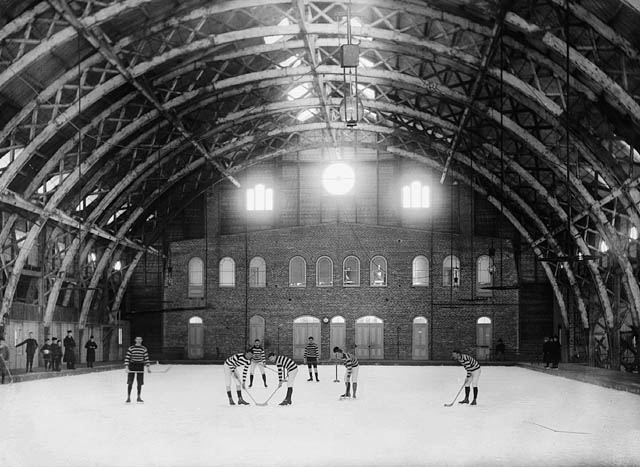
Rules
- Ice hockey rules define the parameters of the sport of ice hockey. The sport is governed by several organizations including the International Ice Hockey Federation (IIHF), the National Hockey League (NHL), Hockey Canada, USA Hockey and others. The rules define the size of the hockey rink where a game is played, the playing and safety equipment, the game definition, including time of play and whether tie-breaking methods are used and the actual playing rules themselves. The IIHF rule book is used in both amateur and professional leagues worldwide. The NHL’s rule book is the basis for the rule books of most North American professional leagues. The IIHF, amateur and NHL rules evolved separately from amateur and professional Canadian ice hockey rules of the early 1900s.Hockey Canada rules define the majority of the amateur games played in Canada. USA Hockey defines the same for the United States (US). US high school leagues use the National Federation of State High School Associations rule book, and varsity college hockey is governed by the National Collegiate Athletic Association‘s rules.Hockey Canada and USA Hockey’s rule books differ primarily in technical matters such as the severity of penalties handed out for various fouls. IIHF rules differ a bit more due to the differences in the dimensions of North American hockey rinks from those in the rest of the world. In recent times, both USA Hockey and Hockey Canada have been trying to make their rules more similar to the international rules. The merits of this move toward a more standardized rule book, however, are debated in amateur hockey circles.
In recent years, the low scores of NHL games have prompted the league to debate a wide variety of rule change proposals including enlarging the size of the goal, widening the blue and red lines to create a larger offensive zone, restricting where goaltenders can handle the puck, breaking ties with a penalty shot shootout, and eliminating the two-line pass rule.
The National Hockey League rules are the rules governing the play of the National Hockey League (NHL), a professional ice hockey organization. Infractions of the rules, such as offside and icing, lead to a stoppage of play and subsequent to the offending teams. The league also determines the specifications for playing equipment used in its games.
The rules are one of the two standard sets of ice hockey rules in the world. The rules themselves have evolved directly from the first organized indoor ice hockey game in Montreal in 1875, updated by subsequent leagues up to 1917, when the league adopted the existing National Hockey Association set of rules. While designed to govern play of games organized by the league, the NHL’s rules are the basis for rules governing most ice hockey leagues in North America.
The rules differ slightly from the rules used in international games organized by the International Ice Hockey Federation (IIHF) such as the Olympics (the NHL rules, however, are used in the World Cup of Hockey). The IIHF rules are themselves also based on Canadian rules of ice hockey dating back to the early 20th Century. The NHL and IIHF differ in the treatment of fighting and in playing rules, such as icing, the areas of play for goaltenders, helmet rules, officiating rules, timeouts and play reviews.
Associations
- International Ice Hockey Federation (IIHF)
- National Hockey League (NHL)
Ice cross downhill (or downhill ice cross), is a winter extreme sporting event which involves direct competitive downhill skating on a walled track featuring sharp turns and high vertical drops. It is similar to ski cross and boardercross, except with ice skates on an ice track, instead of skis or snowboards on a snow track. Ice cross is sanctioned by ATSX, the All Terrain Skate Cross Federation. The ice cross international sports federation is the International Ice Cross Sports Federation (IICSF), which sanctions the World Ice Cross League.
History
Ice cross downhill (or downhill ice cross), is a winter extreme sporting event which involves direct competitive downhill skating on a walled track featuring sharp turns and high vertical drops. It is similar to ski cross and boarder cross, except with ice skates on an ice track, instead of skis or snowboards on a snow track. Ice cross is sanctioned by ATSX, the All-Terrain Skate Cross Federation. The ice cross international sports federation is the International Ice Cross Sports Federation (IICSF), which sanctions the World Ice Cross League.
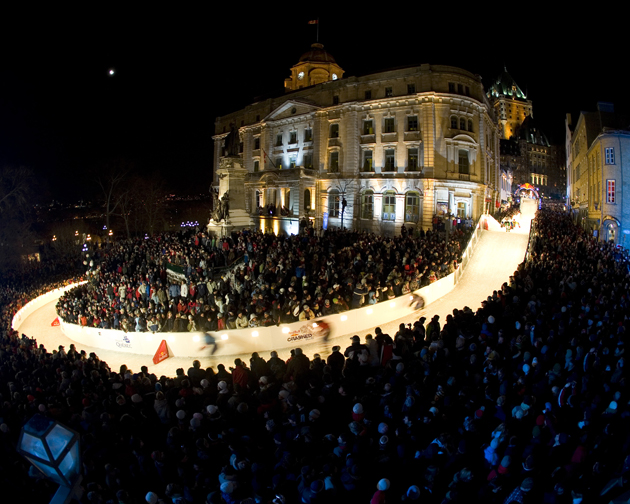
Rules
- Athletes in Figure Skating must keep their performances varied. The Zayak Rule states that no participant can attempt triple or quadruple jumps on more than two occasions.
- Judges may also mark down participants or disqualify them completely if they fail to adhere to rules and regulations for music and costumes. Certain types of music are not permitted, and costumes cannot contain “excessive decoration” or be considered as too revealing.
- Athletes can also be disqualified for time violations.
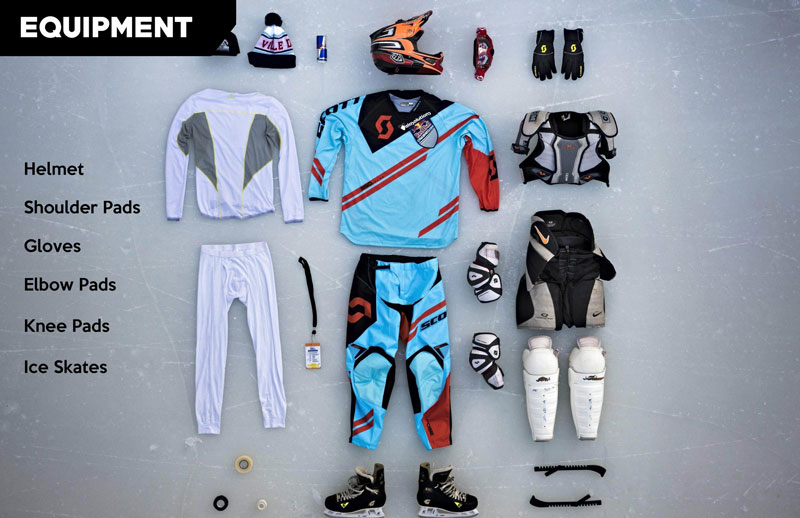
Equipments
Helmet On the track, every competitor shall wear a helmet at all times. MotoX or MTB Downhill CPSC Bicycle Safety Standard Certified, ASTM DH Certified, or CE EN1078 certified helmets are allowed. If the competitor wears an MTB or MotoX helmet, goggles are recommended. The chinstrap must be properly fastened. Also allowed are hockey helmets approved by CE Certification, Hockey Equipment Certification Council (HECC), or Canadian Standards Association (CSA), with cage (maximum mesh size 9 × 5 cm). – Shoulder protection – Elbow protection/pads – Gloves The gloves must be covered by protective pads on top of hand and wrist. The palm of the glove must not be removed to permit the use of bare hands. – Knee and shinbone protection – Skates & blades All types of skating boots are allowed. No blades with sharp points or any other feature that might harm other competitors are permitted. There should be a knob made of plastic or similar approved material on the upper back part of the blades.
Associations
- US Ice Cross Association.
- World Ice Cross Association
The oldest undisputed evidence for hunting dates to the Early Pleistocene, consistent with the emergence and early dispersal of Homo erectus, about 1.7 million years ago (Acheulean).[7] While it is undisputed that Homo erectus were hunters, the importance of this for the emergence Homo erectus from its australopithecine ancestors, including the production of stone tools and eventually the control of fire, are emphasized in the so-called “hunting hypothesis” and de-emphasized in scenarios that stress omnivore and social interaction
History
There is no direct evidence for hunting predating Homo erectus, in either Homo habilis or in Australopithecus. The early hominid ancestors of humans were probably frugivores or omnivores, with a partially carnivore diet from scavenging rather than hunting. Evidence for australopithecine meat consumption was presented in the 1990s. It has nevertheless often been assumed that at least occasional hunting behavior may have been present well before the emergence of Homo. This can be argued on the basis of comparison with chimpanzees, the closest extant relatives of humans, who also engage in hunting, indicating that the behavioral trait may have been present in the Chimpanzee–human last common ancestoras early as 5 million years ago. The common chimpanzee (Pan troglodytes regularly engages in troop predation behaviour where bands of beta males are led by an alpha male. Bonobos (Pan paniscus) have also been observed to occasionally engage in group hunting, although more rarely than Pan troglodytes, mainly subsisting on a frugivorous diet. Indirect evidence for Oldowan era hunting, by early Homo or late Australopithecus, has been presented in a 2009 study based on an Oldowan site in southwestern Kenya.

Rules
Hunting weapons are typically regulated by game category, the area within the state, and time period. Regulations for big game hunting often specify a minimum caliber or muzzle energy for firearms. The use of rifles is often banned for safety reasons in areas with high population density, limited topographic relief, or for hunting on bodies of water where the danger of ricochet exists. Specific seasons for bow hunting or muzzle-loading black-powder guns are often established to limit competition with hunters using more effective firearms. The state of Oklahoma, for example, has a three-and-a-half-month archery season, a 25-day muzzleloader season, and a 16-day modern gun season.
Equipments
- Atlatl
- Bolas
- Blowgun
- Bow (weapon)
- Boomerang
- Cutlass
- Hunting sword
- Crossbow
- Harpoon(for hunting marine mammals and Florida alligators)
- Muzzleloader
- Spear
- Slingshot
- Sling (weapon)
- Woomera (spear-thrower)
Associations
- Boone and Crockett Club
- Pheasants Forever
- Mule Deer Foundation
- Rocky Mountain Elk Foundation
- Quality Deer Management Association
- National Wild Turkey Federation
Horse racing is an equestrian performance sport, typically involving two or more horses ridden by jockeys (or sometimes driven without riders) over a set distance for competition. It is one of the most ancient of all sports, as its basic premise – to identify which of two or more horses is the fastest over a set course or distance – has been unchanged since at least classical antiquity.
Horse races vary widely in format and many countries have developed their own particular traditions around the sport. Variations include restricting races to particular breeds, running over obstacles, running over different distances, running on different track surfaces and running in different gaits.
While horses are sometimes raced purely for sport, a major part of horse racing’s interest and economic importance is in the gambling associated with it, an activity that in 2008 generated a worldwide market worth around US$115 billion.
History
Horse racing has a long and distinguished history and has been practised in civilisations across the world since ancient times. Archaeological records indicate that horse racing occurred in Ancient Greece, Babylon, Syria, and Egypt. It also plays an important part of myth and legend, such as the contest between the steeds of the god Odin and the giant Hrungnir in Norse mythology.
Chariot racing was one of the most popular ancient Greek, Roman and Byzantine sports. Both chariot and mounted horse racing were events in the ancient Greek Olympics by 648 BC and were important in the other Panhellenic Games. It continued although chariot racing was often dangerous to both driver and horse, which frequently suffered serious injury and even death. In the Roman Empire, chariot and mounted horse racing were major industries. From the mid-fifteenth century until 1882, spring carnival in Rome closed with a horse race. Fifteen to 20 riderless horses, originally imported from the Barbary Coast of North Africa, were set loose to run the length of the Via del Corso, a long, straight city street; their time was about 2 1⁄2 minutes.
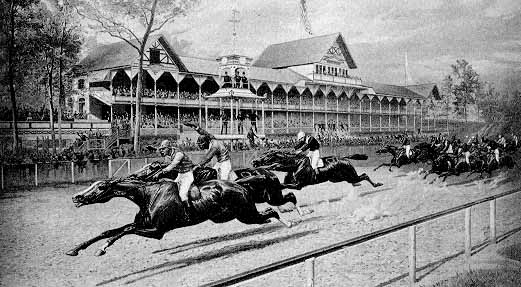
Rules
- Differing national horse racing organizations may have differing rules concerning how horse races should be run. However, by and large, the vast majority of rulebooks are very similar with many being based on the British Horseracing Authority’s original rulebook .
- All flat races must be started from starting stalls or a starting gate.
- All steeple chases, hurdle races, and jump races must be started with a starting gate or a flag (requires special permission).
- In extraordinary or emergency circumstances, any horse race, regardless of type, may be started with a flag as long as the starter decides this or the steward’s permission has been sought.
- A false start will be declared if the starter considers that a horse has broken away before the race has started.
- Riders must then attempt to ride their horses to the best of their ability in an attempt to win the race. Disqualifications and further sanctions may occur if, in the steward’s opinion, the rider has not done this.
- Riders must ride in a safe manner and follow the prescribed course, jumping every hurdle (if present).
- To complete the race, a rider must cross the finish line on his horse.
- Depending upon the particular race, there will usually be an amount of prize money to be split amongst the first, second and third finishers.
Equipments
- Perhaps the most important piece of ‘equipment’ in horse racing is the horse. Those suitable for horse racing include Thoroughbreds, Arabian horses, and Quarter horses. Differing national organizations may have their own rules as to what horses can compete.
- All riders wear a helmet and all carry a whip too. This can be a controversial piece of equipment as it is used to whip the horse to spur it on to go faster. In some countries, jockeys are allowed to use the whip whenever and as much as they like, although some countries like the UK limit the number of times it can be used to prevent any distress to the horse.
Associations
- Associationof Racing Commissioners International.
- Oregon Racing
- The American Quarter Horse Association.
- United States Trotting Association.
- California Thoroughbred Breeders Association.
- Grayson-Jockey Club Research Foundation, Inc.
Hockey is a sport in which two teams play against each other by trying to manoeuvre a ball or a puck into the opponent’s goal using a hockey stick. There are many types of hockey such as bandy, field hockey, and ice hockey.
In most of the world, hockey refers to field hockey, while in Canada, the United States, Finland, Sweden, Latvia, the Czech Republic and Slovakia, hockey usually refers to ice hockey.
History
Games played with curved sticks and a ball can be found in the histories of many cultures. In Egypt, 4000-year-old carvings feature teams with sticks and a projectile, hurlingdates to before 1272 BC in Ireland, and there is a depiction from approximately 600 BC in Ancient Greece, where the game may have been called kerētízein or (κερητίζειν) because it was played with a horn or horn-like stick (kéras, κέρας). In Inner Mongolia, the Daur people have been playing beikou, a game similar to modern field hockey, for about 1,000 years.
Most evidence of hockey-like games during the Middle Ages is found in legislation concerning sports and games. The Galway Statute enacted in Ireland in 1527 banned certain types of ball games, including games using “hooked” (written “hockie”, similar to “hooky”) sticks.
…at no tyme to use ne occupye the horlinge of the litill balle with hockie stickes or staves, nor use no hande ball to play withoute walles, but only greate foote balle.
By the 19th century, the various forms and divisions of historic games began to differentiate and coalesce into the individual sports defined today. Organizations dedicated to the codification of rules and regulations began to form, and national and international bodies sprang up to manage domestic and international competition.
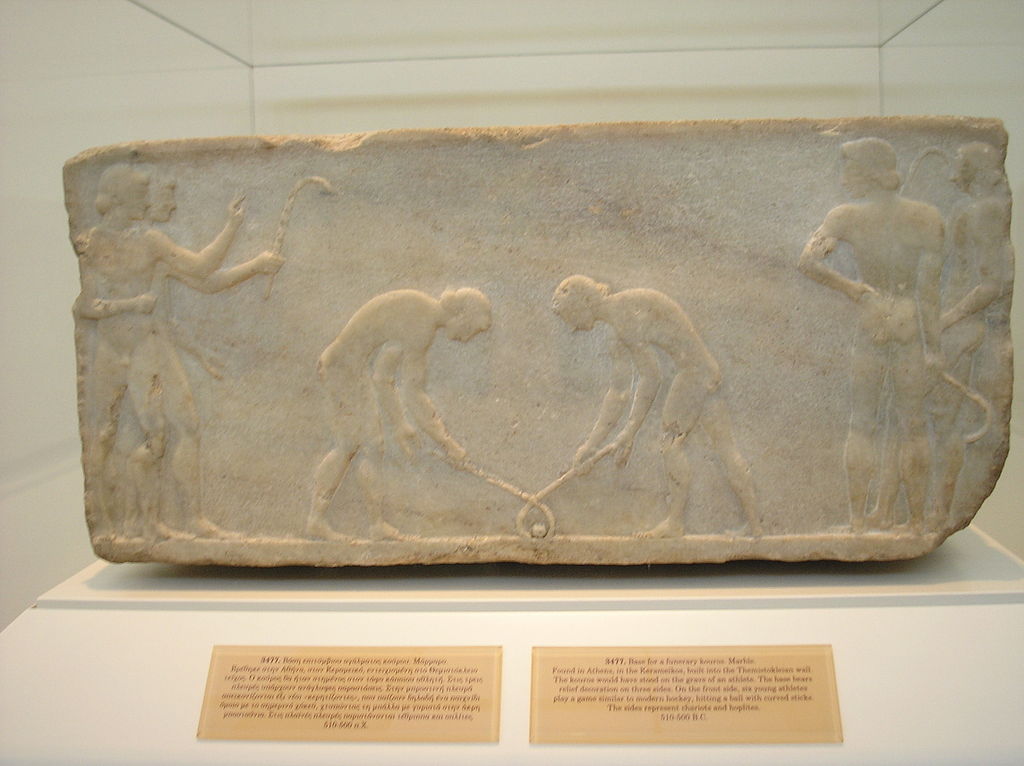
Rules
- Duration of games for league play
All teams will play an 8 game schedule. Length of the games will be two 23-minute halves on a running clock. Halftime will be two minutes. If a team cannot begin play within ten minutes of scheduled start time, game will be considered a forfeit and team will be charged for referee fees. Score will be reflected 3-0 in favor of non-forfeiting team.
- Start of the Game
Home team takes center pass. Away team chooses direction. The ball must be passed back at the start of a game. No one may cross the midfield line until the ball has moved.
- Number of players
All teams will play with 5 field players plus a goalkeeper (6 v 6). Teams electing to play without a goalkeeper may play with a 6th field player. However, all rules will continue to apply to that 6th player as a field player. Teams may play with a minimal of 3 field players plus a goalkeeper. Each team will provide a roster to game management at the time of registration. Any disputes concerning roster violations must be addressed with game management.
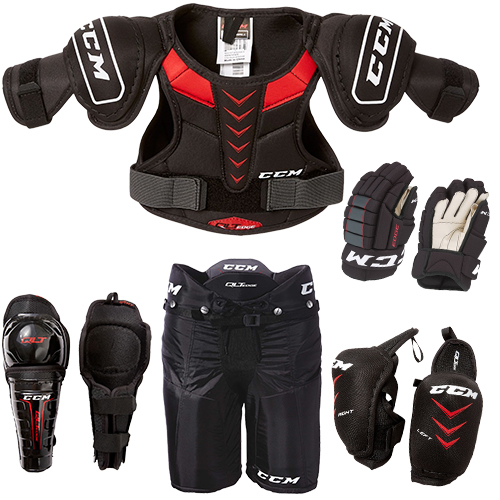
Associations
Hillclimbing (also known as hill climbing, speed hillclimbing or speed hill climbing) is a branch of motorsport in which drivers compete against the clock to complete an uphill course.
History
It is one of the oldest forms of motorsport, since the first known hillclimb at La Turbie near Nice, France took place as long ago as 31 January 1897. The hillclimb held at Shelsley Walsh, in Worcestershire, England is the world’s oldest continuously staged motorsport event still staged on its original course, having been first run in 1905.
An alternative style of hillclimbing is done with offroad motorcycles going straight up extremely steep hills, with the victor being the motorcycle which can climb the highest, or make it to the top the fastest. The motorsport has a long tradition in the U.S. and has been popular in France and Austria since the 1980s. The Austrian event in Rachau focused on crowd entertainment, and inspired many similar events.
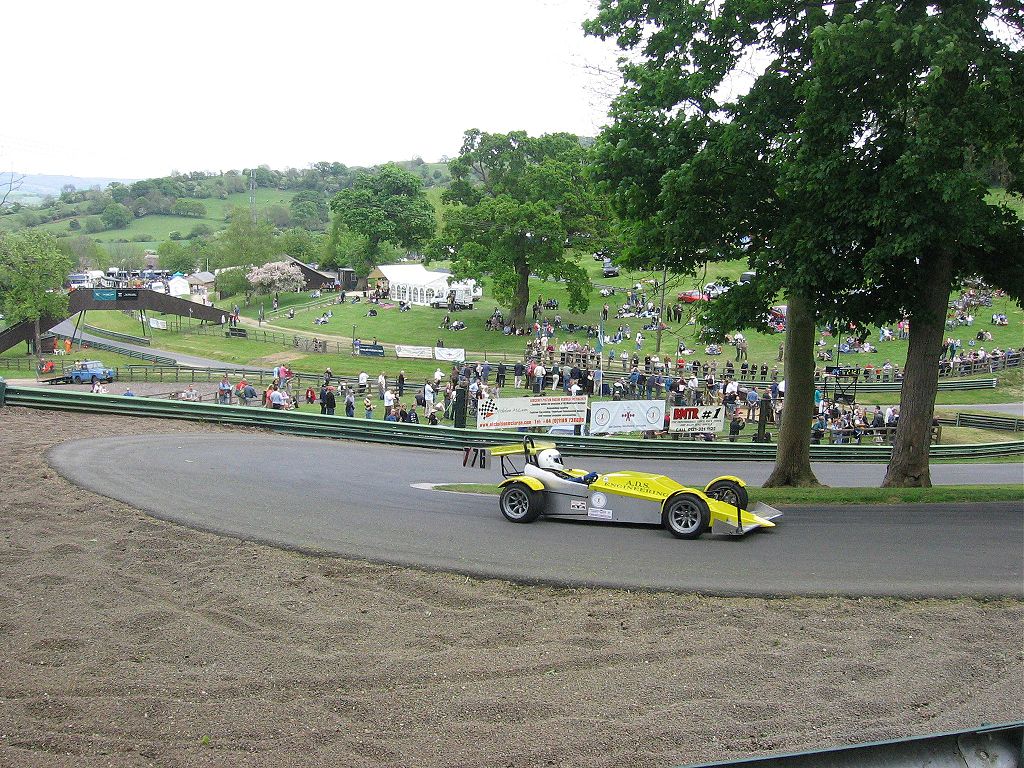
Rules
- All riders will use the last two digits of their AMA D14 membership card and the first letter of their last name for their riding number. Clubs or promoters may issue a temporary rider number to be used until the member receives his or her card. Numbers must be at least 5″ high with standard block letters and be on the front of the motorcycle as a minimum.
- Riders who finish in the top five places in every class will be awarded their finishing place as their riding number for the following year. This awarded number may be used only in the class in which it was earned and only used for the next year races.
- Tether length no longer than 36″ inches when taunt.
- Minimum age of participants is 4 years old.
- No riding, practice or any type of closed competition will be allowed on a hill 5 days prior to a District 14 event on that hill.
- a. Youth riders are limited to 3 classes per event (age 15 and under).
- Adult riders are limited to 4 classes per event (age16 and older).
- Riders may use the same motorcycle in more than one class. Two riders may use the same motorcycle in the same day’s program, but they must compete in different classes.
- The motorcycle that is used on the 1st attempt must be used on the 2nd attempt. No changing out motorcycles between attempts.
- The rider must be physically capable and mature enough to control his/her machine at all times and to ride it safely. This includes stopping, starting, standing still, mounting, dismounting, and putting one or both feet on the ground.
The referee has the authority to disqualify a rider who can’t safely control his/her machine. Training wheels are not allowed.
Associations
- Colorado Hill Climb Association.

The high jump is a track and field event in which competitors must jump unaided over a horizontal bar placed at measured heights without dislodging it. In its modern most practised format, a bar is placed between two standards with a crash mat for landing. In the modern era, athletes run towards the bar and use the Fosbury Flop method of jumping, leaping head first with their back to the bar. Since ancient times, competitors have introduced increasingly effective techniques to arrive at the current form.
The discipline is, alongside the pole vault, one of two vertical clearance events to feature on the Olympic athletics programme. It is contested at the World Championships in Athletics and IAAF World Indoor Championships, and is a common occurrence at track and field meetings. The high jump was among the first events deemed acceptable for women, having been held at the 1928 Olympic Games.
Javier Sotomayor (Cuba) is the current men’s record holder with a jump of 2.45 m (8 ft 1⁄4 in) set in 1993 – the longest standing record in the history of the men’s high jump. Stefka Kostadinova (Bulgaria) has held the women’s world record at 2.09 m (6 ft 10 1⁄4 in) since 1987, also the longest-held record in the event.
History
The first recorded high jump event took place in Scotland in the 19th century. Early jumpers used either an elaborate straight-on approach or a scissors technique. In latter years, soon then after, the bar was approached diagonally, and the jumper threw first the inside leg and then the other over the bar in a scissoring motion. Around the turn of the 20th century, techniques began to change, beginning with the Irish-American Michael Sweeney’s Eastern cut-off. By taking off like the scissors and extending his spine and flattening out over the bar, Sweeney raised the world record to 1.97 m (6 ft. 5 1⁄2 in) in 1895.
Another American, George Horine, developed an even more efficient technique, the Western roll. In this style, the bar again is approached on a diagonal, but the inner leg is used for the take-off, while the outer leg is thrust up to lead the body sideways over the bar. Horine increased the world standard to 2.01 m (6 ft. 7 in) in 1912. His technique was predominant through the Berlin Olympics of 1936, in which the event was won by Cornelius Johnson at 2.03 m (6 ft. 7 3⁄4 in).
American and Soviet jumpers were the most successful for the next four decades, and they pioneered the evolution of the straddle technique. Straddle jumpers took off as in the Western roll, but rotated their (belly-down) torso around the bar, obtaining the most efficient and highest clearance (of the bar) up to that time. Straddle-jumper, Charles Dumas, was the first to clear 7 feet (2.13 m), in 1956, and American John Thomas pushed the world mark to 2.23 m (7 ft. 3 3⁄4 in) in 1960. Valeriy Brumel took over the event for the next four years. The elegant Soviet jumper radically sped up his approach run, took the record up to 2.28 m (7 ft 5 3⁄4 in), and won the Olympic gold medal in 1964, before a motorcycle accident ended his career.
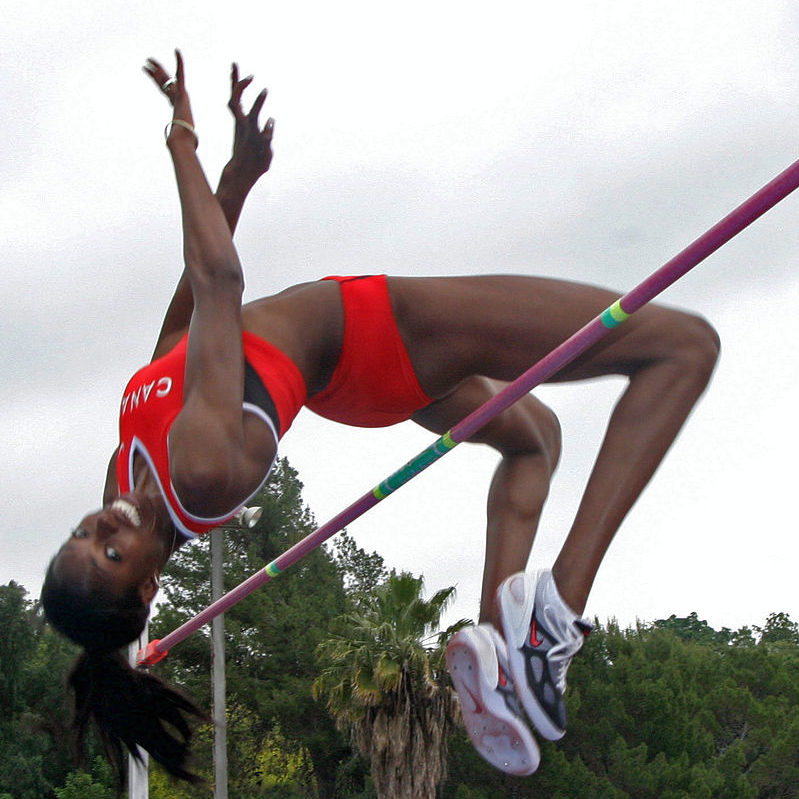
Rules
The rules for the high jump are set internationally by the International Association of Athletics Federations (IAAF). Jumpers must take off on one foot. A jump is considered a failure if the bar is dislodged by the action of the jumper whilst jumping or the jumper touches the ground or breaks the plane of the near edge of the bar before clearance. The technique one uses for the jump must be almost flawless in order to have a chance of clearing a high bar.
Competitors may begin jumping at any height announced by the chief judge, or may pass, at their own discretion. Most competitions state that three consecutive missed jumps, at any height or combination of heights, will eliminate the jumper from competition.
The victory goes to the jumper who clears the greatest height during the final. Tie-breakers are used for any place in which scoring occurs. If two or more jumpers tie for one of these places, the tie-breakers are: 1) the fewest misses at the height at which the tie occurred; and 2) the fewest misses throughout the competition.
If the event remains tied for first place (or a limited advancement position to a subsequent meet), the jumpers have a jump-off, beginning at the next greater height. Each jumper has one attempt. The bar is then alternately lowered and raised until only one jumper succeeds at a given height.
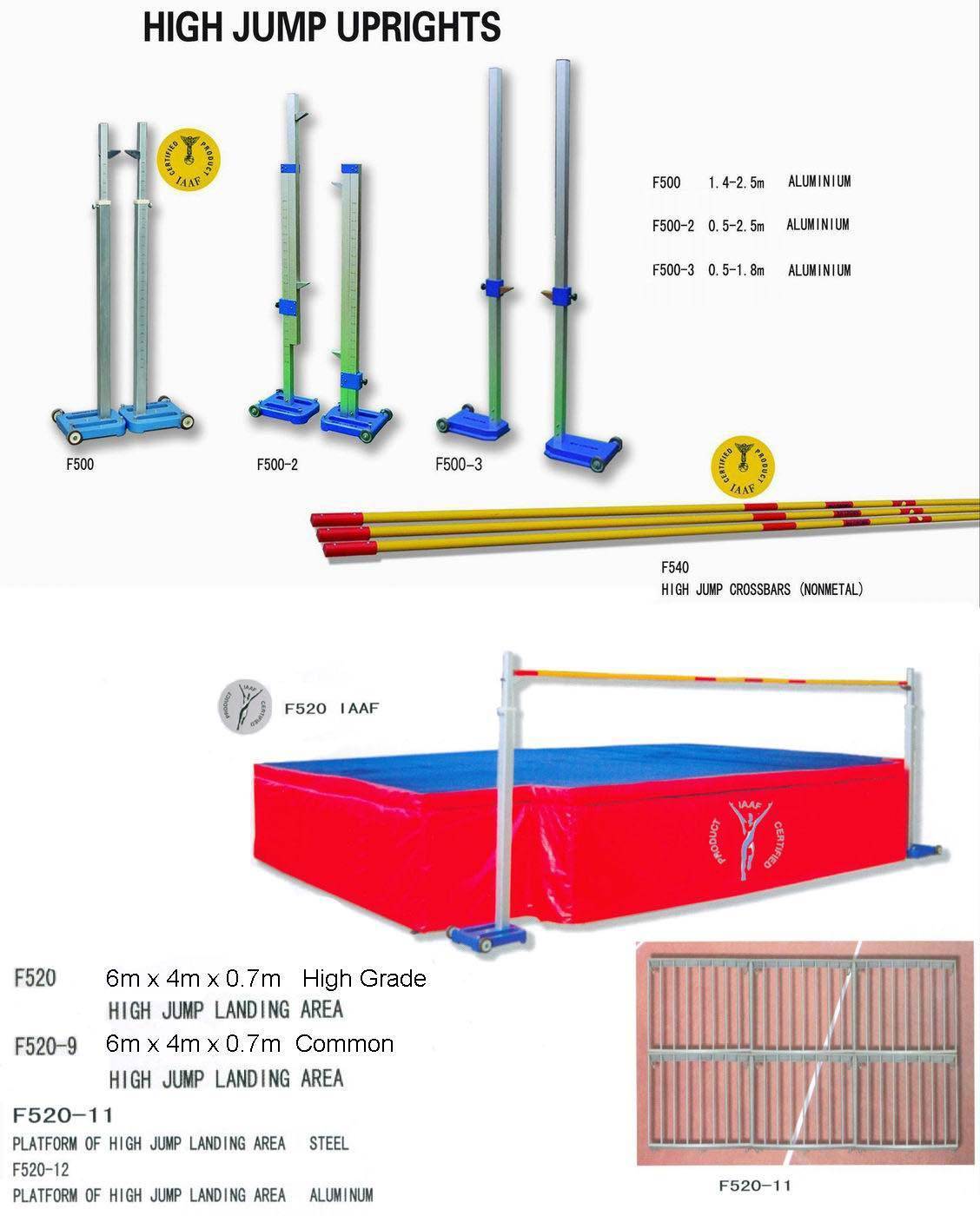
Equipments
High Jump Equipment. Stadia Sports offer a wide range of high jump equipment including high jump mats, waterproof landing mat covers, high jump stands and laths.
Associations
- International Association of Athletics Federations.

High diving is the act of diving into water from relatively great heights. High diving can be performed as an adventure sport (as with cliff diving), as a performance stunt (as with many records attempts), or competitively during sporting events. It debuted as a sport at the 2013 World Aquatics Championships in Barcelona. In the world championships, men jump from a 27-metre-high (89 ft) platform while women jump from a 20-metre-high (66 ft) platform. In other official competitions, men generally dive from a height of 22–27 metres (72–89 ft) while women dive from a height of 18–23 metres (59–75 ft). The sport is unique in that athletes are often unable to practice in an authentic environment until the days leading up to a competition. High diving has been designated a sport separate from regular diving by FINA. High divers have achieved speeds of descent of 96 kilometres per hour (60 mph).
History
Initially, diving as a sport began by jumping from “great heights”. Then it was exclusively practiced by gymnasts as they found it exciting with a low probability of injury. It then evolved into “diving in the air” with water as the safety landing base. Efforts by Thomas Ralph to name the sport “springing” were not realized, as the term “diving” was by then firmly rooted. It soon became a sporting event pursued by many enthusiasts. In the early years of the sport, finding suitable places to jump was an issue, and people started jumping from any high place – in Europe and the United States they started jumping from bridges, then diving head first into the water. This evolved into “fancy diving” in Europe, and, particularly in Germany and Sweden, as a gymnastic act. The sport further improved with gymnastic acts being performed during the diving process, and was then given the names “springboard diving” and “high fancy diving”, which were events in the Olympics of 1908 and 1912. The first diving event as a sport, however, was in 1889 in Scotland with a diving height of 6 feet (1.8 m). Today, in Latin America, diving by professionals from heights of 100 feet (30 m) or more is a common occurrence.
Cliff diving has been documented as far back as 1770 when Kahekili II, king of Maui, engaged in a practice called “lele kawa,” which in English means jumping feet first into water from great heights without making a splash. The king’s warriors were forced to participate to prove that they were courageous and loyal to the king. The practice later developed into a competition under king Kamehameha I, and divers were judged on their style and amount of splash upon entering the water.
On 14 January 1933, Dutchman Lou Vlasblom made a well documented dive from the top of one of the towers of the Rotterdam Koningshaven bridge from a height of 65 meters.
The first female world champion in this sport was Cesilie Carlton of the United States, who won the first gold medal at the 2013 World Aquatics Championships with a total score of 211.60. The first male world champion was Orlando Duque of Colombia who received a score of 590.20.

Rules
The rule of diving a relatively straightforward, but differ slightly between the two main disciplines, springboard diving, and platform diving.
Springboard Diving
- Six dives should be completed by men, five by women
- Dives can be performed at any difficulty level
- One dive during the contest must come from each of five different categories (forward, back, reverse, inward, twisting)
- Men may repeat one of the categories for their sixth dive, women may not
- Each dive must be different, meaning no dive can be repeated
Platform diving & Synchronized Springboard
- Men complete six dives, women complete five
- For both men and women, the first two dives must have a difficulty level of 2.0
- The remaining dives for both men and women can be of any difficulty level
- Both men and women must complete dives from at least four different categories with at least one of the dives being forward facing
Equipments
1. A High-Quality Diving Mask
Unfortunately, our eyes were not made to work perfectly underwater. Instead, to see perfectly without the problem of blurred vision or painful eyes, a diving mask is essential. This should be one of your top equipment priorities. After all, there is no point going diving if you can’t even see your incredible surroundings clearly.
Having a high-quality diving mask can make all the difference to your diving expedition. While renting diving masks is a possibility, buying a new one that perfectly fits and meets your needs is definitely best.
2. A Reliable Wetsuit
When it comes to diving and maintaining a comfortable temperature under the water for long periods of time, you’re going to want a dependable wetsuit. Typically made from neoprene rubber, wetsuits are effective at locking a thin layer of water alongside your skin, which acts as padding and maintains a comfortable body temperature while you explore under the water.
3. Fins to Get You Through the Water
The experience of diving is so much more enjoyable when you can move effortlessly through the water. Scuba fins help facilitate ease of movement and help you move through the water with more speed and agility than you would otherwise have managed. This is vital for an exciting and enjoyable diving trip as it helps you to explore and slowly reduce energy, rather than tiring yourself out.
Efficiency and comfort are vital when it comes to choosing a pair of high-quality fins. So, make sure you do your research before splashing your cash.
4. Depth Gauge, Submersible Pressure Gauge, & Compass
Some of the most essential pieces of dive equipment are a depth gauge, submersible pressure gauge, and a compass. The depth gauge records how deep you are travelling on your dive, the submersible pressure gauge displays the amount of gas remaining in your scuba tank, helping you monitor your supply, and a compass helps you know where you are – even when there’s low visibility.
When purchasing this equipment, you can choose either analogue or digital forms, it depends on your preferences. Alternatively, you can purchase a 3-gauge instrument which combines all three pieces in one device – ideal if you’re prone to losing or forgetting things!
5. Tank Bangers for Communication
Maybe you’ve heard of these or maybe you haven’t, but tank bangers are an essential piece of dive gear. These hard materials on elastic bands are usually wrapped around a diver’s cylinder and can be used by snapping the hard material against your tank to get another divers attention. This is ideal if you need to warn someone of a dangerous predator or some other emergency and could very well save your life.
6. Diving Cylinder
If you’re a diver, it goes without saying that diving cylinders are nothing short of essential for any diving expedition. Diving cylinders are your main source of oxygen and provide you with vital oxygen while you’re exploring the depths. Depending on your experience and the length of your dive, among other things, the size of your cylinder may vary. So, ensure you carry out the appropriate research to choose the appropriate cylinder for your dive requirements.
7. Quality Diving Footwear
‘Diving footwear’ may seem like a strange term, but this covers a range of quality accessories that keep your feet safe and comfortable at all times. After all, there are so many jagged rocks, coral, and other hard surfaces in reefs and on the ocean floor that you can’t simply jump in wearing any old footwear. So, do your research and ensure you find some quality diving footwear to protect your feet throughout your dive.
Associations
- WORLD HIGH DIVING FEDERATION.
- World Recreational Scuba Training Council.
Harness racing is a form of horse racing in which the horses race at a specific gait (a trot or a pace). They usually pull a two-wheeled cart called a sulky, occupied by a driver, although in Europe, jockeys riding directly on saddled trotters (trot monté in French) is also conducted.
History
Harness Racing in Australia has a very long and rich history. Dating back to the early 19th century, harness racing has long been a popular and important sport for spectators, participants and punters alike.
Standardbred horse racing grew steadily in popularity due to the more affordable nature of the animal. Thoroughbred horses – raced in ‘the sport of kings’ – were unaffordable for many families and potential participants in the 19th century, however many had access to a Standardbred horse that may have been suitable for racing.
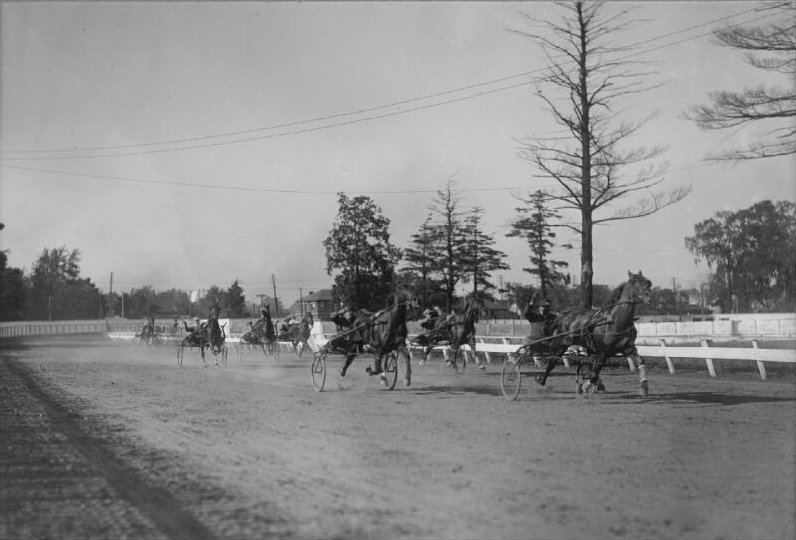
Rules
Differing national horse racing organizations may have differing rules concerning how horse races should be run. However, by and large, the vast majority of rulebooks are very similar with many being based on the British Horseracing Authority’s original rulebook .
- All flat races must be started from starting stalls or a starting gate.
- All steeple chases, hurdle races, and jump races must be started with a starting gate or a flag (requires special permission).
- In extraordinary or emergency circumstances, any horse race, regardless of type, may be started with a flag as long as the starter decides this or the steward’s permission has been sought.
- A false start will be declared if the starter considers that a horse has broken away before the race has started.
- Riders must then attempt to ride their horses to the best of their ability in an attempt to win the race. Disqualifications and further sanctions may occur if, in the steward’s opinion, the rider has not done this.
- Riders must ride in a safe manner and follow the prescribed course, jumping every hurdle (if present).
- To complete the race, a rider must cross the finish line on his horse.
- Depending upon the particular race, there will usually be an amount of prize money to be split amongst the first, second and third finishers.
Equipments
Perhaps the most important piece of ‘equipment’ in horse racing is the horse. Those suitable for horse racing include Thoroughbreds, Arabian horses, and Quarter horses. Differing national organizations may have their own rules as to what horses can compete.
All riders wear a helmet and all carry a whip too. This can be a controversial piece of equipment as it is used to whip the horse to spur it on to go faster. On some countries, jockeys are allowed to use the whip whenever and as much as they like, although some countries like the UK limit the number of times it can be used to prevent any distress to the horse.
Associations
- Association of Racing Commissioners International.
- Oregon Racing
- The American Quarter Horse Association.
- United States Trotting Association.
- California Thoroughbred Breeders Association.
- Grayson-Jockey Club Research Foundation, Inc.
Hang gliding is an air sport or recreational activity in which a pilot flies a light, non-motorised foot-launched heavier-than-air aircraft called a hang glider. Most modern hang gliders are made of an aluminum alloy or composite frame covered with synthetic sailcloth to form a wing. Typically the pilot is in a harness suspended from the airframe, and controls the aircraft by shifting body weight in opposition to a control frame.
Early hang gliders had a low lift-to-drag ratio, so pilots were restricted to gliding down small hills. By the 1980s this ratio significantly improved, and since then pilots can soar for hours, gain thousands of feet of altitude in thermal updrafts, perform aerobatics, and glide cross-country for hundreds of kilometers. The Fédération Aéronautique Internationale and national airspace governing organisations control some regulatory aspects of hang gliding. Obtaining the safety benefits of being instructed is highly recommended.
History
By the end of the sixth century A.D., the Chinese had managed to build kites large and aerodynamic enough to sustain the weight of an average-sized person. It was only a matter of time before someone decided to simply remove the kite strings and see what happened. Most early glider designs did not ensure safe flight; the problem was that early flight pioneers did not sufficiently understand the underlying principles that made a bird’s wing work. Starting in the 1880s technical and scientific advancements were made that led to the first truly practical gliders, such as those developed in the United States by John Joseph Montgomery. Otto Lilienthal built controllable gliders in the 1890s, with which he could ridge soar. His rigorously documented work influenced later designers, making Lilienthal one of the most influential early aviation pioneers. His aircraft was controlled by weight shift and is similar to a modern hang glider.
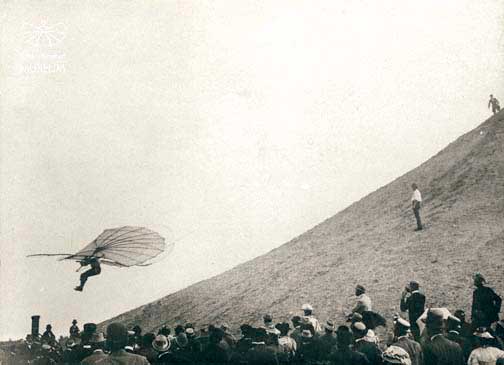
Equipments
• Variometer
• Radio
• GPS
• Thermal
Associations
- Hang Gliding and Paragliding Association of Canada.
- British Hang Gliding Association.
The hammer throw is one of the four throwing events in regular track and field competitions, along with the discus throw, shot put and javelin. The “hammer” used in this sport is not like any of the tools also called by that name. It consists of a metal ball attached by a steel wire to a grip. The size of the ball varies between men’s and women’s competitions.
History
With roots dating back to the 15th century, the contemporary version of the hammer throw is one of the oldest of Olympic Games competitions, first included at the 1900 games in Paris, France (the second Olympiad of the modern era). Its history since the late 1960s and legacy prior to inclusion in the Olympics have been dominated by European and Eastern European influence, which has affected interest in the event in other parts of the world.
The hammer evolved from its early informal origins to become part of the Scottish Highland games in the late 18th century, where the original version of the event is still contested today.
While the men’s hammer throw has been part of the Olympics since 1900, the International Association of Athletics Federations did not start ratifying women’s marks until 1995. Women’s hammer throw was first included in the Olympics at the 2000 summer games in Sydney, Australia, after having been included in the World Championships a year earlier.
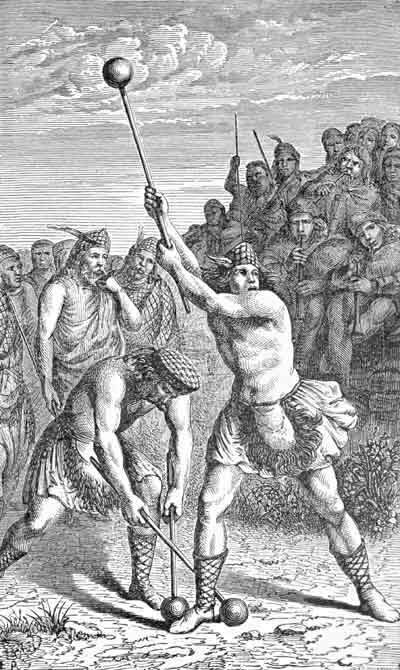
Rules
The hammer is thrown from a circle with a 2.135-meter diameter (7 feet). Competitors may touch the inside of the circle’s rim but cannot touch the top of the rim during the throw. The thrower cannot touch the ground outside the throwing circle during an attempt, nor can he/she leave the circle until the hammer hits the ground. The circle lies within an enclosure to ensure the safety of the bystanders.
Equipments
The hammer is a three-part device that includes a metal ball, called the “head,” attached to a steel wire not longer than 121.5 centimeters (3 feet 11 3/4 inches), and a grip or “handle” on the end. The hammer is the only throwing competition in which athletes may wear gloves.
Men throw a 7.26-kilogram ball (16 pounds), with a diameter ranging between 110 to 130 millimeters (4.3 to 5.1 inches), while women throw a 4-kilogram version (8.8 pounds) with a diameter of 95 to 100 millimeters (3.7 to 3.9 inches).
Associations
- International Association of Athletics Federations.

Grass skiing, skiing on grass, is a method for training for alpine skiing. Both grass skiing and alpine skiing have become established as sports in their own right. The skis used for grass skiing are short with rolling treads or wheels. These skis are attached to the skiers’ boots. Depending on the skill of the grass skier, high speeds and jumps can be navigated.
History
Grass skiing was invented by Richard Martin in Germany in 1966. It was created initially as a training method for skiers before the winter season. Two years later, Martin introduced the new skiing variation to the Vosges region of France.
Originally, skis used in grass skiing were like rolling treads attached to the ski boots. Nowadays, there are two types of skis used in grass skiing. These are the wheeled models and the tracked ones. The wheeled model can be used in various terrains and for freestyle skiing and off-piste skiing. The tracked model, on the other hand, is specifically designed to be used in grassy slopes.
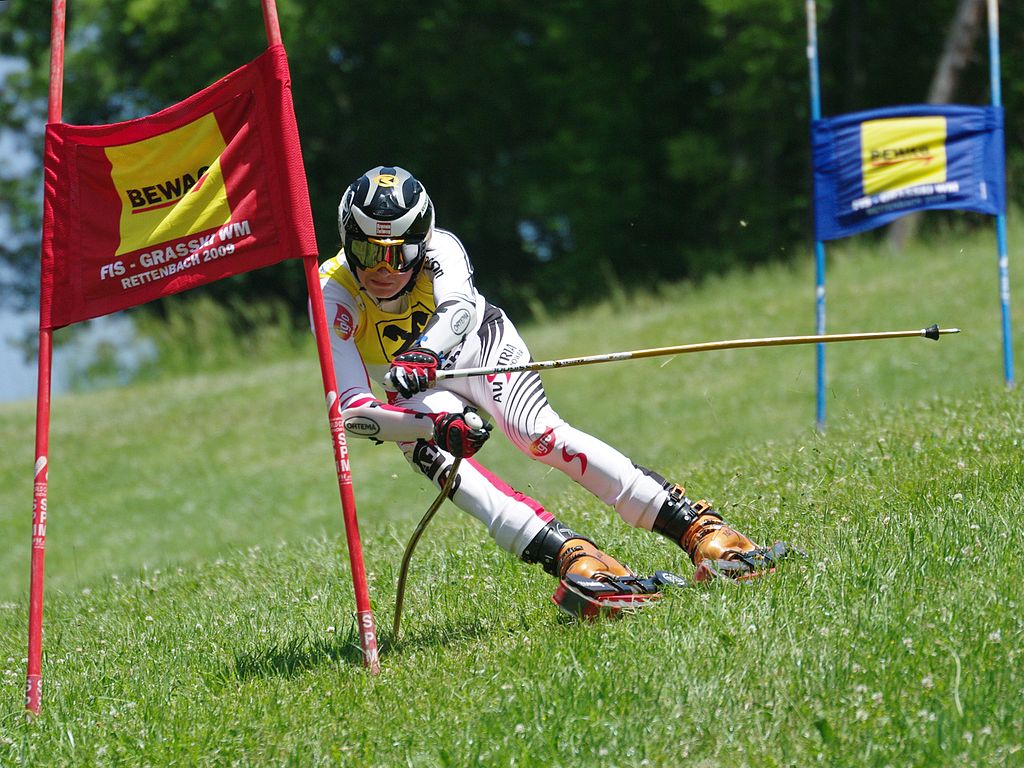
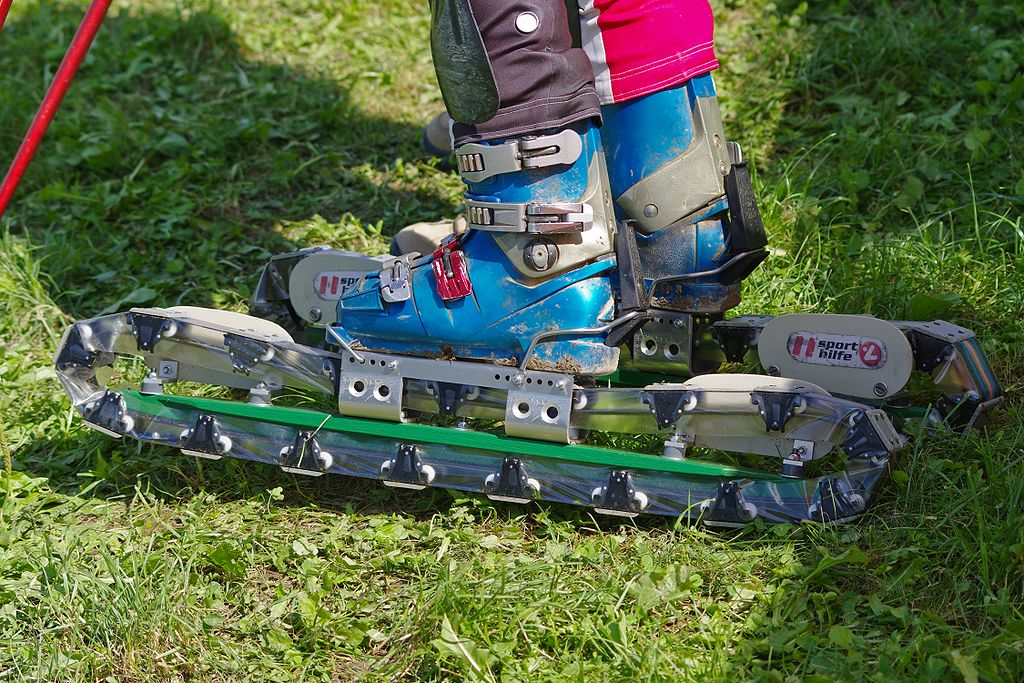
Equipments
Grass skiing equipment is relatively similar to alpine skiing equipment. However, grass skis are designed to function on grass, not on snow. Wheeled grass skis can be used on a variety of terrain, but the majority of grass skis are tracked skis. Tracked grass skis are specifically designed to “slide” on grass, so they require smooth, grassy slopes. Tracked grass skis offer great speed.
Grass skiers use poles just like snow skiers. Just as helmets are a necessity for alpine skiing, helmets are used for grass skiing, too. Many grass skiers wear padding on their knees, legs, and elbows. Grass tends to be much less forgiving than snow.
Associations
- Cross Country Ski Areas Association.

Golf is a club-and-ball sport in which players use various clubs to hit balls into a series of holes on a course in as few strokes as possible.
Golf, unlike most ball games, cannot and does not utilize a standardized playing area, and coping with the varied terrains encountered on different courses is a key part of the game. The game at the usual level is played on a course with an arranged progression of 18 holes, though recreational courses can be smaller, often having nine holes. Each hole on the course must contain a tee box to start from, and a putting green containing the actual hole or cup 4 1⁄4 inches (11 cm) in diameter. There are other standard forms of terrain in between, such as the fairway, rough (long grass), bunkers (or “sand traps”), and various hazards (water, rocks) but each hole on a course is unique in its specific layout and arrangement.
History
A golf-like game is, apocryphally,recorded as taking place on February 26, 1297, in Loenen aan de Vecht, where the Dutch played a game with a stick and leather ball. The winner was whoever hit the ball with the least number of strokes into a target several hundred yards away. Some scholars argue that this game of putting a small ball in a hole in the ground using golf clubs was also played in 17th-century Netherlands and that this predates the game in Scotland. There are also other reports of earlier accounts of a golf-like game from continental Europe.
In the 1261 Middle Dutch manuscript of the Flemish poet Jacob van Maerlant’s Boeck Merlijn mention is made of a ball game “mit ener coluen” (with a colf/kolf [club]). This is the earliest known mention in the Dutch language of the game of colf/kolf as played in the Low Countries.
In 1360, the council of Brussels banned the game of colf: “wie met colven tsolt es om twintich scell’ oft op hare overste cleet” (he who plays at colf pays a fine of 20 shillings or his overcoat will be confiscated).
In 1387, the regent of the county of Holland, Zeeland and Hainaut, Albrecht of Bavaria, sealed a charter for the city of Brielle, in which it was forbidden to play any game for money. One of the exceptions to this ordinance was “den bal mitter colven te slaen buten der veste” (to play the ball with a club outside the town walls). Two years later, in 1389, the regent Albrecht offered the citizens of Haarlem a field called “De Baen” (the course) to be used exclusively for playing games – especially colf – because these were too dangerous within the city walls.
In 1571 the book, “Biblia dat is, de gantsche Heylighe Schrift, grondelic ende trouwclick verduydtschet”, describes the game of “Kolf” played with a “bat” and “sach”.
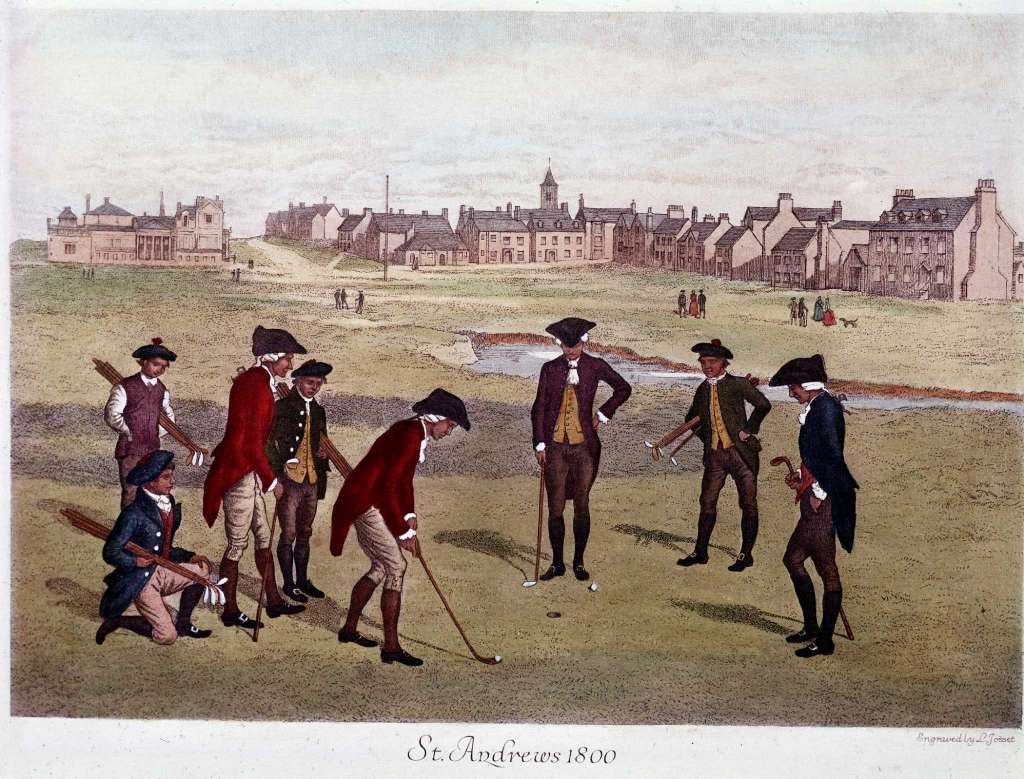
Rules
The Rules of Golf and the Rules of Amateur Status is published every four years by the governing bodies of golf (R&A/USGA) to define how the game is to be played. The Rules have been published jointly in this manner since 1952, although the code was not completely uniform until 2000 (with mostly minor revisions to Appendix I). Before 2012 the USGA and R&A presented the same content differently in separate editions. The same content is now published in a uniform fashion with similar formatting and covers — the only differences are now some spelling and their logos. The Rules Committee of The R&A, which was spun off from The Royal and Ancient Golf Club of St Andrews in 2004, has responsibility for upkeep and application of the rules worldwide except in the United States and Mexico, which are the responsibility of the United States Golf Association(USGA).
The term “Rules” can be said to include the following:
- Decisions on the Rules of Golf, a book published every two years by the USGA and R&A to clarify questions raised by the Rules.
- Local rules set by the Committee of a golf club, for example to denote the method used to define the boundaries of the course, ball drops, environmentally sensitive areas (ESAs), etc.
- Rules of golf etiquette, covered by the main book, define the proper behaviour of those playing the game.
- Rules often adopted in competitions, for example the prohibition on using automotive transportation during a round and Rules related to Temporary Immovable Obstructions (TIOs).
- Rules governing the size, shape and performance of golf equipment (clubsand balls) as defined by the R&A/USGA (Appendices I and II).
- Rules governing golfers with disabilities who play in accordance with A Modification of the Rules of Golf for Golfers with Disabilitiesas published by the R&A and USGA.
Note that while the USGA defines its own handicapping and course rating system, the R&A defers this responsibility to the appropriate national governing bodies.
The Royal and Ancient Golf Club of St Andrews is a private golf club run for the benefit of its members. As such, since 2004 it has passed responsibility of publishing the rules to a private company, R&A Rules Ltd, operating under the stewardship of the golf club.
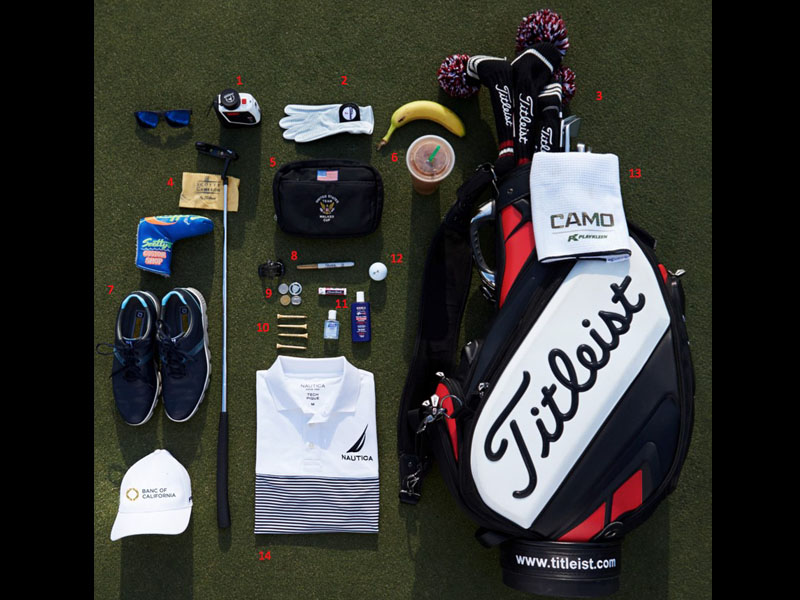
Equipments
Golf balls
Originally, golf balls were made of a hardwood, such as beech. Beginning between the 14th and 16th centuries, more expensive golf balls were made of a leather skin stuffed with down feathers; these were called “featheries”. Around the mid-1800s, a new material called gutta-percha, made from the latex of the East Asian sapodilla tree, started to be used to create more inexpensive golf balls nicknamed “gutties”, which had similar flight characteristics as featheries. These then progressed to “brambles” in the later 1800s, using a raised dimple pattern and resembling bramble fruit, and then to “meshies” beginning in the early 1900s, where ball manufacturers started experimenting with latex rubber cores and wound mesh skins that created recessed patterns over the ball’s surface. Recessed circular dimples were patented in 1910, but didn’t become popular until the 1940s after the patents expired.
The minimum allowed diameter of a golf ball is 42.67 mm and its mass may not exceed 45.93 g. Modern golf balls have a two-, three-, or four-layer design constructed from various synthetic materials. The surface usually has a pattern of 300-450 dimples designed to improve the ball’s aerodynamics by reducing the ball’s drag-inducing wake and allowing spin on the ball to create lift. The method of construction and materials used greatly affect the ball’s playing characteristics such as distance, trajectory, spin and feel. Harder materials, such as Surlyn, usually result in the ball’s traveling longer distances, while softer covers, such as urethane, tend to generate higher spin, more “feel” and greater stopping potential. Golf balls are separated into three groups depending on their construction: two-, three-, or four-piece covers. Generally four-piece golf balls tend to be the most expensive, though price is no assurance of quality.
Golf clubs
A player usually carries several clubs during the game (but no more than fourteen, the limit defined by the rules). There are three major types of clubs, known as woods, irons, and putters. Woods are played for long shots from the tee or fairway, and occasionally rough, while irons are for precision shots from fairways as well as from the rough. Wedges are irons used to play shorter shots. A new type of club called a hybrid combines the straight-hitting characteristics of irons with the easy-to-hit characteristics of higher-lofted woods. A hybrid is often used for long shots from difficult rough. Hybrids are also used by players who have a difficult time getting the ball airborne with long irons. Wedges are played from difficult ground such as sand or the rough and for approach shots to the green. Putters are mostly played on the green, but can also be useful when playing from bunkers or for some approach shots. Putters have minimal loft, forcing the ball to stay on the putting surface when struck. The most common clubs to find in a golfer’s bag are the driver, 3-wood, numbered irons from 3 to 9 (with hybrids commonly replacing the 3 and 4 iron), pitching and sand wedges, and a putter. Players commonly also carry a 5-wood, and/or additional wedges such as a gap or lob wedge.
Ball markers
When on the green, the ball may be picked up to be cleaned or if it is in the way of an opponent’s putting line; there are certain other circumstances in which a ball may be lifted. In these cases, the ball’s position must first be marked using a ball marker; this is typically a round, flat piece of metal or plastic that is differentiable from others in use. Ball markers are often integrated into other accessories, such as divot tools, scorekeeping tools or tee holders, and in the absence of a purpose-made marker, a small coin such as a penny is acceptable.
Tees
A tee is an object (wooden or plastic) that is pushed into or placed on the ground to rest a ball on top of for an easier shot; however, this is only allowed for the first stroke (tee shot or drive) of each hole. Conventional golf tees are basically spikes with a small cup on the head to hold the ball, and are usually made of wood or plastic. Wooden tees are generally very inexpensive and quite disposable; a player may damage or break many of these during the course of a round. Plastic tees are generally more expensive but last longer. The length of tees varies according to the club intended to be used and by personal preference; longer tees (3-3.5″) allow the player to position the ball higher off the ground while remaining stable when planted, and are generally used for modern deep-faced woods. They can be planted deeper for use with other clubs but then tend to break more often. Shorter tees (1.5-2.5″) are suitable for irons and are more easily inserted and less easily broken than long tees. Other designs of tee exist; the “step tee” is milled or molded with a spool-shaped upper half, and so generally provides a consistent ball height from shot to shot. The “brush tee” uses a collection of stiff bristles instead of a cup to position the ball; the design is touted by its manufacturer as providing less interference to the ball or club at impact, for a straighter, longer flight.
Alternately, the rules allow for a mound of sand to be used for the same function, also only on the first shot. Before the invention of the wooden spike tee, this was the only accepted method of lifting the ball for the initial shot. This is rarely done in modern times, as a tee is easier to place, hit from, and recover, but some courses prohibit the use of tees either for traditional reasons, or because a swing that hits the tee will drive it into or rip it out of the ground, resulting in damage to the turf of the tee-box. Tees also create litter if discarded incorrectly when broken.
Golf bag
A golfer typically transports golf clubs in a golf bag. Modern golf bags are made of nylon, canvas and/or leather, with plastic or metal reinforcement and framing, but historically bags have been made from other materials. Golf bags have several pockets designed for carrying various equipment and supplies required over the course of a round of golf. Virtually all bags are sectioned off with rigid supports at the top opening, both for rigidity and to separate clubs of various types for easier selection. More expensive bags have sleeves or pockets within the main compartment for each individual club, allowing for the desired club to be more easily removed from the bag and then returned without interference from the grips of the other clubs or internal hardware of the bag.
- Carry bagsare generally designed to be carried by the player while on the course; they have single or dual shoulder straps, and are generally of lightweight construction to reduce the burden on the player or caddy.
- Sunday bagsare commonly advertised as “minimalist” carry bags; they have very light weight and flexible construction allowing the bag to be rolled up or folded for storage without clubs, and have storage pockets for the essentials of play (clubs, balls, tees) but often lack more advanced features like segregated club storage, insulated pockets for drinks, stand legs etc.
- Stand bagsare in the family of carry bags but additionally feature rigid internal reinforcement and retractable fold-out legs, which make the bag a tripod allowing it to be securely placed on the turf. Modern carry bags are very commonly stand bags even at low pricepoints.
- Cart bagsare generally designed to be harnessed to a two-wheeled pull cart or a motorized golf cart during play of a round. They often have only a rudimentary carry strap or handle for loading and transporting the bag, and no stand legs, but may feature extra storage or more durable construction, as weight of the loaded bag is a lesser concern.
- Staff bagsare the largest class of golf bags, and are generally seen carried by caddies or other assistants to professional or high-level amateur players. Staff bags are generally the same size or larger than a cart bag, and typically feature a single shoulder strap, a large amount of storage for equipment and even spare attire, and large logo branding designed for product placement on televised events.
- Travel bagsare available with many combinations of size and features, but are distinguished by rigid and/or heavily padded construction, including the clubhead cover (which on most other bags is simply an unpadded “rain fly”), and locks on the zippers and bag cover. These features protect the clubs from abuse and theft, and generally makes the bag suitable for checked airline luggage. Travel bags are generally used by amateur players that travel occasionally, such as business executives; rigid flight cases that enclose the actual golf bag are generally preferred by touring players, as these cases can enclose any golf bag, are more discreet as to their contents thus further deterring theft, and the case’s weight and bulk can be left behind while on the course where it’s not needed.
Golf cart
Golf carts are vehicles used to transport golf bags and golfers along the golf course during a round of golf. Hand carts are designed to hold only the bag, and are used by players while walking along the course to relieve them of the weight of the bag. Carts that carry both player and bag are more common on public golf courses; most of these are powered by a battery and electric motors, though gasoline-powered carts are sometimes used by course staff, and some courses and players are beginning to explore alternatives such as bicycle-drawn carts.
The traditional way to play was to walk, but the use of golf carts is very common due to a number of factors. Chief among them is the sheer length of the modern course, and the required “pace of play” instituted by many courses to prevent delays for other golfers and maintain a schedule of tee times. A typical par-72 course would “measure out” at between 6,000 and 7,000 total yards, which does not count the distance between the green of one hole and the tee of the next, nor the additional distance caused by errant shots. A player walking a 7,000-yard course might traverse up to 5 miles (8km). With a typical required pace of play of 4 hours, a player would spend 1.6 hours of that time simply walking to their next shot, leaving an average of only two minutes for all players to make each of the 72 shots for a par score (and most casual players do not score the course par). Economics is another reason why carts have become prevalent at many courses; the fee for renting a cart is less expensive than paying a caddie to carry the bags, and the private club gets the money for the cart rentals. A golf cart also enables physically handicapped people to play the game. Carts are also popular with golfers who are too lazy to walk the course.
The use of carts may be restricted by local rules. Courses may institute rules such as “90 degree paths”, where drivers must stay on the cart path until level with their ball, and then may turn onto the course. This typically reduces the effect that the furrows from the cart wheels will have on balls. Soft ground due to rain or recent maintenance work may require a “cart path only” driving rule to protect the turf, and a similar policy may apply in general to the areas around tee boxes and greens (and on shorter par-3 holes where fairway shots are not expected). The use of carts is banned altogether at most major PGA tournaments; players walk the course assisted by a caddy who carries equipment.
Towels
Most golf bags have a ring to which a player can tie or clip a golf towel, used to wipe hands and clean or dry balls and club faces. Some of these towels can be quite specialized, with a carabiner or other clip to attach it to the bag with a grommet used on the towel for durability, and incorporating rougher materials in certain sections of the towel for club and ball cleaning with softer weaves elsewhere for drying. Other cleaning products abound, from motorized ball cleaners to an array of brushes for various types of clubs as well as balls and shoes.
Club head covers
Club head covers in use (head covers for Driver, Fairway Wood, Hybrid, Iron and Putter
Club head covers protect the clubs from striking each other and from weather and incidental damage while in the bag, make clubs more identifiable at a glance, and provide a personal touch to a player’s clubs. The most common club head covers are for a player’s driver and fairway woods, as modern designs have large hollow heads and long shafts that make them prone to damage, but covers for hybrids, putters, and even irons/wedges are also marketed.
Ball mark repair tool
A ball mark repair tool (also known as a pitchfork or divot tool) is used to repair a ball mark (a depression in the green where a ball has hit the ground on its approach shot). Some tees contain such a tool at the end, for pure convenience when on the green. To repair a ball mark, one pushes the tool next to the mark and pushes gently inwards from all sides, loosening the compacted turf to allow rapid regrowth of grass, and then flattens the mark with the smooth flat bottom of the putter to smooth the putting surface.
Associations
- Professional Golfers’ Association, (with or without the apostrophe), is the usual term for a professional association in men’s golf. It is often abbreviated to PGA. There are several PGAs around the world, including:
- Professional Golfers’ Association (Great Britain and Ireland)
- Professional Golfers’ Association of America
The organisations which run the world’s two leading professional golf tours have the initials PGA in their names, but they are now independent of the Professional Golfers’ Associations which established them:
- PGA Tour(which runs the PGA Tour, com Tour, Champions Tour, PGA Tour Canada, PGA Tour Latinoamérica, and PGA Tour China)
- PGA European Tour(which runs the European Tour, Challenge Tour and European Senior Tour)
The women’s equivalent term is Ladies Professional Golf Association, commonly abbreviated to LPGA. The United States association is called the LPGA. Other women’s bodies have territorial designations in their names, like LPGA of Japan or LPGA of Korea.
Originally, PGAs were the central bodies for all forms of professional golf in their territories, but now some of them, including those of the United States, the United Kingdom, and Ireland, are focused on the needs of the majority of professional golfers who work as club or teaching professionals, as opposed to being tournament professionals.
Goalball is a team sport designed specifically for athletes with a vision impairment. Participants compete in teams of three, and try to throw a ball that has bells embedded in it into the opponents’ goal. The ball is thrown by hand and never kicked. Using ear-hand coordination, originating as a rehabilitation exercise, the sport has no able-bodied equivalent.
Played indoors, usually on a volleyball court, games consist of twelve-minute halves (formerly ten-minute halves). Teams alternate throwing or rolling the ball from one end of the playing area to the other, and players remain in the area of their own goal in both defence and attack. Players must use the sound of the bell to judge the position and movement of the ball. Eyeshades allow partially sighted players to compete on an equal footing with blind players. Eyepatches may be worn under eyeshades to ensure complete coverage of the eye, and prevent any vision should the eyeshades become dislodged.
History
Goalball was originally devised in 1946 by the Austrian Hanz Lorenzen and German Sepp Reindle as a means of assisting the rehabilitation of visually impaired World War II veterans.
Goalball gradually evolved into a competitive game during the 1950s and 1960s. It was eventually nominated as a demonstration sport at the 1972 Summer Paralympics in Heidelberg, West Germany, and became a Paralympic Games sport in at the 1976 Summer Paralympics in Toronto.The sport’s first world championship was held in Austria in 1978.
In 2011, the long-standing IBSA Goalball Subcommittee sought to separate from IBSA and form a new international body, the World Goalball Association. This was for several reasons. IBSA responded by appointing a new committee.
As of 2017, there were 81 competing nations and 270 international referees.
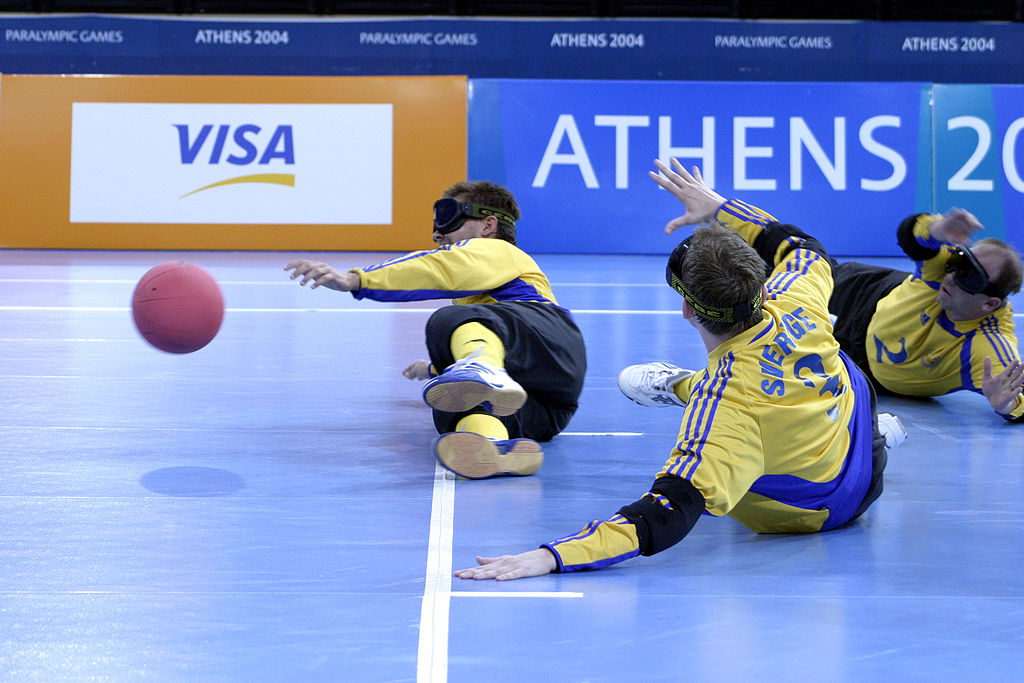
Rules
Infractions
Infractions are generally punished by the loss of possession to the other team
- Premature throw – throwing the ball before the official has called ‘play’.
- Pass out – while passing between members of the team, the ball crosses the sideline.
- A ball over – the ball rebounds off a defending player, the crossbar or goalposts and crosses back over half-court.
Penalties
A penalty throw may be awarded for:
- Ten second penalty – A team takes more than ten seconds to throw the ball back over the centre line.
- Delay of game – This can be caused by many different things. A coach reporting the wrong numbers for substitutions, a team not arriving in time for the coin toss that precedes the game, or too many or too few players taking the court.
- Illegal defence – This is called if a defender makes contact with the ball while no part of the body is touching the team area.
- Short ball – The ball fails to reach the opponent’s team area when thrown.
- High ball – The ball does not touch the thrower’s landing zone when thrown.
- Long ball – The ball does not touch the neutral zone when thrown.
- Eyeshades – Touching eyeshades without permission.
- Unsportsmanlike conduct – This can be a variety of things, from arguing with an official to pounding the floor and swearing
- Noise – Unnecessary noise by the offensive team that prevents the defence from tracking the ball while the ball is travelling down the court.
- Illegal coaching – coaching from the bench during play or after an official has said ‘Quiet please’ with intentions of continuing or starting play. From 2006, rules allowed coaching from the bench during an ‘official time-out’.
In a penalty situation a single player is required to defend the entire goal for one throw. The player chosen is determined by the penalty. For instance, a high ball or illegal defence penalty is defended by the player who committed the penalty. On the other hand, an illegal coaching penalty is defended by a player chosen by the coach of the throwing team (previously the last recorded thrower of that team).
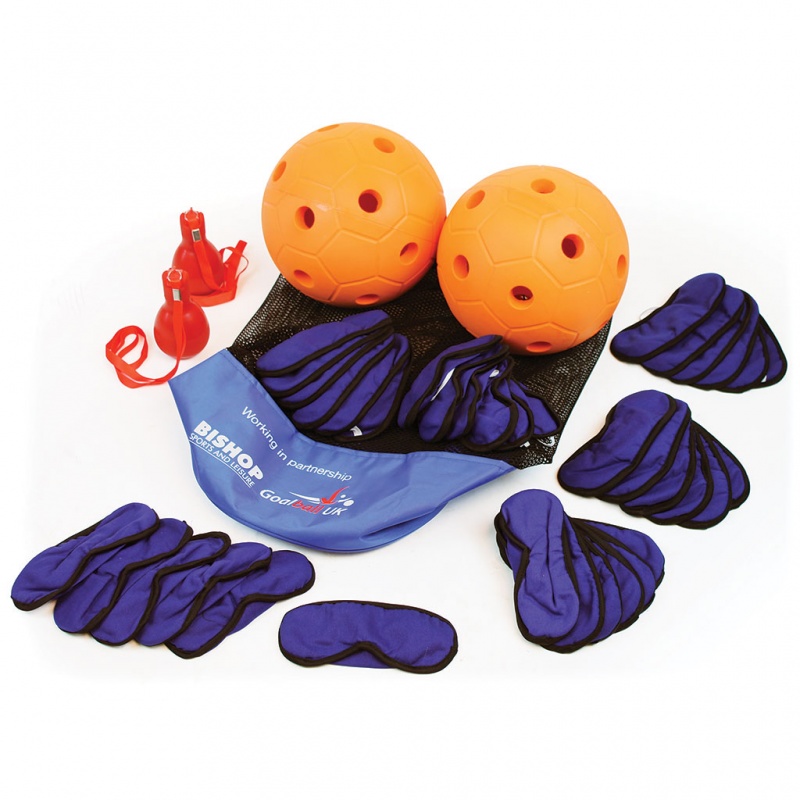
Equipments
Eyeshades
Blacked out eyeshades are a requirement. Referees check eyeshades whenever a player comes on court (start of each half and substitutions), and no light must be visible to the referee when held up to the face. All vents and the lens have to be completely blacked out. Make sure there is good foam padding around the goggles, as there cannot be any gaps in contact with the face – in particular check how they fit around your nose.
You can make your own Goalball eyeshades by modifying ski goggles.Purpose made Goalball eyeshades are more expensive. Target eyeshades are available direct from. They ship internationally.How do you clean eyeshades? They can get very sweaty and potentially very smelly! Some players throw them in the washing machine – this is OK if it’s a cheap pair but not good for the longevity of the eyeshades, and possibly not that good for the washing machine either.Rinse the shades under cold water, wiping the inside of the lens and squeezing the foam and strap. Towel dry and spray the foam and straps with Extra strength Febreze with Ambi Pur, this stuff is fantastic! Wipe the inside of the lens and leave the shades sitting foam side up to dry.
Protection: Knee and elbow pads are necessary for everyone.The Predator kneepads give more protection. Nike volleyball kneepads are heavier duty but more expensive, available from Rebel Sport.
Associations
- U.S. Association of Blind Athletes serves as the National Governing Body for the Paralympic sport of Goalball.
- International Blind Sports Federation (IBSA) Goalball.
Gilli Danda is derived from ghaṭikā [ghaṭ a+ka], literally “tip-cat”. An explanatory definition is given in the commentary as ghaṭikā is “a game played using two sticks: one long and the other short. It is played by hitting the shorter stick with the longer one.” Ghaṭikā is still known to countries from the Indian subcontinent and south Asian countries like Bangladesh, India, Sri Lanka. In Bangladesh, it is known as ḍāṅguli khelā; while in Nepali, it is known as Dandi Biyo. The longer stick in a ḍāṅguli khelā, should be about 1 1⁄2 ft (0.46 m) and the shorter stick about 6 in (150 mm) There are certain rules for preparing the sticks and playing the game with them.
History
Gilli Danda is an amateur sport, originating from the Indian subcontinent, played in the rural areas and small towns all over South Asia as well as Cambodia, Turkey, South Africa, Italy and in some Caribbean islands like Cuba. The game is played with two sticks: a large one called a danda (Dandi in Nepali, Dandu/दांडू/ದಾಂಡು in Marathi and Kannada), which is used to hit a smaller one, the Gilli (Biyo in Nepali, Viti/विटी in Marathi and Chinni/ಚಿನ್ನಿ in Kannada).
Gilli Danda is an ancient sport of the Indian subcontinent, possibly with origins over 2500 years ago.

Rules
“Gilli Danda” is played with two pieces of equipment – a danda, being a long wooden stick, and a gilli, a small oval-shaped piece of wood. It is played with four or more players of even numbers. Or even 100 players.
Standing in a small circle, the player balances the gilli on a stone in an inclined manner (somewhat like a see-saw) with one end of the gilli touching the ground while the other end is in the air. The player then uses the danda to hit the gilli at the raised end, which flips it into the air. While it is in the air, the player strikes the gilli, hitting it as far as possible. Having struck the gilli, the player is required to run and touch a pre-agreed point outside the circle before the gilli is retrieved by an opponent. There are no specific dimensions of gilli danda and it does not have limited number of players.
The gilli becomes airborne after it is struck. If a fielder from the opposing team catches the gilli, the striker is out. If the gilli lands on the ground, the fielder closest to the gilli has one chance to hit the danda (which has to be placed on top of the circle used) with a throw (similar to a run out in cricket). If the fielder is successful, the striker is out; if not, the striker scores one point and gets another opportunity to strike. The team (or individual) with the most points wins the game. If the striker fails to hit the gilli in three tries, the striker is out (similar to a strikeout in baseball). After the gilli has been struck, the opposing players need to return to the circle or, in the best case, catch it in mid-air without its hitting the ground – this was believed to have later evolved into a Catch Out in cricket and baseball.
How to play?
1) Divide the players into two teams. Let any of the two players be the captains.
2) Toss a coin. The team which wins the toss can select batting or fielding but not both.
3) Make the circle with a hole in the center where the batsman will bat.
4) The player of the batting team will use danda to bat, while fielding team is spread in the ground to field. There is no bowler in this game.
5) The batsman hits the gilli at one tapered ends with his danda, and quickly strikes it.
6) If the batsman strikes the gilli which no fielder is able to catch, then the danda is used to measure the distance from the circle to the point where gilli fell. Each danda’s length adds one point to the batting team.
7) If the batsman is unable to strike the gilli in 3 continuous chances, the batsman is out.
8) If the batsman strikes the gilli and the fielder catches it before it touches the ground, then the batsman is out.
9) The next player of his team comes to bat.
10) Repeat the above steps unless all the players of the batting team are out. Calculate their total points.
11) Now the fielding team will bat and the batting team will start fielding. The above steps for the batting team will remain the same.
12) The team with maximum score will win the match.
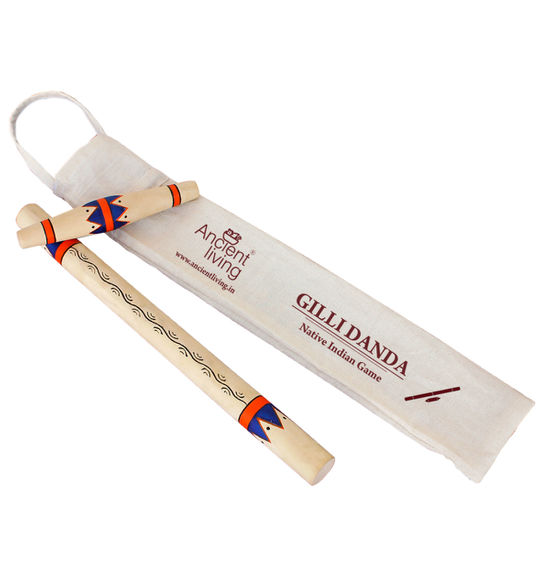
Equipment
It is usually played by using a small round stick, about as long as a baseball or cricket bat. This is the danda. There is another smaller stick, round in the middle and tapering towards the ends. This is the gilli. The game gilli-danda is similar to cricket.
Gaelic handball (known in Ireland simply as handball; Irish: liathróid láimhe) is a sport where players hit a ball with a hand or fist against a wall in such a way as to make a shot the opposition cannot return, and that may be played with two (singles) or four players (doubles). The sport, popular in Ireland, is similar to American handball, Welsh handball, fives, Basque pelota, Valencian pilota, and more remotely to racquetball and squash. It is one of the four Gaelic games organised by the Gaelic Athletic Association (GAA). GAA Handball is the section of the GAA that deals with the sport.
History
Handball-like games have originated in several places at different times. Hieroglyphs in the temple of Osiris in Egypt portray priests taking part in a game very similar to handball. Mesoamerican civilizations in South and Central America had a form of handball-like game, which was a large part of pre-Columbian culture. Recent archaeological finds in the Callan and Moon coin areas of Kilkenny indicate that a game similar to handball was played.
In Ireland, the earliest written record of a similar ball game is contained in the town statutes of Galway in 1527, which forbade the playing of ball games [generic] against the walls of the town. The first depiction of an Irish form of handball does not appear till 1785. On the west coast of Ireland, Galway had many trading links with Spain, especially the Basque regions, where the similar game of pelota is played. According to Dublin Handball GAA “It is highly likely that one game is derived from or influenced by the other.”.
Both Scottish and Irish immigrants brought the game to many countries in the 18th, 19th and 20th centuries. It is still played in the United States, Canada, Mexico, Australia, New Zealand, South Africa, Wales, Africa and England.
Father John Murphy, a leader in the 1798 rebellion was one of the best handball players of his time and he frequently held rebel meetings at his local handball alley.
In Ireland, there are four main types of handball. There is 40×20 (small court), the traditional 60×30 Softball & Hardball (big alley) and One-wall handball. One-wall handball has become very popular over the past 3 years and it is the most popular version of international handball. It is played in over 74 countries including the USA, Mexico, Ecuador, Spain, the Basque Country and Wales.
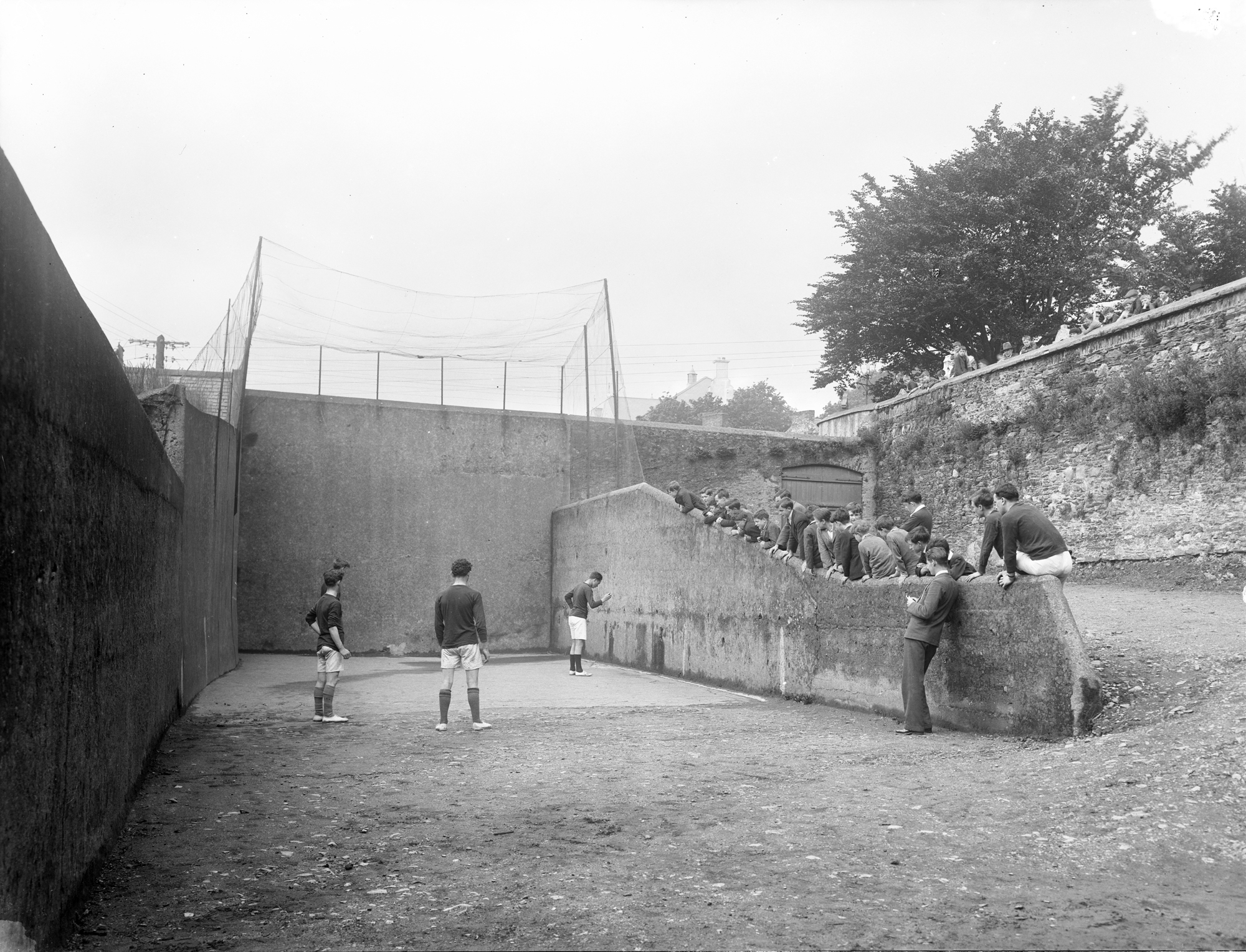
Rules
Handball is played in a court, or “alley”. Originally, an alley measuring 60 feet by 30 feet was used with a front wall of 30 feet, off which the ball must be struck.
A smaller alley was also introduced, measuring 40 feet by 20 feet with a front wall 20 ft high. The first alley of this size was built in Ireland in 1969. This smaller size is now the standard in the international version of the game, but both alleys are still used in the Gaelic game, with two separate championships run by the GAA in the two codes.
The objective of a game is to score a set total of points before your opponent does. Points are only scored by the person serving the ball. In other words, if a player wins a rally but did not serve at the start of that rally they only win the right to serve, and thus the chance to score after a subsequent rally. The serving player has two opportunities to hit the ball, from the “service area” (between the two parallel lines), off the “front wall” and across the “short line” (which is located exactly halfway down the court from the front wall).
Players take turns at hitting the ball off the “front wall” before the ball bounces twice on the floor of the court following their opponent’s previous shot. Most handball games take place in a four-walled court but there are also three-walled and one-wall versions of the game.

Associations
GAA Handball are the governing body for Handball in Ireland, with the game also being played in strongholds worldwide such as USA, Canada, Mexico, Puerto Rico, UK, and Spain; as well as emerging nations Holland, Italy, Belgium, Argentina and Ecuador to name but a few. GAA Handball Ireland are, subject to the overall control of the G.A.A. Central Council, responsible for the preservation of the national game of handball. The National Office is based in Croke Park, Dublin.
Despite being a small nation, Ireland are one of the elite Handball nations, with an array of World Men’s & Ladies Open Champions down through the years. In fact, we currently boast both titles, as Cavan’s Paul Brady remains the 4 time consecutive Men’s Champion, and is arguably the best player the game has ever produced, whilst Antrim’s Aisling Reilly holds the Ladies crown.
Gaelic football (Irish: Peil Ghaelach; short name Peil or Caid), commonly referred to as football or Gaelic, is an Irish team sport. It is played between two teams of 15 players on a rectangular grass pitch. The objective of the sport is to score by kicking or punching the ball into the other team’s goals (3 points) or between two upright posts above the goals and over a crossbar 2.5 metres (8.2 ft) above the ground (1 point).
Players advance the football, a spherical leather ball, up the field with a combination of carrying, bouncing, kicking, hand-passing, and soloing (dropping the ball and then toe-kicking the ball upward into the hands). In the game, two types of scores are possible: points and goals. A point is awarded for kicking or hand-passing the ball over the crossbar, signalled by the umpire raising a white flag. A goal is awarded for kicking the ball under the crossbar into the net, signalled by the umpire raising a green flag. Positions in Gaelic football are similar to that in other football codes, and comprise one goalkeeper, six backs, two midfielders, and six forwards, with a variable number of substitutes.
History
While Gaelic football as it is known today dates back to the late 19th century, various kinds of football were played in Ireland before this time. The first legal reference to football in Ireland was in 1308, when John McCrocan, a spectator at a football game at Novum Castrum de Leuan (the New Castle of the Lyons or Newcastle) was charged with accidentally stabbing a player named William Bernard. A field near Newcastle, South Dublin is still known as the football field. The Statute of Galway of 1527 allowed the playing of “foot balle” and archery but banned “‘hokie’—the hurling of a little ball with sticks or staves” as well as other sports.
By the 17th century, the situation had changed considerably. The games had grown in popularity and were widely played. This was due to the patronage of the gentry. Now instead of opposing the games it was the gentry and the ruling class who were serving as patrons of the games. Games were organised between landlords with each team comprising 20 or more tenants. Wagers were commonplace with purses of up to 100 guineas (Prior, 1997).
The earliest record of a recognised precursor to the modern game date from a match in County Meath in 1670, in which catching and kicking the ball was permitted.

Rules
Playing field
A Gaelic pitch is similar in some respects to a rugby pitch but larger. The grass pitch is rectangular, stretching 130–145 metres (142–159 yards) long and 80–90 m (87–98 yd) wide. There are H-shaped goalposts at each end, formed by two posts, which are usually 6–7 metres (20–23 feet) high, set 6.5 m (21 ft) apart, and connected 2.5 m (8.2 ft) above the ground by a crossbar. A net extending behind the goal is attached to the crossbar and lower goal posts. The same pitch is used for hurling; the GAA, which organises both sports, decided this to facilitate dual usage. Lines are marked at distances of 13 metres, 20 metres, and 45 metres (65 m in hurling) from each end-line. Shorter pitches and smaller goals are used by youth teams.
Duration
The majority of adult football and all minor and under-21 matches last for 60 minutes, divided into two halves of 30 minutes, with the exception of senior inter-county games, which last for 70 minutes (two halves of 35 minutes). Draws are decided by replays or by playing 20 minutes of extra time (two halves of 10 minutes). Juniors have a half of 20 minutes or 25 minutes in some cases. Half-time lasts for about 5 or 10 minutes.
Teams
Teams consist of fifteen players (a goalkeeper, two corner backs, a full back, two wing backs, a centre back, two mid fielders, two wing forwards, a centre forward, two corner forwards and a full forward) plus up to fifteen substitutes, of which six may be used. As for younger teams or teams that do not have enough players for fifteen aside, it is not uncommon to play thirteen aside (the same positions except without the full back and the full forward). Each player is numbered 1–15, starting with the goalkeeper, who must wear a jersey colour different from that of his or her teammates. Up to 15 substitutes may be named on the team sheet, number 16 usually being the reserve goalkeeper.
Positions
Ball
The ball used for a match, made by Irish company O’Neills
The game is played with a round leather football made of 18 stitched leather panels, similar in appearance to a traditional volleyball (but larger), with a circumference of 68–70 cm (27–28 in), weighing between 480–500 g (17–18 oz) when dry. It may be kicked or hand passed. A hand pass is not a punch but rather a strike of the ball with the side of the closed fist, using the knuckle of the thumb.
Mark
In 2017, the GAA introduced the ‘mark’ across the board in Gaelic football. Similar to the mark in Australian rules football, a player who catches the ball from a kick-out is awarded a free kick. The rule in full states: “When a player catches the ball cleanly from a Kick-Out without it touching the ground, on or past the 45 m line nearest the Kick Out point, he shall be awarded ‘a Mark’ by the Referee. The player awarded a ‘Mark’ shall have the options of (a) Taking a free kick or (b) Playing on immediately.” In comparison, the Australian rules equivalent requires the ball not to have touched the ground and for the kick to have travelled at least 15 metres. In the experimental rules of 2019 a player can now also call a mark inside the opposition’s 45-metre line after a clean catch from a kick played over 20 metres from outside the 45 metre line that doesn’t touch the ground or any other player.
Types of fouls
There are three main types of fouls in Gaelic Football, which can result in the ball being given to the other team, a player being cautioned, a player being removed from the field, or even the game being terminated.
Technical fouls
The following are considered technical fouls (“fouling the ball”):
- Going five steps without releasing, bouncing or soloing the ball (soloing involves kicking the ball into one’s own hands)
- Bouncing the ball twice in a row (It may be soloed continuously)
- Changing hands: Throwing the ball from your right hand to left or vice versa (legal in the ladies’ game)
- Throwing the ball (it may be “hand-passed” by striking with the fist).
- Hand passing a goal. To hand pass a ball with an open palm there must be a clear striking action (the ball may be punched over the bar from up in the air, but not into the goal).
- Picking the ball directly off the ground (it must be scooped up into the hands by the foot). However, in ladies’ Gaelic football the ball may be picked up directly.
- Square ball is an often controversial rule: “If, at the moment the ball enters the small square, there is already an attacking player inside the small rectangle, then a free out is awarded.” As of 2012 square balls are only counted if the player is inside the square when the ball is kicked from a free or set piece. An opposing player is allowed in the square during open play.
Aggressive fouls
Aggressive fouls are physical or verbal fouls committed by a player against an opponent or the referee. The player can be cautioned (shown a yellow card), ordered off the pitch without a substitute (red card), or (beginning 1 January 2014) ordered off the pitch with a substitution (black card).
Dissent
A dissent foul is a foul where a player fails to comply with the officials’ judgment and/or instructions. The player can be cautioned (shown a yellow card), ordered off the pitch without a substitute (red card), the free kick placement moved 13 m further down-field, or in certain circumstances, the game can be terminated. The following are considered dissent fouls:
- To challenge the authority of a referee, umpire, linesman or sideline official.
- To fail to comply with a referee’s instruction to use a mouth guard.
- To refuse to leave the field of play, on the instruction of the referee, for attention, after an injury involving bleeding.
- To show dissent with the referee’s decision to award a free kick to the opposing team.
- To refuse to leave the field of play when ordered off (red card) or rejoin the game after being ordered off.
- A team or player(s) leaving the field without the referee’s permission or refusing to continue playing.
Scoring
A player from a Canada GAA club shoots for goal
If the ball goes over the crossbar, a point is scored and a white flag is raised by an umpire. A point is scored by either kicking the ball over the crossbar, or fisting it over, in which case the hand must be closed while striking the ball. If the ball goes below the crossbar, a goal, worth three points, is scored, and a green flag is raised by an umpire. A goal is scored by kicking the ball into the net, not by fist passing the ball into it. However, a player can strike the ball into the net with a closed fist if the ball was played to him by another player or came in contact with the post/crossbar/ground prior to connection. The goal is guarded by a goalkeeper. Scores are recorded in the format Goal Total-Point Total. To determine the score-line goals must be converted to points and added to the other points. For example, in a match with a final score of Team A 0–21 Team B 4–8, Team A is the winner with 21 points, as Team B scored only 20 points (4 times 3, plus 8).
Tackling
The level of tackling allowed is less robust than in rugby.
Shoulder to shoulder contact and slapping the ball out of an opponent’s hand are permitted, but the following are all fouls:
- Blocking a shot with the foot
- Pulling an opponent’s jersey
- Pushing an opponent
- Sliding tackles
- Striking an opponent
- Touching the goalkeeper when he/she is inside the small rectangle
- Tripping
- Using both hands to tackle
- Wrestling the ball from an opponent’s hands
Restarting play
- A match begins with the referee throwing the ball up between the four mid fielders.
- After an attacker has put the ball wide of the goals or scored a point or a goal, the goalkeeper may take a kick out from the ground at the 13 m line. All players must be beyond the 20 m line. However, in the 2019 experimental rules (rules tested in pre-season competitions), kick-outs must be taken from the 20-metre line.
- After a defender has put the ball wide of the goals, an attacker may take a “45” from the ground on the 45 m line, level with where the ball went wide.
- After a player has put the ball over the sideline, the other team may take a sideline kick at the point where the ball left the pitch. It may be kicked from the ground or the hands. The player who is taking the sideline kick must not pass the boundary line while taking.
- After a player has committed a foul, the other team may take a free kick (usually shortened to “free” in reports/commentaries) at the point where the foul was committed. It may be kicked from the ground or the hands.
- If a player has been fouled while passing the ball, the free may be taken from the point where the ball landed.
- After a defender has committed a foul inside the large rectangle, the other team may take a penalty kick from the ground from the centre of the 11 m line. Only the goalkeeper may guard the goals.
- If many players are struggling for the ball and it is not clear who was fouled first, the referee may choose to throw the ball up between two opposing players.
Officials
A football match is overseen by up to eight officials:
- The referee
- Two linesmen
- Sideline official/Standby linesman (often referred to as “fourth official”; inter-county games only)
- Four umpires (two at each goal)
The referee is responsible for starting and stopping play, recording the score, awarding frees and booking and sending off players.
Linesmen are responsible for indicating the direction of line balls to the referee.
The fourth official is responsible for overseeing substitutions, and also indicating the amount of stoppage time (signalled to him by the referee) and the players substituted using an electronic board.
The umpires are responsible for judging the scoring. They indicate to the referee whether a shot was: wide (spread both arms), a 45 m kick (raise one arm), a point (wave white flag), square ball (cross arms) or a goal (wave green flag). A disallowed score is indicated by crossing the green and white flags.
Other officials are not obliged to indicate any misdemeanours to the referee; they are only permitted to inform the referee of violent conduct they have witnessed that has occurred without the referee’s knowledge. A linesman/umpire is not permitted to inform the referee of technical fouls such as a “double bounce” or an illegal pick-up of the ball. Such decisions can only be made at the discretion of the referee.
Equipments
The ball used for a match, made by Irish company O’Neills
The game is played with a round leather football made of 18 stitched leather panels, similar in appearance to a traditional volleyball (but larger), with a circumference of 68–70 cm (27–28 in), weighing between 480–500 g (17–18 oz) when dry. It may be kicked or hand passed. A hand pass is not a punch but rather a strike of the ball with the side of the closed fist, using the knuckle of the thumb.
Mark
In 2017, the GAA introduced the ‘mark’ across the board in Gaelic football. Similar to the mark in Australian rules football, a player who catches the ball from a kick-out is awarded a free kick. The rule in full states: “When a player catches the ball cleanly from a Kick-Out without it touching the ground, on or past the 45 m line nearest the Kick Out point, he shall be awarded ‘a Mark’ by the Referee. The player awarded a ‘Mark’ shall have the options of (a) Taking a free kick or (b) Playing on immediately.” In comparison, the Australian rules equivalent requires the ball not to have touched the ground and for the kick to have travelled at least 15 meters.

Associations
Football Association of Ireland.
Footvolley (Portuguese: Futevôlei, IPA: [futʃⁱˈvolej] in Brazil, Futevólei IPA: [ˌfutɨˈvɔlɐj] in Portugal) is a sport which combines aspects of beach volleyballand association football.
Footvolley was created by Octavio de Moraes in 1965 in Brazil. Footvolley combines field rules that are based on those of beach volleyball with ball-touch rules taken from association football. Essentially footvolley is beach volleyball except players are not allowed to use their hands and a footballreplaces the volleyball.
History
Foot volley was created by Octavio de Moraes in 1965 in Rio de Janeiro‘s Copacabana Beach. The game of foot volley was first called ‘pevoley’, literally meaning “foot volley”, but that name was discarded in favor of”futevôlei”. Foot volley started in Rio de Janeiro, according to one player because football was banned on the beach, but volleyball courts were open. The sport had spread to Recife, Salvador, Brasília, Goiânia, Santos, and Florianópolis by the 1970s.
Teams of foot volley had five a side at first. Due to the skill level of the foot volley athletes (nearly all were professional football players), the ball would rarely drop. The players began lowering the number of players on each side, eventually settling on 2 versus 2, which is still in use today.
In recent years, professional football players have taken up foot volley in both promotional events and celebrity matches. Some notable Brazilian footballers who have played (or still play) foot volley are: Romário, Edmundo, Ronaldo, Ronaldinho Gaúcho, Júnior, and Edinho (1982 & 1986 National Team)
The first International Foot volley event to occur outside of Brazil was in 2003 by the United States Foot Volley Association on Miami Beach at the 2003 Fitness Festival. This event led to international players and teams in pursuit of federation status. A tournament was held during the 2016 Summer Olympics in Rio, as a demonstration sport.

Rules
Footvolley combines field rules that are based on those of beach volleyball with ball-touch rules taken from association football. Essentially footvolley is beach volleyball except players are not allowed to use their hands and a football replaces the volleyball.
International rules
Points are awarded if the ball hits the ground in the opponent’s court, if the opponents commit a fault, or if they fail to return the ball over the net. Scoring is done using the rally point system (new volleyball rules). Match scoring is usually up to the event organizer’s discretion. Generally speaking, matches are one set to 18 points; or best of three sets to 15 points (with the third set to 11 points). The court is 29.5 feet x 59 ft (old beach volleyball). The height of the net varies based on the competition. The Official International Rule for the net height set is 2.2 meters or 7 feet 2 inches for the men’s competition. For the women’s competition, the height of the net should be set at 2 meters or 6 feet 6 inches.
Equipments

The ball
The footvolley ball is heavier than a beach volleyball and a little different from a soccer ball. The extra weight and the fact that is has less air in it makes it more predictable in windy conditions. The most commonly used ball is the Mikasa FT-5 or FT-5 Pro Ball.

The court
Footvolley is meant to be played at the beach but it can be played anywhere and on most any surface. During winter some nations play indoor on hard court or sand. The size of a normal sand court in Europe is 8 meters x 16 meters. In Brazil and other countries, it is common to play 9 meters x 18 meters.
The net is normally 2.20 meters high in Europe, however, this varies from tournament to tournament and country to country. The most important thing is to agree on a hight and focus on playing footvolley.


Equipment
The only equipment you need to play footvolley is a pair of shorts and a t-shirt. You kick the ball barefoot. There have been observations of people playing with their socks on but this has not been confirmed 🙂

The body parts
The chest: One of the most important and most difficult part to use. The chest is used for receiving the ball and to lay up the ball. Takes some time to master.
The feet: You play barefoot so you are completely reliant on your technique. This is also the most used body part.
The head: This is your best attack weapon and also great to use to lay up the ball (if you do not master the chest yet). Attack long or short, and trick your opponent to think you are doing the opposite.
The knee/thigh: If you have to you can use the knee or thigh. Some people swear to it, but others don´t like it. It`s like religion.
The shoulders: A lot of players are really good at using their shoulders, either for laying up the ball or even attacking. If you struggle using your chest, the shoulders are a good alternative.
The bottom of your foot: To do a shark attack you have to jump with your feet above the net and strike the ball with the bottom of your foot. It is not recommended to try this the first time you play footvolley.
The hands and arms: This is a no no and you will loose the point. Using your hands is too easy.
The rest of the body: Be creative and you can use pretty much any part of your body (except hands and arms). How about using your back, your ass, your heels, your shins or even your face. Use it if it is necessary to win a point.

The serve
To be able to serve the ball from the ground you have to build a small pile of sand and put the ball on top of it. The most common is to kick it with the inside of your foot. Avoid kicking the sand first.
Associations
National Footvolley Association
Ghana Footvolley Association
Footvolley Association of India
Five-pin billiards or simply five-pins or 5-pins (Italian: [biliardo dei] cinque birilli; Spanish: [billar de] cinco quillas), is today usually a carom billiards form of cue sport, though sometimes still played on a pocket table. In addition to the customary three balls of most carom games, it makes use of a set of five upright pins (skittles) arranged in a “+” pattern at the center of the table. The game is popular especially in Italy (where it originated) and Argentina, but also in some other parts of Latin America and Europe, with international, televised professional tournaments (for the carom version only). It is sometimes referred to as Italian five-pins or Italian billiards (Italian: biliardo all’italiana), or as italiana (in Italian and Spanish). A variant of the game, goriziana or nine-pins, adds additional skittles to the formation. A related pocket game, with larger pins, is played in Scandinavia and is referred to in English as Danish pin billiards, with a Swedish variant that has some rules more similar to the Italian game.
History
Until the late 1980s, the game (with some rules differences) was a form of pocket billiards, known in English as Italian skittle pool, and was principally played in pubs, with an object ball that was smaller than the two cue balls. Professional and regulated amateur play today exclusively uses pocketless tables and equal-sized balls. Professional competition began in 1965, and play is centered in billiard parlors, with players competing in provincial, regional, and national federations. The pocket version is still favored by some in amateur play.
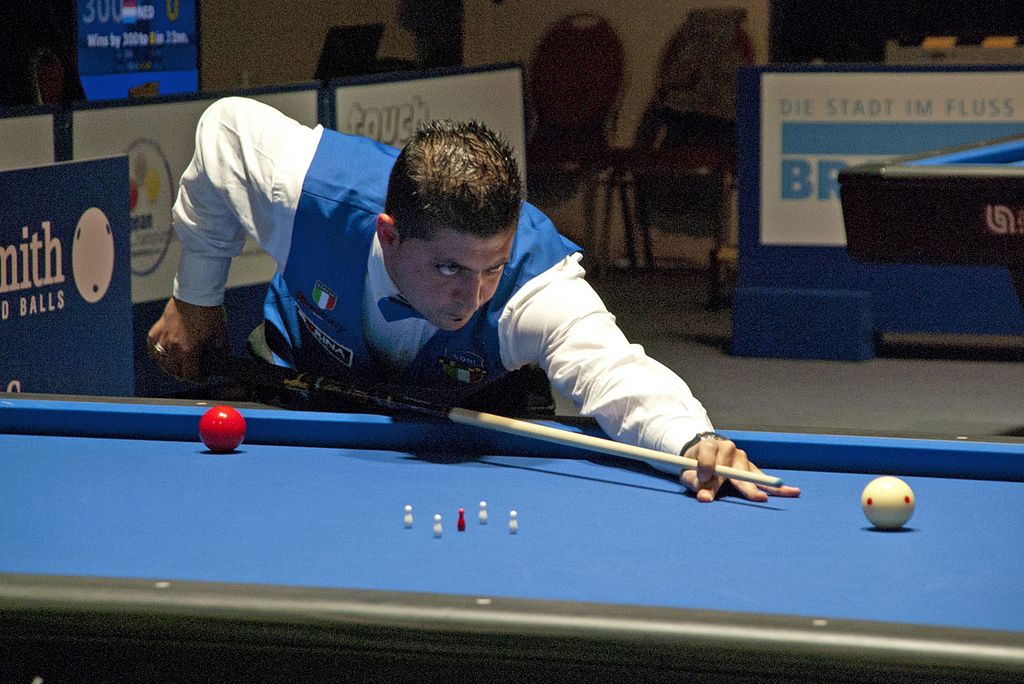
Rules
- Though there are variants in Central and South America, the Italian five-pins rules are the best codified. Because the Italian-rules championships organized by the Italian Federation of Billiard Sport (FIBiS) are international, televised events, and often hosted outside of Italy, the FIBiS rules are the global de facto standard, and have been incorporated into the rules promulgated by the Union Mondiale de Billard.
Object
The goal of the game is to earn a required number of points, before one’s opponent does, by using one’s cue ball to cause the opponent’s cue ball to knock over pins (and to not do so with one’s own cue ball), and by contacting the red object ball with either cue ball, after one’s own cue ball has contacted that of the opponent, and/or by causing the object ball to knock over pins, again after one’s own cue ball has contacted that of the opponent.
Play
The game is played by two players or by two teams (a pair of doubles partners most commonly, but also larger teams). Determining who goes first can be done by any means (lag usually, but also coin toss, tournament stipulations about player order, etc.). Each player or team is assigned one of the two cue balls; this is the only cue ball they may hit with the cue stick. The first player or team always uses the (plain) white cue ball, the opponent the other ball. Unlike in many games, shots are always taken in rotation – the same player or team never shoots twice in a row even if they have scored (other than if the opponent fouled before actually shooting when their turn came up, such as by moving one of the balls accidentally). Play continues until one player or team wins by being the first to achieve or exceed a specific number of points (usually 50 or 60), either agreed upon beforehand by the players, or set by tournament organizers. In informal play, the number is often lower, such as 25.
In order to score, the incoming player or team must stroke the assigned cue ball (sometimes called the battente or “clapper”) to carom off the opponent’s cue ball (sometimes called the “receiver”)—usually directly, but off a cushion is permitted and very common—with the goal of secondarily having the opponent’s cue ball, directly or by way of rebounding off a cushion, next hit the pins and/or the red object ball (sometimes called the pallino (“bullet”) or “jack”, terms common to several other games, such as bocce).
Unlike in the major carom game three-cushion billiards, there is no requirement to hit one or more cushions at any time.
Scoring
Knocking over pins, by any of the acceptable prescribed manners, earns cumulative points as follows:
- Each white pin is worth two points.
- The red pin is worth four points, if white pins were also knocked over.
- The red pin is worth 10 points, if it is the only pin knocked down (by the ball going between the set of pins and narrowly missing all of the whites). Until 2013, this feat was worth eight points.
- Knocking over pins with the object ball without hitting the opponent’s cue ball first, or with one’s own cue ball, does not earn the shooter any points, and in the latter case is a foul that awards points to the opponent.
The acceptable means of knocking over pins include any that result from hitting the opponent’s object ball first with one’s own, and not hitting the pins with one’s own cue ball. For example, one can simply send the opponent’s cue ball into the pins, send the opponent’s cue ball into the red object ball and have the object ball hit the pins, or hit the opponent’s cue ball and then the object ball with one’s own cue ball and send the object ball into the pins.
The object ball itself is also worth points:
- If struck by the opponent’s cue ball (after the shooter strikes the opponent’s cue ball with his/her own), it is worth 3 points (this is known as a casin or in broader terminology a combination shot).
- If struck by the shooter’s cue ball (after the shooter strikes the opponent’s cue ball with his/her own), it is worth 4 points (this is considered a true billiard/carom or carambola in this game’s nomenclature).
- If both a casin and a carambola are achieved in the same shot, only the earliest of the two to occur earns points; they are not combined, though either may still combine with points scored from pins.
Fouls
The game has some fouls unique to its ruleset, as well as the usual fouls of billiards games. All fouls nullify any points the shooter would have earned on the foul shot, and award the opponent free points (which vary depending on the type of foul).
- Knocking over pins with the shooter’s own cue ball, after having hit the opponent’s cue ball—this foul awards the point values of those pins to the opponent. (In player jargon this is referred to as “drinking” one’s points, as they are lost like the contents of an empty glass); opponent does not receive ball-in-hand. (Note: Knocking over pins with the red object ball on an otherwise legal shot is not a foul, and has no effect on the score (i.e., provided that the opponent’s cue ball was struck first by one’s own cue ball, either cue ball can be used to drive the object ball into the pins, provided that both cue balls make initial contact with each other.)
- Failure to hit the opponent’s cue ball at all with the shooter’s own—opponent receives ball-in-hand plus 2 points.
- Hitting the pins directly with the shooter’s cue ball before any contact with the opponent’s cue ball; opponent receives ball-in-hand plus 2 points (the erstwhile value of the knocked-over pins is not calculated at all).
- Hitting the object ball directly with the shooter’s cue ball before any contact with the opponent’s cue ball; opponent receives ball-in-hand plus 2 points.
- Knocking any ball off the table; opponent receives ball-in-hand plus 2 points (the ball is spotted in its starting position, or as close to this position as possible, unless it was the now-incoming opponent’s cue ball, which as noted is in-hand).
- Jumping the cue ball entirely or partially over an interfering ball; opponent receives ball-in-hand plus 2 points.
- Standard billiards-wide fouls also apply and yield ball-in-hand plus 2 points (moving balls accidentally, double-hitting the cue ball, push shots, etc.
Because of the particularity of the first-listed foul above, players watch the game carefully, and tournaments have referees. Any points earned by the shooter on a foul shot are awarded to the opponent (except when, as noted above, pin value is not calculated). An extra 2 points go to the opponent if the object ball was correctly hit on an otherwise foul stroke (in addition to being awarded the 3 or 4 points the object ball was worth). Ball-in-hand on fouls is not entirely free; the incoming shooter after a ball-in-hand foul can only place his/her cue ball on the opposite half of the table from the other cue ball, and must shoot from the end (short part) not side of the table. The cue ball does not have to be placed in the kitchen (behind the head string), just within the proper half of the table.
Equipments
The regulation game is played on a pocketless normal 5 by 10 ft (1.5 by 3.0 m) carom billiards table, with standardized playing surface dimensions of 1.42 by 2.84 m (approximately 4-2/3 by 9-1/3 ft), plus/minus 5 mm (approx. 0.2 in), from cushion to cushion. The slate bed of the table must be heated to about 5 degrees C (9 degrees F) above room temperature, which helps to keep moisture out of the cloth to aid the balls rolling and rebounding in a consistent manner, and generally makes the table play “faster”. In the informal play, an unheated table is often used.
Like most other carom games, five-pins requires three standard carom billiard balls of equal diameter: a red object ball, a cue ball for the first player or team, and another cue ball for the second player or team. Ball sets vary by manufacturer, but typically are white for first and yellow for second (they may be plain or spotted), or plain white for first and white with a spot for second. The balls are 61.5 mm (2-3/8 [2.4] in) in diameter and weigh between 205 and 220 g (7.2 and 7.8 oz); 7.5 oz is average). The white (or plain white) cue ball is given to the starting player, who may place it anywhere on the head side of the table (without disturbing the pins)—i.e., anywhere unobstructed between the head rail and the center string. The red object ball is placed at the center of the foot spot (i.e., the intersection of the foot string and the long string. The yellow (or spotted white) cue ball of the opponent is placed on the long string, in a position that can be labelled the “foot rail spot”, 10 cm (approx. 4 in) from the foot rail.
As the name implies, the game makes use of five upright pins called skittles in English (so-called since at least 1634), birilli (singular birillo) in Italian and quillas in Spanish, which look like miniature bowling pins, 25 mm (0.98 in) tall, and with 7 mm (0.28 in) round, flat-bottomed bases. There are traditionally four white pins, and one red. The red pin is placed on the center spot (the exact middle of the table both lengthwise and widthwise), and the four white pins are placed equidistant from the red in a square diamond pattern around it. Two whites are aligned along the center string with the head and foot spots, as well as the rail diamonds in the center of the head and foot rails, and with the red object ball, and red pin. Meanwhile, the other two whites are placed on the center string, aligned with the diamonds in the center of the long rails, and again with the red pin. The whites are spaced just far enough away from the red that a cue ball can pass between the pins without touching any of them. The final pattern looks like a “+” (plus sign), as shown in the adjacent diagram. This arrangement of pins on the table is referred to as the “castle”. Tables have the precise castle positions for the pins, and for the starting positions of the balls, permanently marked, as they must be placed back into position before every shot if any have been knocked over or moved.
Each player uses a cue stick to shoot the appropriate cue ball; average cue length is 140 cm (about 55 in.) A bridge stick (rest) may be used to reach long shots.
Associations
Women’s Professional Billiard Association (WPBA).
World Pool-Billiard Association.
Field handball (also known as outdoor handball or grass handball) was a form of what is now handball and was played at the 1936 Summer Olympics in Berlin.
The sport is played on a grass field (similar to an Association football field) between 90 and 110 meters long, 55 to 65 meters wide. The field has two parallel lines 35 metres from the goal line, which divides the field into 3 sections; each section can have up to 6 players of each team. The goal area is a semicircular line with a 13-metre radius and the penalty mark at 14 metres from the goal. The goal is 7.32 meters wide and 2.44 meters high.
The game is played with the same ball as the indoor type by two teams of 11 players (plus 2 reserves) and two periods of 30 minutes each.
Indoor handball gradually grew in popularity to replace field handball and the last field handball World Championship was played in 1966.
The grandfather of the singer Andy Bell, Eugenius Bell, was one of England’s most famous field handball players.
History
There is evidence of ancient Roman women playing a version of handball called expulsim ludere. There are records of handball-like games in medieval France, and among the Inuit in Greenland, in the Middle Ages. By the 19th century, there existed similar games of håndbold from Denmark, házená in the Czech Republic, handbol in Ukraine, and torball in Germany.
The team handball game of today was codified at the end of the 19th century in northern Europe: primarily in Denmark, Germany, Norway and Sweden. The first written set of team handball rules was published in 1906 by the Danish gym teacher, lieutenant and Olympic medalist Holger Nielsen from Ordrup grammar school, north of Copenhagen. The modern set of rules was published on 29 October 1917 by Max Heiser, Karl Schelenz, and Erich Konigh from Germany. After 1919 these rules were improved by Karl Schelenz. The first international games were played under these rules, between Germany and Belgium by men in 1925 and between Germany and Austria by women in 1930.
In 1926, the Congress of the International Amateur Athletics Federation nominated a committee to draw up international rules for field handball. The International Amateur Handball Federation was formed in 1928 and later the International Handball Federation was formed in 1946.
Men’s field handball was played at the 1936 Summer Olympics in Berlin. During the next several decades, indoor handball flourished and evolved in the Scandinavian countries. The sport re-emerged onto the world stage as team handball for the 1972 Summer Olympics in Munich. Women’s team handball was added at the 1976 Summer Olympics in Montreal. Due to its popularity in the region, the Eastern European countries that refined the event became the dominant force in the sport when it was reintroduced.
The International Handball Federation organised the men’s world championship in 1938 and every four (sometimes three) years from World War II to 1995. Since the 1995 world championship in Iceland, the competition has been held every two years. The women’s world championship has been held since 1957. The IHF also organizes women’s and men’s junior world championships. By July 2009, the IHF listed 166 member federations – approximately 795,000 teams and 19 million players.
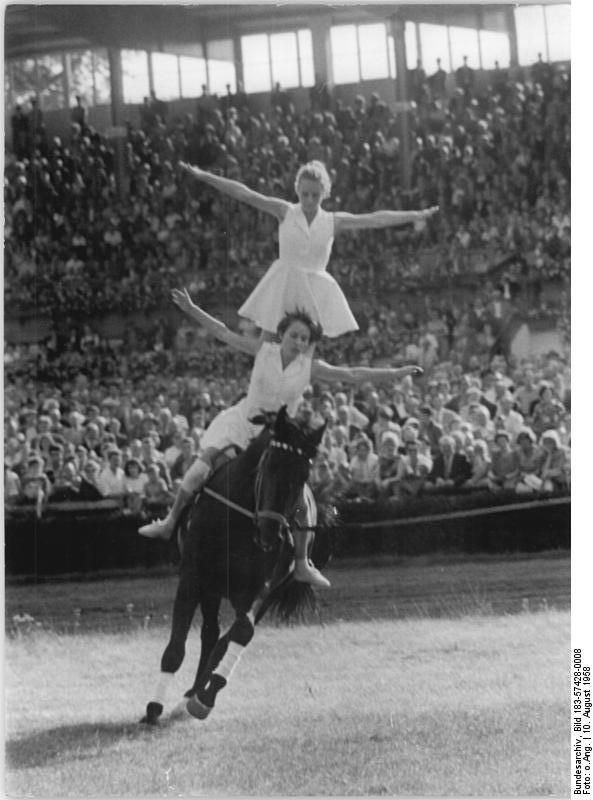
Rules
- A match consists of two periods of 30 minutes each.
- Each team consists of 7 players; a goalkeeper and 6 outfield players.
- Outfield players can touch the ball with any part of their body that is above the knee.
- Once a player receives possession, they can pass, hold possession or shoot.
- If a player holds possession, they can dribble or take three steps for up to three seconds without dribbling.
- Only the goalkeeper is allowed to come into contact with the floor of the goal area.
- Goalkeepers are allowed out of the goal area but must not retain possession if they are outside the goal area.
Equipments
The standard handball games feature 7 players on each side, six outfield players and one goalkeeper. A team will also have 7 substitutes, which can be used on a rolling basis and with no need to notify the referee.
There is a semi-circle area around each goal area, sometimes referred to as the crease or the zone. There is also a dashed semi-circle line which lies 9 metres from goal, which is the free throw line.
The ball must be made from leather or synthetic material and it must be of a size to fit in the hand of a player. This means that there are three regulation sizes of handball. One for over 8s where the ball has a circumference of 50-52 cm, a II for women and males aged 12 to 16 where the ball has a circumference of 54-56cm and a III for males aged 16 and over, with a circumference of 58-60cm.
A handball game can be played with a court, two goals, and a ball. Official games will see teams wear uniforms.
Associations
Handball teams are usually organized as clubs. On a national level, the clubs are associated in federations which organize matches in leagues and tournaments.
International body
The International Handball Federation (IHF) is the administrative and controlling body for international handball. Handball is an Olympic sport played during the Summer Olympics.
The IHF organizes world championships, held in odd-numbered years, with separate competitions for men and women. The IHF World Men’s Handball Championship 2017 title holders are France. The IHF 2017 Women’s World Championship title holders are also France.
The IHF is composed of five continental federations: Asian Handball Federation, African Handball Confederation, Pan-American Team Handball Federation, European Handball Federation and Oceania Handball Federation. These federations organize continental championships held every other second year. Handball is played during the Pan American Games, All-Africa Games, and Asian Games. It is also played at the Mediterranean Games. In addition to continental competitions between national teams, the federations arrange international tournaments between club teams.
International competitions
- Pan American Championship (men, women), Ca. Handball Championship
National competitions
Europe
- Austria: Handball Liga Austria, Bundesliga Männer(men), Women Handball Austria, Bundesliga Frauen (women), Österreichischer Cup (men, women) https://web.archive.org/web/20141218002607/http://oehb.sportlive.at/
- Belgium: Bene League Handball(shared competition with the Netherlands)
- Bosnia and Herzegovina: Handball Championship of Bosnia and Herzegovina
- Croatia: Croatian First League of Handball
- Czech Republic: Zubr extraliga
- Denmark: Damehåndboldligaen, Jack & Jones Ligaen
- England: England Handball Association
- France: Ligue Nationale de Handball
- Germany: Handball-Bundesliga
- Greece: Greek Men’s handball championship
- Hungary: Nemzeti Bajnokság I(men), Nemzeti Bajnokság I (women)
- Iceland: Olís deildin
- Israel: Ligat Winner
- Macedonia: Macedonian Handball Super League
- Montenegro: First League (men), First League (women), Second League (men), Second League (women)
- Netherlands: Bene League Handball(shared competition with Belgium), Eredivisie (women)
- Norway: Eliteserien (men’s handball), Eliteserien (women’s handball)
- Poland: Polish Ekstraklasa Men’s Handball League, Polish Ekstraklasa Women’s Handball League
- Portugal: Andebol 1(men), 1ª Divisão Feminino (women)
- Romania: Liga Națională(men), Liga Naţională (women)
- Scotland: Scottish Handball League
- Serbia: Serbian First League of Handball
- Slovakia: Slovenská hadzanárska extraliga
- Slovenia: Slovenian First League of Handball, Handball Cup of Slovenia
- Spain: Liga ASOBAL, División de Plata de Balonmano
- Sweden: Handbollsligan(men)/Svensk handbollselit (women)
Other
- Angola: Angola Men’s Handball League(men), Angola Women’s Handball League (women)
- Australia: Australian Handball Club Championship, Handball League Australia, Australian National Handball Championship (States)
- Tahiti (French Polynesia): Tahitian Handball League
- Turkey: Turkish Handball Super League
- United States: USA Team Handball Nationals, USA Team Handball College Nationals
- Japan Japan Handball League
- Argentina Confederación Argentina de Handball
Field archery involves shooting at targets of varying and often unmarked distance, typically in woodland and rough terrain. As well as being a sport in its own right, it can be used to improve the techniques and abilities required for bowhunting in a realistic outdoor setting. Archers sometimes refer to the additional skills required to deal with challenging terrain and lighting as “fieldcraft”.
Events are usually conducted according to the rules of either the International Field Archery Association (IFAA) or the World Archery Federation (WA). Others may be held under the rules of national organisations such as the UK’s National Field Archery Society (NFAS) and the National Field Archery Association (NFAA) in the USA.
History
The bow and arrow are known to have been invented by the end of the Upper Paleolithic, and for at least 10,000 years archery was an important military and hunting skill and features prominently in the mythologies of many cultures.
Archers, whether on foot, in chariots or on horseback were a major part of most militaries until about 1500 when they began to be replaced by firearms, first in Europe, and then progressively elsewhere.
Archery continues to be a popular sport; most commonly in the form of target archery, but in some places also for hunting.
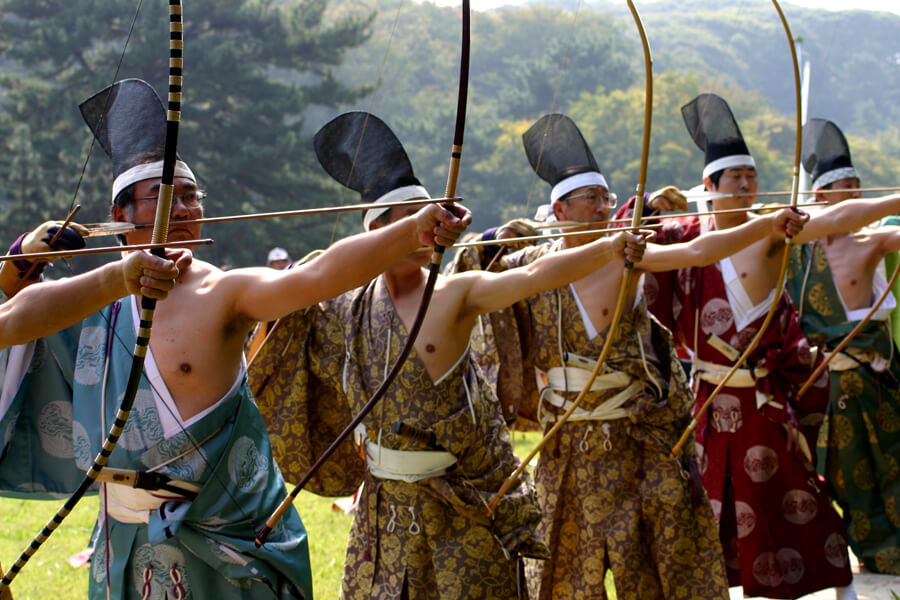
Rules
IFAA and NFAA competitions include three rounds: field, hunter, and animal. A round consists of 28 targets in two units of 14.
Field rounds are at ‘even’ distances up to 80 yards (although some of the shortest are measured in feet), using targets with a black inner ring, two white middle rings, and two black outer rings. Four face sizes are used for various distances. A score of five points is awarded for shots which hit the center spot, four for the white inner ring, and three for the outer black ring.
Hunter rounds use ‘uneven’ distances up to 70 yards (64 m). Scoring is similar to a field round, the target has an all-black face with a white bullseye. Child and youth positions for these two rounds are closer, no more than 30 and 50 yards (46 m), respectively.
Animal rounds use life-size 2D animal targets with ‘uneven’ distances reminiscent of the hunter round. The rules and scoring are also significantly different. The archer begins at the first station of the target and shoots his first arrow. If it hits, he does not have to shoot again. If it misses, he advances to station two and shoots a second arrow, then to station three for a third if needed. Scoring areas are vital (20, 16, or 12) and nonvisual (18, 14, or 10) with points awarded depending on which arrow scored first. Again, children and youth shoot from reduced range.
3D rounds use life-size models of game animals such as deer. It is most common to see unmarked distances in 3D archery, as the goal is to accurately recreate a hunting environment for competition, albeit a more loosely organized form of competition than other types of field archery. Though the goal is hunting practice, hunting tips (broadheads) are not used, as they would tear up the foam targets too much. Normal target or field tips, of the same weight as the intended broad head, are used instead.
Rules: There are four different target face sizes in field archery; 20 cm, 40 cm, 60 cm, and 80 cm. Irrespective of the round you are shooting, target faces are always set up the same, 20 cm in a block of 12 faces; three high and four across, 40 cm is set in a block of 4 faces; two across the top and two across the bottom.
Equipments
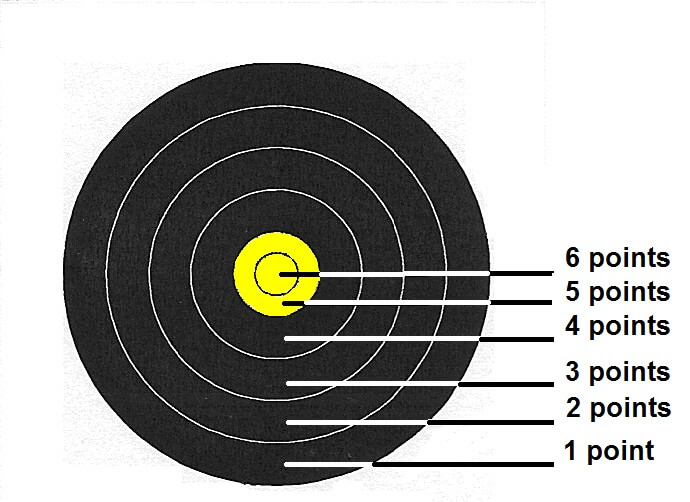
There are many different styles that you can shoot in field archery. The styles differ in terms of what bow is allowed and what accessories you can have on your bow. The options range from the traditional style (naked longbow or recurve) all the way to freestyle in which you can use any type of bow, sight, stabilizer, etc.
Associations
The C&R Committee.
The Technical Committee.
The Target Archery Committee.
The Field and 3D Archery Committee.
The Judges Committee.
The Medical & Sport Sciences Committee.
The Athletes Committee.
The Coaches Committee.
The Para-Archery Committee.
Fencing is a group of three related combat sports. The three disciplines in modern fencing are the foil, the épée, and the sabre; winning points are made through the contact with an opponent. A fourth discipline, singlestick, appeared in the 1904 Olympics but was dropped after that, and is not a part of modern fencing. Fencing was one of the first sports to be played in the Olympics. Based on the traditional skills of swordsmanship, the modern sport arose at the end of the 19th century, with the Italian school having modified the historical European martial art of classical fencing, and the French school later refining the Italian system. There are three forms of modern fencing, each of which uses a different kind of weapon and has different rules; thus the sport itself is divided into three competitive scenes: foil, épée, and sabre. Most competitive fencers choose to specialize in one weapon only.
Competitive fencing is one of the five activities which have been featured in every modern Olympic Games, the other four being athletics, cycling, swimming, and gymnastics.
History
Fencing traces its roots to the development of swordsmanship for duels and self-defense. Fencing is believed to have originated in Spain; some of the most significant books on fencing were written by Spanish fencers. Treatise on Arms was written by Diego de Valera between 1458 and 1471 and is one of the oldest surviving manuals on western fencing (in spite of the title, the book of Diego Valera was on heraldry, not about fencing) shortly before dueling came under an official ban by the Catholic Monarchs. In conquest, the Spanish forces carried fencing around the world, particularly to southern Italy, one of the major areas of strife between both nations. Fencing was mentioned in the play The Merry Wives of Windsor written sometime prior to 1602.
The mechanics of modern fencing originated in the 18th century in an Italian school of fencing of the Renaissance, and under their influence, were improved by the French school of fencing. The Spanish school of fencing stagnated and was replaced by the Italian and French schools.

Rules
- The FIE maintains the current rules used by FIE sanctioned international events, including world cups, world championships, and the Olympic Games. The FIE handles proposals to change the rules the first year after an Olympic year in the annual congress. The US Fencing Association has slightly different rules but usually adheres to FIE standards.
Equipments
Weapons
There are three weapons in modern fencing: foil, épée, and sabre. Each weapon has its own rules and strategies. Equipment needed includes at least 2 swords, a Lame (not for épée), a white jacket, underarm protector, two body and mask cords, knee-high socks, glove, and knickers.
Foil
The foil is a light thrusting weapon with a maximum weight of 500 grams. The foil targets the torso, but not the arms or legs. The foil has a small circular hand guard that serves to protect the hand from direct stabs. As the hand is not a valid target in foil, this is primarily for safety. Touches are scored only with the tip; hits with the side of the blade do not register on the electronic scoring apparatus (and do not halt the action). Touches that land outside the target area (called an off-target touch and signaled by a distinct color on the scoring apparatus) stop the action, but are not scored. Only a single touch can be awarded to either fencer at the end of a phrase. If both fencers land touches within a close enough interval of milliseconds to register two lights on the machine, the referee uses the rules of “right of way” to determine which fencer is awarded the touch, or if an off-target hit has priority over a valid hit, in which case no touch is awarded. If the referee is unable to determine which fencer has right of way, no touch is awarded.
Épée
The épée is a thrusting weapon like the foil, but heavier, with a maximum total weight of 775 grams. In épée, the entire body is a valid target. The hand guard on the épée is a large circle that extends towards the pommel, effectively covering the hand, which is a valid target in épée. Like foil, all hits must be with the tip and not the sides of the blade. Hits with the side of the blade do not register on the electronic scoring apparatus (and do not halt the action). As the entire body is a legal target, there is no concept of an off-target touch, except if the fencer accidentally strikes the floor, setting off the light and tone on the scoring apparatus. Unlike foil and sabre, épée does not use “right of way”, and awards simultaneous touches to both fencers. However, if the score is tied in a match at the last point and a double touch is scored, the point is null and void.
Sabre
The sabre is a light cutting and thrusting weapon that targets the entire body above the waist, except the weapon hand. Sabre is the newest weapon to be used. Like the foil, the maximum legal weight of a sabre is 500 grams. The hand guard on the sabre extends from hilt to the point at which the blade connects to the pommel. This guard is generally turned outwards during sport to protect the sword arm from touches. Hits with the entire blade or point are valid. As in foil, touches that land outside the target area are not scored. However, unlike foil, these off-target touches do not stop the action, and the fencing continues. In the case of both fencers landing a scoring touch, the referee determines which fencer receives the point for the action, again through the use of “right of way”.
Protective clothing
Most personal protective equipment for fencing is made of tough cotton or nylon. Kevlar was added to top level uniform pieces (jacket, breeches, underarm protector, lamé, and the bib of the mask) following the death of Vladimir Smirnov at the 1982 World Championships in Rome. However, Kevlar is degraded by both ultraviolet light and chlorine, which can complicate cleaning.
Other ballistic fabrics, such as Dyneema, have been developed that resist puncture, and which do not degrade the way that Kevlar does. FIE rules state that tournament wear must be made of fabric that resists a force of 800 newtons (180 lbf), and that the mask bib must resist twice that amount.
The complete fencing kit includes:
- Jacket
- The jacket is form-fitting, and has a strap (croissard) that passes between the legs. In sabre fencing, jackets are cut along the waist.[clarification needed] A small gorget of folded fabric is sewn in around the collar to prevent an opponent’s blade from slipping under the mask and along the jacket upwards towards the neck. Fencing instructors may wear a heavier jacket, such as one reinforced by plastic foam, to deflect the frequent hits an instructor endures.
- plastron
- plastron is an underarm protector worn underneath the jacket. It provides double protection on the side of the sword arm and upper arm. There is no seam under the arm, which would line up with the jacket seam and provide a weak spot.
- Glove
- The sword hand is protected by a glove with a gauntlet that prevents blades from going up the sleeve and causing injury. The glove also improves grip.
- Breeches
- Breeches or knickers are short trousers that end just below the knee. The breeches are required to have 10 cm of overlap with the jacket. Most are equipped with suspenders (braces).
- Socks
- Fencing socks are long enough to cover the knee; some cover most of the thigh.
- Shoes
- Fencing shoes have flat soles, and are reinforced on the inside for the back foot, and in the heel for the front foot. The reinforcement prevents wear from lunging.
- Mask
- The fencing mask has a bib that protects the neck. The mask should support 12 kilograms (26 lb) on the metal mesh and 350 newtons (79 lbf) of penetration resistance on the bib. FIE regulations dictate that masks must withstand 25 kilograms (55 lb) on the mesh and 1,600 newtons (360 lbf) on the bib. Some modern masks have a see-through visor in the front of the mask. These have been used at high level competitions (World Championships etc.), however, they are currently banned in foil and épée by the FIE, following a 2009 incident in which a visor was pierced during the European Junior Championship competition. There are foil, sabre, and three-weapon masks.
- Chest protector
- A chest protector, made of plastic, is worn by female fencers and, sometimes, by boys. Fencing instructors also wear them, as they are hit far more often during training than their students. In foil fencing, the hard surface of a chest protector decreases the likelihood that a hit registers.
- Lamé
- A lamé is a layer of electrically conductive material worn over the fencing jacket in foil and sabre fencing. The lamé covers the entire target area, and makes it easier to determine whether a hit fell within the target area. (In épée fencing the lamé is unnecessary, since the target area spans the competitor’s entire body.) In sabre fencing, the lamé’s sleeves end in a straight line across the wrist; in foil fencing, the lamé is sleeveless. A body cord is necessary to register scoring. It attaches to the weapon and runs inside the jacket sleeve, then down the back and out to the scoring box. In sabre and foil fencing, the body cord connects to the lamé in order to create a circuit to the scoring box.
- Sleeve
- An instructor or master may wear a protective sleeve or a leg leather to protect their fencing arm or leg, respectively.
- Elements of protective clothing
Traditionally, the fencer’s uniform is white, and an instructor’s uniform is black. This may be due to the occasional pre-electric practice of covering the point of the weapon in the dye, soot, or colored chalk in order to make it easier for the referee to determine the placing of the touches. As this is no longer a factor in the electric era, the FIE rules have been relaxed to allow colored uniforms (save black). The guidelines also limit the permitted size and positioning of sponsorship logos.
Grips
Electric equipment
A set of electric fencing equipment is required to participate in electric fencing. Electric equipment in fencing varies depending on the weapon with which it is used in accordance. The main component of a set of electric equipment is the body cord. The body cord serves as the connection between a fencer and a reel of wire that is part of a system for electrically detecting that the weapon has touched the opponent. There are two types: one for épée, and one for foil and sabre.
Épée body cords consist of two sets of three prongs each connected by a wire. One set plugs into the fencer’s weapon, with the other connecting to the reel. Foil and sabre body cords have only two prongs (or a twist-lock bayonet connector) on the weapon side, with the third wire connecting instead to the fencer’s lamé. The need in foil and sabre to distinguish between on and off-target touches requires a wired connection to the valid target area.
A body cord consists of three wires known as the A, B, and C lines. At the reel connector (and both connectors for Épée cords) The B pin is in the middle, the A pin is 1.5 cm to one side of B, and the C pin is 2 cm to the other side of B. This asymmetrical arrangement ensures that the cord cannot be plugged in the wrong way around.
In foil, the A line is connected to the lamé and the B line runs up a wire to the tip of the weapon. The B line is normally connected to the C line through the tip. When the tip is depressed, the circuit is broken and one of three things can happen:
- The tip is touching your opponent’s lamé (their A line): Valid touch
- The tip is touching your opponent’s weapon or the grounded strip: nothing, as the current is still flowing to the C line.
- The tip is not touching either of the above: Off-target hit (white light).
In Épée, the A and B lines run up separate wires to the tip (there is no lamé). When the tip is depressed, it connects the A and B lines, resulting in a valid touch. However, if the tip is touching your opponents weapon (their C line) or the grounded strip, nothing happens when it is depressed, as the current is redirected to the C line. Grounded strips are particularly important in Épée, as without one, a touch to the floor registers as a valid touch (rather than off-target as in Foil).
In Sabre, similarly to Foil, the A line is connected to the lamé, but both the B and C lines are connected to the body of the weapon. Any contact between your B/C line (doesn’t matter which, as they are always connected) and your opponent’s A line (their lamé) results in a valid touch. There is no need for grounded strips in Sabre, as hitting something other than your opponent’s lame does nothing.
In a professional fencing competition, a complete set of electric equipment is needed.
A complete set of foil electric equipment includes:
- An electric body cord, which runs under the fencer’s jacket on his/her dominate side.
- An electric blade.
- A conductive lamé or electric vest.
- A conductive bib (often attached to the mask).
- An electric mask cord, connecting the conductive bib and the lamé.
The electric equipment of sabre is very similar to that of foil. In addition, equipment used in sabre includes:
- A larger conductive lame.
- An electric sabre.
- A completely conductive mask.
- A conductive glove or overlay.
Épée fencers lack a lamé, conductive bib, and head cord due to their target area. Also, their body cords are constructed differently as described above. However, they possess all of the other components of a foil fencer’s equipment.
Associations
- National Collegiate Athletic Association
- International Olympic Committee
Fell running, also sometimes known as hill running, is the sport of running and racing, off-road, over upland country where the gradient climbed is a significant component of the difficulty. The name arises from the origins of the English sport on the fells of northern Britain, especially those in the Lake District. It has elements of trail running, cross country and mountain running, but is also distinct from those disciplines.
Fell races are organized on the premise that contenders possess mountain navigation skills and carry adequate survival equipment as prescribed by the organizer.
Fell running has common characteristics with cross-country running, but is distinguished by steeper gradients and upland country. It is sometimes considered as a form of mountain running, but without the smoother trails and predetermined routes often associated with mountain running.
History
The first recorded hill race took place in Scotland. King Malcolm Canmore organized a race in Braemar in 1040 or perhaps as late as 1064, reputedly to find a swift messenger. This event appears to have been a precursor to the Braemar Gathering. There is no documented connection between this event and the fell races of the 19th century.
From the 19th century, records survive of fell races taking place as a part of community fairs and games. The sport was a simple affair and was based upon each community’s values for physical ability. Fell races took place alongside other sports such as wrestling, sprint races and (especially in Scotland) heavy events such as throwing the hammer. These fairs or games events were often commercial as well as cultural, with livestock shows and sales taking place alongside music, dancing and sports. In a community of shepherds and agricultural laborers comparisons of speed and strength were interesting to spectators as a source of professional pride for competitors. The most famous of these events in England, the Grasmere Sports meeting in the Lake District, with its Guide’s Race, still takes place every year in August.
The Fell Runners Association started in April 1970 to organize the duplication of event calendars for the amateur sport. As of 2013, it administers amateur fell running in England, in affiliation with British athletics. Separate governing bodies exist for each country of the United Kingdom and each country has its own tradition of fell running, though the sport is largely the same. The most important races of the year include the Ben Nevis Race in Scotland, run regularly since 1937, and the Snowdon Race in Wales.

Rules
- RULE ONE: UKA Rules for Competition – Effective from 1st April 2008 (ISBN 978-0-9547401-0-8): Rules 1-24 apply to fell-running.
- RULE TWO: In fell-running, a veteran is a man or woman aged 40 or over on the date of the competition.
- RULE THREE: All official UKA fell races must be registered with the National Committee of the Territory or Home Country in which the event takes place. Registration with the FRA will be effected by supplying the Fixtures Secretary with relevant details of the race on the form provided and by its subsequent appearance in the Fixtures Calendar or in “The Fell runner” magazine or on the FRA Website. A nominal charge may be made to cover Calendar publication.
- RULE FOUR: “Official FRA fell races” must be advertised and decided under FRA and UKA Rules for Competition. Such advertisement may be abbreviated to read “under FRA Rules.”
- RULE FIVE: All “official FRA fell races” must be organized to comply with the FRA Safety Requirements which are printed at the front of this Calendar, copies of which are obtainable from the Fixtures Secretary on receipt of an SAE.
- RULE SIX: All competitors must obey the FRA Rules for Competition and any additional rules drawn up by the race organizers for each fell race.
- RULE SEVEN: No runner may take part in any fell race without having entered the race in accordance with the rules and procedures.
- RULE EIGHT: All competitors must ensure that if they retire from a fell race for any reason the fact is reported as soon as possible to the race officials, including those at the finish. Race organizers MUST report infringements of this rule to the FRA Secretary.
- RULE NINE: a. Team events: Runners may count in competition for their first claim fell-running club only, which may be different from their first claim road, cross-country or track club if that club does not cater for fell-running. To be eligible to count in British and English Championships, English clubs must be affiliated to England Athletics and English athletes must be registered with England Athletics OR be members of the FRA. b. Club membership: UKA Rule 5 regarding club membership and first claim status applies to all athletes. Information about the waiting period required between ceasing membership of a club and competing as a team member of another club is given in UKA Rule 5.
Equipments
Footwear: Modern fell running trainers use light, non-waterproof material to eject water and dislodge peat after traversing boggy ground. While the trainer needs to be supple, to grip an uneven, slippery surface, a degree of side protection against rock and scree (loose stones) may be provided. Rubber studs have been the mode for two decades, preceded by ripple soles, spikes and the flat soled ‘pumps’ of the fifties.
Associations
The Fell Runners Association (FRA) publishes a calendar of 400 to 500 races per year. Additional races, less publicized, are organized in UK regions.
The British Open Fell Runners Association (BOFRA) publishes a smaller calendar of races (usually 15 championship races, and other smaller events, such as galas or shows)>– mostly derived from the professional guide races – in England and Scotland and organizes a championship series.
In Scotland, all known hill races (both professional and amateur) are listed in the annual calendar of Scottish Hill Runners. In Wales, the Welsh Fell Runners Association provides a similar service.
Northern Ireland events are organized by Northern Ireland Mountain Running Association. Again, races are run on the premise that a contender possesses mountain navigational skills and carries adequate survival equipment. In Ireland, events are organized by the Irish Mountain Running Association.
The World Mountain Running Association is the governing body for mountain running and as such is sanctioned by and affiliated to the IAAF, the International Association of Athletics Federations. It organizes the World Mountain Running Championships.
There are also the continental championships such as the African Mountain Running Championships and the European Mountain Running Championships, the South American Mountain Running Championships and the North American Central American and Caribbean Mountain Running Championships.
Field lacrosse is a Canadian full contact outdoor sport played with ten players on each team. The sport originated among Native Americans, and the modern rules of field lacrosse were initially codified by Canadian William George Beers in 1867. Field lacrosse is one of three major versions of lacrosse played internationally. The other versions, women’s lacrosse (established in the 1890s) and box lacrosse (originated in the 1930s), are played under significantly different rules.
History
Lacrosse is a traditional Native American game. According to Native American beliefs, playing lacrosse is a spiritual act used for healing and giving thanks to the “Creator”. They would also play the game to resolve minor conflicts between tribes that were not worth going to war for, thus the name “little brother of war”. These games could last several days and as many as 100 to 1,000 men from opposing villages or tribes played on open plains, between goals ranging from 500 yards (460 m) to several miles apart.
The first Europeans to observe it was French Jesuit missionaries in the St. Lawrence Valley, in the 1630s The name “lacrosse” comes from their reports, which described the players’ sticks as like a bishop’s crosier—la crosse in French. The Native American tribes used various names: in the Onondaga language it was called dehuntshigwa’es (“they bump hips” or “men hit a rounded object”); da-nah-wah’uwsdi (“little war”) to the Eastern Cherokee; in Mohawk, tewaarathon (“little brother of war”); and baggataway in Ojibwe. Variations in the game were not limited to the name. In the Great Lakes region, players used an entirely wooden stick, while the Iroquois stick was longer and was laced with string, and the Southeastern tribes played with two shorter sticks, one in each hand.
In 1867, Montreal Lacrosse Club member William George Beers codified the modern game. He established the Canadian Lacrosse Association and created the first written rules for the game, Lacrosse: The National Game of Canada. The book specified field layout, lacrosse ball dimensions, lacrosse stick length, number of players, and number of goals required to determine the match winner.
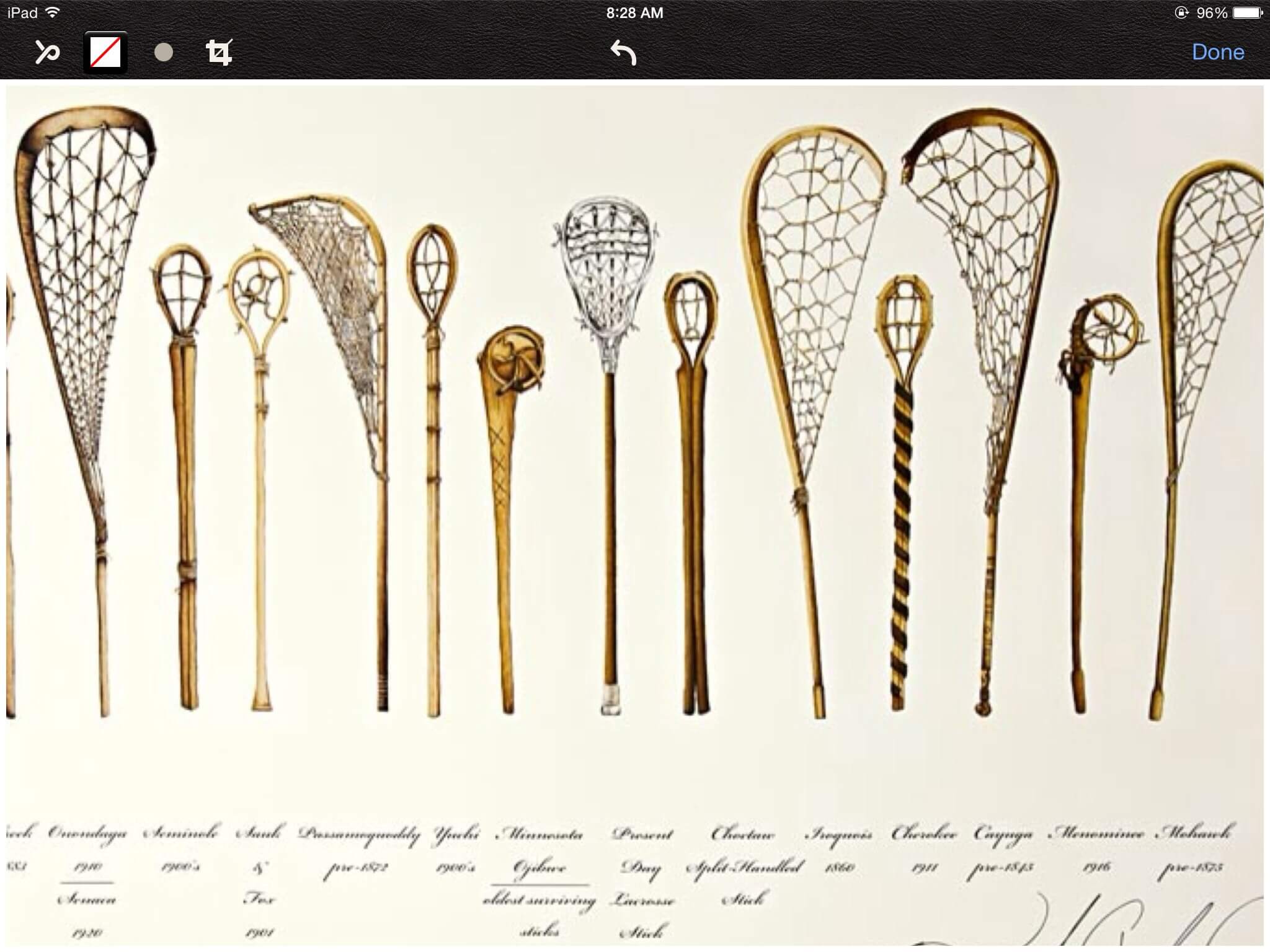
Rules
Field lacrosse involves two teams, each competing to shoot a lacrosse ball into the opposing team’s goal. A lacrosse ball is made out of solid rubber, measuring 7.75 to 8 inches (19.7–20 cm) in circumference and weighing 5 to 5.25 ounces (140–149 g). Each team plays with ten players on the field: a goalkeeper; three defenders in the defensive end; three midfielders free to roam the whole field; and three attackers attempting to score goals in the offensive end. Players are required to wear some protective equipment and must carry a lacrosse stick (or crosse) that meets specifications. Rules dictate the length of the game, boundaries, and allowable activity. Penalties are assessed by officials for any transgression of the rules.
The game has undergone significant changes since Beers’ original codification. In the 1930s, the number of players on the field per team was reduced from twelve to ten, rules about protective equipment were established, and the field was shortened.
Playing area
A standard lacrosse field is 110 yards (100 m) in length from each end line and 60 yards (55 m) in width from the sidelines.
Field lacrosse goals are centered between each sideline, positioned 15 yards (14 m) from each end line and 80 yards (73 m) apart from one another. Positioning the goals well within the end lines allows play to occur behind them. The goal is 6 feet (1.8 m) wide by 6 feet (1.8 m) tall, with nets attached in a pyramid shape. Surrounding each goal is a circular area known as the “crease,” measuring 18 feet (5.5 m) in diameter.
If a player enters the “crease” while shooting toward the goal, the referee will call a foul and the ball gets turned over to the other team.
A pair of lines, 20 yards (18 m) from both the midfield line and each goal line, divide the field into three sections. From each team’s point of view, the one nearest its own goal is its defensive area, then the midfield area, followed by the attack or offensive area. These trisecting lines are called “restraining lines.” A right angle line is marked 10 yards (9.1 m) from each sideline connecting each end line to the nearer restraining line, creating the “restraining box.” If an official deems that a team is “stalling,” that is not moving with offensive purpose while controlling the ball, the possessing team must keep the ball within the offensive restraining box to avoid a loss-of-possession penalty.
Field markings dictate player positioning during a face-off. A face-off is how to play is started at the beginning of each quarter and after each goal. During a face-off, there are six players (without considering goalkeepers) in each of the areas defined by the restraining lines. Three midfielders from each team occupy the midfield area, while three attackmen and three of the opposing team’s defensemen occupy each offensive area. These players must stay in these areas until possession is earned by a midfielder or the ball crosses either restraining line. Wing areas are marked on the field on the midfield line 10 yards (9.1 m) from each sideline. This line indicates where the two nonface-off midfielders per team lineup during a face-off situation. These players may position themselves on either side of the midfield line. During a face-off, two players lay their sticks horizontally next to the ball, head of the stick inches from the ball and the butt-end pointing down the midfield line. Once the official blows the whistle to start play, the face-off midfielders scrap for the ball to earn possession and the other midfielders advance to play the ball. If possession is won by the face-off player, he may move the ball himself or pass to a teammate.
The rules also require that substitution areas, a penalty box, coaches area, and team bench areas be designated on the field.
Equipments
Equipment
A field lacrosse player’s equipment includes a lacrosse stick, and protective equipment, including a lacrosse helmet with face mask, lacrosse gloves, and arm and shoulder pads. Players are also required to wear mouthguards and athletic supporter with cup pocket and protective cup.
A typically equipped field player, carrying a “short crosse”
Each player carries a lacrosse stick measuring 40 to 42 inches (1.0–1.1 m) long (a “short crosse”), or 52 to 72 inches (1.3–1.8 m) long (a “long crosse”). In most modern circles the word crosse has been replaced by “stick” and the terms “short stick” and “long stick” or “pole” are used. On each team, up to four players at a time may use a long crosse: the three defensemen and one midfielder. The crosse is made up of the head and the shaft (or handle). The head is roughly triangular in shape and is loosely strung with mesh or leathers and nylon strings to form a “pocket” that allows the ball to be caught, carried, and thrown. In field lacrosse, the pocket of the crosse is illegal if the top of the ball, when placed in the head of the stick, is below the bottom of the stick’s sidewall.
The maximum width of the head at its widest point must be between 6 and 10 inches (15–25 cm). From 1.25-inches up from the bottom of the head, the distance between the sidewalls of the crosse must be at least 3 inches. Most modern sticks have a tubular metal shaft, usually made of aluminum, titanium, or alloys, while the head is made of hard plastic. Metal shafts must have a plastic or rubber cap at the end.
The sport’s growth has been hindered by the cost of a player’s equipment: a uniform, helmet, shoulder pads, hand protection, and lacrosse sticks. Many players have at least two lacrosse sticks prepared for use in any contest. Traditionally players used sticks made by Native American craftsman. These were expensive and, at times, difficult to find. The introduction of the plastic heads in the 1970s gave players an alternative to the wooden stick, and their mass production has led to greater accessibility and expansion of the sport.
Associations
Federation of International Lacrosse (FIL)
(BCLA) British Columbia Lacrosse Association
Ontario Lacrosse Association
Fastpitch softball, also known as fastpitch or fastball, is a form of softball played commonly by women and men, though coed fast-pitch leagues also exist. The International Softball Federation (ISF) is the international governing body of softball. The ISF recognizes three pitching styles: fast pitch, “modified” fast pitch, and slow pitch. Fast pitch is considered the most competitive form of softball. It is the form of softball that was played at the Olympic Games in 1996, 2000, 2004, and 2008. The fast pitch style is also used in college softball and international competition.
Pitchers throw the ball with an underhand motion at speeds up to 70 miles per hour (110 km/h) for women and up to 85 miles per hour (137 km/h) for men.
History
Fastpitch softball became a very popular sport in the US during the ’30s and ’40s. Commercial and semi-pro leagues sprang up all over the country in large cities and small towns alike. Both men’s and women’s leagues were popular and it was not unusual for both to be playing on the same night in a “double-header”. Because of the speed of these games, they were very popular with spectators. During those years, the women’s games were popular and fun to watch but the real draws were the men’s games. Pitchers that could hurl the ball in excess of 85 mph at a batter 46 feet away could strike out 15 to 20 batters a game. To make things even more difficult, the underhand delivery meant the ball was rising as it approached the plate and a talented pitcher could make the ball perform some baffling aerobatics on its journey to the batter’s box. The Amateur Softball Association was formed in 1934 and held a National tournament each year to determine the best softball team in the nation. Soon there were the state and regional tournaments all over the country selecting teams to vie for the coveted National Championship. The competition was fierce with teams competing not only on the field but in recruiting the best “fireballer” around. It was not unusual for a talented pitcher to be recruited by the winning team after his team was eliminated from a tournament. It was rumored that some of these “amateurs” were making a fair living from playing softball. Fastpitch softball started to lose popularity in the mid-50s for a variety of reasons. More and more families were getting television in their homes and so games drew smaller crowds. More teams were starting to play “slow pitch” with its greater emphasis on fielding. Although men’s fast pitch softball is still played, the game is now mostly played by women.
As the worldwide participation in softball continued to grow, the sport was eventually included in the 1996 Summer Olympic Games at Atlanta, Georgia. The ASA responded by developing a coaching pool consisting of the best coaches in the country along with a selection committee which would recruit the most talented US softball players. The selection committee was responsible for making the final cuts to decide which players would compete for the US team at all international competitions throughout the year. The strategy was successful as the United States won their first Olympic gold medal in softball against China with a 3–0 win. This success was followed by two more Olympic gold medals and seven world Championships.

Rules
The basic rules of softball:
- Two teams (of nine players) alternate turns at batting and fielding (often called defense).
- The aim for the team batting is to advance a runner around all bases to the home plate to score runs.
- The defending team tries to defend its bases by getting three outs and not allowing the batting team to score.
- The team that scores the most runs in seven innings wins. (A tiebreaker procedure comes into play if the scores are tied after the seventh innings.)
- Each team’s innings ends when three of its batters have been ruled out and then the team that was defending goes in to bat.
The playing field
- There are four bases (first base, second base, third base, and home plate) on the field of play.
- The lines between the bases are generally 45 to 60ft (approximately 12 to 18m) apart and when joined they form a ‘diamond’.
- Inside the diamond is the infield which contains the pitcher’s plate from which the pitcher throws the ball underarm; outside the baselines is the outfield.
- Any ball going outside the first or third base line is a foul ball (runners are not allowed to advance and the batter gets another try unless the ball was caught in the air, in which case they are out).
Equipments
Ball
Softballs are created in many different sizes. In fast pitch softball, most leagues use a ball with a circumference of 12 inches (30 cm) that weighs 6.25 ounces (177 g). Younger players generally play with an 11-inch (28 cm) circumference ball. The ball has a leather or synthetic leather surface and may optionally have a raised seam. The ball’s color has changed over time: most leagues have switched from a white ball to a high-visibility “optic” yellow ball; some men’s leagues still use the white ball.
Bats
Bats in fastpitch softball come in various sizes and consist of wood, metal or other composite materials. Some leagues may require wooden bats because of player safety issues. All bats used in ASA softball competition must have an ASA-approved stamp and be included in a list of approved bat models published by the ASA national office. All organizations, such as NSA, USSSA, ISA, and ISFA, all require their own approved stamps, without one, the bat is illegal ad cannot be used, a usage will result in being thrown out of the game All A fastpitch softball bat may be no more than 34 inches long, 21⁄4 inches in diameter. Also, a “drop” of no more than 13 is allowed. The drop is calculated by taking the length of the bat in inches and subtracting the weight in ounces. Female players tend to use specialized fastpitch bats, while male players typically prefer slow-pitch bats.
Gloves
Gloves are worn by all members of the defensive team and are made in many styles and sizes. The gloves are made with leather or a sturdy fabric. The catcher and first baseman usually wear mitts which include additional padding and no fingers. Gloves are similar to baseball gloves, but softball allows larger sizes up to 14 inches from top to bottom.
Uniforms
Fastpitch softball uniforms usually include a shirt, undershirt, properly fitted undershorts, baseball socks, cap, visor, and shorts. Baseball caps and headbands are optional for women, baseball caps are mandatory for men. Most female fastpitch softball players wear “sliding shorts” which protect the back of thighs when sliding into bases. Some players may also wear shin guards to protect the area below the knee up to the ankle. Male players wear the long “baseball style” pants. Fastpitch softball shoes may have cleats or spikes. Rounded metal or hard plastic spikes are not allowed due to the increased risk of injury to an opponent in a slide.
Batting gloves can also be worn when playing fast pitch or slow-pitch softball. Batting gloves are designed to improve a player’s grip and to provide protection for batters when they are at the plate. Batting gloves also provide added protection for the hand in the fielding glove when fielding and catching balls. Batting gloves are designed to prevent a player’s hands from breaking.
Helmets
Helmets are required in fast pitch softball. There are many different styles of batting helmet but must have two ear flaps, and most girls have a face mask on their helmet for extra protection. Any helmet that has been damaged, altered or previously repaired is not permitted for use. The catcher must wear a protective helmet, a face mask, and a chest protector. Male catchers must wear a protective cup. Aside from the catcher, any other player on the fast pitch softball team may wear a protective mask or face guard in the field. These masks are designed to prevent traumatic facial injuries.
Associations
Associations which support fast pitch softball include:
- International Softball Federation
- Amateur Softball Association
- North American Fast pitch Association
- National Club Softball Association
- National Softball Association
- Independent Softball Association
- International Softball Congress
- United States Fast pitch Association
- USSSA
- PONY Baseball and Softball
- Fauquier Girls Softball Association
Each association plays under its own official rules.
Handball (also known as team handball, fieldball, European handball or Olympic handball) is a team sport in which two teams of seven players each (six outfield players and a goalkeeper) pass a ball using their hands with the aim of throwing it into the goal of the other team. A standard match consists of two periods of 30 minutes, and the team that scores the most goals wins.
Modern handball is played on a court of 40 by 20 metres (131 by 66 ft), with a goal in the middle of each end. The goals are surrounded by a 6-meter (20 ft) zone where only the defending goalkeeper is allowed; goals must be scored by throwing the ball from outside the zone or while “diving” into it. The sport is usually played indoors, but outdoor variants exist in the forms of field handball and Czech handball (which were more common in the past) and beach handball. The game is fast and high-scoring: professional teams now typically score between 20 and 35 goals each, though lower scores were not uncommon until a few decades ago. Body contact is permitted, the defenders trying to stop the attackers from approaching the goal. No protective equipment is mandated, but players may wear soft protective bands, pads and mouth guards.
History
Handball is a fast-paced team game that was first played in Scandinavia and Germany at the end of the 19th century.
EUROPEAN ORIGINS
The modern game of handball was first played towards the end of the 19th century in Scandinavia and Germany. Field handball was first recognized at the turn of the century and G. Wallström introduced the sport of “handball” to Sweden in 1910.
FIRST COMPETITION
The International Amateur Handball Federation (IAHF) was set up in 1928 on the occasion of the Olympic Games in Amsterdam, leading to the first Field Handball World Championships being played in Germany in 1938, following its appearance at the 1936 Berlin Games.
RIVAL CODES
Between 1938 and 1966 both forms of handball were played at separate World Championships: an outdoor, 11-a-side game played on a football pitch and a new 7-a-side indoor version preferred by the Scandinavians.
OLYMPIC HISTORY
After 1936, field handball was no longer played at the Games, except as a demonstration sport in 1952 in Helsinki. Indoor handball was presented for the first time at the 1972 Olympic Games in Munich. Yugoslavia was victorious and won the first gold medal after a competition between 16 men’s teams.
The introduction of women’s handball to the Games took place in 1976 in Montreal. The Soviet Union won this first women’s Olympic competition, taking home two gold medals after the 11-team men’s competition and the six-team women’s one.

Rules
The rules are laid out in the IHF’s set of rules.
Summary
Two teams of seven players (six field players plus one goalkeeper) take the field and attempt to score points by putting the game ball into the opposing team’s goal. In handling the ball, players are subject to the following restrictions:
- After receiving the ball, players can pass, keep possession, or shoot the ball.
- If possessing the ball, players must dribble (similar to a basketball dribble), or can take up to three steps for up to three seconds at a time without dribbling.
- No attacking or defending players other than the defending goalkeeper are allowed to touch the floor of the goal area (within six metres of the goal). A shot or pass in the goal area is valid if completed before touching the floor. Goalkeepers are allowed outside the goal area, but are not allowed to cross the goal area boundary with the ball in their hands.
- The ball may not be passed back to the goalkeeper when they are positioned in the goal area.
Notable scoring opportunities can occur when attacking players jump into the goal area. For example, an attacking player may catch a pass while launching inside the goal area, and then shoot or pass before touching the floor. Doubling occurs when a diving attacking player passes to another diving teammate.
Playing field
Schematic diagram of a handball playing field
An outdoor handball playing field
Handball is played on a court 40 by 20 metres (131 ft × 66 ft), with a goal in the centre of each end. The goals are surrounded by a near-semicircular area, called the zone or the crease, defined by a line six meters from the goal. A dashed near-semicircular line nine metres from the goal marks the free-throw line. Each line on the court is part of the area it encompasses. This implies that the middle line belongs to both halves at the same time.
Goals
The goals are two meters high and three meters wide. They must be securely bolted either to the floor or the wall behind.
The goal posts and the crossbar must be made out of the same material (e.g., wood or aluminium) and feature a quadratic cross section with sides of 8 cm (3 in). The three sides of the beams visible from the playing field must be painted alternatingly in two contrasting colors which both have to contrast against the background. The colors on both goals must be the same.
Each goal must feature a net. This must be fastened in such a way that a ball thrown into the goal does not leave or pass the goal under normal circumstances. If necessary, a second net may be clasped to the back of the net on the inside.
Organizations
Handball teams are usually organized as clubs. On a national level, the clubs are associated in federations which organize matches in leagues and tournaments.
International body
The International Handball Federation (IHF) is the administrative and controlling body for international handball. Handball is an Olympic sport played during the Summer Olympics.
The IHF organizes world championships, held in odd-numbered years, with separate competitions for men and women. The IHF World Men’s Handball Championship 2017 title holders are France.[13] The IHF 2017 Women’s World Championship title holders are also France.[14]
The IHF is composed of five continental federations: Asian Handball Federation, African Handball Confederation, Pan-American Team Handball Federation, European Handball Federation and Oceania Handball Federation. These federations organize continental championships held every other second year. Handball is played during the Pan American Games,[15] All-Africa Games,[16]and Asian Games.[11] It is also played at the Mediterranean Games. In addition to continental competitions between national teams, the federations arrange international tournaments between club teams.[17]
International competitions
Pan American Championship (men, women), Nor.Ca. Handball Championship
National competitions
Europe
Austria: Handball Liga Austria, Bundesliga Männer (men), Women Handball Austria, Bundesliga Frauen (women), Österreichischer Cup (men, women)https://web.archive.org/web/20141218002607/http://oehb.sportlive.at/
- Belgium: Bene League Handball(shared competition with the Netherlands)
- Bosnia and Herzegovina: Handball Championship of Bosnia and Herzegovina
- Croatia: Croatian First League of Handball
- Czech Republic: Zubr extraliga
- Denmark: Damehåndboldligaen, Jack & Jones Ligaen
- England: England Handball Association
- France: Ligue Nationale de Handball
- Germany: Handball-Bundesliga
- Greece: Greek Men’s handball championship
- Hungary: Nemzeti Bajnokság I(men), Nemzeti Bajnokság I (women)
- Iceland: Olís deildin
- Israel: Ligat Winner
- Macedonia: Macedonian Handball Super League
- Montenegro: First League (men), First League (women), Second League (men), Second League (women)
- Netherlands: Bene League Handball(shared competition with Belgium), Eredivisie (women)
- Norway: Eliteserien (men’s handball), Eliteserien (women’s handball)
- Poland: Polish Ekstraklasa Men’s Handball League, Polish Ekstraklasa Women’s Handball League
- Portugal: Andebol 1(men), 1ª Divisão Feminino (women)
- Romania: Liga Națională(men), Liga Naţională (women)
- Scotland: Scottish Handball League
- Serbia: Serbian First League of Handball
- Slovakia: Slovenská hadzanárska extraliga
- Slovenia: Slovenian First League of Handball, Handball Cup of Slovenia
- Spain: Liga ASOBAL, División de Plata de Balonmano
- Sweden: Handbollsligan(men)/Svensk handbollselit (women)
Other
- Angola: Angola Men’s Handball League(men), Angola Women’s Handball League (women)
- Australia: Australian Handball Club Championship, Handball League Australia, Australian National Handball Championship (States)
- Tahiti (French Polynesia): Tahitian Handball League
- Turkey: Turkish Handball Super League
- United States: USA Team Handball Nationals, USA Team Handball College Nationals
- Japan Japan Handball League
- Argentina Confederación Argentina de Handball
Equestrian vaulting, or simply vaulting, is most often described as gymnastics and dance on horseback, which can be practiced both competitively or non-competitively. Vaulting has a history as an equestrian act at circuses, but its origins stretch back at least two-thousand years. It is open to both men and women and is one of ten equestrian disciplines recognized by the International Federation for Equestrian Sports(Fédération Équestre Internationale or FEI). Therapeutic or interactive vaulting is also used as an activity for children and adults who may have balance, attention, gross motor skill or social deficits.
Vaulting’s enthusiasts are concentrated in Europe and other parts of the Western world. It is well established in Germany and Switzerland and is growing in other western countries. Vaulting was first introduced in the United States in the 1950s and 60s but was limited only to California and other areas of the west coast. More recently, it is beginning to gain popularity in the United States northeast.
History
It is believed by some that the origins of vaulting could be traced to the ancient Roman games, where acrobats usually displayed their skills on cantering horses. Others, however, believe that vaulting originated in ancient Crete, where bull-leaping was prevalent. In either case, people have been performing acrobatic and dance-like movements on (or over) the backs of moving horses/animals for more than 2,000 years. Renaissance and Middle Ages history include numerous references to vaulting or similar activities. The present name of the sport/art comes from the French “la voltige,” which it acquired during the Renaissance, when it was a form of riding drill and agility exercise for cavalry riders. Modern vaulting developed in post-war Germany as an initiative to introduce children to equestrian sports.
In 1983, vaulting became one of the disciplines recognized by the FEI. European championships were first held in Ebreichsdorf, Austria in 1984, and the first FEI World Vaulting Championship was held in Bulle, Switzerland in 1986. Vaulting was included in the World Equestrian Games in Stockholm in 1990 and in all subsequent editions of the games. It was demonstrated as an art during the 1984 and 1996 Olympic Games events. It has been included in the Inter-Africa Cup since 2006.
The first World Cup Vaulting competition was held in Leipzig on 29–30 April 2011.

Rules
Competitive Vaulting:
In competitive vaulting, vaulters compete as individuals, pairs (pas-de-deux) and teams. Beginning vaulters compete in walk or trot while experienced vaulters compete in canter. The vaulting horse moves in a minimum 15-metre diameter circle and is directed by a lunger (or “longeur”) who stands in the center. In competitive vaulting, the rider and horse will both be judged on a scale from 1 to 10.
Vaulting competitions consist of compulsory exercises and choreographed freestyle exercises done to music. There are seven compulsory exercises: mount, basic seat, flag, mill, scissors, stand and flank. Each exercise is scored on a scale from 0 to 10. Horses also receive a score and are judged on the quality of their movement as well as their behavior.
Vaulters compete in team, pas-de-deux and individual categories. An individual freestyle (also known as Kür) is a 1-minute program, the pas-de-deux kür is 2 minutes while the team is 4 minutes. They are all choreographed to music. The components of a freestyle vaulting routine may include mounts and dismounts, handstands, kneeling and standing and aerial moves such jumps, leaps and tumbling skills. However, many of these skills are only seen in the highest levels. A typical routine for a child or beginner will more likely contain variations on simple kneels and planks. Teams also carry, lift, or even toss another vaulter in the air. Judging is based on technique, performance, form, difficulty, balance, security, and consideration of the horse; the horse is also scored, taking up 25% of the total score.
Vaulting horses are not saddled but wear a surcingle (or a roller) and a thick back pad. The surcingle has special handles which aid the vaulter in performing certain moves as well as leather loops called “cossack stirrups”. The horse wears a bridle and side reins. The lunge line is usually attached to the inside bit ring.
Vaulting horses typically move on the left rein (counterclockwise), but in some competitions the horse canters in the other direction. Two-phase classes of competition also work the horse to the right. While many European clubs do not compete to the right, they still work at home evenly both directions, believing this benefits the horse and the vaulter.
The premier vaulting competitions are the biannual World and Continental Championships and the World Equestrian Games (WEG) held every four years. In many countries, vaulting associations organize and sponsor national, regional and local events every year. In 2011 there were at least 24 countries with such organisations.
Competitive Movements:
Vaulters perform movements on the back of the horse. Novice and beginning vaulters may perform at the walk or the trot while higher level vaulters perform at the canter. There are compulsory exercises and depending on class the vaulter performs seven or eight of them.
Compulsory Flag
| Movement | Description |
| Vault On | The vault-on leads to the frontways seat on the horse. After jumping on both feet, the right leg swings up immediately, as high as possible, lifting the pelvis higher than the head, while the left leg remains stretched down. The shoulders and hips are parallel to the shoulder axis of the horse. When the pelvis is at the highest possible point, the vaulter lowers the stretched right leg and lands softly, erect and centred in the seat astride with the upper body vertical. |
| Basic Seat | An astride position (the vaulter sits on the horse as a rider would), with the arms held to the side and the hands raised to ear level. Hands should be held with closed fingers and palms facing downward, with the fingers arching slightly upward. Legs are wrapped around the horse’s barrel, soles facing rearward, with toes down and feet arched. Vaulter holds this position for four full strides. |
| Flag | From the astride position, the vaulter hops to his or her knees and extends the right leg straight out behind, holding it slightly above his or her head so the leg is parallel to the horse’s spine. The other leg should have pressure distributed through the shin and foot, most weight should be on the back of the ankle, to avoid digging the knee into the horse’s back. The left arm is then stretched straight forward, at a height nearly that of the right leg. The hand should be held as it is in basic seat (palm down, fingers together). The right foot should be arched and the sole should face skyward. This movement should be held for four full strides after the arm and leg are raised. |
| Mill | From the astride position, the vaulter brings the right leg over the horse’s neck. The grips must be ungrasped and retaken as the leg is brought over. The left leg is then brought in a full arc over the croup, again with a change of grips, before the right leg follows it, and the left leg moves over the neck to complete the full turn of the vaulter. The vaulter performs each leg movement in four strides each, completing the Mill movement in sixteen full strides. During the leg passes, the legs should be held perfectly straight, with the toes pointed. When the legs are on the same side of the horse, they should be pressed together. |
| Scissors 1st part | From the astride position, the vaulter swings into a handstand. At the apex, the vaulter’s body should be turned to the lunger and the inner leg should be crossed over the outer leg. The vaulter than comes down and lands so that she is facing backward on the horse, toward the tail. |
| Scissors 2nd part | From seat rearways on the horse the vaulter swings up with the outside leg over the inside leg, and lands facing forward once again. If the vaulter lands hard on the horse’s back, they are severely penalized. Scissors is judged on the elevation of the movement. |
| Stand | The vaulter moves from the astride position onto the shins and immediately onto both feet, and releases the grips. The vaulter then straightens up with both knees bent, the buttocks tucked forward, and the hands held as they are in basic seat. The vaulter must hold the position for four full strides. [1] |
| Flank 1st part | From the astride position, the legs are swung forward to create momentum, before swinging backward, and rolling onto the stomach with a straight body, with a full extension of the legs so that the vaulter nearly reaches a handstand. At the apex, the vaulter jackknifes her body and turns the body to the inside, before sliding down into a side seat. The vaulter is judged on form, landing, and elevation. |
| Swing off | From seat astride, the vaulter swings to handstand position with closed legs, arms extended to attain maximum elevation. At maximum arm extension, the vaulter pushes against the grips, and as a result of shoulder repulsion, attains additional elevation and maximum flight, landing to the inside of the horse, facing forward, on both feet. |
English billiards, called simply billiards in the United Kingdom, where it originated, and in many former British colonies such as Australia, is a cue sport that combines the aspects of carom billiards and pocket billiards. Two cue balls (originally both white, with one marked e.g. with a black dot, but more recently one white, one yellow) and a red object ball are used. Each player or team uses a different cue ball. It is played on a billiards table with the same dimensions as a snooker table and points are scored for cannons and pocketing the balls. English billiards has also, but less frequently, been referred to as “the English game”, “the all-in game” and (formerly) “the common game.
History
English billiards was originally called the winning and losing carambole game, folding in the names of three predecessor games, the winning game, the losing game and the carambole game (an early form of straight rail), that combined to form it.

Rules
Balls and table
There are three balls. They are the same size as snooker balls (52.5 mm or 2 1⁄16 in with a tolerance of 0.05 mm) and they must weigh the same to a tolerance of 0.5 g within a set.
The balls are designated as:
- Red, an object ball;
- White, the cue ball for player 1, and an object ball for player 2;
- White with a spot, or yellow, cue ball for player 2, and an object ball for player 1.[14]
The billiard table used has the same dimensions as a snooker table, (and in many venues, both games are played on the same equipment). The playing area of a standard tournament table measures 11 feet 8 inches by 5 ft 10 in (3.569 m by 1.778 m) with a tolerance of 1⁄2 inch (1.26 cm) in both directions, though smaller ones, down to half size, are often found in snooker halls, pubs, and home billiard rooms.
Beginning the game
A game in progress, red ball about to be potted.
To see who will be the starting player, both players simultaneously hit a cue ball up the table, bouncing it off the top cushion so that it returns to balk (the first quarter-length of the table). The player who gets his ball closer to the back cushion can now choose which cue ball he wants to use during the game and to break or let the opponent break.
The red ball is placed on the spot at the top of the table (same as the black spot in snooker) and the first player begins by playing in-hand from the “D” behind the backline. The other cue ball remains off the table until the opponent’s first turn, when he plays in hand from the “D”.
The idea is to leave the balls safe by creating either a double balk (both object balls in balk), or the red in balk with the cue-ball tight (frozen) to the top-side cushion.
Scoring
Points are awarded as follows:
- Cannon– striking the cue ball so that it hits, in any order, the other cue ball and the red ball on the same shot: 2 points.
- Winning hazard(or potting, in snooker terms) – striking the red ball with one’s cue ball so that the red enters a pocket: 3 points; or striking the other cue ball with one’s cue ball so that the other cue ball enters a pocket: 2 points.
- Losing hazard(in-off in snooker terms) – striking one’s cue ball so that it hits another ball and then enters a pocket: 3 points if the red ball was hit first; 2 points if the other cue ball was hit first; 2 points if the red and the other cue ball are hit simultaneously.
Combinations of the above may all be scored on the same shot. The most that can be stored in a single shot is therefore 10 – the red and the other cue ball are both potted via a cannon (the red must be struck first), and the cue ball is also potted, making a losing hazard off the red.
Winning is achieved by a player reaching a fixed number of points, determined at the start of the game, e.g. first to 300 points or by a timed game.
Equipments
Billiard balls
Cue balls from (left to right):
- Russian pool and Kaisa—68 mm (2 11⁄16 in)
- Carom—61.5 mm (27⁄16 in)
- American-style pool—57 mm (21⁄4 in)
- British-style pool (largish) —56 mm (2 3⁄16 in)
- Snooker—52.5 mm (21⁄15 in)
- Scaled-down pool—51 mm (2 in) for children’s smaller tables
Not shown: half-scale children’s miniature pool—approximately 28.5 mm (1 1⁄8 in).
Billiard balls vary from game to game, in size, design, and quantity.
Tables
Pool table with equipment.
There are many sizes and styles of pool and billiard tables. Generally, tables are rectangles twice as long as they are wide. Most pool tables are known as 7-, 8-, or 9-footers, referring to the length of the table’s long side. Full-size snooker and English billiard tables are 12 feet (3.7 m) long on the longest side. Pool halls tend to have 9-foot (2.7 m) tables and cater to the serious pool player. Pubs will typically use 7-foot (2.1 m) tables which are often coin-operated. Formerly, 10-foot (3 m) tables were common, but such tables are now considered antique collector’s items; a few, usually from the late 19th century, can be found in pool halls from time to time. Ten-foot tables remain the standard size for carom billiard games. The slates on modern carom tables are usually heated to stave off moisture and provide a consistent playing surface.
The length of the pool table will typically be a function of space, with many homeowners purchasing an 8-foot (2.4 m) table as a compromise. Full-size pool tables are 4.5 by 9 ft (2.7 m) (interior dimensions). High-quality tables have a bed made of thick slate, in three pieces to prevent warping and changes due to temperature and humidity. Smaller bar tables are most commonly made with a single piece of slate. Pocket billiards tables of all types normally have six pockets, three on each side (four corner pockets, and two side or middle pockets).
Cloth
Women playing on an elaborately decorated green-covered table in an early 1880s advertising poster.
All types of tables are covered with billiard cloth (often called “felt”, but actually a woven wool or wool/nylon blend called baize). Cloth has been used to cover billiards tables since the 15th century.
Bar or tavern tables, which get a lot of play, use “slower”, more durable cloth. The cloth used in the upscale pool (and snooker) halls and home billiard rooms is “faster” (i.e., provides less friction, allowing the balls to roll farther across the table bed), and competition-quality pool cloth is made from 100% worsted wool. Snooker cloth traditionally has a nap (consistent fiber directionality) and balls behave differently when rolling against versus along with the nap.
The cloth of the billiard table has traditionally been green, reflecting its origin (originally the grass of ancestral lawn games), and has been so colored since the 16th century, but it is also produced in other colors such as red and blue. The cloth was earlier said to be the most important part of the game, most likely because of the reflection of the game’s origin. The players were determined that the cloth should not be ripped – women were made to continue to use maces after cues were invented, for fear that they would rip the cloth with the sharper cues.
Rack
Aluminum billiard rack that is used for 8-ball, 9-ball, and straight pool.
A rack is the name given to a frame (usually wood, plastic or aluminum) used to organize billiard balls at the beginning of a game. This is traditionally triangular in shape but varies with the type of billiards played. There are two main types of racks; the more common triangular shape which is used for eight-ball and straight pool and the diamond-shaped rack used for nine-ball.
There are several other types of less common rack types that are also used, based on a “template” to hold the billiard balls tightly together. Most commonly it is a thin plastic sheet with diamond-shaped cut-outs that hold the balls that is placed on the table with the balls set on top of the rack. The rack is used to set up the “break” and removed before the “break shot” occurs.
Cues
Billiards games are mostly played with a stick known as a cue. A cue is usually either a one-piece tapered stick or a two-piece stick divided in the middle by a joint of metal or phenolic resin. High-quality cues are generally two pieces and are made of a hardwood, generally maple for billiards and ash for snooker.
The butt end of the cue is of the larger circumference and is intended to be gripped by a player’s hand. The shaft of the cue is of smaller circumference, usually tapering to an 0.4 to 0.55 inches (10 to 14 mm) terminus called a ferrule (usually made of fiberglass or brass in better cues), where a rounded leather tip is affixed, flush with the ferrule, to make final contact with balls. The tip, in conjunction with chalk, can be used to impart spin to the cue ball when it is not hit in its center.
Cheap cues are generally made of pine, low-grade maple (and formerly often of ramin, which is now endangered), or other low-quality wood, with inferior plastic ferrules. A quality cue can be expensive and may be made of exotic woods and other expensive materials which are artfully inlaid in decorative patterns. Many modern cues are also made, like golf clubs, with high-tech materials such as woven graphite. Skilled players may use more than one cue during a game, including a separate generally lighter cue for the opening break shot (because of cue speed gained from a lighter stick) and another, shorter cue with a special tip for jump shots.
Mechanical bridge
The mechanical bridge, sometimes called a “rake”, “crutch”, “bridge stick” or simply “bridge”, and in the UK a “rest”, is used to extend a player’s reach on a shot where the cue ball is too far away for normal hand bridging. It consists of a stick with a grooved metal or plastic head which the cue slides on. Many amateurs refuse to use the mechanical bridge based on the perception that to do so is unmanly. However, many aficionados and most professionals employ the bridge whenever the intended shot so requires.
Some players, especially current or former snooker players, use a screw-on cue butt extension instead of or in addition to the mechanical bridge.
Bridgehead design is varied, and not all designs (especially those with cue shaft-enclosing rings, or wheels on the bottom of the head), are broadly tournament-approved.
In Italy, a longer, thicker cue is typically available for this kind of tricky shot.
For snooker they are normally available in three forms, their use depending on how the player is hampered; the standard rest is a simple cross, the ‘spider’ has a raised arch around 12 cm with three grooves to rest the cue in and for the most awkward of shots, the ‘giraffe’ (or ‘swan’ in England) which has a raised arch much like the ‘spider’ but with a slender arm reaching out around 15 cm with the groove.
Chalk
Billiard chalk is applied to the tip of the cue.
Chalk is applied to the tip of the cue stick, ideally before every shot, to increase the tip’s friction coefficient so that when it impacts the cue ball on a non-center hit, no miscue (unintentional slippage between the cue tip and the struck ball) occurs. Cue tip chalk is not actually the substance typically referred to as “chalk” (generally calcium carbonate), but any of several proprietary compounds, with a silicate base. It was around the time of the Industrial Revolution that newer compounds formed that provided a better grip for the ball. This is when the English began to experiment with side spin or applying curl to the ball. This was shortly introduced to the American players and is how the term “putting English on the ball” came to be. “Chalk” may also refer to a cone of fine, white hand chalk; like talc (talcum powder) it can be used to reduce friction between the cue and bridge hand during shooting, for a smoother stroke. Some brands of hand chalk actually are made of compressed talc. (Tip chalk is not used for this purpose because it is abrasive, hand-staining and difficult to apply.) Many players prefer a slick pool glove over hand chalk or talc because of the messiness of these powders; buildup of particles on the cloth will affect ball behavior and necessitate more-frequent cloth cleaning.
Cue tip chalk (invented in its modern form by straight rail billiard pro William A. Spinks and chemist William Hoskins in 1897) is made by crushing silica and the abrasive substance corundum or aloxite (aluminium oxide),[15][16] into a powder It is combined with dye (originally and most commonly green or blue-green, like traditional billiard cloth, but available today, like the cloth, in many colours) and a binder (glue). Each manufacturer’s brand has different qualities, which can significantly affect play. High humidity can also impair the effectiveness of chalk. Harder, drier compounds are generally considered superior by most players.
Association
WPBSA

Endurocross, indoor enduro or SuperEnduro, shortened Enduro-X or EX, is a hybrid motorcycle competition, a mix of supercross, trials, and enduro racing held indoors over obstacles resembling a trials track. Endurocross events are typically held in hockey or down-sized basketball arenas. Its main difference with supercross is in there being “hard rock sections” and wooden parts (resembling fallen trees) akin to enduro and technical ‘trials’ courses, rather than tarmac in between jumps. Tracks incorporate various elements of off-road riding, including rocks, boulders, logs, sand, mud, a water-hole and special obstacles (like giant tires). An endurocross course is much faster than the course of a trial and much slower than a supercross course.
History
The indoor enduro debuted in 2000 as a support event to the Barcelona Trial Indoor, organized by Jaime Alguersuari Sr. The hybrid sport expanded to other European cities in the 2000s.
In 2007, the FIM created the FIM Indoor Enduro World Cup, later named the FIM Indoor Enduro World Championship but now renamed to the FIM SuperEnduro World Championship, which despite the name had only been held in Europe until the 2013/14 season.
Endurocross in the United States was founded by Eric Peronnard, responsible for the US Open of Motocross and the Supercross Paris-Bercy. It was originally held as a one-off event called EnduroCross at the Orleans Arena in Las Vegas, Nevada. The race was expanded into the AMA EnduroCross Championship in 2007.
An AMA EnduroCross round was added to the X Games Los Angeles for the 2011 and 2012 editions. In 2013, the four X Games summer games featured endurocross rounds and did not award points for the AMA EnduroCross Championship. The X Games endurocross events are also organized by Peronnard.
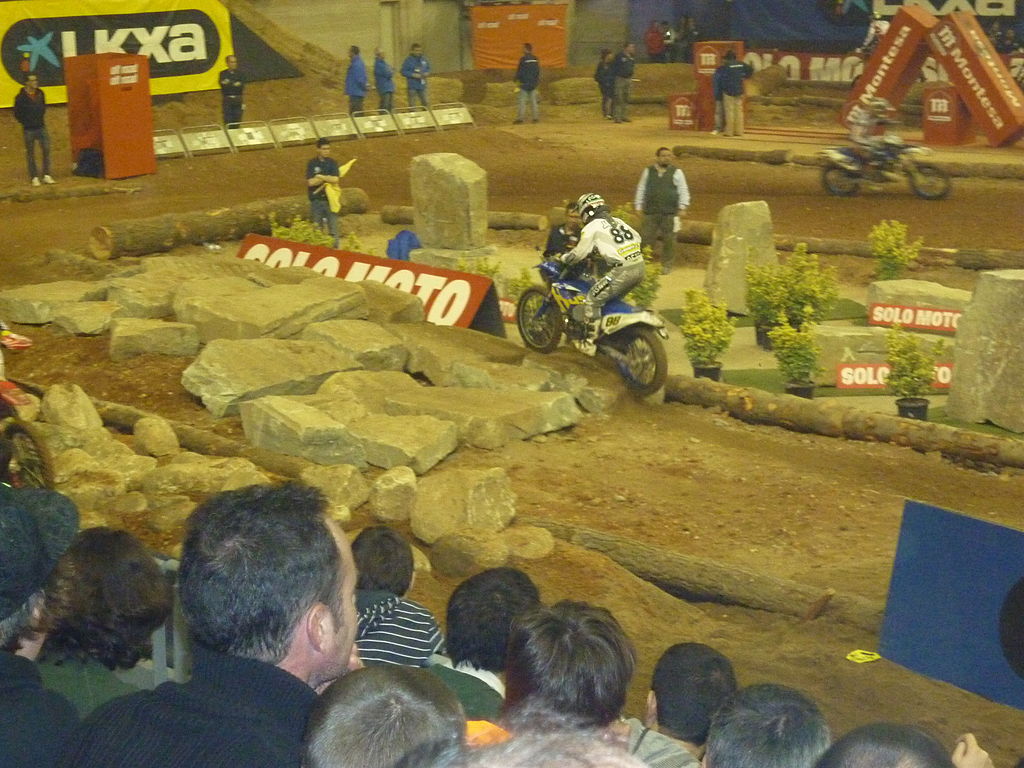
Endurance riding is an equestrian sport based on controlled long-distance races. It is one of the international competitions recognized by the FEI. There are endurance rides worldwide. Endurance rides can be any distance, though they are rarely over 160 km for a one-day competition.
There are two main types of long-distance riding, competitive trail riding and endurance rides. In an endurance ride, discussed in this article, the winning horse is the first one to cross the finish line while stopping periodically to pass a veterinary check that deems the animal in good health and fit to continue. As with human marathon running, many riders will participate to improve their horse’s personal best performance and consider finishing the distance with a proper vet completion record to be a “win”.
In the United States, most endurance rides are either 50 or 100 miles (160 km) long. Shorter rides, called Limited Distance rides (LD), are organized for new riders to the sport or young horses being trained. However, LD’s have evolved into a competition of their own, in which more experienced riders and horses also participate. There are also longer, usually multi-day, rides as well. In the US, the American Endurance Ride Conference (AERC) sanctions endurance rides. In the UK, Endurance GB is the governing body. Winning riders can complete 100-mile (160 km) rides in 14 to 15 hours
Any breed can compete, but the Arabian generally dominates the top levels because of the breed’s stamina and natural endurance abilities.
History
Though the need to ride long distances has existed since the domestication of the horse, endurance riding as an organized activity was first developed in the United States based on European cavalry (particularly Polish and Russian WWI) and breeding program tests requiring the ability to carry 300 lb (140 kg) over 100 miles (160 km) in one day. Organized endurance riding as a formal sport began in 1955, when Wendell Robie and a group of equestrians rode from the Lake Tahoe area across the Sierra Nevada Range to Auburn in under 24 hours. They followed the historic Western States Trail. This ride soon became known as the Tevis Cup, and it remains the most difficult of any 100-mile ride in the world because of the severe terrain, high altitude, and 100-degree (~37 °C) temperatures. Endurance riding first was brought to Europe in the 1960s.
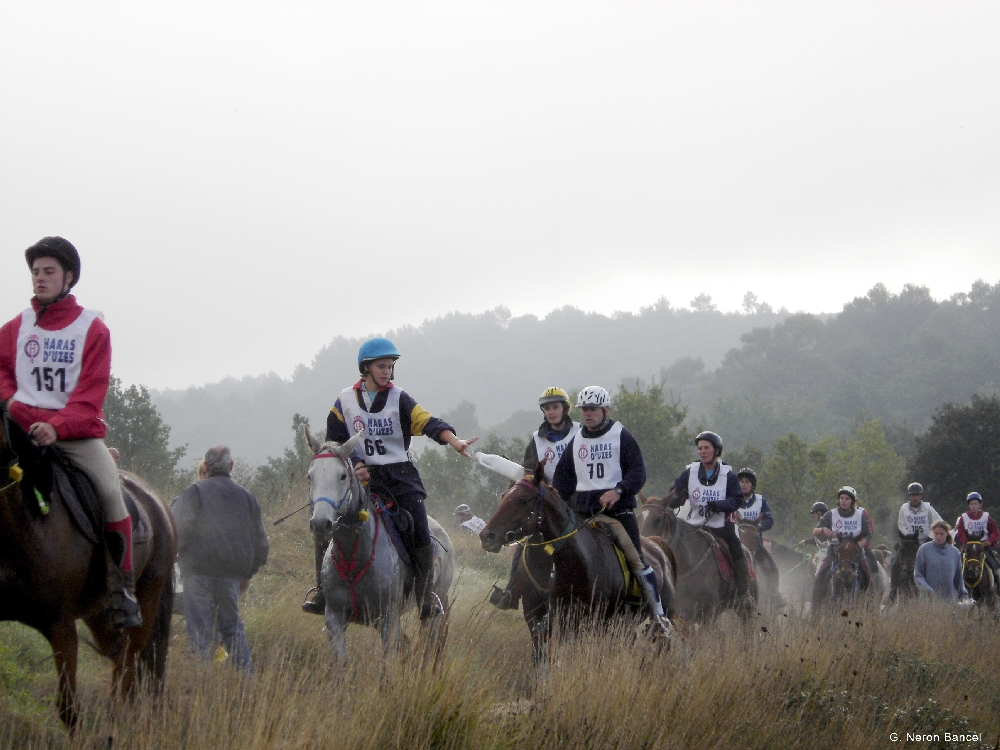
Rules
- Before the ride, horses are inspected by a veterinarian to ensure they are fit to perform in the ride. Riders may be given a map or GPS waypoints for the course, which shows the route, the places for compulsory halts (called “holds”), and any natural obstacles (such as ditches, steep hills, and water crossings). The trails frequently are marked with colored surveyor’s tape ribbons at regular intervals with additional ribbons or small arrow markers at turns in the trail.The ride is divided into sections, with different names (legs, phases, loops etc.), depending on sanctioning organization. After each section, horses are stopped for a veterinary inspection(sometimes called a “vetgate”), where they are checked for soundness and dehydration, with their pulse and respiration taken. To continue the ride, the horse must pass the examination, including reducing its heart rate below that specified for the event, typically 64 bpm, although terrain and weather may require the ride veterinarians to set a different maximum target. The riders’ time keeps running until their horses reach the required target, so it is important that the horses recover as soon as possible. Any horse deemed unfit to continue (due to lameness or excessive fatigue, for example) is eliminated from further competition.Mule “ground tied” to a bucket while resting at an endurance ride veterinary checkpointAfter the veterinary inspection, the horse must be held for an additional hold time (usually between 40 – 60 minutes), at which time it is fed and watered. If the veterinary inspection is on the course rather than at base camp, ride management usually delivers to the inspection location a cache of riders’ personal gear, food, and water.
While riders may compete without additional aid, sometimes referred to as riding cavalry, many riders have a designated crew to assist them during veterinary checks. In upper level competition this is particularly important to efficiently prepare the horse for the vet as well as care of both horse and rider during the mandatory hold times. A good crew allows the rider a brief respite and time to concentrate all energies on the strategy and demands of the trail itself.
Riders are free to choose their pace during the competition, adjusting to the terrain and their mount’s condition. Therefore, they must have a great knowledge of pace, knowing when to slow down or speed up during the ride, as well as a great knowledge of their horse’s condition and signs of tiring. Riders may also choose to ride, or may dismount and walk or jog with their horse without penalty. However, in FEI, they must be mounted when they cross the starting and finish lines. AERC riders have no requirement for being mounted at any point before, during, or after the ride.
The terrain riders compete over varies greatly from ride to ride. Natural obstacles (called “hazards”), are marked on the trails. In some areas, wilderness or undeveloped areas are difficult to find; in these places, no more than 10% of the route can be on hard-surfaced roads.
Equipement
Endurance is less formal than many other equestrian competitions, with riders choosing clothes for comfort. The AERC does not have any equipment requirements other than requiring junior riders to wear a helmet. However, individual ride managers may set certain requirements, such as the use of a helmet or hoof protection, and such information is typically included in the ride flyer and/or website. At FEI competitions, riders must wear an equestrian helmet, riding breeches or riding tights, correct footwear, and a shirt with a collar.
Endurance riders usually use a saddle that is designed to be lightweight yet comfortable to horse and rider for long hours of riding. There are saddles designed specifically for endurance riding, though they are not universally used. At the highest levels in FEI, it is usually a variation on the English saddle in shape, although it may have wider panels and stirrups with a wider tread. Lightweight endurance designs based on western saddles are also popular, particularly in AERC rides. Various experimental designs are also common, including treeless and flexible panel saddles. Regardless of design, endurance saddles are very light to ensure the horse does not have to carry unnecessary weight. Many endurance saddles have extra metal rings for the attachment of equipment.
Riders who compete in CEI rides must meet a minimum weight of 75 kilograms (165 lb) with their saddle and pads. If the rider and their accompanying tack weighs in under this, they are required to ride with weights. Weigh-ins are generally conducted before and after a race; however, unscheduled weigh-ins can occur during the race. AERC has various weight divisions, and a rider may be heavier, but not lighter, than the division in which they are enrolled.
Bridles for the horses may use a wide variety of bits or hackamores. Riders also often add a breastcollar to keep the saddle in place while traveling over rough terrain. Use of a crupper is not common, but sometimes seen to keep the saddle from sliding forward on horses. Protective boots may be used on a horse’s legs, though boots also cause problems in some types of terrain (they may slip, can collect burrs and dirt, and if crossing water may become waterlogged, any of which can irritate the legs of the horse and lead to lameness), so use varies by the type of ride and the rider’s preferences. Hoof protection varies from barefoot to the use of hoof boots and shoes.
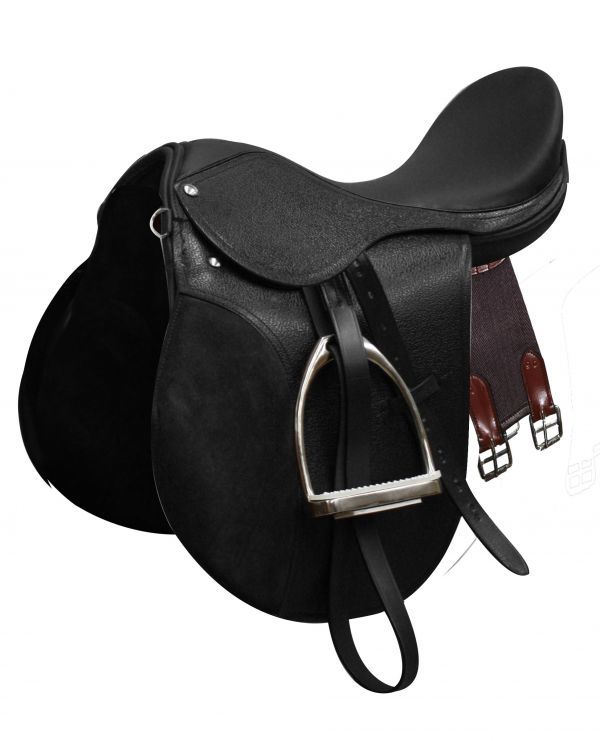
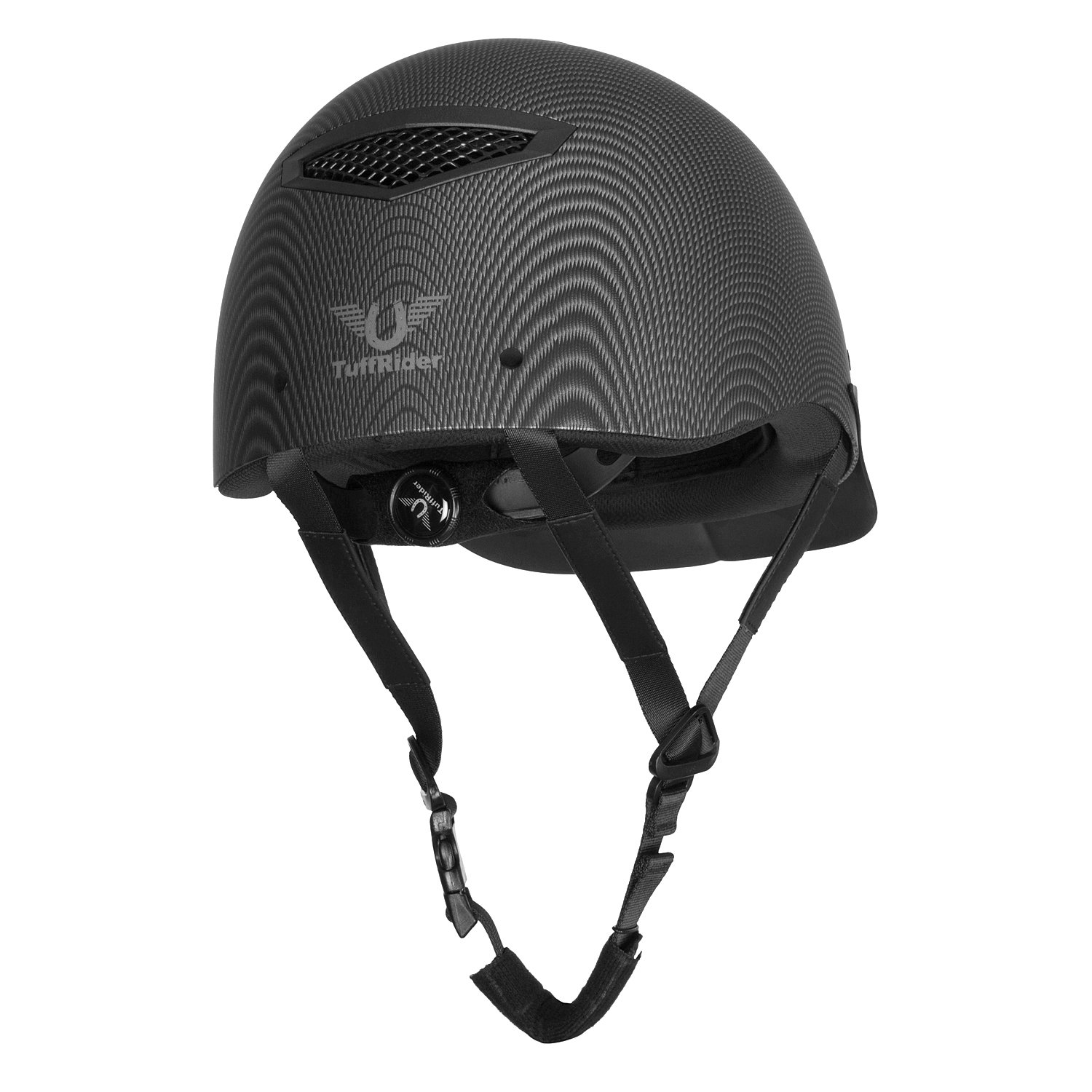
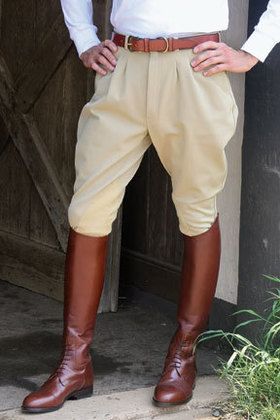

Association
1. American Endurance Ride Conference
2. Horse Welfare Controversy
3. FEI
Elephant polo is a variant of polo played while riding elephants. It is played in Nepal, Rajasthan (India), and Thailand. England and Scotland regularly field teams. The equipment consists of a standard polo ball and six to ten-foot cane (similar to bamboo) sticks with a polo mallet head on the end. The pitch is three-quarters of the length of a standard polo pitch, due to the lower speed of the elephants. Two people ride each elephant; the elephants are steered by mahouts, while the player tells the mahout which way to go and hits the ball.
Elephant polo originated in Meghauli, Nepal. Tiger Tops in Nepal remains the headquarters of elephant polo and the site of the World Elephant Polo Championships.
History
It started out as a whimsical conversation between two sport lovers and evolved into the adventurous sport of polo played on the back of elephants.
The World Elephant Polo Association established the governing rules for Elephant Polo in 1982; the association has its headquarters at the Tiger Tops Jungle Lodge in the Royal Chitwan Park in Nepal, which is where the World Elephant Polo Tournament played every year on a grassy airfield in Megauly. This tournament is played within a small circuit of Nepal and Thailand.
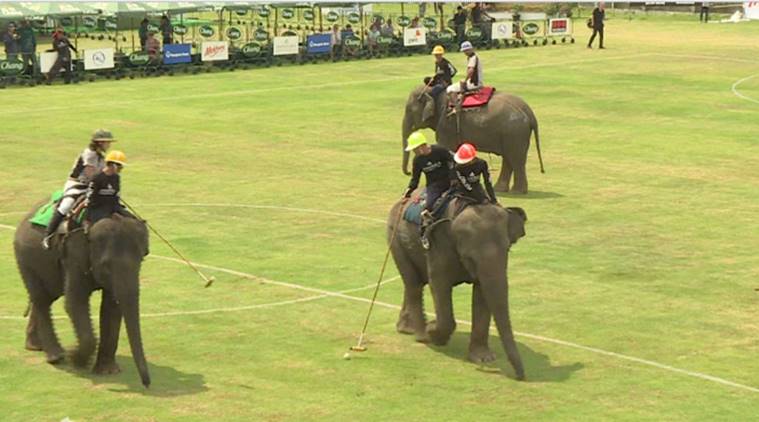
Rules
- The Game will be played by four players on each team. The game is played on a marked pitch of “100-120 metres x 60-80 metres”, using a standard size polo ball.
- The game will consist of two 10 minutes chukkers of playing time, with an interval of 15 minutes. The whistle blown by the referee stops and starts play.
- The pitch will be marked with a centre line, a circle with a radius of 10 metres in the centre of the field, and a semi-circle, in front of the goals, with a radius of 20 metres, measured from the centre of the goal to form the ‘D’.
- Elephants and ends are changed at half time.
- The complete ball must travel over the sideline or back line, to be out, and completely across the goal line to be a goal.
- All throws-ins or set pieces must be off-side to off-side. Right hand for both men & women players must be the dominant side.
Both men and women players must play on the right side of the elephant. Men may only use only their right hand. However, women may use two hands to hold the polo stick if they so wish. If women choose to play with one hand not two, then it must be their right hand only (and not the left). Care must be taken when changing sides of play, in order to avoid injury with the stick to other players, or elephants. When the Umpire/ Referee judge dangerous play has been committed, a spot hit shall be given to the opposing team. All defending elephants and players must be 15 metres from the spot.
- Teams may bring additional players, reserves, to interchange with other members of the team, as long as the number, names and arrangements have been agreed in advance by WEPA. Team members playing will be named the evening before a match. The changes, except in the case of injury where a replacement is needed, must be done at half-time when names will be given to the Referee, time-keepers/ commentators.

Association
The World Elephant Polo Association established by Mr. A. V. Jim Edwards has inspired the formation of many Elephant Polo associations in various countries and today WEPA is proud to celebrate its twenty-fifth birthday. And on this very auspicious occasion, WEPA would also like to express its hearty gratitude to all its admirers and great supporters for supporting WEPA all these years and taking it to greater heights.
Eight-man football is a form of gridiron football, generally played by high schools with smaller enrollments. Eight-man football differs from the traditional 11-man game with the reduction of three players on each side of the ball and a field width that can be reduced to 40 yards, 13 1/3 yards narrower than the 53 1/3-yard 11-man field. Most states continue to play on a 100-yard length field, whereas a few states opt for 80-yard lengths. Reduced-player football, which consists of eight-man, six-man, and nine-man football has gained popularity across the United States. As of 2015, 1,561 schools in 30 states sponsor reduced-player football, with 1,161 of those teams participating in eight-man leagues, whereas 284 teams play six-man football and 116 teams play nine-man football.
History
Eight-man football shares the same rules, procedures, and structure as the traditional 11-man game, with a few minor differences. Eight-man football is played with eight players on offense and defense, three fewer than the 11-man game. It depends greatly on the type of formation used, but the eliminated players are commonly two offensive tackles and a skill position player on offense and two defensive backs and a defensive lineman on defense.
The size of the playing field is often smaller in eight-man football than in 11-man. To accommodate six fewer players on the field, the width of the field is 40-yard-wide (37 m), 13 1/3-yards narrower than the 53 1/3-yard eleven-man field. Most eight-man leagues mandate 100-yard length fields, where few choose the 80-yard-long (73 m) field length option.[2]
There are several professional eight-man football leagues in the United States, due to the eight-man format being adopted by most indoor football leagues. These leagues typically use a 50-yard (46 m) by roughly 25-yards (23 m) field, as professional eight-man football is usually played indoors. There are some eight-man leagues that play outdoors, however; in Texas, the American Eightman Football League (AEFL) plays on a 100-yard field, and in Illinois and Missouri, the Eight-Man Football League (8FL) plays on a 60-yard (55 m) field. In recent years, organizations that previously played six-man football have been converting to eight-man football, leading to the expansion of the eight-man game.
Eight-man football is particularly prominent in the Midwestern United States, with Nebraska, Kansas, and Oklahoma being three of the four states with more than 80 eight-man teams. A write-up on 8-man football in Kansas appeared in Sports Illustrated’s tribute to the state.
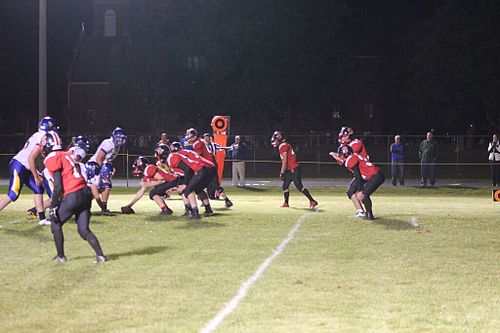
Rules
Eight-man football consists of fast-paced games with higher scoring than the traditional game. Eight-man scores vary depending on the offensive and defensive strategies, but scores typically fall in the 40-60 point range, with “high scoring” games reaching the 70s and “low scoring” games falling below 30 Eight-man football is noted for producing multi-skilled players that are responsible for playing several positions, which require speed, agility, and strength.
Offense
A variety of offensive formations can be used in eight-man football, most of which are converted from traditional eleven-man formations. Eight-man football rules require five players to be on the line of scrimmage with players on each end remaining pass eligible. The interior of the line consists of two guards and a center. Most often, the line players on the edges of the formation are tight ends or are occasionally split wide as wide receivers. Due to reduced-sized teams requiring players to know different positions, players’ jersey numbers do not affect pass eligibility, however, most teams follow the general guidelines set forth by the eleven-man game.
Eight-man football “I-Formation”
Attempting the extra point kick after a touchdown is less common in eight-man, due to the lack of specialized kickers and holders and the inability to block defenders from interfering with the kick. For this reason, teams often attempt a two-point conversion instead.
Defense
General defensive alignments in eight-man football consist of defensive linemen, linebackers, and defensive backs. Common formations include a 3-3-2, 3-2-3, 4-3-1, 3-4-1, 4-2-2, 5-3, and a 6-2 goal-line defense. The 3-2-3 defense has gained popularity due to the increase of passing-oriented offense in the eight-man game. It substitutes a defensive back with a third linebacker.
Special teams
Eight-man football includes special teams units similar to the traditional format. One notable difference is significantly fewer teams using field goal or extra point units, instead electing to go for a fourth-down conversion or a two-point conversion. Additionally, many teams opt to onside kick instead of kick deep. This saves players’ energy since there are often a few backups.
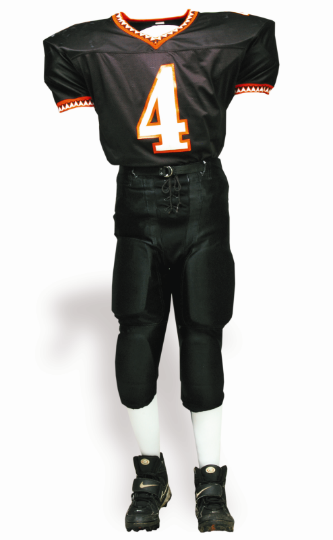
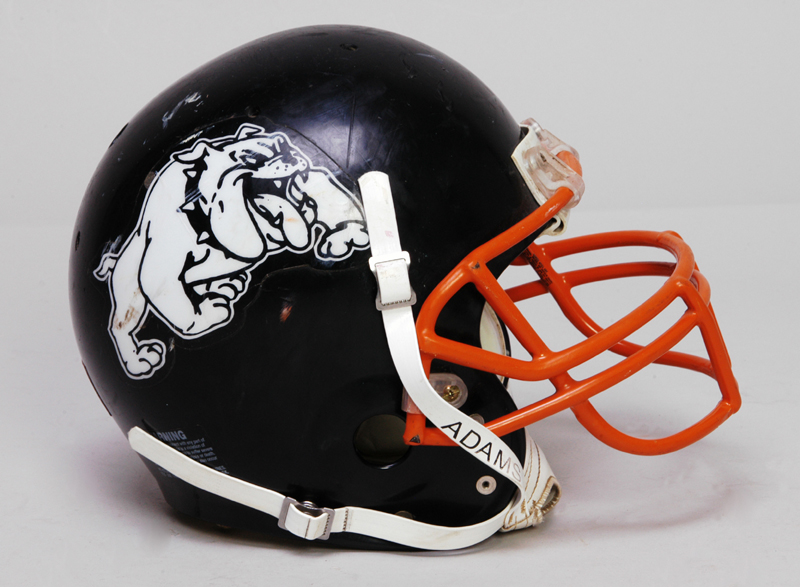
Equipments
1 ) HEAD COACH MUST VERIFY THAT PLAYERS ARE LEGALLY EQUIPPED
The responsibility for ensuring that all players are legally equipped is that of
the head coach. Prior to the game, the referee and umpire will visit each team’s dressing
room. The head coach must verify to the referee, in the presence of the umpire, that his
players are equipped in compliance with the rules.
2) REQUIRED EQUIPMENT
While required equipment protects the wearer, it must also protect other players
against the danger of unnecessary injury.
The player must frequently check his equipment and report to his coach or manager
when he discovers any part of his equipment has become damaged or illegal through use.
He should request replacement or repair of such items as shoe cleats which have
developed nicks or burrs, or are worn or loose in their sockets; exposed hard substances,
broken or damaged helmets or shoulder pads; missing chin straps; cracked or damaged
mouth protectors and face protectors. Equipment which is improperly fitted is an invitation
to injury.
Certain items of player equipment are required by the rules and no player may
participate without them. The following items are required equipment:
- A face mask which met NOCSAE test standards at the time of manufacture.
- A helmet which met NOCSAE test standards at the time of manufacture and has a
visible exterior label regarding the risk of injury. The helmet must be secured by a chin
strap.
- Hip pads with a tail bone protector.
- A jersey with number 1-99, inclusive, on the front and back which must reach the
top of the pants.
- Knee pads worn over the knees.
- Pants which cover the knees and knee pads.
- Shoes, and if with cleats, they must meet specifications.
- Shoulder pads and any hard surface attachments fully covered by a jersey.
- Thigh guards.
- A tooth and mouth protector which includes an occlusal and labial portion covering
all upper teeth.
An official will NOT permit a player to participate if he is not equipped with all
mandatory items.
3) HELMET
In order to evaluate the protective qualities of football helmets, the National
Federation of State High School Associations, in cooperation with other interested athletic
organizations and manufacturers, formed the National Operating Committee on
Standards for Athletic Equipment (NOCSAE) in 1971. NOCSAE established test
standards for evaluating the protective effect of football helmets. A player must
wear a helmet which carries the NOCSAE mark. This mark indicates the helmet passed
the NOCSAE test standard at the time it was manufactured. This mandatory requirement
went into effect in 1980. The helmet must also have an exterior warning label regarding
the risk of injury.
4) FACE MASK AND TOOTH PROTECTOR
Experimentation conclusively demonstrated the wearing of a modern face mask
substantially reduced the number of injuries, as well as their severity. The requirement
that every player wear a face mask was instituted for safety reasons and not to
accommodate the wearer’s opponent.
The face mask shall be made of material designed to be nonbreakable with
rounded edges and those constructed of metal shall have the surface covered with
resilient material designed to prevent chipping and burrs or an abrasiveness which would
endanger players. The face mask must also meet NOCSAE standards when
manufactured.
Each player is also required to properly wear a tooth and mouth protector. A
portion of an acceptable tooth and mouth protector must fit within the mouth and cover
all upper teeth. It also shall have a labial part which covers the inner lips and an occlusal
portion which separates the biting surfaces of the teeth.
5) ILLEGAL EQUIPMENT
There are certain types of equipment which are illegal & may not be worn.
Among these are:
- Ball-colored helmets, jerseys, patches, pads or gloves, penalty-flag colored pads or
gloves, any transverse stripe on the sleeve below the elbow.
- Computers or any other electronic or mechanical device for communication.
- The hard substance in its final form on the elbow, hand, wrist, or forearm unless padded as
specified and directed by a licensed physician.
- Knee braces made of hard unyielding material, unless hinges are covered on both
sides and all of its edges overlapped and worn under the pants. Any other hard surface
across the front of the leg must be covered with at least ½ inch closed-cell, slow recovery
rubber or other material of the same minimum thickness and having similar physical
properties. If any part of the brace extends below the pants, it must be covered from
direct external exposure.
- The metal which is projecting or other hard substance on clothes or person.
- Plastic material covering protective pads whose edges are not properly rounded.
- Rib pads and back protectors unless fully covered by the jersey.
- Slippery or sticky substances on clothing, person or equipment.
- Tear-away jerseys or any taped, tied or altered.
- Uniform adornments other than a single, plain, white towel.
- More than one manufacturer’s logo/trade name on the outside of the jersey and/or
pants and not exceeding 2 1/4 square inches and not exceeding 2 1/4 inches in any one
dimension
- Jewelry.
- Eye shields which are not clear, not molded nor not rigid.
6) ARTIFICIAL LIMBS
Since 1978 it has been permissible for players to wear an artificial hand, arm or leg.
A player may be permitted to participate while wearing an artificial prosthesis which is, in
the opinion of the administrative rules body, no more dangerous to players than the
corresponding human limb, and does not place an opponent at a disadvantage. The
“rules administering officials” having been determined to be the state high school
association, or representatives designated by the state high school association. Each
case has to be handled on an individual basis.
After consulting with representatives of the medical profession who specialize in
working with juvenile amputees, the following criteria are recommended as a guideline to
follow in determining the legality and suitability of wearing an artificial prosthesis in a
contact sport:
- Metal hinges restricted to the lateral and medial surfaces and covered with leather or
padding (similar to that required on approved knee braces).
- No metal in front of the knee unless properly padded.
- Prosthesis should be wrapped with a minimum of ½ inch high-density polyurethane or
foam rubber.
- Approval of an orthopedic surgeon or physician associated with a juvenile amputee
clinic.
7) FAILURE TO WEAR MANDATORY OR LEGAL EQUIPMENT
The head coach verifies prior to the game that all his players are legally equipped.
Once this verification has been made to the referee, any violation of the legal or
mandatory player-equipment rule is a 15-yard unsportsmanlike foul charged to the head
coach. If a substitute comes on the field wearing illegal equipment or missing required
equipment, he will be asked to leave and correction must be made before participation.
If, following a play, it is determined that a player participated while wearing illegal
equipment or missing mandatory equipment during the down, the 15-yard
unsportsmanlike foul will be charged to the coach and will be enforced from the
succeeding spot. The player shall not participate further until he is in compliance with the
rules. Equipment which becomes defective or illegal because of game use may be
corrected without penalty.
8) FAILURE TO PROPERLY WEAR REQUIRED EQUIPMENT
Failure to properly wear player equipment is a foul. Player equipment is designed
to protect players, but there have been instances in which it has not been worn properly
for one reason or another.
If any player is not properly wearing required player equipment when a free kick or
snap is about to occur, it is a dead-ball foul. It authorizes officials to penalize players who
are not properly wearing required equipment during the dead-ball period momentarily
before the ball will become live. Failure to properly wear required equipment while the
ball is live is a 5-yard penalty.
9) AUXILIARY EQUIPMENT
The following auxiliary equipment may be worn if approved by the umpire as being
soft, nonhardening, etc.
- Forearm pads or hand pads.
- Tape, bandage or support wrap on the hand or forearm to protect an injury.
- Gloves which have a label/stamp indicating compliance with test specifications.
Association
Illinois 8 Man football association

Eight-ball (also spelled 8-ball or eightball, and sometimes called solids and stripes, spots and stripes in the United Kingdom or highs and lows in Japan) is a pool (pocket billiards) game popular in much of the world, and the subject of international professional and amateur competition. Played on a pool table with six pockets, the game is so universally known in some countries that beginners are often unaware of other pool games and believe the word “pool” itself refers to eight-ball. The game has numerous variations, mostly regional. Standard eight-ball is the second most competitive professional pool game, after nine-ball, and for the last several decades ahead of straight pool. Unlike nine-ball, ten-ball, or seven-ball where the game’s name reflects the number of object balls used, eight-ball uses all fifteen object balls.
History
The game of eight-ball is derived from an earlier game invented around 1900 (first recorded in 1908) in the United States and initially popularized under the name “B.B.C. Co. Pool” (a name that was still in use as late as 1925) by the Brunswick-Balke-Collender Company. This forerunner game was played with seven yellow and seven red balls, a black ball, and the cue ball. Today, numbered stripes and solids are preferred in most of the world, though the British-style offshoot, blackball, use the traditional colors (as did early televised “casino” tournaments in the United States). The game had relatively simple rules compared to today and was not added (under any name) to an official rule book (i.e., one published by a national or international sport governing body) until 1940.

Rules
- American-style eight-ball rules are played around the world by professionals and in many amateur leagues. Nevertheless, the rules for eight-ball may be the most contested of any billiard game. There are several competing sets of “official” rules. The non-profit World Pool-Billiard Association (WPA) – with national affiliates around the world, some of which long pre-date the WPA, such as the Billiard Congress of America (BCA) – promulgates standardized rules as Pool Billiards – The Rules of Play for amateur and professional play.Meanwhile, many amateur leagues – such as the American Poolplayers Association (APA) / Canadian Poolplayers Association (CPA), the Valley National Eight-ball Association (VNEA, international in scope despite its historic name) and the BCA Pool League (BCAPL) – use their own rulesets; most of these are at least loosely based on the WPA/BCA version. Millions of individuals play informally, using informal house rules which vary not only from area to area but even from venue to venue (“house rules“).
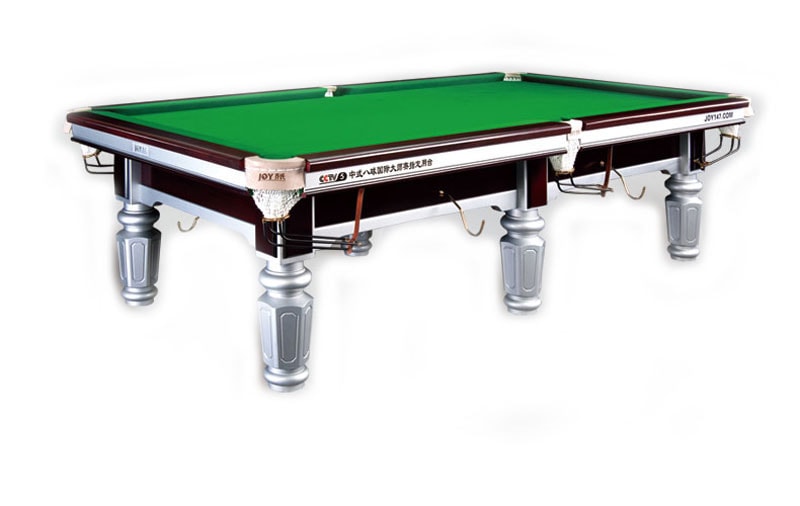

Equipments
The regulation size of the table’s playing surface is 9 by 4.5 ft (2.7 by 1.4 m), though exact dimensions may vary slightly by manufacturer. Some leagues and tournaments using the World Standardized Rules may allow smaller sizes, down to 7 by 3.5 ft (2.1 by 1.1 m). Early 20th-century 10 by 5 ft (3.0 by 1.5 m) models are occasionally also still used. WPA professional competition generally employs regulation tables, while the amateur league championships of various leagues, including ACS, BCAPL, VNEA, and APA, use the 7-foot tables in order to fit more of them into the hosting venue.
There are seven solid-colored balls numbered 1 through 7, seven striped balls numbered 9 through 15, an 8 ball, and a cue ball. The balls are usually colored as follows:
- 1 and 9: yellow
- 2 and 10: blue
- 3 and 11: red
- 4 and 12: purple (TV: pink)
- 5 and 13: orange
- 6 and 14: green
- 7 and 15: maroon (TV: tan)
- 8: black
- Cue: white
Special sets designed to be more easily discernible on television substitute a rather light tan shade for the normally darker brown of the 7 and 15 balls, and pink for the dark purple of the 4 and 12; these alternative-color sets are now also available to consumers.
Association
The Valley National 8-Ball League Association (VNEA) is one of the world’s largest amateur pool (pocket billiards) leagues. As of 2010, there are nearly 100,000 individual members in some 1,400 weekly local leagues playing in over 10,000 pool halls, bars, and other venues in around 400 different cities, towns and suburbs in 36 U.S. states, and abroad.
The organization was founded in the United States in 1979 by equipment manufacturer Valley-Dynamo as the Valley 8-Ball League Association. It was later known as the Valley National 8-Ball Association, a name the league still uses sometimes (and as of 2012, the organization still retains the “VNEA” acronym in prose and in its logo). Despite its name, it is neither national, having leagues in eleven countries,[1]nor limited to the game of eight-ball, as team nine-ball, as well as an individual artistic pool and speed pool, are all now VNEA disciplines (some on a league basis, some only on a tournament basis). An annual, week-long VNEA International Pool Championships series (team, doubles and singles eight-ball, singles artistic pool) is held in Las Vegas, Nevada. The organization is headquartered in Bay City, Michigan. The president of VNEA’s board of directors is Michael Fowler (as of June 2010) and its executive director is R. Gregg Elliott (as of June 2010).

FPV drone racing (where FPV stands for first-person view or first person video) is a sport type where participants control “drones” (typically small radio-controlled aircraft or quadcopters), equipped with cameras while wearing head-mounted displays showing the live stream camera feed from the drones. Similar to full-size air racing the goal is to complete a set course as quickly as possible. Drone racing began in Australia in late 2013 and early 2014 with a number of amateur pilots getting together for semi-organized races in Brisbane and Melbourne.
History
The Drone Racing League (DRL) is a professional drone racing league that operates internationally. DRL pilots race first-person view (FPV) with identical, custom-built drones at speeds above 80 MPH through three-dimensional courses. News publication Quartz described DRL as feeling “like pod-racing from Stars Wars” with “hopes [of becoming] the Formula 1, NASCAR and MotoGP of drone racing.”
Founded in 2015 and launched publicly in January 2016, DRL is broadcast on ESPN, Sky Sports, ProSiebenSat.1, FOX Sports Asia, Group AB, OSN, and Disney XD.
The league is in its third season, the 2018 DRL Allianz World Championship Season, which features seven races in locations including Allianz Riviera in Nice, France, BMW Welt in Munich, Germany, and The Adventuredome in Las Vegas, Nevada.
DRL recently launched the Artificial Intelligence Robotic Racing (AIRR) Circuit, an autonomous drone racing series. It will invite teams of university students and technologists to design an AI framework capable of flying a drone through DRL courses without human intervention and compete for a chance to win $2mm in prizes.
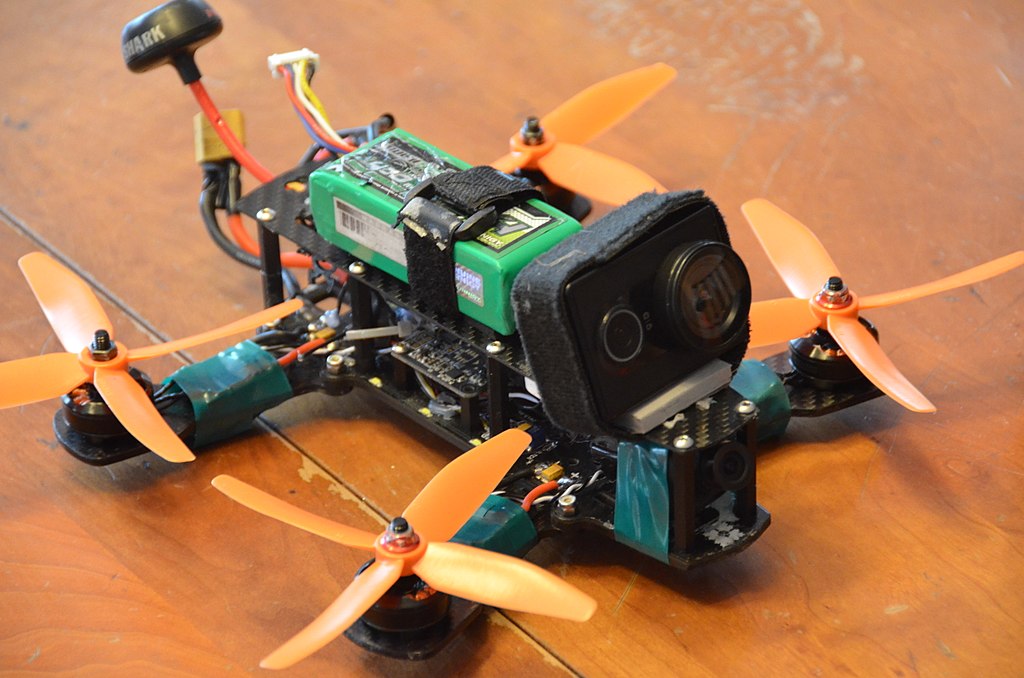
Rules
- If there is a requirement that all model aviation pilots in a host country have a current license or organizational membership to the local body governing model aeronautics then all pilots must meet that requirement in order to compete, and all pilots must adhere to the rules and regulations of safe airframe operation and flight as defined by that body.
- All pilots must adhere to any applicable regulations by the relevant local authorities responsible for manned aircraft regulations.
- Unlawful flight, such as flights near an event at locations where flying is prohibited, will likely result in disqualification from the event.
- All pilots must attend a general safety briefing and sign the appropriate waivers from the race organizer and venue.
- All pilots must demonstrate effective Fail-Safe procedures defined by the Race Director. In most cases this is a “Power Down, no pulse” method, where the aircraft will immediately cease flight by stopping all motors and operation if it loses contact with the radio transmitter.
- All pilots must have an “ARMING” position switch or sequence on their radio. The aircraft should not power up by any accidental controls from the radio. Aircraft arming may be executed by a specific switch on the radio, or by a sequence (e.g. yaw right) to actively arm the radio.
- All pilots must demonstrate an airworthy airframe and pass a general mechanics and electronics test.
- All batteries must be transported and stored in LiPo-safe bags or an approved fire-resistant container.
- Pilots must use FPV to pilot aircraft. This can be with goggles or a ground station, LCD type display.
- In events where emitter-based timing systems are used, pilots are required to have an authorized Timing System Transponder emitter properly installed on their airframe for all official lap timing purposes.
- Pilots must not power up video transmitters unless they have been instructed to do so, e.g. they are about to take part in a race. Powering up a video transmitter at all other times may result in disqualification from the event.
Association
International Drone Racing Association (IDRA) is the “World Standard in Drone Racing!” Home of the 2018 Drone Racing Series & 2018 Challengers Cup.

Drifting is a driving technique where the driver intentionally oversteers, with loss of traction in the rear wheels or all tires, while maintaining control and driving the car through the entirety of a corner. The technique causes the rear slip angle to exceed the front slip angle to such an extent that often the front wheels are pointing in the opposite direction to the turn (e.g. car is turning left, wheels are pointed right or vice versa, also known as opposite lock or counter-steering). The sport of drifting is not to be confused with the four-wheel drift, a classic cornering technique established in Grand Prix and sports car racing.
As a motoring discipline, drifting competitions were first popularized in 1970s Japan, and today are held worldwide and are judged according to the speed, angle, showmanship and line took through a corner or set of corners. The desired line is usually dictated by the judge or judges, who describe their desired line as well as highlight areas of importance, such as clipping zones, clipping points, and touch and go areas.
History
Japan was the birthplace of drifting. It was most popular in the All Japan Touring Car Championship races. The famous motorcyclist turned driver, Kunimitsu Takahashi, was the foremost creator of drifting techniques in the 1970s. This earned him several championships and a legion of fans who enjoyed the spectacle of smoking tires. The bias ply racing tires of the 1960s–1980s lent themselves to driving styles with a high slip angle. As professional racers in Japan drove this way, so did the street racers.
Keiichi Tsuchiya, known as the “Drift King” (ドリフトキング Dorifutokingu), became particularly interested in Takahashi’s drift techniques. Tsuchiya began practicing his drifting skills on the mountain roads of Japan, and quickly gained a reputation amongst the racing crowd. In 1987, several popular car magazines and tuning garages agreed to produce a video of Tsuchiya’s drifting skills. The video, known as Pluspy, became a hit and inspired many of the professional drifting drivers on the circuits today. In 1988, alongside Option magazine founder and chief editor Daijiro Inada, he helped to organize one of the first events specifically for drifting called the D1 Grand Prix. He also drifted every turn in Tsukuba Circuit in Japan.
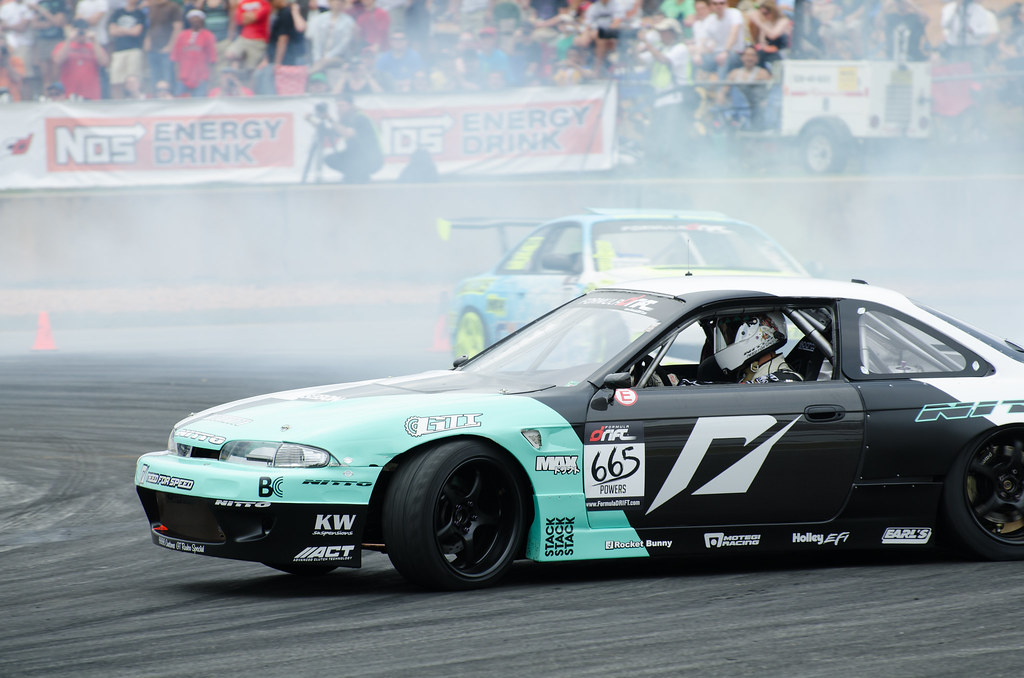
Rules
Competitors will be judged on the following criteria:
Speed.
The speed that the competitor maintains…
• entering a corner,
• through the corner,
• through the entire judged area.
A higher point score will be awarded to a competitor whose vehicle maintains a consistent, high-speed drift (relative to the radius of each corner).
Line.
How closely a competitor’s vehicle is able to follow the line requested by the Judges during the drivers’ briefing (usually this is the traditional ‘racing line’ but this is not always the case). A higher point score will be awarded to Competitors who can most accurately maintain what the Judges consider to be the correct line. There will be a combination of clipping points and clipping zones on the track, and Judges will be requesting drivers to be within a certain distance and anything outside of that will start to see deductions.
Angle.
The angle of rotation of the vehicle about its vertical axis relative to its direction of travel, as well as the competitor’s ability to sustain this angle for as long as possible.
A higher point score will be awarded to Competitors who are able to:
• quickly generate maximum angle during entry into corners, from as great a distance possible prior to reaching the apex of the corner,
• link corners using a consistent series of drifting motions,
• maintain a wide angle of drift for sustained periods, and
• control the vehicle when maximum amount of opposite lock is used.
Style
Style comprises the driver’s ability to take all of the judge’s criteria and then translate this into their own individual ‘style’ on track. It takes into account such factors as: fast and aggressive transitions; maintaining maximum angle for as prolonged period as possible along a clipping zone or past a clipping point; ability to transition the car around the section with limited handbrake corrections; prolonged proximity to the lead vehicle in a battle situation; maintaining constant speed throughout the section; and any other specific criteria outlined by judges during driver’s briefing.
Judged Area of Track
Competitors will start their run from Turn 5, with the judged area starting from the entry into Turn 6, then including Turns 7, 8, 9 and 10. The judged area will conclude at the end of turn 10 as competitors continue down the South Circuit towards Turn 11.
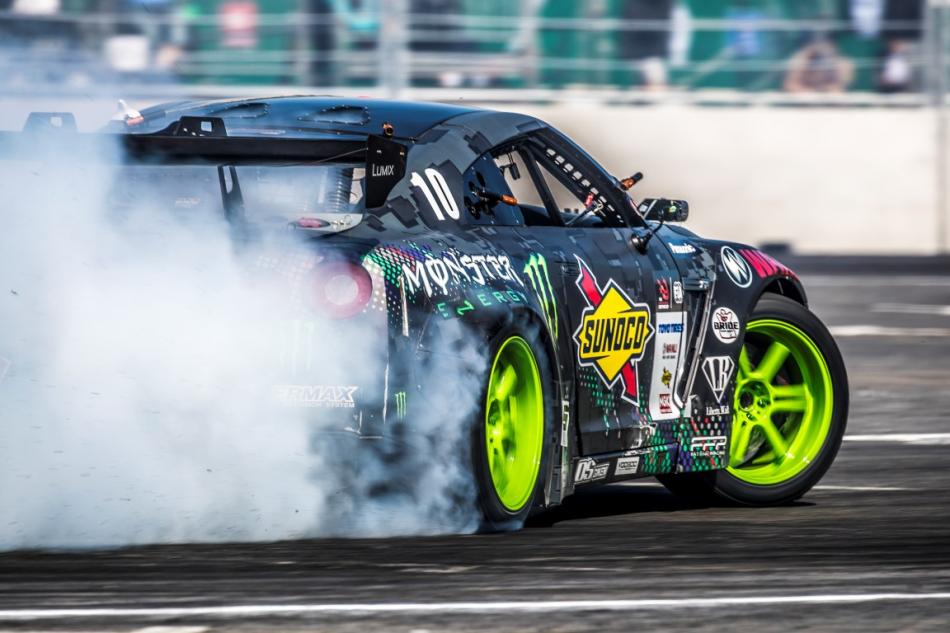
Equipments
Brakes
Stopping and slowing your car under any condition- that seems important for drifting, right? Indeed, your brakes will take a blow whenever drifting is involved. Start by upgrading your brakes so that they’re flawless, and install brake pads that are specific to racing or fast road driving.
Change your brake fluid, or exchange it for synthetic brake fluid if you haven’t already. Motul 600 and Ford 550 are popular choices among drifters.
If you want an even smoother braking setup, consider upgrading the size of the brake disks. Larger disks are blank, drilled, slotted or dimpled. Each has their own benefits:
Blank: Most surface area, easy on brake pads, most affordable, resist cracking. Drilled: Drilled holes make it easier for gas build-up to be expelled, lighter rotating mass.
Slotted: Similar to drilled, but more affordable and less prone to cracking. Dimpled: Mostly cosmetic, otherwise similar to slotted.
Slotted rotors are exceptional for any street-based car. Combined with composite brake pads, slotted brake disks offer improved fade resistance for reliable, stress-free braking.
Suspension
You need the best possible control while drifting, so a good set of coilovers is worth the investment. A’PEXi and TEIN coilovers are often found in the most popular drift cars. As for spring rate, you want a good balance without stiffness. Drift cars should be tuned so that they’re slightly stiffer than street coilover spring rates, but not as stiff as a race car.
Ideally, you want a suspension that’s easy to modify on your own, since every driver has their own preference when it comes to control and handling. Coilovers allow you to adjust the dampers easily, so you can dial in the best drift course setting on the track, then revert to a softer setting for the drive home.
Finally, avoid lowering your car below two inches. Yeah, your car may not look as cool, but drift suspension isn’t meant to work at low angles, and this will lead to poor performance.
Steering
When it comes to steering, you want to get the most angle from your steering rack so that the car can get completely sideways. Obviously, there are some limits here—wheel well clearance and binding between the suspension arms, for instance. Most drifters can extract a suitable angle by installing tie rod end spacers.
Handbrake
Ah yes, your magical drift wand, the handbrake. The handbrake is your drifting companion and should be upgraded to serve you under the most extreme conditions. It needs to be durable enough to handle the rigours of drifting. Ensure there’s no slack in the handbrake cable, and replace it immediately if it’s even slightly stretched or worn.
When you pull the handbrake, you should feel your rear pads gripping firmly. If not, make sure you beef up your brakes with fresh pads.
Body Work
Crashes are inevitable, and your car will collide with barriers and vehicles at some point or another. More often than not, drifters secure their bumpers with cable ties. This prevents the bumper from suffering irreplaceable damage in the event of a collision, as the bumper will simply break free from the cable ties, allowing you to tie it back on later.
Tyres
You’ll become quite familiar with swapping worn tyres for a fresh pair. Drifting burns through rear tyres quickly, resulting in multiple fresh tyres being used. While this might seem expensive at first, for the most part, you can use budget rear tyres and reserve slightly higher-end wheels for your front tyres, which won’t wear out nearly as frequently.
Safety
Your safety is a crucial component to your success as a drift car driver! This includes a good helmet, a fire extinguisher and a roll cage.
For head protection, any racing helmet will do. Most venues require a helmet, and sometimes a motorbike helmet will work fine. You don’t want your noggin colliding with the roll cage all the time.
Other safety items to check and include: Battery is fastened securely Battery master switch is recommended Front tyres are roadworthy Fitted fire extinguisher Oil and radiator catch tanks All lights, brake lights and indicators must be in good working condition
Seating
When it comes to seats, size does matter. You’re going to be spending a lot of time strapped into your seat, skillfully sliding around corners and changing directions on the fly. What you don’t want to worry about is rocking back and forth in your seat, clutching the steering wheel to keep you stabilised. As soon as you can, swap out the driver’s seat for a fixed-back racing seat and harness.
Association
Automobile Racing Club of America
INDYCAR
ICSCC
International Hot Rod Association
International Motor Sports Association
National Association for Stock Car Auto Racing
National Auto Sport Association
National Hot Rod Association

A dragon boat is a human-powered watercraft originating from the Pearl River Delta region of China‘s southern Guangdong Province. These were made of teak, but in other parts of China, different kinds of wood are used. It is one of a family of traditional paddled long boats found throughout Asia, Africa, the Pacific islands, and Puerto Rico. The sport of dragon boat racing has its roots in an ancient folk ritual of contending villagers, which dates back 2000 years throughout southern China, and even further to the original games of Olympia in ancient Greece. Both dragon boat racing and the ancient Olympiad included aspects of religious observances and community celebrations, along with competition.
History
Dragon boat racing is a canoe-sport and began as a modern international sport in Hong Kong in 1976. These boats are typically made of carbon fiber, fiberglass, and other lightweight materials. For competition events, dragon boats are generally rigged with decorative Chinese dragon heads and tails. At other times (such as during training), decorative regalia is usually removed, although the drum often remains aboard for drummers to practice. For races, there are 18-20 people in a standard boat, and 8-10 in a small boat, not including the steersperson (helm) and the drummer.
In December 2007, the central government of the People’s Republic of China added Duanwu, along with Qingming and Mid-Autumn festivals, to the schedule of national holidays.
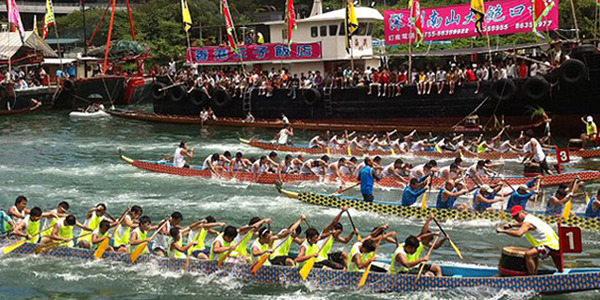
Rules
For Rookie Mushers Planning to Run the 2019 (or later) Iditarod Trail Sled Dog Race
If you are a rookie musher planning on entering a future Iditarod, you must get a report card from your qualifying races completed by race officials and returned to the Iditarod office within 10 days of the end of the qualifying race. It is YOUR responsibility to advise officials prior to the start of the race that you are using that race for a qualifier and will need the report card completed and to provide officials with the correct form, which you will find on the website along with the other paperwork. That way, officials will know ahead of time to watch you so they can complete the report card. You should do that if there is any slight thought in your head about one day running the Iditarod. There is no time frame on completing qualifiers.
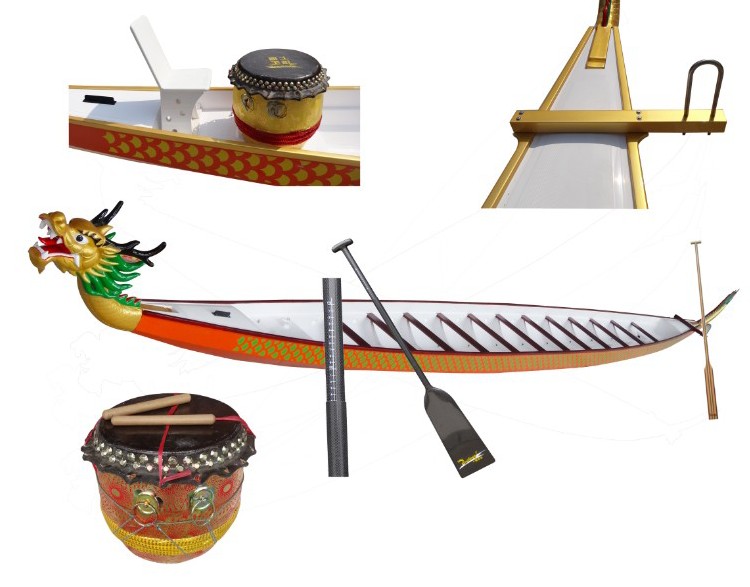
Equipments
The crew of a standard dragon boat is typically 22: 20 paddlers in pairs facing toward the bow of the boat, 1 drummer or caller at the bow facing toward the paddlers, and 1 steered standing at the rear of the boat. Dragon boats, however, do vary in length and the crew size changes accordingly, from small dragon boats with only 10 paddlers up to traditional boats which have upwards of 50 paddlers, plus drummer(s) and steered.
Drummer:
The pulsation of the drum beats produced by the drummer may be considered the “heartbeat” of the dragon boat. The drummer leads the paddlers throughout a race using the rhythmic drum beat to indicate the frequency and synchronicity of all the paddlers’ strokes (that is, the cadence, picking up or accelerating the pace, slowing the rate, etc.). The drummer may issue commands to the crew through a combination of hand signals and voice calls, and also generally exhorts the crew to perform at their peak. A drummer is typically mandatory during racing events, but if he or she is not present during training, it is typical for the sweep to direct the crew during a race. The drummer’s role is both tactical and ceremonial. In official competitions, such as world championships, drummers must physically beat the drum, else the team may be issued a penalty. In other events or practices, the drummer of an experienced team may not hit the drum, as the team can paddle naturally together, sans a drum beat.
Good drummers should be able to synchronize their drumming with the strokes of the leading pair of paddlers, rather than the other way around.
Paddlers
Pairs of paddlers sit facing forward in the boat, and use a specific type of paddle which, unlike equipment used in rowing, is not rigged to the boat in any way. Because the paddlers face the direction of boat-movement, dragon boaters “paddle,” and do not “row.”
The paddle now accepted by the International Dragon Boat Federation has a standardized, fixed blade surface area and distinctive shape derived from the paddle shapes characteristic of the Zhu Jiang (Pearl River) delta region of Guangdong Province, China, close to where Hong Kong is located. The IDBF[2] Paddle Specification 202a (PS202a)[3] has straight flared edges and circular arced shoulders, based geometrically on an equilateral triangle positioned between the blade face and the neck of the shaft.
The first pair of paddlers, called “pacers,” “strokes” or “timers,” set the pace for the team and are responsible for synchronizing their strokes with one another. It is critical that all paddlers are synchronized. The direction of the dragon boat while racing is set by the steerer, but for docking and other maneuvers, individual paddlers may be asked to paddle (while others either stop the boat or rest) according to the commands given by the drummer or steerer.
There are generally three different strokes used by paddlers: a (normal) forward stroke, a backstroke, and a draw stroke.
Steerer:
The direction of a dragon boat’s movement is controlled by the steerer standing in the back of the boat. Many terms exist for the person steering the boat, such as steerer, steersperson, sweep, and helm.
The steerer manipulates a long (typically 9-feet) straight oar, called a steering oar. The steering oar is situated in the upside-down U-shaped oar lock. The oar lock is housed on top of the steering arm, which sticks out perpendicularly on the back-left of a dragon boat.
The oar is used to both steer the boat as it is moving and adjust the positioning of the boat. To steer, a steerer will put the blade of the oar into the water and either push the handle away from him/her, or pull it toward him/her. Doing so will turn the boat right or left, respectively.
A steerer can also use the steering oar to adjust the position of the boat by cranking. When a steerer cranks the steering oar, the stern of the boat moves either to the left or right, spinning the boat. This is typically executed to turn the boat around at practice or to ensure a boat is lined up straight and pointing directly down a racecourse.
Association
The established International Federation for dragon boat sport is the International Dragon Boat Federation (IDBF). In 2007, the IDBF was recognized as a member of Sport Accord (the former General Association of International Sports Federations, GAISF) which is part of the Olympic Movement, considering the own historical and cultural backgrounds and identities of dragon boat sports.
IDBF member associations or federations have been established in 89 countries or territories since 1991. The IDBF is not presently an Olympic International Federation of the International Olympic Committee (IOC), but the IOC is currently considering the IDBF application for Olympic Federation status.

Skiing, or traveling over snow on skis, has a history of at least eight millennia. The earliest archaeological examples of skis were found in Russia and date to 6000 BCE. Although modern skiing has evolved from beginnings in Scandinavia, 5000-year-old wall paintings suggest the use of skis in the Xinjiang region of what is now China. Originally purely utilitarian, starting in the mid-1800s skiing became a popular recreational activity and sport, becoming practiced in snow-covered regions worldwide, and providing a market for the development of ski resorts and their related communities.
History
The first recorded organized skiing exercises and races are from military uses of skis in Norwegian and Swedish infantries. For instance, details of military ski exercises in the Danish-Norwegian army from 1767 are retained: Military races and exercises included downhill in rough terrain, target practice while skiing downhill, and 3 km cross-country skiing with a full military backpack.
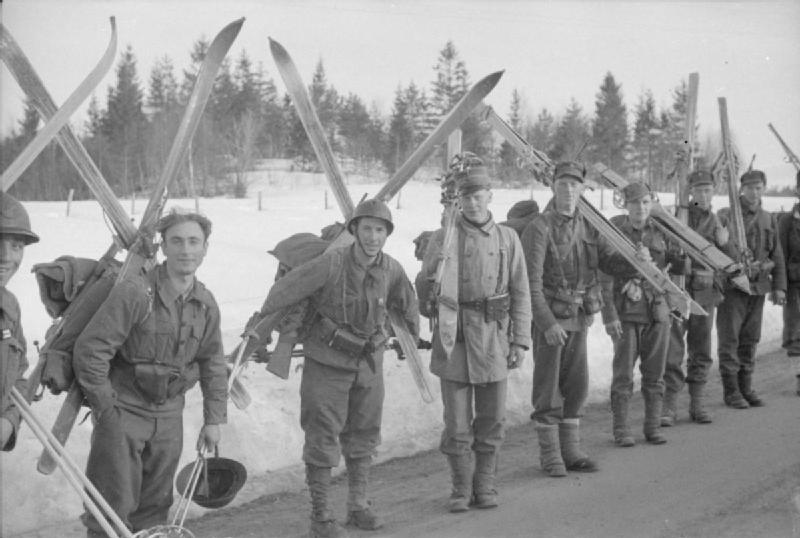
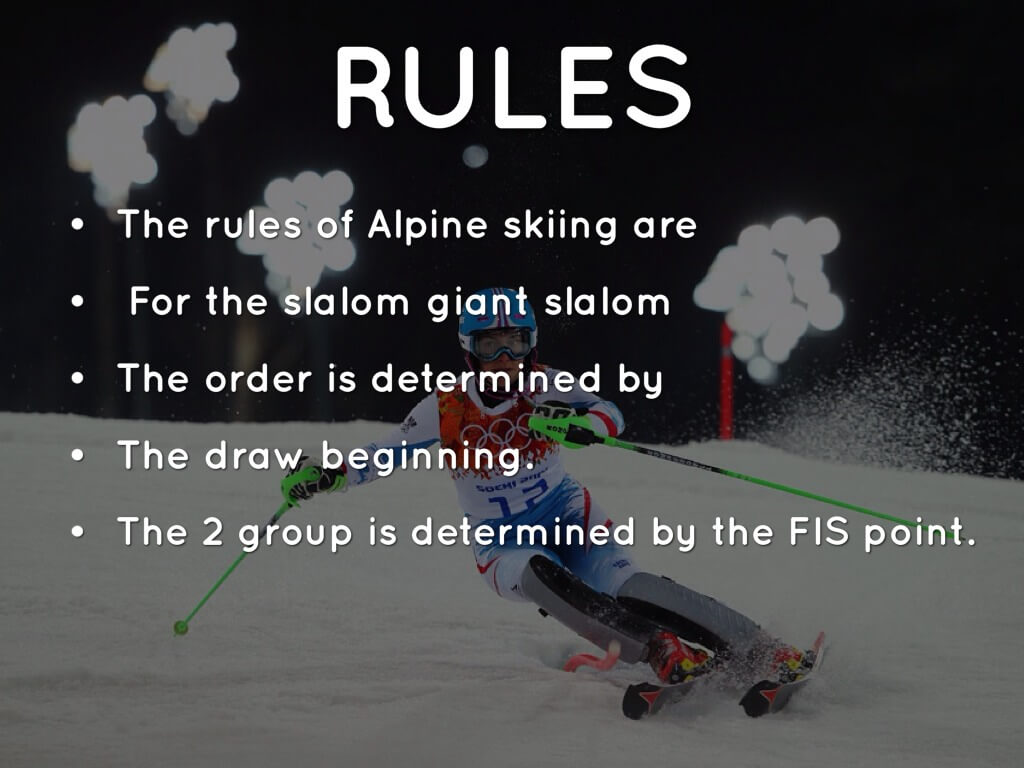
Rules
For Rookie Mushers Planning to Run the 2019 (or later) Iditarod Trail Sled Dog Race
If you are a rookie musher planning on entering a future Iditarod, you must get a report card from your qualifying races completed by race officials and returned to the Iditarod office within 10 days of the end of the qualifying race. It is YOUR responsibility to advise officials prior to the start of the race that you are using that race for a qualifier and will need the report card completed and to provide officials with the correct form, which you will find on the website along with the other paperwork. That way, officials will know ahead of time to watch you so they can complete the report card. You should do that if there is any slight thought in your head about one day running the Iditarod. There is no time frame on completing qualifiers.
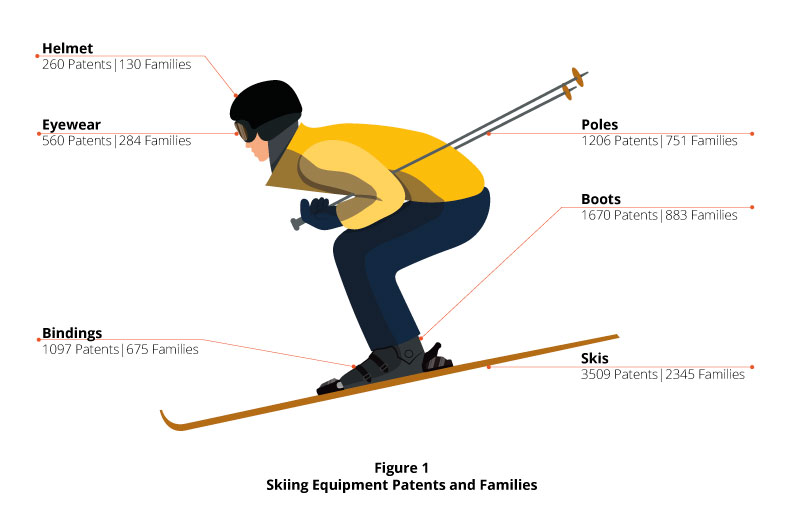
Equipments
Skis
Asymmetrical skis were used at least in northern Finland and Sweden up until the 1930s. On one leg the skier wore a long straight non-arching ski for sliding and on the other a shorter ski for kicking. The bottom of the short ski was either plain or covered with animal skin to aid this use, while the long ski supporting the weight of the skier was treated with animal fat in a similar manner to modern ski waxing. An early record of this type of skis survives in works of Olaus Magnus. He associates them to Sami people and gives Sami names of savek and golos for the plain and skinned short ski. Finnish names for these are lyly and kalhu for a long and short ski.
Bindings
Old ski binding
In the early days of skiing the binding was also similar to those of a contemporary snowshoe, generally consisting of a leather strap fastened over the toe of the boot. In the 1800s, skiing evolved into a sport and the toe strap was replaced by a metal clip under the toe. This provided much greater grip on the boot, allowing the ski to be pushed sideways. The heel strap also changed over time; in order to allow a greater range of motion, a spring was added to allow the strap to lengthen when the boot was rotated up off the ski.
This buckled strap was later replaced by a metal cable. The cable binding remained in use and even increased in popularity, throughout this period as cross-country skiing developed into a major sport of its own. Change eventually came through the evolution of the Rottefella binding, first introduced in 1927. The original Rottefella eliminated the heel strap, which held the boot forward in the binding, by drilling small holes in the sole of the boot which fit into pins in the toe piece. This was standardized as the 3-pin system, which was widespread by the 1970s. It has now generally been replaced by the NNN system.
The introduction of ski lifts in 1908 led to an evolution of skiing as a sport. In the past, skiers would have to ski or walk up the hills they intended to ski down. With the lift, the skiers could leave their skis on and would be skiing downhill all the time. The need to unclip the heel for cross-country use was eliminated, at least at resorts with lifts. As lifts became more common, especially with the introduction of the chairlift in 1936, the ski world split into cross-country and downhill, a split that remains to this day.
In 1937 Hjalmar Hvam broke his leg skiing, and while recuperating from surgery, invented the Saf-Ski toe binding.
Poles:
Early skiers used one long pole or spear. The first depiction of a skier with two ski poles dates to 1741. In 1959 Ed Scott introduced the large-diameter, tapered shaft, lightweight aluminum ski pole.
Glide and grip
Johannes Scheffer in Argentoratensis Lapponiæ (History of Lapland) in 1673 probably gave the first recorded instruction for ski wax application He advised skiers to use pine tar pitch and rosin. Ski waxing was also documented in 1761.
1934 saw limited production of solid aluminum skis in France. Wax does not stick to aluminum, so the base under the foot included grips to prevent backsliding, a precursor of modern fish scale waxless skis. In 1970 waxless Nordic skis were made with fishscale bases. Klister, a sticky material, which provides grip on snow of all temperatures that have become coarse-grained as a result of multiple freeze-thaw cycles or wind packing, was invented and patented in 1913 by Peter Østbye. Recent advancements in wax have been the use of surfactants, introduced in 1974 by Hertel Wax, and fluorocarbons, introduced in 1986, to increase water and dirt repellency and increase glide. Many companies, including Swix, Toko, Holmenkol, Briko, and Maplus are dedicated to ski wax production and have developed a range of products to cover various conditions.
Association
International organizations
- International Biathlon Union (IBU)
- International Ski Federation (FIS)
- International Ski Instructors Association (ISIA)
- International Skiing History Association (ISHA)
National organizations
- Iran Ski Federation
- US National Ski Hall of Fame
- Professional Ski Instructors of America
- Swiss Ski Association (in French and German)
- British Association of Snowsport Instructors
- Ski Club of Great Britain
- United States Ski and Snowboard Association
- Croatian Ski Association / Hrvatski skijaški savez (HSS)
- National Ski Patrol
- CSIA – Canadian Ski Instructors’ Alliance
- Alpine Canada Alpin
- S. Ski Team
- S. Ski and Snowboard Association
- New Zealand Snowsports Instructors Alliance
- Snowsport GB – The British Ski and Snowboard Federation
- CFSA – Canadian Freestyle Ski Association
- SAHK – Ski Association of Hong Kong, China Limited
- Nederlandse Ski Vereniging – Dutch Ski Association

Dog power has been used for hunting and travel for over a thousand years. As far back as the 10th century BCE, these dogs have contributed to human culture.
Assembling a dog sled team involves picking leader dogs, point dogs, swing dogs, and wheel dogs. The lead dog is crucial, so mushers take particular care of these dogs. Another important detail is to have powerful wheel dogs to pull the sled out from the snow. Point dogs (optional) are located behind the leader dogs, swing dogs between the point and wheel dogs, and team dogs are all other dogs in between the wheel and swing dogs and are selected for their endurance, strength, and speed as part of the team. In dog sledding, Siberian Huskies or Alaskan Malamutes are the main types of dogs that are used for recreational sledding because of their strength and speed and endurance as well as their ability to withstand the cold. However, Alaskan Huskies (a mix between Siberian Huskies and Alaskan Malamutes) are also a popular dog for sled dog racing, because of their endurance, good eating habits, speed, and dedication to running even when tired.
History
The first Arctic explorers were men with sled dogs. Due to the success of using sled dogs in the Arctic, it was thought they would be helpful in the Antarctic exploration as well, and many explorers made attempts to use them. Sled dogs were used until 1992 when they were banned from Antarctica by the Protocol on Environmental Protection to the Antarctic Treaty.
The most commonly used dog in dog sled racing, the Alaskan Husky is a mongrel bred specifically for its performance as a sled dog. They first came into existence in the late 1800s. Occasionally, Alaskan Huskies are referred to as Indian Dogs, because the best ones supposedly come from Native American villages in the Alaskan and Canadian interiors. They weigh between 18 and 34 kilograms (40 and 75 lb) and may have dense or sleek fur. Alaskan Huskies bear little resemblance to the typical husky breeds they originated from, or to each other.
There are two genetically distinct varieties of Alaskan Husky: a sprinting group and a long-distance group. Alaskan Malamutes and Siberian Huskies contributed the most genetically to the long-distance group, while Pointers and Salukis contributed the most to the sprinting group. Anatolian Shepherd Dogs contributed a strong work ethic to both varieties. There are many Alaskan Huskies that are partially Greyhound, which improves their speed. Although some Alaskan Huskies are known to be part wolf, which increases their endurance, these wolfdogs are generally disliked since they have a reputation of being difficult to control.
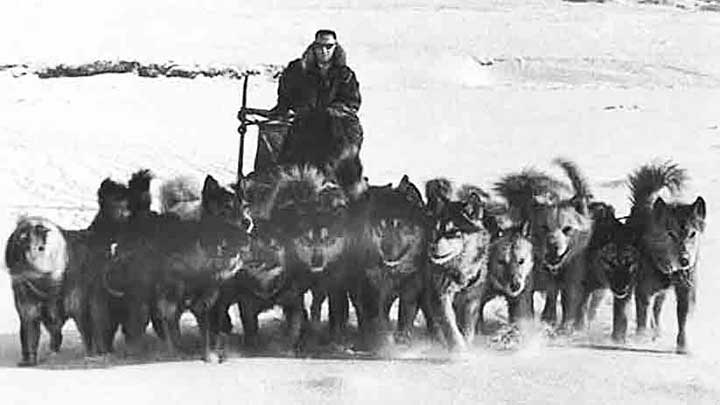
Rules
For Rookie Mushers Planning to Run the 2019 (or later) Iditarod Trail Sled Dog Race
If you are a rookie musher planning on entering a future Iditarod, you must get a report card from your qualifying races completed by race officials and returned to the Iditarod office within 10 days of the end of the qualifying race. It is YOUR responsibility to advise officials prior to the start of the race that you are using that race for a qualifier and will need the report card completed and to provide officials with the correct form, which you will find on the website along with the other paperwork. That way, officials will know ahead of time to watch you so they can complete the report card. You should do that if there is any slight thought in your head about one day running the Iditarod. There is no time frame on completing qualifiers.

Equipments
- The quintessential piece of dog sledding equipment, besides the dogs, of course, is the dog sled. Today there are many different styles of dog sleds built out of different types of material. Sleds are built differently depending on the use. Sleds with larger beds are generally “expedition” style sleds designed for mid and long distance races and the training that they involve. The bigger beds allow mushers to carry the necessary gear needed for spending time on the trail. Sleds for sprint racing are generally much smaller and nimbler.Sleds are commonly made out of wood, carbon fiber, and aircraft aluminum. Materials need be both tough and lightweight – we don’t want our dogs pulling weight they don’t need to be!
Brushbow
The brushbow is like the front bumper of the sled.
Bed
The bed is the flat part of the sled that is used for storage and hauling gear. Generally, sleds used for long distance mushing will have a longer bed than those used for sprint racing.
Runners
The runners are what the sled sits on.
Brake
The brake is used to stop the team. There are several different styles of brakes made by various companies. We’ve found that the best brake we’ve ever used.
Dragmat
The dragmat is the speed control of the team.
Association

Greyhound racing is an organized, competitive sport in which greyhounds are raced around a track. There are two forms of greyhound racing, track racing (normally around an oval track) and coursing. Track racing uses an artificial lure (now based on a windsock) that travels ahead of the dogs on a rail until the greyhounds cross the finish line. As with horse racing, greyhound races often allow the public to bet on the outcome.
In many countries, greyhound racing is purely amateur and solely for enjoyment. In other countries, particularly Australia, Ireland, Macau, Mexico, Spain, the United Kingdom and the United States, greyhound racing is part of the gambling industry and similar to horse racing.
Animal rights and animal welfare groups are critical of the welfare of greyhounds in the commercial racing industry. A greyhound adoption movement spearheaded by kennel owners has arisen to assist retired racing dogs in finding homes as pets, with an estimated adoption rate of over 95% in the US.
History
Modern greyhound racing has its origins in coursing. The first recorded attempt at racing greyhounds on a straight track was made beside the Welsh Harp reservoir, Hendon, England, in 1876, but this experiment did not develop. The industry emerged in its recognizable modern form, featuring circular or oval tracks, with the invention of the mechanical or artificial hare, in 1912, by an American, Owen Patrick Smith. O.P. Smith had altruistic aims for the industry to stop the killing of the jackrabbits and see “greyhound racing as we see horse racing”.In 1919, Smith opened the first professional dog-racing track with stands in Emeryville, California. The certificates system led the way to pari-mutuel betting, as a quarry and on-course gambling, in the United States during the 1930s.
The oval track and mechanical hare were introduced to Britain, in 1926, by another American, Charles Munn, in association with Major Lyne-Dixson, a Canadian, who was a key figure in coursing. Finding other supporters proved rather difficult however and with the General Strike of 1926 looming, the two men scoured the country in an attempt to find others who would join them. Eventually, they met Brigadier-General Critchley, who introduced them to Sir William Gentle. Between them they raised £22,000 and like the American ‘International Greyhound Racing Association’ (or the I.G.R.A.), they launched the Greyhound Racing Association holding the first British meeting at Manchester’s Belle Vue Stadium. The industry was successful in cities and towns throughout the UK – by the end of 1927, there were forty tracks operating.
The industry of greyhound racing was particularly attractive to predominantly male working-class audiences, for whom the urban locations of the tracks and the evening times of the meetings were accessible, and to patrons and owners from various social backgrounds. Betting has always been a key ingredient of greyhound racing, both through on-course bookmakers and the totalizator, first introduced in 1930. Like horse racing, it is popular to bet on the greyhound races as a form of pari-mutuel gambling.
Greyhound racing enjoyed its highest UK attendances just after the Second World War — for example, attendances during 1946 were estimated to be around 75 million based on an annual totalizator turnover of £196,431,430. The industry experienced a decline from the early 1960s after the 1960 UK Betting and Gaming Act permitted off-course cash betting. Sponsorship, limited television coverage, and the later abolition of on-course betting tax have partially offset this decline.

Rules
The main object of betting on greyhounds is to beat the ‘Oddsmakers‘ or the ‘Odds Compilers‘ and win some money. Additionally, placing a bet on your favorite event makes the race exciting and more enjoyable.
Betting is done through Sports books or Sportsbooks (US) or Bookmakers (UK) entities that accept bets. You can bet on the outcome of greyhound races and several sporting events.
To place a bet, you go to a sportsbook, physical or online. You could also bet over the phone with many sportsbooks. Note that a sportsbook is not the same as an oddsmaker. The sports book simply accepts sports bets. An oddsmaker is a person who sets the betting odds.
You need to state what you are betting on by making a selection, the type of bet and the amount you are wagering. Your selection will obviously depend on the odds offered, so you will want to examine the range of odds available before you make a decision.
There are many types of bets you can place. Some sportsbooks may offer more betting varieties and combinations than others. Below is a list of the more common types of bets used in greyhounds racing. Different countries may use different terms for how to bet and also for the types of bets.
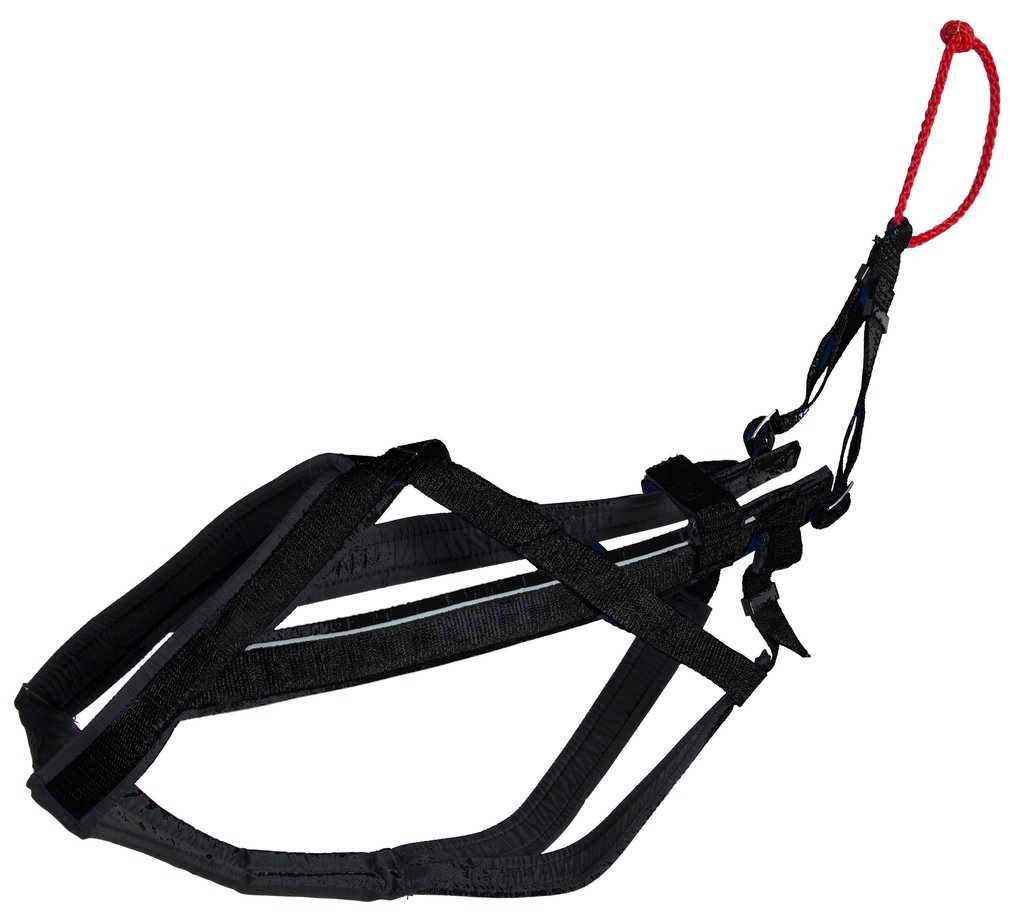
Equipments
- Slaney side kennels greyhound racing supplies section offers a complete range of greyhound racing equipment from:
- Leather leads to nylon.
- Waterproof walk out coats for racing.
- Fleece coats for the kennels.
- Greyhound box muzzles and racing muzzles.
- Coursing muzzles.
- Slip Leads.
- Wide range of greyhound feeding bowls.
Association
- The Greyhound Racing Association (GRA Acquisition Limited) is a UK-based private company founded in 1925 and involved in the management of sports venues, notably greyhound racing stadia (despite its name, it is not involved in the administration of greyhound racing – that is the responsibility of the Greyhound Board of Great Britain). The company now trades as GRA Acquisition following the sale of the GRA by parent company Webley plc in 2005.As of 2019, the Greyhound Racing Association operates two stadia; the Belle Vue Stadium in Manchester (which is leased), and the Perry Barr Stadium in Birmingham


Diving is the sport of jumping or falling into water from a platform or springboard, usually while performing acrobatics. Diving is an internationally recognized sport that is part of the Olympic Games. In addition, unstructured and non-competitive diving is a recreational pastime.
Diving is one of the most popular Olympic sports with spectators. Competitors possess many of the same characteristics as gymnasts and dancers, including strength, flexibility, kinaesthetic judgment, and air awareness. Some professional divers were originally gymnasts or dancers as both the sports have similar characteristics to diving. Dmitri Sautin holds the record for most Olympic diving medals won, by winning eight medals in total between 1992 and 2008.
History
The history of underwater diving starts with freediving as a widespread means of hunting and gathering, both for food and other valuable resources such as pearls and coral, By classical Greek and Roman times commercial applications such as sponge diving and marine salvage were established, Military diving also has a long history, going back at least as far as the Peloponnesian War, with recreational and sporting applications being a recent development. Technological development in ambient pressure diving started with stone weights (skandalopetra) for a fast descent. In the 16th and 17th centuries diving bells became functionally useful when a renewable supply of air could be provided to the diver at depth, and progressed to surface supplied diving helmets – in effect miniature diving bells covering the diver’s head and supplied with compressed air by manually operated pumps – which were improved by attaching a waterproof suit to the helmet and in the early 19th century became the standard diving dress.
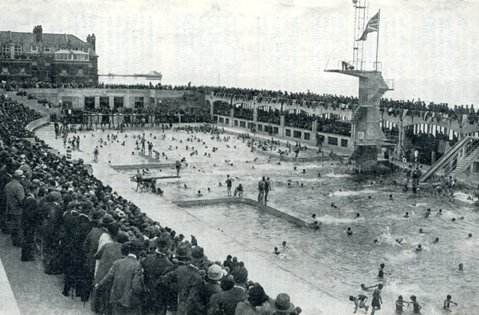

Rules
Standard height from the floor to the bullseye on the dartboard is 5 feet 8 inches, while the oche (distance between the front of the board and the toe line) should measure 7 feet 9.25inches. Basic Rules: In a game of 501 the object is for one player or a team to be the first to reach zero from starting a total of 50.
Various games can be played (and still are played informally) using the standard dartboard. However, in the official game, any dart landing inside the outer wire scores as follows:
- Hitting one of the large portions of each of the numbered sections, traditionally alternately colored black and white, scores the points value of that section.
- Hitting the thin inner portions of these sections, roughly halfway between the outer wire and the central circle colored red or green, scores triple the points value of that section.
- Hitting the thin outer portions of these sections, again colored red or green, scores double the points value of that section. The double-20 is often referred to as double-top, reflecting the 20’s position on the dartboard.
- The central circle is divided into a green outer ring worth 25 points (known as “outer”, “outer bull”, or “single bull”) and a red or black inner circle (usually known as “bull”, “inner bull” or “double bull”), worth 50 points. The term “bullseye” can mean either the whole central part of the board or just the inner red/black section. The term “bull’s ring” usually means just the green outer ring. The inner bull counts as a double when doubling in or out.
- Hitting outside the outer wire scores nothing.
- A dart only scores if its point is embedded in or is touching the playing surface. This rule applies to any dart that lands in such a way as to be partially or totally supported by others that have already hit the board.
- When a standard board is used, any dart whose point does not remain in contact with the playing surface until being collected by the player does not score. This includes darts that bounce off the board for any reason, that fall off on their own, or that are dislodged by the impact of later throws. However, when an electronic board is used, fallen/dislodged darts do score as long as their impacts have registered on the board first.
The highest score possible with three darts is 180, commonly known as a “ton 80” (100 points is called a ton), obtained when all three darts land in the triple 20. In the televised game, the referee frequently announces a score of 180 in exuberant style. A “quad” ring appeared briefly between the triple ring and the bull in the 1990s, leading to a potential 240 maximum (three quad-20s), a 210 maximum checkout (Q20-Q20-Bull) and seven dart finishes from a 501 start (five quad-20s, triple-17, bullseye), but was swiftly dropped from professional tournament play after only two years. One make of this board was the Harrows Quadro 240.
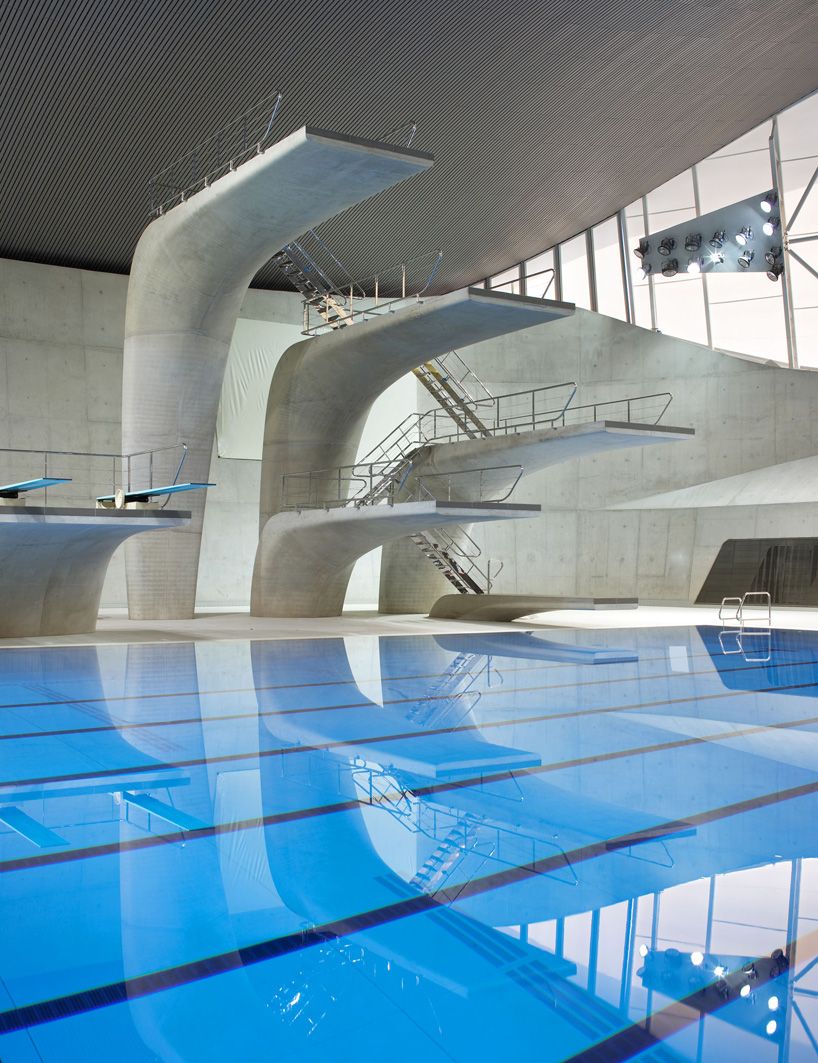
Equipments
- Diving Bell: The diving bell is one of the earliest types of equipment for underwater work and exploration. Its use was first described by Aristotle in the 4th century BC: “…they enable the divers to respire equally well by letting down a cauldron, for this does not fill with water, but retains the air, for it is forced straight down into the water.”According to Roger Bacon, Alexander the Great explored the Mediterranean on the authority of Ethics the astronomer.The earliest applications were probably for commercial sponge fishing.Diving bells were developed in the 16th and 17th century as the first significant mechanical aid to underwater diving. They were rigid chambers lowered into the water and ballasted to remain upright in the water and to sink even when full of air.The first reliably recorded use of a diving bell was by Guglielmo de Lorena in 1535 to explore Caligula’s barges in Lake Nemi. In 1616, Franz Kessler built an improved diving bell.Mask: A mask lets you see clearly. A scuba regulator and tank provide the air you need. Fins allow you to swim efficiently, and a wetsuit helps you stay warm. Whether you’re just starting as a scuba diver or you’re an experienced diver looking for new equipment, you’ll find helpful suggestions and tips in this section.

- Armored: Diving suits can be divided into two classes: “soft” or ambient pressure diving suits – examples are wetsuits, dry suits, semi-dry suits and dive skins, and “hard” or atmospheric pressure diving suits – armored suits that keep the diver at atmospheric pressure at any depth within the operating range of the suit.Wetsuit socks: Wetsuit socks are made from neoprene and can help keep your feet warm and dry when you are in the water. Generally, diver wears wetsuit socks when using closed heel (full-foot) fins. Many water sports enthusiast prefer wetsuit socks to boots are they are lighter and more flexible.
Association
Organizations which publish standards for competence in technical diving skills and knowledge, and issue certification for divers assessed as competent against these standards by affiliated schools or instructors:
- ANDI – American Nitrox Divers International
- BSAC – British Sub Aqua Club
- PADI TecRec (DSAT) – Professional Association of Diving Instructors
- GUE – Global Underwater Explorers
- IANTD – International Association of Nitrox and Technical DiversCMAS code INT/F01
- IART – International Association of Rebreather Trainers.
- ISE – InnerSpace Explorers
- NAUI Tec – National Association of Underwater Instructors
- ProTec – Professional Technical and Recreational DivingCMAS code INT/F08
- PSAI – Professional Scuba Association International
- PSS Technical Division – Professional Scuba Schools
- SAA – The Sub-Aqua AssociationCMAS code GBR/F03
- TDI – Technical Diving InternationalEUF CB 2006002 CMAS code INT/F05
- SSI TXR – Scuba Schools International
- SwedTech Diving – SwedTech Diving
- UTD – Unified Team Diving
- NASE – National Academy of Scuba Educators
- ITDA – International Technical Diving Agency
- RAID – Rebreather Association of International Divers

Disc golf (occasionally called Frisbee golf or frolf which is improper terminology) is a flying disc sport in which players throw a disc at a target; it is played using rules similar to golf. It is often played on a course of 9 or 18 holes. Players complete a hole by throwing a disc from a tee area toward a target, throwing again from the landing position of the disc until the target is reached. Usually, the number of throws a player uses to reach each target are tallied (often in relation to par), and players seek to complete each hole, and the course, in the lowest number of total throws.
The game is played in about 40 countries and currently, there are over 115,000 active members of the PDGA worldwide (as of 2018)
History
Disc golf was first invented in the early 1900s. The first game was held in Bladworth, Saskatchewan, Canada in 1926. Ronald Brandon Cain and a group of his Bladworth Elementary School buddies played a game of throwing tin lids into 4 foot wide circles drawn into sandy patches on their school grounds. They called the game Tin Lid Golf and played on a fairly regular basis. However, after they grew older and went their separate ways, the game came to an end. It was not until the 1970s that modern disc golf would be introduced to Canadians at the Canadian Open Frisbee Championships in Toronto and Vancouver, BC.
Modern disc golf started in the early 1960s, but there is debate over who came up with the idea first. The consensus is that multiple groups of people played independently throughout the 1960s. Students at Rice University in Houston, Texas, for example, held tournaments with trees as targets as early as 1964, and in the early 1960s, players in Pendleton King Park in Augusta, Georgia would toss Frisbees into 50-gallon barrel trash cans designated as targets. In 1968 Frisbee Golf was also played in Alameda Park in Santa Barbara, California by teenagers in the Anacapa and Sola street areas. Gazebos, water fountains, lamp posts, and trees were all part of the course. This took place for several years and an Alameda Park collectors edition disc still exists, though rare, as few were made. Clifford Towne from this group went on to hold a National Time Aloft record.
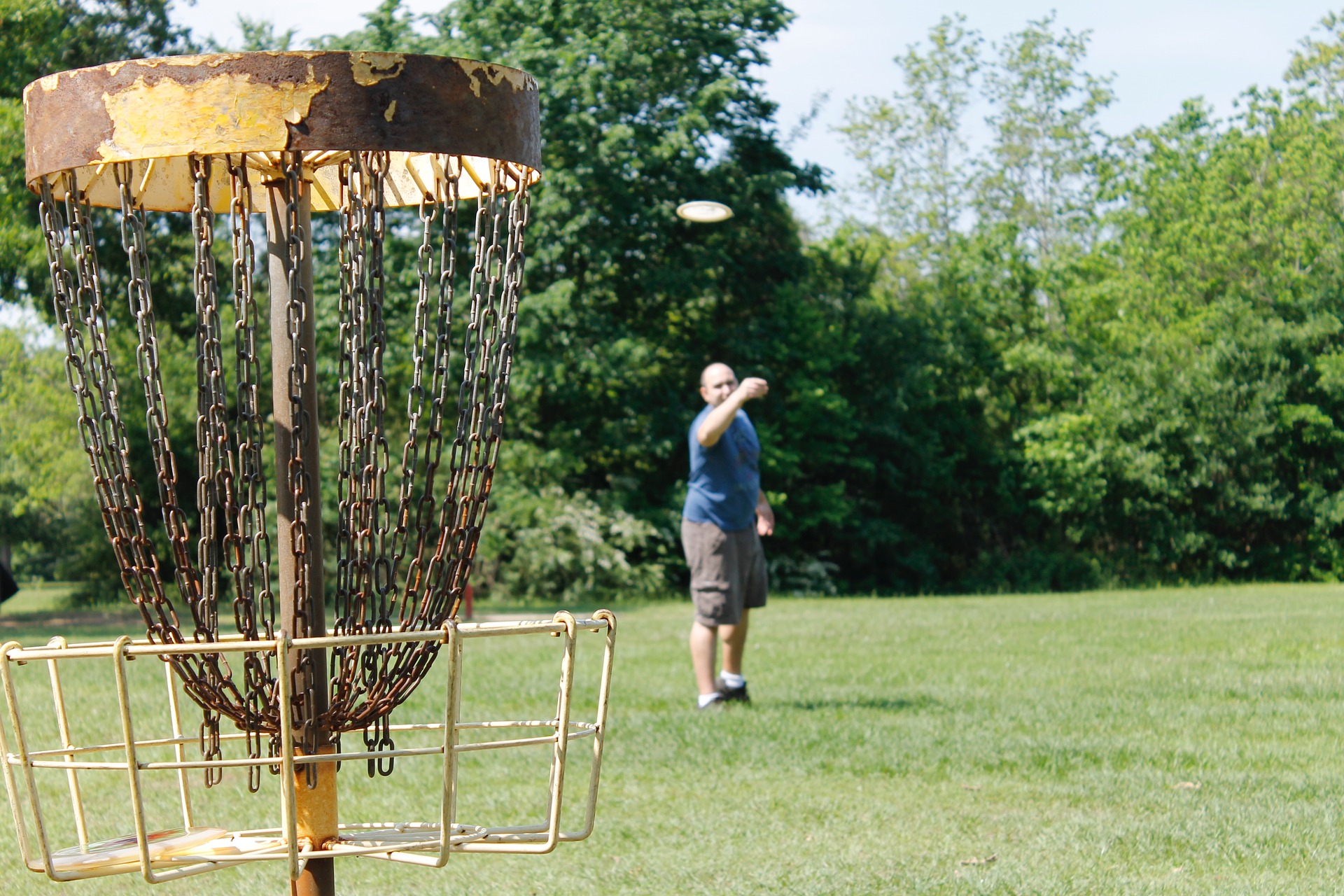
How to play?
How to play?
The sport of disc golf is set up similar to a game of golf. A “round” is played on a disc golf course consisting of a number of “holes”, usually 9 or 18. Each hole includes a tee position for starting play and a disc golf target some distance away, often with obstacles such as trees, hills or bodies of water in between. Players begin by throwing a disc from the tee and navigate the hole by picking up the disc where it lands and throwing again until they reach the target. The object of the game is to get through the course with the lowest number of total throws. Play is usually in groups of five or fewer, with each player taking a turn at the tee box, then progressing with the player furthest from the hole throwing first, while the other players stand aside.
Each course is unique, so each course requires a different combination of throws to complete, with the best players aiming to shape the flight of the disc to account for distance, terrain, obstacles, and weather. In order to facilitate making different shots, players carry a variety of discs with different flight characteristics, choosing an appropriate disc for each throw. Some players also carry a mini marker disc, used to accurately mark the throwing position before each throw. Use of mini marker discs is particularly prevalent in formal competitive play.
Many courses include out-of-bounds areas, commonly called “OB zones” or just “OB”. If the disc lands in these areas, the player is usually required to add a penalty throw onto his or her score and continue play from near where the disc entered the out-of-bounds zone. Some courses include out-of-bounds areas with special rules requiring the player the resume play from a specified area called a drop zone or requiring the player to restart the hole from the tee. Some courses also include Mandatories (also called “Mandos”) which require the path of the disc to be above, below or to one side of a specific line indicated by a sign.
By tradition, players throw from the tee box in the order of their score on the previous hole, with the lowest scorer throwing first. Most players also follow a loose code of courtesy while playing, which includes norms such as standing out of the sight line of the throwing player and avoiding making distracting noises. Because a thrown disc could injure someone, the Professional Disc Golf Association recommends that players “Never throw into a blind area or when spectators, pedestrians or facility users are within range.
Rules
Tee Throws
Each hole begins with a tee throw. Tee throws must be completed within or behind the designated tee area.
Lie
The lie is the spot where the player’s previous throw has landed. Mark lie with a mini disc or turn over the thrown disc, directly towards the hole or designated fairway. The player’s subsequent throw is made from directly behind the marked lie.
Throwing Order
The player with the least amount of strokes on the previous hole is the first to tee off on the next hole. After teeing off, the player whose disc is farthest from the hole always throws first.
Fairway Throws
Fairway throws must be made from directly behind the lie. A run-up and normal follow-through, after release, is allowed, unless the lie is within 10 meters of the target. Any shot within 10 meters of the target requires that the player not move past the lie until the disc is at rest.
Dogleg (or Mandatory)
A dogleg is one or more designated trees or poles in the fairway that must be passed as indicated by arrows. Until the dogleg is passed the closest foot to the dogleg must be on the lie when the disc is released.
Completion Of Hole
A disc that comes to rest in the disc golf basket basket or chains constitutes successful completion of that hole.
Unplayable Lie
Any disc that comes to rest above the ground is considered an unplayable lie. The disc must be thrown from the lie on the ground, directly underneath the unplayable lie, relocated to avoid damage to the vegetation.
Out Of Bounds
If any area of O.B. is visible between the disc and O.B. line, then the disc is considered O.B. A throw that lands out of bounds, must be played from a point 3 feet in bounds from where the disc went out of bounds. Permanent water hazards and public roads are always out of bounds.
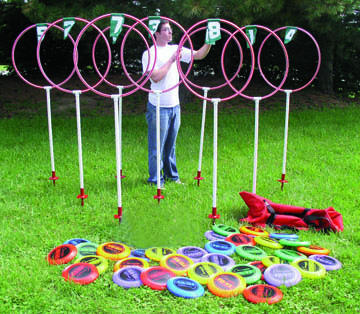
Equipments
- Make sure at you have all Disc Golf equipment prior to installation.
- Disc Pole Holes: (Basket, Chain Holder, Pole, Anchor and Collar, bolts washers, nuts, decals, number plates, locks, etc
- Alternate pin anchors
- Tee signs (Frames, Poles, nuts, and bolts).
Association
Disc Golf Association, (DGA) was established in 1976 by Ed Hedrick to form a new international sport and to promote the installation and use of disc golf courses around the world.
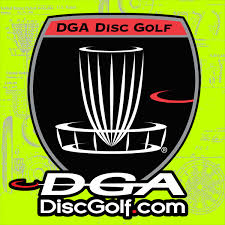
The deadlift is a weight training exercise in which a loaded barbell or bar is lifted off the ground to the level of the hips, then lowered to the ground. It is one of the three powerlifting exercises, along with the squat and bench press.
History
Deadlift refers to the lifting of dead weight (weight without momentum), such as weights lying on the ground. It is one of the few standard weight training exercises in which all repetitions begin with dead weight. There are several positions one can approach when performing the deadlift, which include the conventional deadlift, squat, and sumo-deadlift. In most other lifts there is an eccentric (lowering of the weight) phase followed by the concentric (lifting of the weight) phase. During these exercises, a small amount of energy is stored in the stretched muscles and tendons in the eccentric phase if the lifter is not flexible beyond the range of motion. Although this exercise uses the hips and legs as the primary movers, it can just as easily be considered a back exercise.

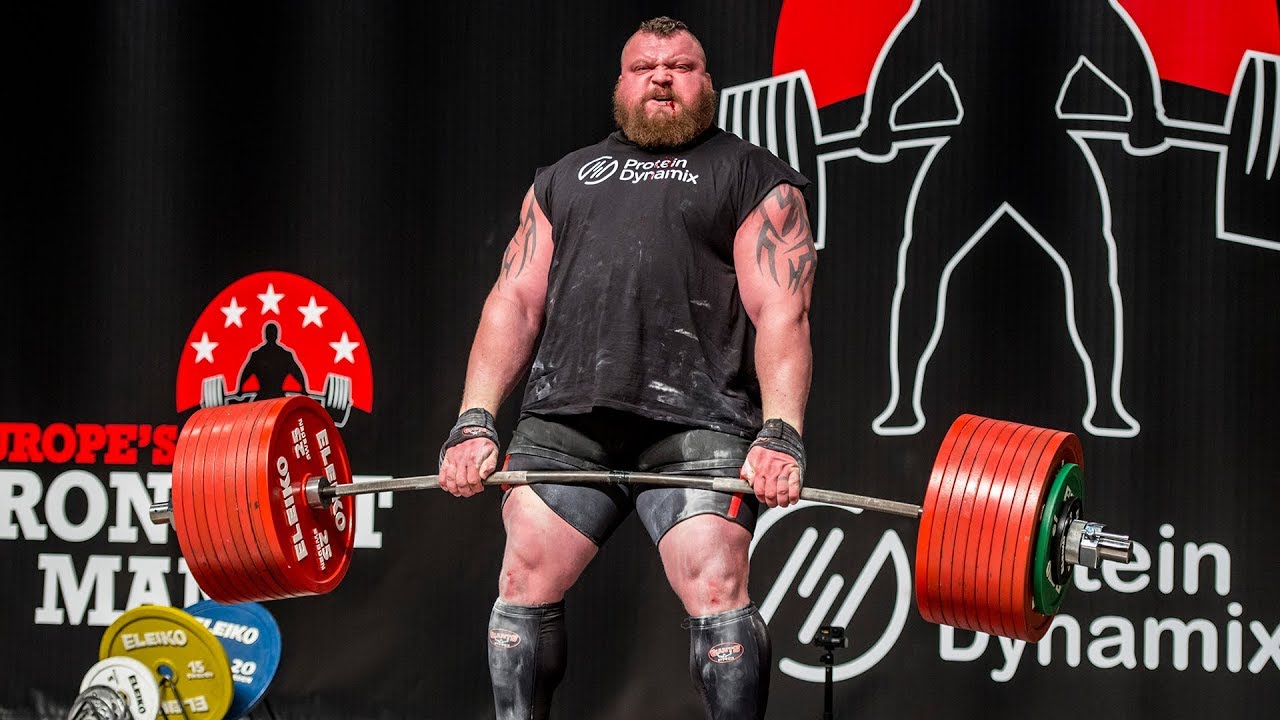
Performing
Conventional deadlift: The deadlift can be broken down into three parts: The setup, the initial pull or drive, and the lockout.
Setup: When performing a deadlift, a lifter will set up in a position that eccentrically loads the gluteus maximus, minimus, biceps femoris, semitendinosus, and semimembranosus while the muscles of the lumbar contract isometrically in an effort to stabilize the spine.
- Set up behind the bar with it touching or nearly touching the legs.
- Begin by hinging at the hips and knees, setting one’s weight predominantly in the heels while maintaining flat feet.
- Spine stays long and straight as hips hinge back, taking care not to allow knees to track forward over one’s toes.
- Gripping the bar either between the legs or on the outside, a lifter will depress their shoulders away from their ears in an effort to load the lats and generate force throughout their erectors.
Drive: The next section of the deadlift produces the highest amount of force. By pushing down through their heels while simultaneously pushing up and forward with their hips and maintaining depressed scapula and a long tense spine an individual can remain safe during this motion. This is considered the most difficult part of the entire movement due to the amount of work required to drive the bar off the ground initially.
- Keep the muscles of the back contracted tightly in order to maintain a safe posture throughout the motion.
- Drive up and forward with the hips and legs to stand erect and lift the bar.
- Take a deep diaphragmatic breath and hold it in during the movement, thus creating an outward pressure on the core to further stabilize the lumbopelvic-hip complex and core throughout the motion.
Lockout: The finish is the most critical aspect of the motion. This requires being totally erect with a neutral spine and forceful hip extension to engage the muscles of the lumbar spine and abdomen in unison with the glutes.
- Finish by driving the hips completely into the bar and getting as tall as possible. Contract the glutes while shortening the rectus abdominis to finish the movement with the pelvis in a neutral position.
- Contracting the glutes as well as the abdominal muscles is critical for low back health and safety.
Lowering the weight: Finishing a deadlift is simply performing these same steps in reverse order. As the muscles of the back and core must remain tight throughout the motion, one should simply hinge at the hips and knees to bring the weight down. Lowering their chest towards their knees while keeping the bar close is the safest way to ultimately complete the motion.
Common Errors
A common error when performing a deadlift are:
- Arching the Back: Arching the back shifts the load to the lower back.
- Shoulders Protracted: Allowing the shoulders to come forward disengages the back muscle which stabilizes the spine.
- Jerking the Bar: The slack should be taken from the bar by squeezing the back muscles first. The bar should then be lifted in a smooth motion without jerking.
- Squatting: The objective of a deadlift is to hinge the hips, knees will be slightly bent in the setup phase, but should not bend so deeply as to be a squat.
- Too Far from the Bar: If the load is too far forward, the only way to grab it is by distorting the correct posture.
- Poor lowering of the weight: Bending the knees too soon when lowering the weight can put pressure on the lower back, only bend the knees once the bar has passed them on the way down.
Weights:
A man deadlifts using tires as weights.
Deadlifts can be performed using dumbbells, barbells, or kettlebells with one hand or two hands & with one leg or two legs. Other variations are the side deadlift or suitcase deadlift, rack pulls, deadlift lockouts, deficit deadlift or deadlift from a box (pulling from the floor while standing on a built or improvised low platform).
Each of these variations is called for to address specific weaknesses in a lifter’s overall deadlift. For instance if the athlete has difficulty breaking contact at max. weight, deficit deadlifts are performed to strengthen the gluteus maximus and hamstrings due to the greater range of motion required by standing on the low platform or low box. On the other hand, if the lifter has no problem with breaking contact with the floor but has difficulty locking out, they should perform rack pulls to strengthen their upper back, posterior deltoids, and trapezius muscles while de-emphasizing the gluteus and hamstrings.
The archaic “dead weight lift”, or “dead weight lift with lifting bar” involved a T-bar with weight loaded on it while the lifter stood on sturdy chairs or other such platforms. A remarkably heavy amount of weight could be lifted in this manner due to its short range of motion; the main limitations are in the grip. This lift is similar to the modern day rack pulls, where a heavy amount of weight is lifted deadlift style a short distance in a power cage or squat rack.
Grips:
Typically, there are two grips used: overhand (pronated) or a mixed overhand-underhand (supinated) (sometimes called “offset,” “staggered,” “alternating”, or “mixed”) grip. Depending on forearm strength, the overhand grip may result in the bar potentially rolling about. Mixed grip is capable of neutralizing this through the “physics of reverse torsion.” The mixed grip allows more weight to be held for this reason.
In order to prevent the bar from rolling out of the hands, some lifters have been known to use an Olympic weightlifting technique known as the hook grip. This is similar to an overhand grip, but the thumbs are inside, allowing the lifter to “hook” onto them with the fingers. The hook grip can make it easier to hold heavier weights using less grip strength, and keeps both shoulders and elbows in a symmetrical position. While it theoretically takes much of the stress off of the joints which might be created by the twisting of a mixed grip it has the disadvantage of being extremely uncomfortable for the thumbs, something which those who advocate it says will pass once a lifter becomes accustomed to it. Another, but rarely used method is a combination of the mixed overhand-underhand grip and the hook grip, preferred by people who lift heavier weights than their grip can handle, but who don’t want to rely on lifting straps or other supportive gear.
Many powerlifters adopt the overhand grip for their lower weight sets and move to the mixed grip to lift larger weights so they can achieve their one rep max.
A neutral grip can be achieved by the use of a trap bar; which is a hexagonal shaped bar which the lifter stands inside whilst holding the two side handles.

Equipments
Other than a barbell and weights, there are two optional equipment items you should consider:
- Flat shoes; if your gym requires shoes. Chucks work great. I personally prefer to deadlift in either socks or Vibram 5 Fingers. Many powerlifters wear deadlift slippers – which are basically just a fancy sock that’s approved footwear for competition.
- Chalkis optional and initially won’t be incredibly useful. However, after you start to put some weight on the bar chalk will be enormously helpful for hanging on to the bar.
Association
The World Association of Bencher and Deadlifters (WABDL) offers single lift bench press and deadlift meets around the United States.

Darts is a sport in which small missiles are thrown at a circular dartboard fixed to a wall. Though various boards and rules have been used in the past, the term “darts” usually now refers to a standardized game involving a specific board design and set of rules. As well as being a professional competitive game, darts is a traditional pub game, commonly played in Britain and Ireland, across the Commonwealth, the Netherlands, Belgium, Germany, the Scandinavian countries, the United States, and elsewhere.
History
The dartboard may have its origins in the cross-section of a tree. An old name for a dartboard is “butt”; the word comes from the French word but, meaning “target”. In particular, the Yorkshire and Manchester Log End boards differ from the standard board in that they have no triple, only double and bullseye, the Manchester board being of a smaller diameter, with a playing area of only 25 cm (9.84 in) across with double and bull areas measuring just 4 mm (0.157in.). The London Fives board is another variation. This has only 12 equal segments numbered 20, 5, 15, 10, 20, 5, 15, 10, 20, 5, 15, 10 with the doubles and trebles being a quarter of an inch (6.35mm) wide.
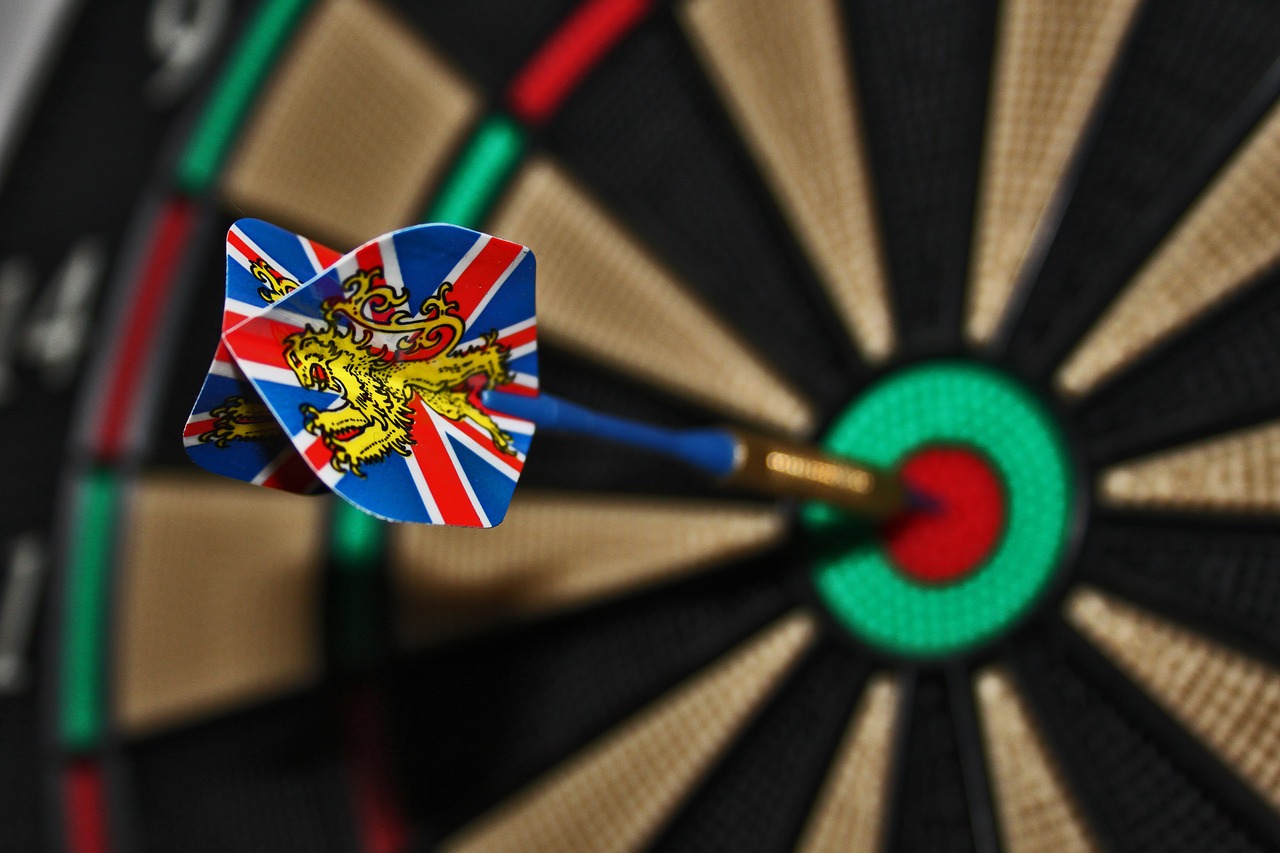
Rules
Standard height from the floor to the bullseye on the dartboard is 5 feet 8 inches, while the oche (distance between the front of the board and the toe line) should measure 7 feet 9.25inches. Basic Rules: In a game of 501 the object is for one player or a team to be the first to reach zero from starting a total of 50.
Various games can be played (and still are played informally) using the standard dartboard. However, in the official game, any dart landing inside the outer wire scores as follows:
- Hitting one of the large portions of each of the numbered sections, traditionally alternately colored black and white, scores the points value of that section.
- Hitting the thin inner portions of these sections, roughly halfway between the outer wire and the central circle colored red or green, scores triple the points value of that section.
- Hitting the thin outer portions of these sections, again colored red or green, scores double the points value of that section. The double-20 is often referred to as double-top, reflecting the 20’s position on the dartboard.
- The central circle is divided into a green outer ring worth 25 points (known as “outer”, “outer bull”, or “single bull”) and a red or black inner circle (usually known as “bull”, “inner bull” or “double bull”), worth 50 points. The term “bullseye” can mean either the whole central part of the board or just the inner red/black section. The term “bull’s ring” usually means just the green outer ring. The inner bull counts as a double when doubling in or out.
- Hitting outside the outer wire scores nothing.
- A dart only scores if its point is embedded in or is touching the playing surface. This rule applies to any dart that lands in such a way as to be partially or totally supported by others that have already hit the board.
- When a standard board is used, any dart whose point does not remain in contact with the playing surface until being collected by the player does not score. This includes darts that bounce off the board for any reason, that fall off on their own, or that are dislodged by the impact of later throws. However, when an electronic board is used, fallen/dislodged darts do score as long as their impacts have registered on the board first.
The highest score possible with three darts is 180, commonly known as a “ton 80” (100 points is called a ton), obtained when all three darts land in the triple 20. In the televised game, the referee frequently announces a score of 180 in exuberant style. A “quad” ring appeared briefly between the triple ring and the bull in the 1990s, leading to a potential 240 maximum (three quad-20s), a 210 maximum checkout (Q20-Q20-Bull) and seven dart finishes from a 501 start (five quad-20s, triple-17, bullseye), but was swiftly dropped from professional tournament play after only two years. One make of this board was the Harrows Quadro 240.
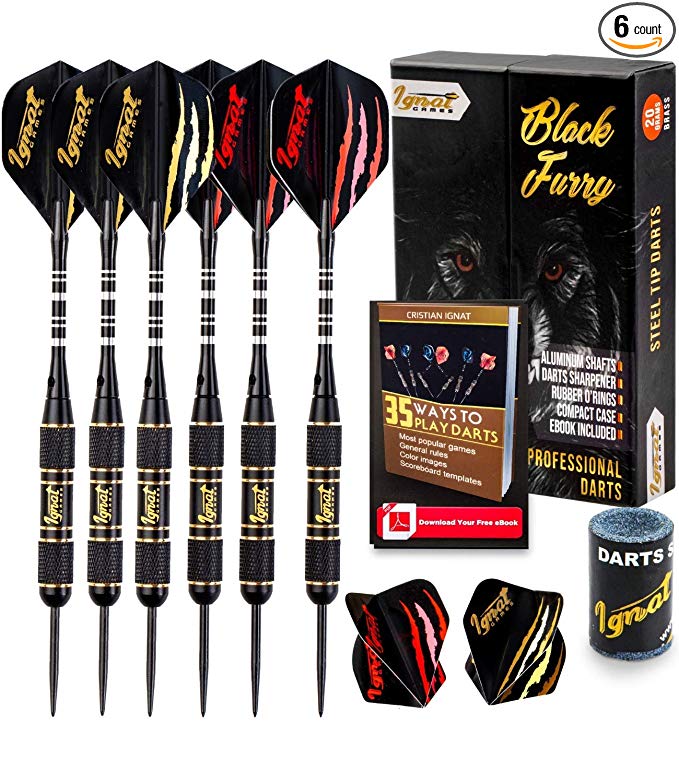
Equipments
Dartboards: Regular Tournament Board WideFives Board
Darts: Brass Darts Nickel/Silver Darts Tungsten Darts
Shafts: Plastic Shafts Composite ShaftsAluminium Shafts
Fights: Soft Flights Hard Flights Nylon Flights Dimplex, Ribtex Spiral Flights Flight Protectors
Cycling, also called biking or bicycling, is the use of bicycles for transport, recreation, exercise or sport. People engaged in cycling are referred to as “cyclists”. “bikers”, or less commonly, as “bicyclists”. Apart from two-wheeled bicycles, “cycling” also includes the riding of unicycles, tricycles, quadricycles, recumbent and similar human-powered vehicles (HPVs).
History
Vehicles for human transport that have two wheels and require balancing by the rider date back to the early 19th century. The first means of transport making use of two wheels arranged consecutively, and thus the archetype of the bicycle was the German draisine dating back to 1817. The term bicycle was coined in France in the 1860s, and the descriptive title “penny-farthing”, used to describe an “Ordinary Bicycle”, is a 19th-century term.
The concept was picked up by a number of British cartwrights; the most notable was Denis Johnson of London announcing in late 1818 that he would sell an improved model. New names were introduced when Johnson patented his machine “pedestrian curricle” or “velocipede,” but the public preferred nicknames like “hobby-horse,” after the children’s toy or, worse still, “dandy horse,” after the foppish men who often rode them. Johnson’s machine was an improvement on Drais’s, being notably more elegant: his wooden frame had a serpentine shape instead of Drais’s straight one, allowing the use of larger wheels without raising the rider’s seat. During the summer of 1819, the “hobby-horse”, thanks in part to Johnson’s marketing skills and better patent protection, became the craze and fashion in London society. The dandies, the Corinthians of the Regency, adopted it, and therefore the poet John Keats referred to it as “the nothing” of the day. Riders wore out their boots surprisingly rapidly, and the fashion ended within the year after riders on pavements (sidewalks) were fined two pounds.
The 21st century has seen a continued application of technology to bicycles: in designing them, building them, and using them. Bicycle frames and components continue to get lighter and more aerodynamic without sacrificing strength largely through the use of computer-aided design, finite element analysis, and computational fluid dynamics. Recent discoveries about bicycle stability have been facilitated by computer simulations. Once designed, new technology is applied to manufacturing such as hydroforming and automated carbon fiber layup. Finally, electronic gadgetry has expanded from just cyclo computers to now include cycling power meters and electronic gear-shifting systems.
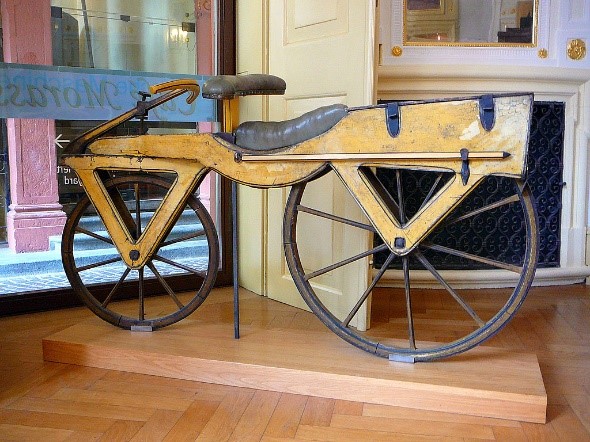
Rules
These rules and cautions apply to racer participants but also some in recreational cycling. In a race, cyclists have specific places to stock up, but they can also do so on the go by moving to their team’s support car. Usually, a cyclist goes and brings it to the rest of the companions who are with him. From a certain point of the stage, it is no longer allowed to go to refuel. At the end of the race, when it is time for the sprint, the cyclist can not make a sudden change of direction in order to cover the opponent’s path with him close and may be disqualified, since it endangers the physical integrity of the opponent since they are traveling at very high speeds. It is important always to be aware of the route, and knowing the route is advisable, in order to avoid possible falls in more dangerous places and also not to cause a chain fall. Always wear protective gear, whether in competition or just in recreational cycling.
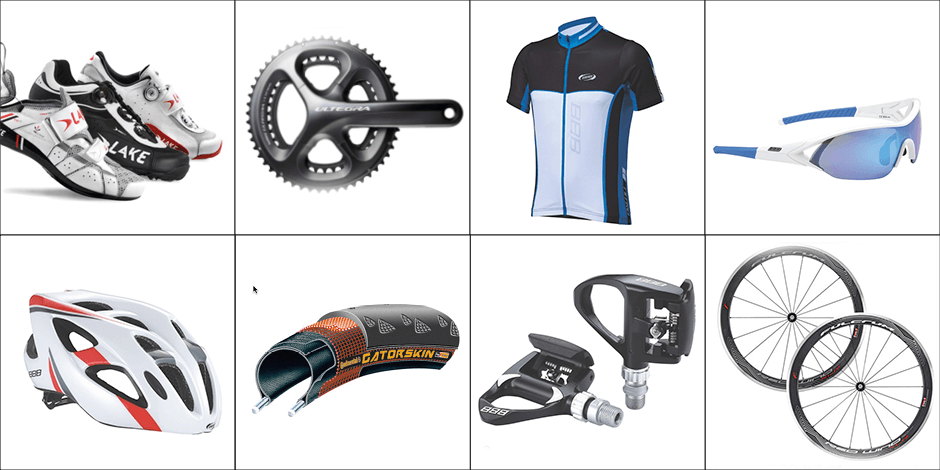
Equipments
The main element for practicing cycling is the bike of course. But since this is an activity that can be done in very rough terrain and in conditions slightly drawn to the human body, it is also recommended to use some protection elements.
Helmet: How could it not be you should not miss the helmet. This is obviously used to protect your head in case of fall, this being quite vital and not wearing the helmet pose a great risk to your health.
Protection Gloves: These serve to protect your hands in case of fall but also to improve the grip of the palm of your hand with the handlebar, covering them the same palm and not the fingers.
Clothing: The clothes of cyclists are also quite different from normal. What stands out is that they fit well to your body, thus reducing any unnecessary wind resistance and are also made with a material that regulates your body temperature and protects you from prolonged exposure to the sun.

The win-less streak continues for Royal Challengers Bangalore but skipper Virat Kohli took solace from the fact that they dragged the game against Rajasthan Royals deep and also hinted that they will make changes in the side to get right combination for upcoming games.
RCB managed 158 for 4 on a difficult wicket but the hosts chased it down with one ball to spare.
Kohli said they need a few more runs on the board.
“Today, we were more competitive. but we were 15-20 short with the bat. I thought 160 was competitive, but with the dew factor, 15 runs more would’ve been more challenging,” said Kohli.
The RCB fielders dropped a number of catches and Kohli acknowledged that such mistakes won’t win them games.
Ajinya Rahane and Steve Smith were dropped and their contributions with the bat helped the hosts win.
“It was not easy to get the boundaries in the second innings but if we make that many mistakes (dropped catches), then we will fall on the losing side. In a tournament like IPL, when you have no momentum, then these things can happen,” said Kohli.
“The team hasn’t gone off to a good start, and these things look really bad. But we have to keep believing that we can turn things around. We played well in Mumbai and tonight, but we need to improve. We need to take some confidence from tonight’s game though.” Kohli said the team may make more changes in the side.
“The tournament isn’t so long, so you need to think on your feet on what the best XIs are. We will sit down and talk to see how we can balance our team and allow our players to create some match-winning performances.” RCB spinner Yuzvendra Chahal, who grabbed the Purple Cap with his two wickets today was pleased with his effort so far.

Young striker Sumit Kumar Jr struck a brace after comeback-man Rupinder Pal Singh opened the scoring as India’s men’s hockey thumped Australia ‘A’ 3-0, here Friday.
Drag-flicker Rupinder, competing after a nearly eight-month injury layoff, scored in the sixth minute to give the visitors the lead. Summit found the back of the net in the 12th and 13th minutes, helping India win their second game in a row.
The aggressive Indians dominated the first quarter, constantly looked to break into the striking circle. The tactic worked as all three goals were scored in the first quarter putting the home team on the back-foot.
India’s first goal came when the team won their first short corner of the match. Rupinder showed good nick, as he timed the flick well with good power and speed to send it past the opposition goalkeeper.
Defender Harmanpreet Singh’s skillful tackling saw Australia ‘A’ lose ball possession which led to India’s second goal. A fine assist by skipper Manpreet Singh to Sumit saw the youngster score a superb field goal in the 12th minute.
The home team was left stunned when India converted their third goal in the very next minute when striker Akashdeep Singh set-up the goal scored by 21-year-old Sumit.
With a formidable 3-0 lead in the first quarter, India did well in terms of stitching together a good defense to hold off the Australian attack.
Harmanpreet remained a vital cog of Indian defense as he won possession from Australian ball-carrier on several occasions that broke the home team’s rhythm.
Australia’s lone goal-scoring opportunity came in the second quarter when they created a PC but India goalkeeper Krishan Pathak was up to the task.
“It was a very good first quarter with the basics right. After a 3-0 lead, it was important we stayed focused on the process. The second and third quarter was tight. I was happy with the things we have been working on, we created a lot of opportunities and I believe we can still do better in our finishing,” Indian chief coach, Graham Reid said.
India will play their next game on Monday where the team will look to continue their fine run in the tour.
“The next game will be harder and we are looking forward to it. The team will be stronger from today’s which had about seven national players from the Australian senior team. But it’s a good progression,” Reid added.
Cricket is a bat-and-ball game played between two teams of eleven players on a field at the centre of which is a 20-metre (22-yard) pitchwith a wicket at each end, each comprising two bails balanced on three stumps. The batting side scores runs by striking the ball bowled at the wicket with the bat, while the bowling and fielding side tries to prevent this and dismiss each player (so they are “out”). Means of dismissal include being bowled, when the ball hits the stumps and dislodges the bails, and by the fielding side catching the ball after it is hit by the bat, but before it hits the ground. When ten players have been dismissed, the innings ends and the teams swap roles. The game is adjudicated by two umpires, aided by a third umpire and match referee in international matches. They communicate with two off-field scorerswho record the match’s statistical information.
History
Cricket is one of many games in the “club ball” sphere that basically involve hitting a ball with a hand-held implement; others include baseball, golf, hockey, tennis, squash, badminton, and table tennis. In cricket’s case, a key difference is the existence of a solid target structure, the wicket (originally, it is thought, a “wicket gate” through which sheep were herded), that the batsman must defend. The cricket historian Harry Althamidentified three “groups” of “club ball” games: the “hockey group”, in which the ball is driven to and fro between two targets (the goals); the “golf group”, in which the ball is driven towards an undefended target (the hole); and the “cricket group”, in which “the ball is aimed at a mark (the wicket) and driven away from it”.

Rules
Basic gameplay: bowler to batsman
During normal play, thirteen players and two umpires are on the field. Two of the players are batsmen and the rest are all eleven members of the fielding team. The other nine players in the batting team are off the field in the pavilion. The image with the overlay below shows what is happening when a ball is being bowled and which of the personnel are on or close to the pitch. The photo was taken during an international match between Australia and Sri Lanka; Muttiah Muralitharan of Sri Lanka is bowling to Australian batsman Adam Gilchrist.
While the umpire (1) in shot stands at the bowler’s end of the pitch, his colleague stands in the outfield, usually in or near the fielding position called “square leg“, so that he is in line with the popping crease (7) at the striker’s end of the pitch. The bowling crease (not numbered) is the one on which the wicket is located between the return creases (12). The bowler (4) intends to hit the wicket (9) with the ball (5) or, at least, to prevent the striker (8) from scoring runs. The striker (8) intends, by using his bat, to defend his wicket and, if possible, to hit the ball away from the pitch in order to score runs. In the photo, the two batsmen (3 & 8; wearing yellow) have taken a position at each end of the pitch (6). Three members of the fielding team (4, 10 & 11; wearing dark blue) are in the shot. One of the two umpires (1; wearing a white hat) is stationed behind the wicket (2) at the bowler’s (4) end of the pitch. The bowler (4) is bowling the ball (5) from his end of the pitch to the batsman (8) at the other end who is called the “striker”. The other batsman (3) at the bowling end is called the “non-striker”. The wicket-keeper (10), who is a specialist, is positioned behind the striker’s wicket (9) and behind him stands one of the fielders in a position called “first slip” (11). While the bowler and the first slip are wearing conventional kit only, the two batsmen and the wicket-keeper are wearing protective gear including safety helmets, padded gloves and leg guards (pads).
Some players are skilled in both batting and bowling so are termed, all-rounders. Adam Gilchrist, pictured above, was a wicket-keeper/batsman, another type of all-rounder. Bowlers are also classified according to their style, generally as fast bowlers, medium pace seam bowlers or, like Muttiah Muralitharan pictured above, spinners. Batsmen are classified according to whether they are right-handed or left-handed.
Fielding
Fielding positions in cricket for a right-handed batsman
Of the eleven fielders, three are in shot in the image above. The other eight are elsewhere on the field, their positions determined on a tactical basis by the captain or the bowler. Fielders often change position between deliveries, again as directed by the captain or bowler.
If a fielder is injured or becomes ill during a match, a substitute is allowed to field instead of him, but the substitute cannot bowl or act as a captain. The substitute leaves the field when the injured player is fit to return. The Laws of Cricket were updated in 2017 to allow substitutes to act as wicket-keepers, a situation that first occurred when Mumbai Indians‘ wicket-keeper Ishan Kishan was injured in a match on 18 April 2018.
Specialist roles
The captain is often the most experienced player in the team, certainly the most tactically astute, and can possess any of the main skillsets as a batsman, a bowler or a wicket-keeper. Within the Laws, the captain has certain responsibilities in terms of nominating his players to the umpires before the match and ensuring that his players conduct themselves “within the spirit and traditions of the game as well as within the Laws”.
The wicket-keeper (sometimes called simply the “keeper”) is a specialist fielder subject to various rules within the Laws about his equipment and demeanor. He is the only member of the fielding side who can affect a stumping and is the only one permitted to wear gloves and external leg guards. Depending on their primary skills, the other ten players in the team tend to be classified as specialist batsmen or specialist bowlers. Generally, a team will include five or six specialist batsmen and four or five specialist bowlers, plus the wicket-keeper.
Clothing and equipment
English cricketer W. G. Grace “taking guard” in 1883. His pads and bat are very similar to those used today. The gloves have evolved somewhat. Many modern players utilize more defensive equipment that was available to Grace, notably helmets and arm guards.
The wicket-keeper and the batsmen wear protective gear because of the hardness of the ball, which can be delivered at speeds of more than 145 kilometers per hour (90 mph) and presents a major health and safety concern. Protective clothing includes pads (designed to protect the knees and shins), batting gloves or wicket-keeper’s gloves for the hands, a safety helmet for the head and a box for male players inside the trousers (to protect the crotch area). Some batsmen wear additional padding inside their shirts and trousers such as thigh pads, arm pads, rib protectors and shoulder pads. The only fielders allowed to wear protective gear are those in positions very close to the batsman (i.e., if they are alongside or in front of him), but they cannot wear gloves or external leg guards.
Subject to certain variations, on-field clothing generally includes a collared shirt with short or long sleeves; long trousers; woolen pullover (if needed); cricket cap (for fielding) or a safety helmet; and spiked shoes or boots to increase traction. The kit is traditionally all white and this remains the case in Test and first-class cricket but, in limited overs cricket, team colors are worn instead.
Innings
The innings (ending with ‘s’ in both singular and plural form) is the term used for each phase of play during a match. Depending on the type of match being played, each team has either one or two innings. Sometimes all eleven members of the batting side take a turn to bat but, for various reasons, an innings can end before they have all done so. The innings terminates if the batting team is “all out”, a term defined by the Laws: “at the fall of a wicket or the retirement of a batsman, further balls remain to be bowled but no further batsman is available to come in”. In this situation, one of the batsmen has not been dismissed and is termed not out; this is because he has no partners left and there must always be two active batsmen while the innings is in progress.
An innings may end early while there are still two not out batsmen:
- the batting team’s captain may declare the innings closed even though some of his players have not had a turn to bat: this is a tactical decision by the captain, usually because he believes his team have scored sufficient runs and need time to dismiss the opposition in their innings
- the set number of overs (i.e., in a limited overs match) have been bowled
- the match has ended prematurely due to bad weather or running out of time
- in the final innings of the match, the batting side has reached its target and won the game.
Overs
The Laws state that, throughout an innings, “the ball shall be bowled from each end alternately in overs of 6 balls”. The name “over” came about because the umpire calls “Over!” when six balls have been bowled. At this point, another bowler is deployed at the other end, and the fielding side changes ends while the batsmen do not. A bowler cannot bowl two successive overs, although a bowler can (and usually does) bowl alternate overs, from the same end, for several overs which are termed a “spell”. The batsmen do not change ends at the end of the over, and so the one who was non-striker is now the striker and vice-versa. The umpires also change positions so that the one who was at “square leg” now stands behind the wicket at the non-striker’s end and vice-versa.
Umpires and scorers
The game on the field is regulated by the two umpires, one of whom stands behind the wicket at the bowler’s end, the other in a position called “square leg” which is about 15–20 metres away from the batsman on strike and in line with the popping crease on which he is taking guard. The umpires have several responsibilities including adjudication on whether a ball has been correctly bowled (i.e., not a no-ball or a wide); when a run is scored; whether a batsman is out (the fielding side must first appeal to the umpire, usually with the phrase “How’s that?” or “Owzat?”); when intervals start and end; and the suitability of the pitch, field, and weather for playing the game. The umpires are authorized to interrupt or even abandon a match due to circumstances likely to endanger the players, such as a damp pitch or deterioration of the light.
Off the field in televised matches, there is usually a third umpire who can make decisions on certain incidents with the aid of video evidence. The third umpire is mandatory under the playing conditions for Test and Limited Overs International matches played between two ICC full member countries. These matches also have a match referee whose job is to ensure that play is within the Laws and the spirit of the game.
The match details, including runs and dismissals, are recorded by two official scorers, one representing each team. The scorers are directed by the hand signals of an umpire (see the image, right). For example, the umpire raises a forefinger to signal that the batsman is out (has been dismissed); he raises both arms above his head if the batsman has hit the ball for six runs. The scorers are required by the Laws to record all runs scored, wickets taken and overs bowled; in practice, they also note significant amounts of additional data relating to the game.
A match’s statistics are summarised on a scorecard. Prior to the popularisation of scorecards, most scoring was done by men sitting on vantage points cuttings notches on tally sticks and runs were originally called notches. According to Rowland Bowen, the earliest known scorecard templates were introduced in 1776 by T. Pratt of Sevenoaks and soon came into general use. It is believed that scorecards were printed and sold at Lord’s for the first time in 1846.
Spirit of the Game
Besides observing the Laws, cricketers must respect the “Spirit of Cricket,” which is the “Preamble to the Laws,” first published in the 2000 code, and updated in 2017, and now opens with this statement:
“Cricket owes much of its appeal and enjoyment to the fact that it should be played not only according to the Laws, but also within the Spirit of Cricket”.
The Preamble is a short statement that emphasizes the “Positive behaviors that make cricket an exciting game that encourages leadership, friendship, and teamwork.”
The major responsibility for ensuring fair play is placed firmly on the captains but extends to all players, umpires, teachers, coaches, and parents involved.
The umpires are the sole judges of fair and unfair play. They are required under the Laws to intervene in case of dangerous or unfair play or in cases of unacceptable conduct by a player.
Previous versions of the Spirit identified actions that were deemed contrary (for example, appealing knowing that the batsman is not out) but all specifics are now covered in the Laws of Cricket, the relevant governing playing regulations and disciplinary codes, or left to the judgement of the umpires, captains, their clubs and governing bodies. The terse expression of the Spirit of Cricket now avoids the diversity of cultural conventions that exist on the detail of sportsmanship – or its absence.
Bowling and dismissal
Glenn McGrath of Australia holds the world record for most wickets in the Cricket World Cup.
Most bowlers are considered specialists in that they are selected for the team because of their skill as a bowler, although some are all-rounders and even specialist batsmen bowl occasionally. The specialist bowlers are active multiple times during an innings, but may not bowl two overs consecutively. If the captain wants a bowler to “change ends”, another bowler must temporarily fill in so that the change is not immediate.
A bowler reaches his delivery stride by means of a “run-up” and an over is deemed to have begun when the bowler starts his run-up for the first delivery of that over, the ball then being “in play”. Fast bowlers, needing momentum, take a lengthy run up while bowlers with a slow delivery take no more than a couple of steps before bowling. The fastest bowlers can deliver the ball at a speed of over 145 kilometers per hour (90 mph) and they sometimes rely on sheer speed to try and defeat the batsman, who is forced to react very quickly. Other fast bowlers rely on a mixture of speed and guile by making the ball seam or swing (i.e. curve) in flight. This type of delivery can deceive a batsman into miscuing his shot, for example, so that the ball just touches the edge of the bat and can then be “caught behind” by the wicket-keeper or a slip fielder. At the other end of the bowling, the scale is the spin bowler who bowls at a relatively slow pace and relies entirely on guile to deceive the batsman. A spinner will often “buy his wicket” by “tossing one up” (in a slower, steeper parabolic path) to lure the batsman into making a poor shot. The batsman has to be very wary of such deliveries as they are often “flighted” or spun so that the ball will not behave quite as he expects and he could be “trapped” into getting himself out. In between the pacemen and the spinners are the medium paced seamers who rely on persistent accuracy to try and contain the rate of scoring and wear down the batsman’s concentration.
There are ten ways in which a batsman can be dismissed: five relatively common and five extremely rare. The common forms of dismissal are bowled, caught, leg before wicket (lbw), run out and stumped. Rare methods are hit wicket, hit the ball twice, obstructing the field, handled the ball and timed out. The Laws state that the fielding team, usually the bowler in practice, must appeal for a dismissal before the umpire can give his decision. If the batsman is out, the umpire raises a forefinger and says “Out!”; otherwise, he will shake his head and say “Not out”. There is, effectively, an eleventh method of dismissal, retired out, which is not an on-field dismissal as such but rather a retrospective one for which no fielder is credited.
Batting runs, and extras
The directions in which a right-handed batsman, facing down the page, intends to send the ball when playing various cricketing shots. The diagram for a left-handed batsman is a mirror image of this one.
Batsmen take turns to bat via a batting order which is decided beforehand by the team captain and presented to the umpires, though the order remains flexible when the captain officially nominates the team. Substitute batsmen are not allowed.
A skilled batsman can use a wide array of “shots” or “strokes” in both defensive and attacking mode. The idea is to hit the ball to best effect with the flat surface of the bat’s blade. If the ball touches the side of the bat it is called an “edge“. The batsman does not have to play a shot and can allow the ball to go through to the wicketkeeper. Equally, he does not have to attempt a run when he hits the ball with his bat. Batsmen do not always seek to hit the ball as hard as possible, and a good player can score runs just by making a deft stroke with a turn of the wrists or by simply “blocking” the ball but directing it away from fielders so that he has time to take a run. A wide variety of shots are played, the batsman’s repertoire including strokes named according to the style of swing and the direction aimed: e.g., “cut“, “drive”, “hook”, “pull”.
The batsman on strike (i.e. the “striker”) must prevent the ball hitting the wicket, and try to score runs by hitting the ball with his bat so that he and his partner have time to run from one end of the pitch to the other before the fielding side can return the ball. To register a run, both runners must touch the ground behind the popping crease with either their bats or their bodies (the batsmen carry their bats as they run). Each completed run increments the score of both the team and the striker.
Sachin Tendulkar is the only player to have scored one hundred international centuries
The decision to attempt a run is ideally made by the batsman who has the better view of the ball’s progress, and this is communicated by calling: usually “yes”, “no” or “wait”. More than one run can be scored from a single hit: hits worth one to three runs are common, but the size of the field is such that it is usually difficult to run four or more. To compensate for this, hits that reach the boundary of the field are automatically awarded four runs if the ball touches the ground en route to the boundary or six runs if the ball clears the boundary without touching the ground within the boundary. In these cases, the batsmen do not need to run. Hits for five are unusual and generally rely on the help of “overthrows” by a fielder returning the ball. If an odd number of runs is scored by the striker, the two batsmen have changed ends, and the one who was non-striker is now the striker. Only the striker can score individual runs, but all runs are added to the team’s total.
Additional runs can be gained by the batting team as extras (called “sundries” in Australia) due to errors made by the fielding side. This is achieved in four ways: no-ball, a penalty of one extra conceded by the bowler if he breaks the rules; wide, a penalty of one extra conceded by the bowler if he bowls so that the ball is out of the batsman’s reach; bye, an extra awarded if the batsman misses the ball and it goes past the wicket-keeper and gives the batsmen time to run in the conventional way; leg bye, as for a bye except that the ball has hit the batsman’s body, though not his bat. If the bowler has conceded a no-ball or a wide, his team incurs an additional penalty because that ball (i.e., delivery) has to be bowled again and hence the batting side has the opportunity to score more runs from this extra ball.

Equipments
Playing area
Cricket is a bat-and-ball game played on a cricket field (see the image, right) between two teams of eleven players each. The field is usually circular or oval in shape and the edge of the playing area is marked by a boundary, which may be a fence, part of the stands, a rope, a painted line or a combination of these; the boundary must if possible be marked along its entire length.
In the approximate center of the field is a rectangular pitch (see the image, below) on which a wooden target called a wicket is sited at each end; the wickets are placed 22 yards (20 m) apart. The pitch is a flat surface 3 meters (9.8 ft) wide, with very short grass that tends to be worn away as the game progresses (cricket can also be played on artificial surfaces, notably matting). Each wicket is made of three wooden stumps topped by two bails.
As illustrated above, the pitch is marked at each end with four white painted lines: a bowling crease, a popping crease, and two return creases. The three stumps are aligned centrally on the bowling crease, which is eight feet eight inches long. The popping crease is drawn four feet in front of the bowling crease and parallel to it; although it is drawn as a twelve-foot line (six feet either side of the wicket), it is, in fact, unlimited in length. The return creases are drawn at right angles to the popping crease so that they intersect the ends of the bowling crease; each return crease is drawn as an eight-foot line, so that it extends four feet behind the bowling crease, but is also in fact unlimited in length.
Match structure and closure
Before a match begins, the team captains (who are also players) toss a coin to decide which team will bat first and so take the first innings. Innings is the term used for each phase of play in the match. In each innings, one team bats, attempting to score runs, while the other team bowls and fields the ball, attempting to restrict the scoring and dismiss the batsmen. When the first innings ends, the teams change roles; there can be two to four innings depending upon the type of match. A match with four scheduled innings is played over three to five days; a match with two scheduled innings is usually completed in a single day. During an innings, all eleven members of the fielding team take the field, but only two members of the batting team are on the field at any given time. The order of batsmen is usually announced just before the match, but it can be varied.
The main objective of each team is to score more runs than their opponents but, in some forms of cricket, it is also necessary to dismiss all of the opposition batsmen in their final innings in order to win the match, which would otherwise be drawn. If the team batting last is all out having scored fewer runs than their opponents, they are said to have “lost by n runs” (where n is the difference between the aggregate number of runs scored by the teams). If the team that bats last scores enough runs to win, it is said to have “won by n wickets”, where n is the number of wickets left to fall. For example, a team that passes its opponents’ total having lost six wickets (i.e., six of their batsmen have been dismissed) have won the match “by four wickets”.
In a two-innings-a-side match, one team’s combined first and second innings total may be less than the other side’s first innings total. The team with the greater score is then said to have “won by an innings and n runs”, and does not need to bat again: n is the difference between the two teams’ aggregate scores. If the team batting last is all out, and both sides have scored the same number of runs, then the match is a tie; this result is quite rare in matches of two innings a side with only 62 happening in first-class matches from the earliest known instance in 1741 until January 2017. In the traditional form of the game, if the time allotted for the match expires before either side can win, then the game is declared a draw.
If the match has only a single innings per side, then a maximum number of overs applies to each innings. Such a match is called a “limited overs” or “one-day” match, and the side scoring more runs wins regardless of the number of wickets lost, so that a draw cannot occur. If this kind of match is temporarily interrupted by bad weather, then a complex mathematical formula, known as the Duckworth-Lewis method after its developers, is often used to recalculate a new target score. A one-day match can also be declared a “no-result” if fewer than a previously agreed number of overs have been bowled by either team, in circumstances that make normal resumption of play impossible; for example, wet weather.
In all forms of cricket, the umpires can abandon the match if bad light or rain makes it impossible to continue. There have been instances of entire matches, even Test matches scheduled to be played over five days, being lost to bad weather without a ball being bowled: for example, the third Test of the 1970/71 series in Australia.
Bat and ball
Two different types of cricket balls, both of the same size:i) A used white ball. White balls are mainly used in limited overs cricket, especially in matches played at night, under floodlights (left).
ii) A used red ball. Red balls are used in Test cricket and first-class cricket and some other forms of cricket (right).
The essence of the sport is that a bowler delivers (i.e., bowls) the ball from his end of the pitch towards the batsman who, armed with batis “on strike” at the other end (see next sub-section: Basic gameplay).
The bat is made of wood, usually salix alba (white willow), and has the shape of a blade topped by a cylindrical handle. The blade must not be more than four and one-quarter inches (108 mm) wide and the total length of the bat not more than 38 inches (965 mm). There is no standard for the weight which is usually between 2 lb 7 oz and 3 lb (1.1 and 1.4 kg).
The ball is a hard leather-seamed spheroid, with a circumference of 22.9 centimeters (9.0 in). The ball has a “seam”: six rows of stitches attaching the leather shell of the ball to the string and cork interior. The seam on a new ball is prominent and helps the bowler propel it in a less predictable manner. During matches, the quality of the ball deteriorates to a point where it is no longer usable, and during the course of this deterioration, its behavior in flight will change and can influence the outcome of the match. Players will, therefore, attempt to modify the ball’s behavior by modifying their physical properties. Polishing the ball and wetting it with sweat or saliva is legal, even when the polishing is deliberately done on one side only to increase the ball’s swing through the air, but the acts of rubbing other substances into the ball, scratching the surface or picking at the seam are illegal ball tampering.
Associations
The International Cricket Council (ICC) is the global governing body of cricket. It was founded as the Imperial Cricket Conference in 1909 by representatives from Australia, England, and South Africa. It was renamed as the International Cricket Conference in 1965 and took up its current name in 1989. The ICC has 105 members: 12 Full Members that play Test matches and 93 Associate Members.
The ICC is responsible for the organization and governance of cricket’s major international tournaments, most notably the Cricket World Cup. It also appoints the umpires and referees that officiate at all sanctioned Test matches, One Day International and Twenty20 Internationals. It promulgates the ICC Code of Conduct, which sets professional standards of discipline for international cricket, and also co-ordinates action against corruption and match-fixing through its Anti-Corruption and Security Unit.
1989–present
- In the July meeting of 1989, the ICC renamed itself to the International Cricket Council and the trend of the MCC President automatically becoming the Chairman of ICC was terminated.
- In 1990, UAE joined as an associate.
- In 1991, for the first time in ICC history, the meeting was held away from England – in Melbourne. South Africa was re-elected as a Full Member of the ICC in July, after the end of apartheid.
- In 1992, Zimbabwe was admitted as the ninth Test-playing nation (Full Member). Namibia joined as an Associate member. Austria, Belgium, Brunei, and Spain joined as Affiliates.
- In 1993, the Chief Executive of ICC was created with Sir David Richards of the Australian Cricket Board the first person appointed to the position. In July, Sir Clyde Walcott, from Barbados, was elected as the first non-British Chairman. The emergence of new technology saw the introduction of a third umpire who was equipped with video playback facilities.
- By 1995, TV replays were made available for run outs and stumpings in Test matches with the third umpire required to signal out or not out with red and green lights respectively. The following year, the cameras were used to determine if the ball had crossed the boundary, and in 1997 decisions on the cleanness of catches could be referred to the third umpire. This year also saw the introduction of the Duckworth-Lewis method of adjusting targets in rain-affected ODI matches.
- In 2000, Bangladesh received Test status (Full Member).
- In 2005, ICC moved its new headquarters in Dubai.
- In 2017, Afghanistan Cricket Board and Cricket Ireland were confirmed as Full Members of the International Cricket Council after a unanimous vote at the ICC Full Council meeting at The Oval.
History
The clean and jerk is a composite of two weightlifting movements, most often performed with a barbell: the clean and the jerk. During the clean, the lifter moves the barbell from the floor to a racked position across the deltoids, without resting fully on the clavicles. During the jerk the lifter raises the barbell to a stationary position above the head, finishing with straight arms and legs, and the feet in the same plane as the torso and barbell.
Of the several variants of the lift, the most common is the Olympic clean and jerk, which, with the snatch, is contested in Olympic weightlifting events.
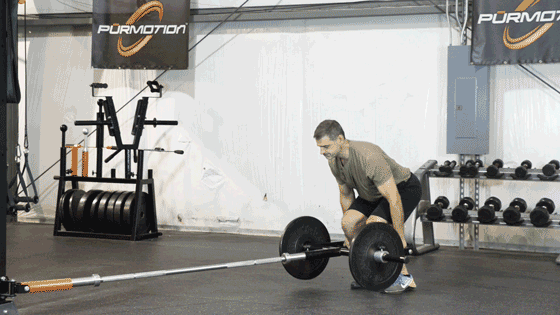
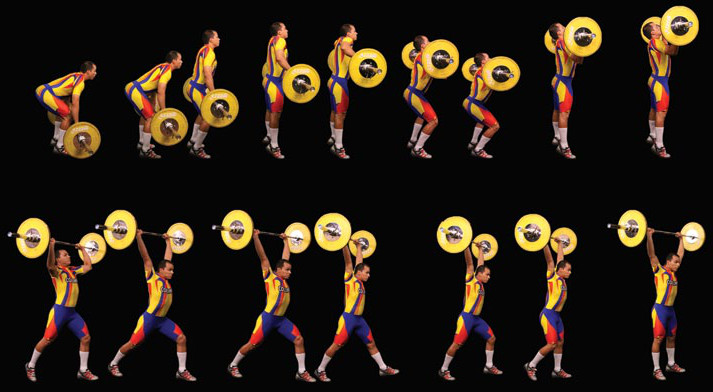
Rules
The Lifts: The Snatch is a single movement where the lifter holds the bar in a wide grip, lifts the weight off the ground overhead in one movement, then stands upright holding the bar overhead. The Clean and Jerk is a two-part movement. First, the lifter holds the barbell in a shoulder-width grip, then pulls the weight up to the shoulders and then stands up with the barbell balanced on the shoulders. Once settled, the lifter will snap the bar overhead and stand upright again with the barbell in control overhead. Once the lifter is in control, the judges will give the “Down” signal and the lifter will lower the bar.
The Weights: The Bar itself is a standard. Women and under use a 15Kg bar which is a slightly smaller diameter than the standard 20Kg bar used by all men. The Barbell is loaded with Disks (Plates) of various weights. A combination of the international standard of 25 (Red), 20 (Blue), 15 (Yellow), 10 (Green), 5 (White), 2.5 (Red), 2 (Blue), 1 (Green), 0.5 (White) Kilogram disks to set the barbell at a certain weight, are used. The barbell will be loaded with the minimum number of disks required to total the required weight. In addition, collars must be used to tighten on the ends of the barbell to keep the weight disks attached. The standard collars are 2.5 Kg each.
The Competition: Each lifter is given three attempts at each of the Snatch and the Clean and Jerk. First, all lifters in a session will complete all three attempts at the Snatch. Then, after a 10 minutes break, all lifters will take three attempts at the Clean and Jerk. The Total of the Best Snatch and the Best Clean and Jerk determine medal or trophy placement. Each lifter competes with other lifters in their own weight class but in most sessions, a few weight classes are mixed. In Open events, both Weight Classes and Age Classes are often mixed. Youth lifters are under 17 years old, Junior Lifters are under 20 years old, Seniors are Open and Masters are over 35. The weight on the barbell only goes up! All lifters who are attempting a certain weight complete their attempts before the other lifters attempt higher weights.
Judging: Three Judges watch for incorrect features of the lift to separate a “Good” lift from a “Bad Lift”.
Here are the basic items judges look for:
1) No part of the lifter (except the bottom of the feet) shall touch the platform.
2) The Lifter cannot “press out” the barbell. Press out is when the elbows are bent and the lifter uses the strength of the arms to lock out the elbows.
3) The lift must be all in one continuous movement – no stopping and restarting.
4) The elbows must not touch thighs or knees during the Clean. This is dangerous and can cause serious injury.
5) The Lifter must hold the bar steady and be motionless between the Clean and the Jerk.
6) The Lifter must hold the bar steady and motionless in all parts of the body overhead with feet in line with the plane of the trunk until the judges give the down signal
7) The Lifter must guide the bar down at least below shoulder level when the lift is complete. Dropping from overhead is dangerous and an incorrect movement.
8) The Lifter must remain on the platform during the execution of the lift.
Jerk: Another variation of the jerk besides the split jerk also described as the power jerk, in which the lifter receives the bar overhead in a partial squat, with the feet in the same plane as the bar rather than split forward and back. This is usually, but not always, accompanied by a significant lateral movement of the feet for increased stability. When the bar is received in a full squat position, it is referred to as the squat jerk.
Clean: The power clean, a weight training exercise not used in competition, refers to any variant of the clean in which the lifter does not catch the bar in a full squat position (commonly accepted as thighs parallel to the floor or below). The hang clean, another weight training exercise, begins with the barbell off the ground, hanging from the arms. Both power and hang cleans are considered to be ideal for sports conditioning; as they are both total body exercises that have been known to increase neuromuscular coordination and core stability.
The Continental clean involves lifting the bar from the floor to the final clean position by any method of the lifter’s choosing so long as the bar is not upended and does not touch the ground. The bar may be rested on the legs, stomach, or belt. Hands may be removed and replaced.
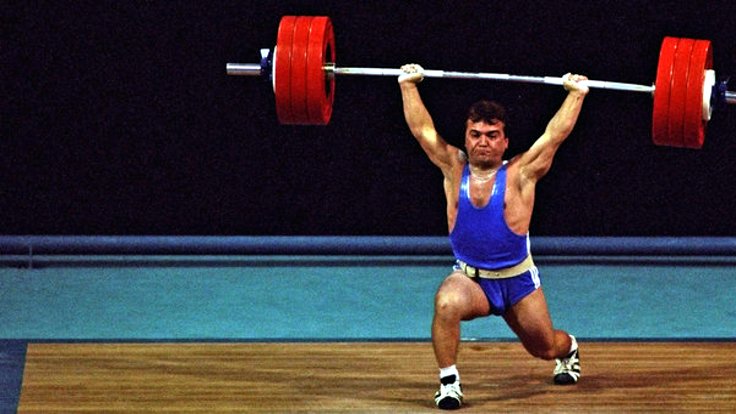
Equipment
Shoes
Weightlifting shoes have a unique design with a raised heel, flat sole, and straps which all contribute to the maximization of the weightlifter’s performance. The heel is raised by a half inch to an inch. The height in the heel allows the weightlifter to squat down in a more upright position. A more upright torso allows for a greater grip on the bar and a greater chance of sending it upward. The raised heel also allows for a deeper squat where knees are fully bent and shins are tilted forward through increased ankle range of motion. The tilt in the shins is important as it allows for the lowest possible depth and improves mechanical leverage (Charniga, 2006). In addition, in contrast to running shoes, which have an inbuilt cushion to absorb impact with each step taken while running, the objective of weightlifting shoes use all forces acting on the body. Rather than absorb the force, your shoe needs to help you use all the forces your body produces. The greater the force produced, the greater the weight you can lift (Morjaria, 2012). As shown through Newton’s Third law, the force you apply to the ground reacts back on you with an equal and opposite reaction (ground reaction force). Therefore, the greater the force you can produce through the ground will result in a greater force the ground will react on you. This allows you to pull the bar higher to get under the bar as well as transmitting more force from the ground to move up from a squat. Also, all contact points of the shoe will hit the ground due to the flat outer sole. Therefore, the efficiency of the lift will increase. Additionally, the flat, rubber sole of the shoe is designed to increase the coefficient of friction to prevent slipping and stabilizes the foot. Furthermore, the straps on the shoes ensure that the feet are supported in all directions. The consistent base helps with injury prevention which is vital to athletes.
Barbell
Barbells have the ability to store elastic energy and have the capacity to withstand the multiple lifts dropped from a various height and of different masses. The sleeves of the bar also rotate smoothly. The bar used to by weightlifters through competition is 2.2m in length, 45 pounds, 50mm in diameter and the grip section is 28mm.
Bumper Plates
Bumper plates, being the weight put onto the end of the barbell, are coated with solid rubber so that they can be dropped safely. They are secured onto the barbell with metal clamps so that they do not fall off during the lift especially lifts going overhead and of fast movement such as the clean and jerk.
Chess is a two-player strategy board game played on a checkered board with 64 squares arranged in an 8×8 grid. The game is played by millions of people worldwide. Chess is believed to be derived from the Indian game chaturanga sometime before the 7th century. Chaturanga is also the likely ancestor of the Eastern strategy games xiangqi, janggi, and shogi. Chess reached Europe by the 9th century, due to the Umayyad conquest of Hispania. The pieces assumed their current powers in Spain in the late 15th century; the modern rules were standardized in the 19th century.
History
The history of chess goes back almost 1500 years. The game originated in northern India in the 6th century AD and spread to Persia. When the Arabs conquered Persia, chess was taken up by the Muslim world and subsequently, through the Moorish conquest of Spain, spread to Southern Europe.
In Europe, the moves of the pieces changed in the 15th century. The modern game starts with these changes. In the second half of the 19th century, modern tournament play began. Chess clocks were first used in 1883, and the first world chess championship was held in 1886. The 20th century saw advances in chess theory and the establishment of the World Chess Federation (FIDE). Chess engines (programs that play chess), and chess databases became important.

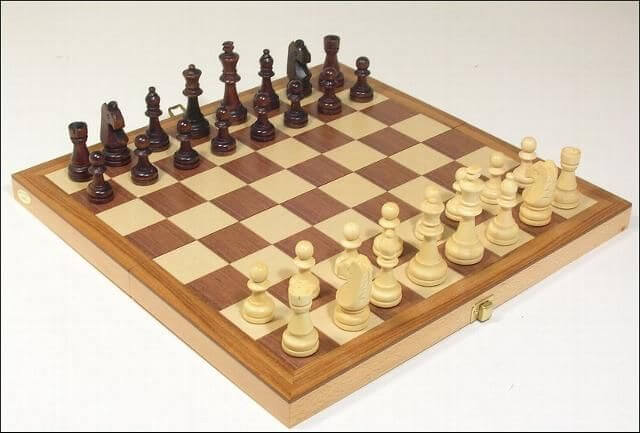
Rules
The rules of chess (also known as the laws of chess) are rules governing the play of the game of chess. While the exact origins of chess are unclear, modern rules first took form during the Middle Ages. The rules continued to be slightly modified until the early 19th century when they reached essentially their current form. The rules also varied somewhat from place to place. Today, the standard rules are set by FIDE (Fédération Internationale des Échecs), the international governing body for chess. Slight modifications are made by some national organizations for their own purposes. There are variations of the rules for fast chess, correspondence chess, online chess, and Chess960.
Chess is a two-player board game utilizing a chessboard and sixteen pieces of six types for each player. Each type of piece moves in a distinct way. The goal of the game is to checkmate (threaten with inescapable capture) the opponent’s king. Games do not necessarily end in checkmate; players often resign if they believe they will lose. A game can also end in a draw in several ways.
Besides the basic moves of the pieces, rules also govern the equipment used, time control, conduct and ethics of players, accommodations for physically challenged players, and recording of moves using chess notation. Procedures for resolving irregularities that can occur during a game are provided as well.
Chess is played on a chessboard, a square board divided into 64 squares (eight-by-eight) of alternating color, which is similar to that used in draughts (checkers) (FIDE 2008). No matter what the actual colors of the board, the lighter-colored squares are called “light” or “white”, and the darker-colored squares are called “dark” or “black”. Sixteen “white” and sixteen “black” pieces are placed on the board at the beginning of the game. The board is placed so that a white square is in each player’s near-right corner. Horizontal rows are called ranks and vertical rows are called files.
Each player controls sixteen pieces:
| Piece | King | Queen | Rook | Bishop | Knight | Pawn |
|---|---|---|---|---|---|---|
| Number | 1 | 1 | 2 | 2 | 2 | 8 |
| Symbols |
At the beginning of the game, the pieces are arranged as shown in the diagram: for each side one king, one queen, two rooks, two bishops, two knights, and eight pawns. The pieces are placed, one on a square, as follows:
- The rooks are placed on the outside corners, right and left edge.
- The knights are placed immediately inside of the rooks.
- The bishops are placed immediately inside of the knights.
- The queen is placed on the central square of the same color of that of the player: white queen on the white square and black queen on the black square.
- The king takes the vacant spot next to the queen.
- The pawns are placed one square in front of all of the other pieces.
Popular mnemonics used to remember the setup are “queen on her own color” and “white on right”. The latter refers to setting up the board so that the square closest to each player’s right is white (Schiller 2003:16–17).
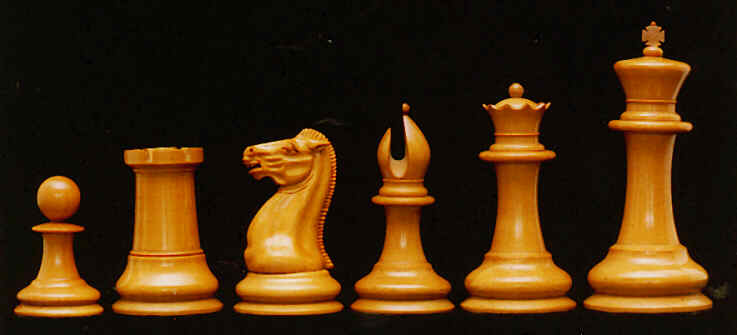
Equipment
Pieces of the Staunton chess set design are the standard and are usually made of wood or plastic. They are often black and white; other colors may be used (like a dark wood or even red for the dark pieces) but they would still be called the “white” and “black” pieces (see White and Black in chess). The height of the king should be 85 to 105 millimetres (3.35–4.13 inches). A height of approximately 95 to 102 mm (3 3⁄4–4 inches) is preferred by most players. The diameter of the king should be 40 to 50% of its height. The size of the other pieces should be in proportion to the king. The pieces should be well balanced (Just 2014).
In games subject to time control, a chess clock is used, consisting of two adjacent clocks and buttons to stop one clock while starting the other, such that the two component clocks never run simultaneously. The clock can be analog or digital through a digital clock is highly preferred under both USCF and FIDE rulesets. This is since most tournaments now include either a time delay (a countdown to when a clock starts again) or add (extra time being added prior or after the move) to their time controls. Before the start of the game, either the arbiter decides, or whoever is playing Black, where the chess clock is placed.
Carrom (also spelled carom) is a cue sport-based tabletop game of South Asian origin. The game is very popular in India, Bangladesh, Afghanistan, Nepal, Pakistan, Sri Lanka and surrounding areas, and is known by various names in different languages. In South Asia, many clubs and cafés hold regular tournaments. Carrom is very commonly played by families, including children, and at social functions. Different standards and rules exist in different areas .
History
Carrom as we know it today has been played for nearly two hundred years, although games of a very similar nature have been played for thousands of years under a variety of names. Some believe it originated in India, while others link its origins to Portugal and even Burma. Carrom is spelled in many ways, including carom, carum, karom, and kairam; One may find this confusing, but it simply reinforces an underlying trend and nature of this game, where tradition and history reveal variety and differences. The history of thought and the history of carrom preceded the written word and we, therefore, have no record of it. The game lives through play, not necessarily dependent upon words.
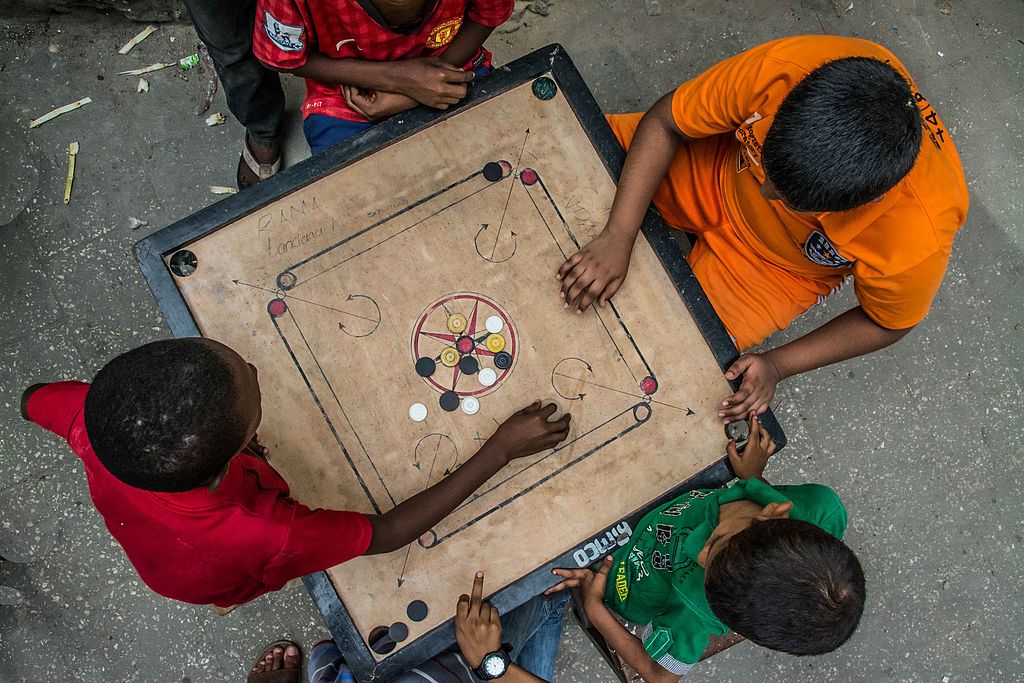
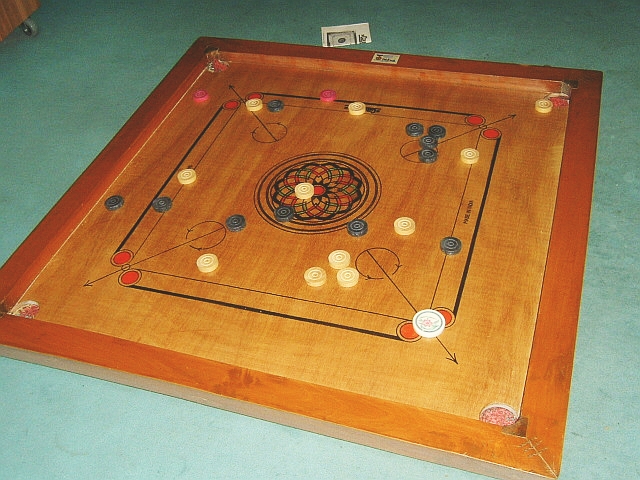
Rules
Most casual players would find the following simplified carrom rules quite useful to get started with the game. However, the formal professional Laws of Carrom adopted by the International Carrom Federation are also available if required.
Generally speaking, two or four people can play carrom. If two, the players sit opposite each other, while with four, the opposite two are partners. As an exception, though, you can play with three players against each other for points.
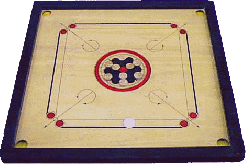
Game Start
Arrange the carrom men on the centre circle of the carrom board as shown in the following illustration, with the red ‘queen’ at the center. The whites should be lined up to form a “Y” shape, with two sides aiming directly towards the corner pockets.

Carrom Men Setup
Each player sits on his side of the board and can only strike from that side. The contestant playing white ‘breaks’ or plays first, which can be decided by the toss of a coin. The object of the game of carrom is to sink all of your carrom men, using the heavier ‘striker’, in any of the pockets before your opponent. Your turn continues as long as you keep sinking your carrom men – luck shots count and all combinations are permitted.
When placing the striker on the board to shoot, it must touch both ‘baselines’, either covering the end circle completely or not touching it at all. The striker may not touch the diagonal arrow line.
![]()
Correct Striker Placement
![]()
Incorrect Striker Placement

Index Finger

Middle Finger
Shooting styles are very personal – whichever ‘grip’ works for you is fine as long as you ‘flick’ the striker and don’t push it. Generally, it’s best to orient your body in order to see the line of your aim while shooting comfortably; you may not move or leave your chair.

Scissors Shot

Thumb Shot
For forward shots, you can use your index finger, middle finger, or even the ‘scissors’ shot. Before shooting, try touching the striker with your fingernail, to be sure that its really on the line. This will improve your accuracy and prevent you from hurting your finger.
For ‘back-shots’ you may only use your thumb or the scissors technique.
No part of your body, except your hand, may cross the imaginary diagonal line nor may your elbow protrude over the frame in front of you. Even your feet or knees my not leave your quadrant.

Incorrect Arm Position
The red ‘queen,’ can be pocketed at any time after sinking your first piece but must be sunk before your last one. After pocketing the queen, you must sink one of your carrom men, thereby ‘covering’ it, into any pocket in the next shot, or she is returned to the center spot.
Once the queen is covered, whoever clears all their carrom men first wins the ‘board’.
The winner of a board collects one point for each of the opponent’s carrom men left at the finish and three points for the queen if covered by the winner (if covered by the loser, no-one gets those points). No more points are collected for the queen after your score reaches 22.
A game consists of 25 points or eight boards, whichever comes first.
- Sinking the striker costs you one piece and your turn. But, if you sink a piece in the same shot, then two come up and you shoot again.
- After sinking the striker, your opponent places the due piece(s) within the center circle. If you haven’t sunk one yet, you owe one.
- If while shooting for the queen you also sink one of your carrom men in the same shot, the queen is automatically covered, no matter which went first.
- If a piece jumps off the board, it is placed on the center spot. If pieces land on end or are overlapping, they are left that way.
- If the center spot is partially covered when replacing the queen or a jumped piece, the piece should cover as much red as possible. If totally covered, the piece is placed opposite the next player behind the red spot.
- If you sink your opponent’s piece, you lose your turn. If you sink their last piece, you lose the board and three points.
- If you sink your last piece before the queen, you lose the board, three points and one point for each of your opponent’s pieces left.
- If the striker does not leave both lines, go again. You get three tries to break before losing your turn.
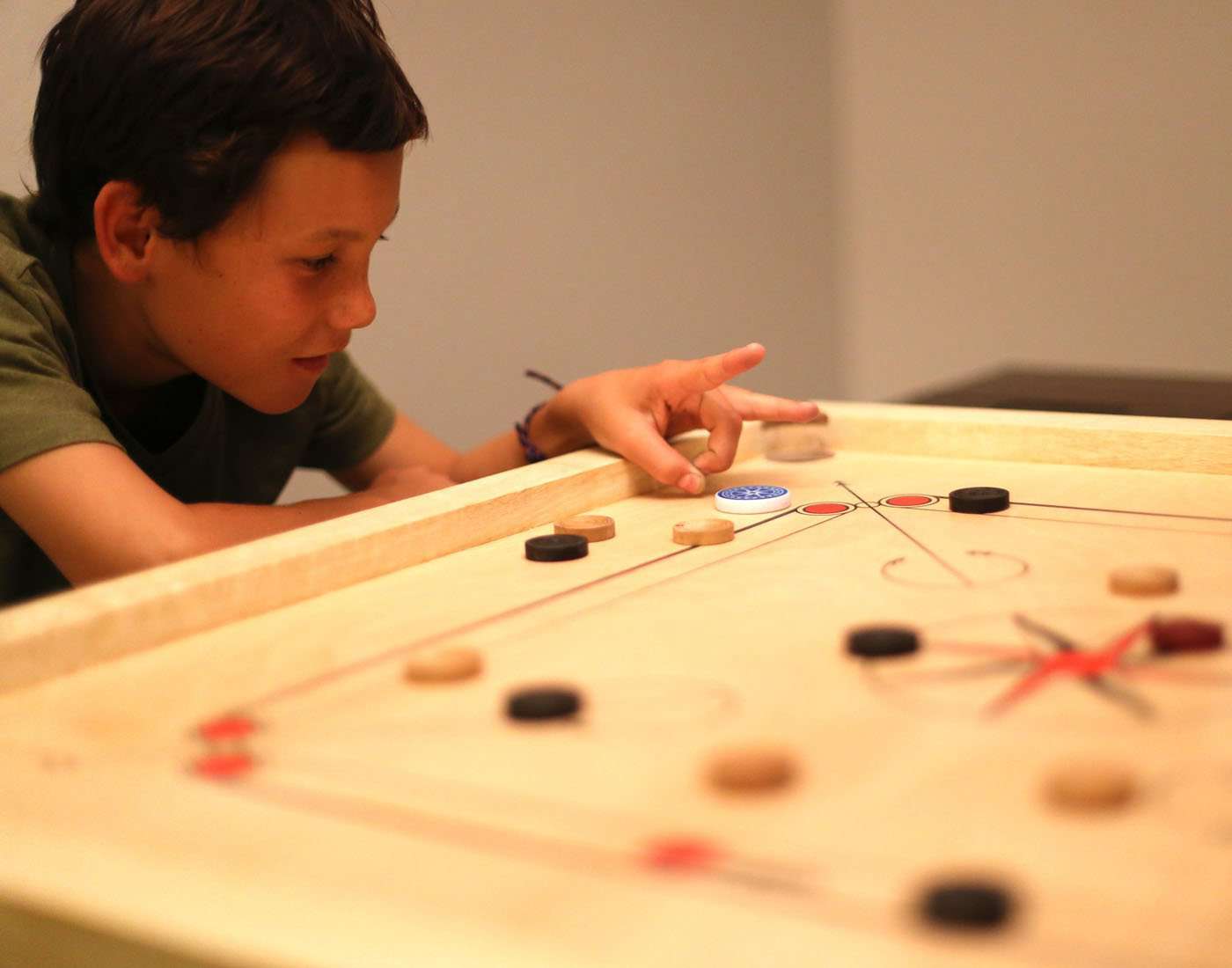
Equipment
-
Carrom Board
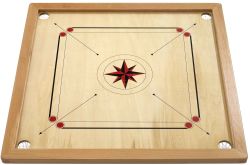
A square plywood board with a wooden frame and netted pockets in each corner.
The playing surface comprises of a square plywood board with screen printed lines and patterns, polished for a smooth low friction and hard wearing finish. The standard playing area is 74 cm x 74 cm i.e. 29″ square. However, smaller sizes are suitable for children while larger ones are great if you are already familiar with the game and want to try something different, albeit non-standard.
Boards come with different border frame widths, ranging from 1.25″ (about 32 mm) to 3.00″ (about 75 mm), with the thicker and heavier ones being more expensive and far better to play on due to better rebound or cannon effect generated.
 The four pockets or holes, one in each corner of the board, feature nets secured underneath to hold the pocketed carrom men or striker.
The four pockets or holes, one in each corner of the board, feature nets secured underneath to hold the pocketed carrom men or striker.
 Wooden bracing supports underneath the board’s surface, secured to both the plywood board and the border frame, reinforce the playing surface and avoid any warping.
Wooden bracing supports underneath the board’s surface, secured to both the plywood board and the border frame, reinforce the playing surface and avoid any warping.
-
Carrom Men
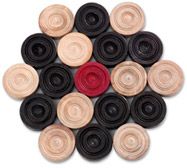
A set of nineteen light wooden or acrylic discs or coins (known as carrom men) – nine white, nine black and one red (known as the Queen).
While wooden carrom men are conventional, the recent acrylic or resin alternatives are lighter and less abrasive, thereby facilitating a faster game. However, if you’ve always played with wooden ones, it does take some time getting used to the acrylic ones – almost like driving an automatic car after years on a manual!
-
Carrom Striker
 An acrylic disc (larger and heavier than the coins) used to “strike” the coins.
An acrylic disc (larger and heavier than the coins) used to “strike” the coins.
There is such a wide variety of strikers available that selecting one in terms of physical appearance is a matter of personal choice. They come in all sorts of colours, ranging from ivory to black, with various illustrations, engravings etc. Since a poor striker can dampen the game altogether, it is important to go for quality ones with a smooth surface, for minimum friction and high impact.
-
Carrom Powder
 Carrom powder is sprinkled on the board’s surface to reduce friction, thereby enabling smoother and faster play.
Carrom powder is sprinkled on the board’s surface to reduce friction, thereby enabling smoother and faster play.
Broadly speaking, there are two basic types of carrom powder. The traditional commonly available powder is boric acid based, and works quite well to reduce friction. Also, few retailers now offer a new type of Telfon based super fine or “Disco” powder (usually available in small plastic bottles), which enhances performance significantly. It is important to understand that boric based powder works by reducing friction, while the “Disco” powder comprises of microspheres that act as rollers. Although the latter increases the speed noticeably, it is abrasive and can damage the board surface with prolonged use.
For optimum performance and longer life of your board, spray a small quantity of boric powder before each game, and never use two different types of powders simultaneously. If you wish to switch from one kind of powder to another, lightly wipe off the old powder with a soft cloth completely before using the new powder.
Associations
The US Carrom Association was formed in 1995 to promote the international sport of carrom in America. The goal of the USCA is to create a thriving carrom community in the US and to ensure US participation in the many international carrom tournaments and events organized by the International Carrom Federation or other National Carrom Associations around the world.
Current committee of USCA is
- President: Jayadev Suryadevara
- Vice President: Surya Mantena
- Treasurer: Shibu Jose
- Secretary: Aditya Chavali
- Joint Secretary: Srinivasan Rayaprolu.
The All India Carrom Federation (AICF) is India‘s national sport federation for the indigenous game of carrom, sanctioning six to seven national-level tournaments per year. It is India’s representative body in the International Carrom Federation. The AICF has 15 regional and 28 state subnational affiliate institutions, the largest of which is the Maharashtra Carrom Association, further subdivided into local organizations.
- The president of the federation (as of 2007) is Rakibul Hussain, and its general secretary is V. D. Narayan Recent national champions include M. Shankra, Ravinder Goudand A. Maria Irudayam.
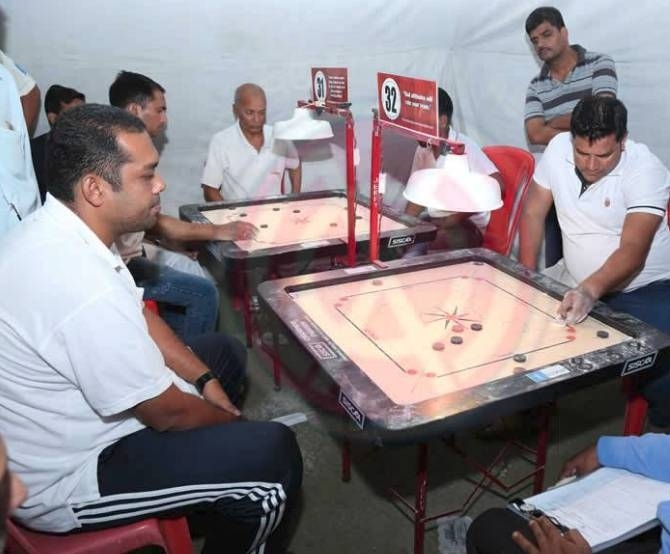
Ice racing is a form of racing that uses cars, motorcycles, snowmobiles, all-terrain vehicles, or other motorized vehicles. Ice racing takes place on frozenlakes or rivers, or on groomed frozen lots. As cold weather is a requirement for natural ice, it is usually found at higher latitudes in Canada, the northern United States, and in northern Europe, although limited indoor events are held in warmer climates, typically on ice hockey rinks (motorcycles and ATVs only). Tracks in North America vary from 1/4 mile (~400 m) long ovals to several mile-long road course designs.
In Sweden and Finland ice racing have been big event since 1960 about.
History
Ice Racing started in Ontario more than forty years ago, and it continues to thrive as an inexpensive, fun part of the Ontario motorsport scene.
The events were originally held on frozen lakes and rivers – and some still are – but in the late seventies, the Ontario championships moved to more permanent facilities at the fairgrounds in Minden, Ontario.
The track is laid out, then repeatedly coated with water until a thick layer of ice is built up between the snowbanks that delineate the course. The ice race season starts in mid January and runs until early March, usually consisting of six two-day events.

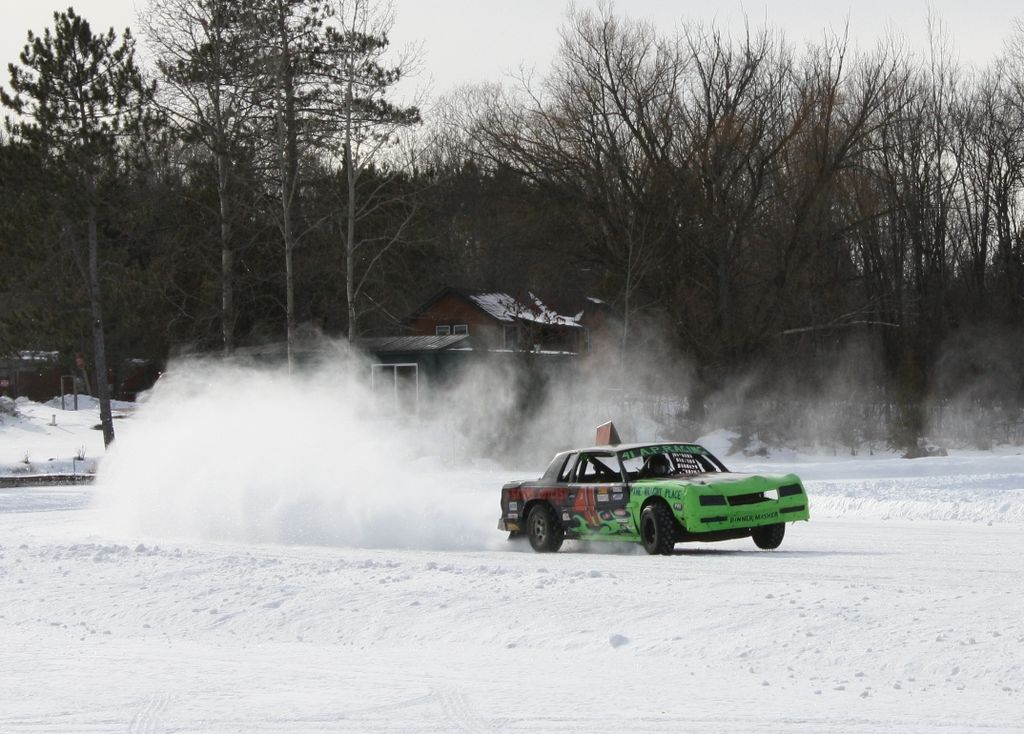
Violation of the Rules
1st Violation ‐ A first violation will result in disqualification from the race, loss of points for the race and start the remaining races of the day in appropriate class from the rear.
2nd Violation ‐ A second violation will result in disqualification from the race, loss of all points for the weekend, and suspension from the following weekend.
Blue Flag Violation ‐ Points will be forfeited for the race day for any driver who hits another car that is stuck in a snow bank after the blue flag has been displayed.
Black Flag Violation ‐ Any reported contact with a pylon will result in a black flag and a stop and go penalty.
All rules and their interpretations, as well as race procedures including penalties, are determined by race officials. Race officials’ decisions are final.
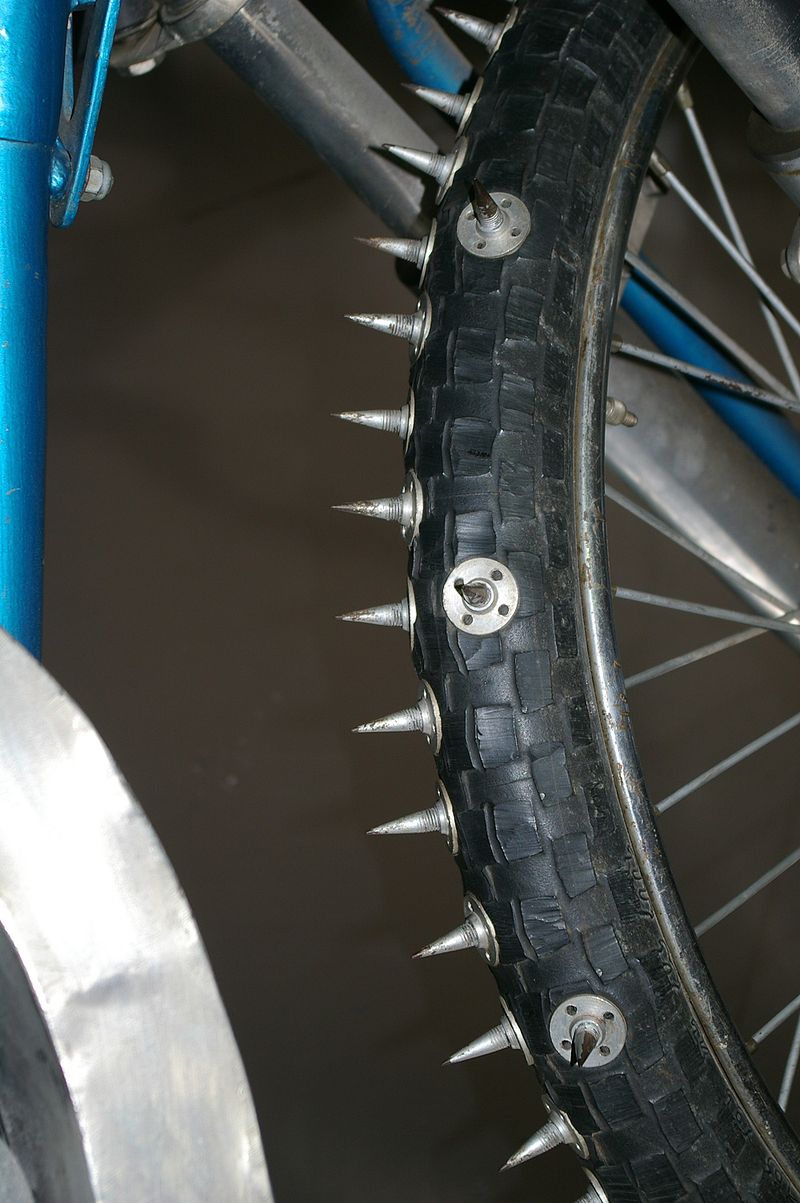
Equipments
Tracks: Tracks used for ice racing include ovals and road courses. Some tracks are dirt track racing tracks with the snow plowed off them. When there is no natural snow, an icy surface may be created by spraying the dirt surface with water when the temperature is below freezing. Artificial ice tracks (usually speed skating ovals) are used where it is not possible to construct natural ice tracks. Some tracks are made by plowing the snow off an area of a frozen lake. Spectators frequently park their cars around the outside of the track on a frozen lake.
In the UK ice meetings have been staged at ice rinks. The longest running event, at Telford, features riders using conventional machines with spiked tires. In the late 1960s, ice racing was staged at a number of rinks in Scotland but the machines used were really based machines with all-season tires.
In Nordic countries track are about one mile. Many tracks are very different.
Tires
Ice racing tires are either studded or non-studded. Studded tires have a stud such as a screw or a bolt to provide better traction and increased speed. Some studs are sharpened to increase penetration. Tires cannot be purchased with studs, so the pit crew needs to attach the studs to the tire. Through 2008, Menard’s Racing in Wisconsin manufactured and sold studded racing tires for cars, and they were required in many ice-racing classes. Cars with studded tires are generally required to contain a roll cage and increased safety equipment since they achieve much more speed with the greater cornering abilities.
The caber toss is a traditional Scottish athletic event in which competitors toss a large tapered pole called a “caber”. It is normally practiced at the Scottish Highland Games. In Scotland, the caber is usually made from a Larch tree and is typically 19 feet 6 inches (5.94 m) tall and weighs 175 pounds (79 kg). The term “caber” derives from the Gaelic word cabar, which refers to a wooden beam.
The person tossing the caber is called a “tosser” or a “thrower”.
It is said to have developed from the need to toss logs across narrow chasms (in order to cross them), lumberjacks needing to transport logs by throwing them in streams, or by lumberjacks challenging each other to a small contest.
The record for most caber tosses in three minutes is currently held by the Canadian Danny Frame. He managed to perform 16 successful caber tosses on 20 July 2018 at the Heart of the Valley Festival in Middleton, Nova Scotia, Canada.
History
The hero of my latest release, Kilted Lover, tosses cabers at the Scottish Games. I thought it would be fun to take a look back at the history of the caber toss and see why it was invented.
But first, what is the caber toss? It is a heavy athletic event at Highland/Scottish Games. A caber is a 15 – 23 feet long log, usually peeled, weighing between 70 and 200 pounds (depending on who you ask, and the type of tree). The athlete squats with his feet flat on the ground and wedges the caber between his shoulder and neck, pushes upward with his hands, and lifts it slightly, just enough to slide his interlocked hands beneath the smaller end. (During the event, no one can assist him in lifting it.) Then, with the caber resting against his shoulder, he lifts and stands upright. He must balance the log in the air. Remember, the heavier, larger end of the log is up, so he may stagger around a bit until it is balanced. He takes a short run forward and flips the log in the air. He must make the large end hit the ground and the small end flip over and land straight ahead, away from him. This is an event of accuracy rather than distance, so it doesn’t matter how far he throws it. For the best score, the small end of the caber needs to land at the 12 o’clock position, straight out from the thrower.
Caber tossing, also called turning the caber, or the “tossing (or casting) of ye barr” was first recorded as an athletic event in Scotland at a 1574 “wappinschawes” (weapon-showings) which were sporting contests of strength, agility and speed which related to military prowess.
As for the history of caber tossing… Round Hill Highland Games website says: “The history of the caber is elusive. The term ‘caber’ derives from the Gaelic word “cabar” or “kaber” which refers to a rafter or beam. The most prominent legend surrounding the origin of the caber toss is that of breaching barriers or crossing streams during wartime. In the Scottish highlands, you often have freezing-cold streams that you need to cross. During battle, the caber was tossed from one side of the stream to the other to quickly make a bridge, allowing fellow Scotsmen to cross and continue on to chase rival clans. This is why the caber is tossed for accuracy, rather than distance.”
This makes perfect sense. Scotland is a very wet place, with many lochs, bogs and streams. It would take lots of practice and great skill to put the caber exactly where it needed to be, across the stream, and not in the stream where it might float away.
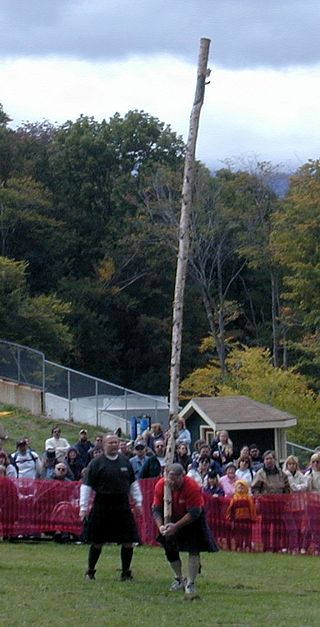
Rules
The primary objective is to toss the caber so that it turns end over end, falling away from the tosser. Ideally, it should fall directly away from the tosser in the “12 o’clock” position. The distance thrown is unimportant.
The tosser balances the caber upright, tapered end downwards, against his or her shoulder and neck, the caber being supported by stewards or fellow-competitors while being placed into position. The tosser then crouches, sliding his interlocked hands down the caber and under the rounded base, and lifts it in his cupped hands.
While standing he must balance the caber upright; this is not easy with the heavier end at the top, and less-experienced tossers may be unable to stop the caber falling to one side after lifting it. The tosser then walks or runs a few paces forward to gain momentum, and flips the tapered end upwards so that the large end hits the ground first, and, if well tossed, the caber falls directly away from the tosser.
Weight and strength are clearly essential for success, but the technique is also important for balancing the caber when lifting it and flipping up the held (tapered) end to promote a clean toss.
Scoring
The straightest end-over-end toss scores highest. If the caber lands on its end but falls back towards the thrower, the score is lower than for any end-over-end throw but is based upon the maximum vertical angle that the caber achieved (side-judging may involve a second judge).
End over end tosses are scored according to the hours on a clock, with a 12:00 score being highest (falling directly away from the thrower), down to a 9 or 3 for cabers that reach a vertical, before falling to the side.
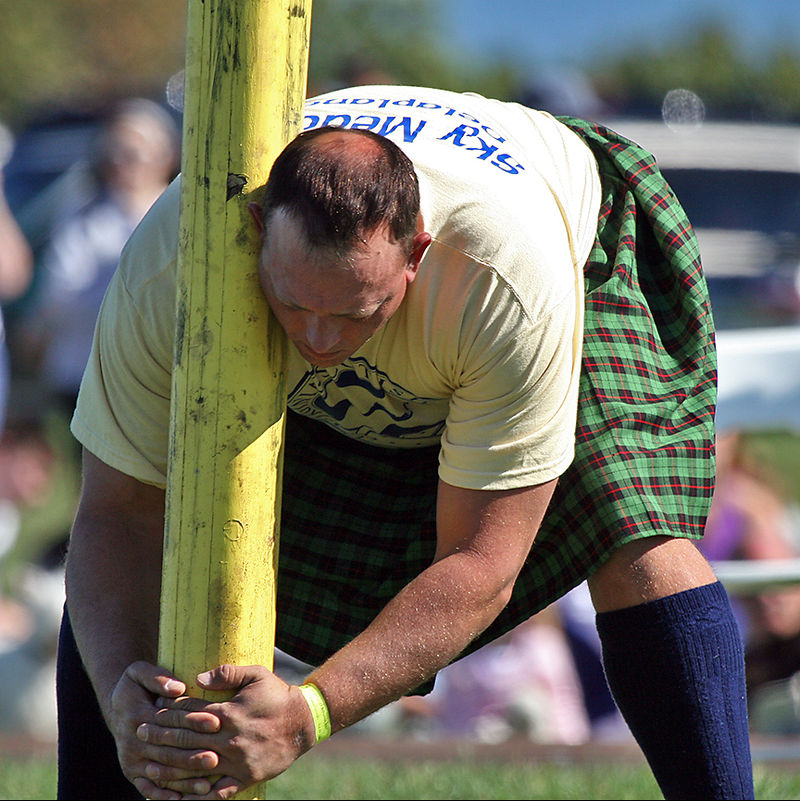
Equipments
The person tossing the caber is called a “tosser” or a “thrower”. It is said to have developed from the need to toss logs across narrow chasms (in order to cross them), lumberjacks needing to transport logs by throwing them in streams, or by lumberjacks challenging each other to a small contest.
Hot air ballooning is the activity of flying hot air balloons. Attractive aspects of ballooning include the exceptional quiet (except when the propane burners are firing), the lack of a feeling of movement, and the bird’s-eye view. Since the balloon moves with the direction of the winds, the passengers feel absolutely no wind, except for brief periods during the flight when the balloon climbs or descends into air currents of different direction or speed. Hot air ballooning has been recognized by Fédération Aéronautique Internationale (FAI) as the safest air sport in aviation, and fatalities in hot air balloon accidents are rare, according to statistics from the National Transportation Safety Board (NTSB).
History
First manned flight
The first clearly recorded instance of a balloon carrying passengers used hot air to generate buoyancy and was built by the brothers Joseph-Michel and Jacques-Etienne Montgolfier in Annonay, France. After experimenting with unmanned balloons and flights with animals, the first tethered balloon flight with humans on board took place on October 19, 1783, with the scientist Jean-François Pilâtre de Rozier, the manufacture manager, Jean-Baptiste Réveillon and Giroud de Villette, at the Folie Titon in Paris. The first free flight with human passengers was on November 21, 1783. King Louis XVI had originally decreed that condemned criminals would be the first pilots, but de Rozier, along with Marquis Francois d’Arlandes, successfully petitioned for the honor.
Modern revival
Modern hot air ballooning was born in 1960 when Ed Yost launched a balloon with a new nylon envelope and propane burner system of his own invention. Yost’s first balloon was basketless, with nothing but a seat for him to ride on, but in a few years, he and other balloon enthusiasts would develop balloons much like the ones used today.
Today, hot air balloons are used primarily for recreation. According to the FAA’s General Aviation Survey data, in 2012, there were about 2,300 personally owned and flown balloons, and about 495 commercial “sight-seeing” ride operators in the United States. Since piloting a balloon requires some effort (licensing and purchase of equipment), many people opt to purchase a balloon flight from a company offering balloon rides. Balloon rides are available in many locations around the world and are especially popular in tourist areas. Balloon festivals are a great way to see hot air balloons close up, and are an enjoyable family outing. Balloon festivals usually include other activities like live entertainment, amusement rides, etc.
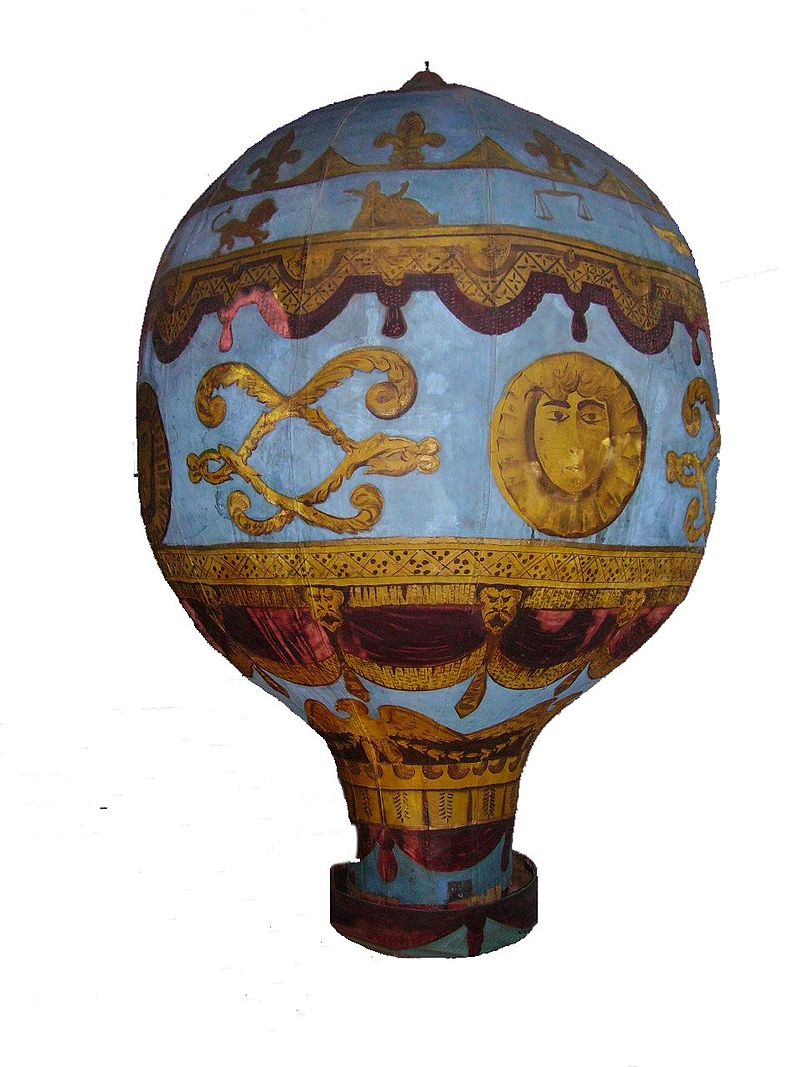

Flight Techniques
Most hot air balloon launches are made during the cooler hours of the day, at dawn or two to three hours before sunset. At these times of day, the winds are typically light making for easier launch and landing of the balloon. Flying at these times also avoids thermals, which are vertical air currents caused by ground heating that make it more difficult to control the balloon. In the extreme, the downdrafts associated with strong thermals can exceed the ability of a balloon to climb and can thus force a balloon into the ground.
Sequence
Preflight preparation
Before a safe hot air balloon flight can begin, the pilot must check the weather and select a suitable take-off point. The current and forecast weather must have sufficient visibility for the pilot to see and avoid obstructions (little or no fog or low clouds) and sufficiently slow winds to allow take-off and landing (less than 5 or 10 mph depending on skill and experience of the pilot, passengers, and ground crew).
The take-off point must be large enough to lay out and inflate the envelope and clear of obstructions such as power lines and poles, trees, and buildings to allow lift-off under the predicted wind conditions. Finally, the take-off point must be situated such that the predicted winds will move the balloon in the direction of suitable landing sites. Taking off from a location that is directly up wind of a hazard, such as a large body of water, a large metropolitan area, or a large uninterrupted forest, without sufficient fuel to pass over the hazard is not safe.
Set up

Hot air balloon, set up and launch, Stockholm 1988.
The next step in a hot air balloon flight is unpacking the balloon from its carrying bag, laying it out on the ground, and connecting it to the basket and burner. A fan, often gasoline-powered, is used to blow cold (outside) air into the envelope. The cold air partially inflates the balloon to establish its basic shape before the burner flame is aimed into the mouth heating the air inside. A crew member stationed opposite the mouth holds a rope (crown line) tied to the apex (crown) of the envelope. Some balloons, AX7 and larger, may have two (or more) crown lines. The “grown-man” role is twofold: one is to prevent the envelope from excessive sway, and two is to prevent the envelope from rising before it is sufficiently buoyant. Once the balloon is upright, pilot and passengers climb into the basket. When the pilot is ready for launch, more heat is directed into the envelope and the balloon lifts off.
The crew then pack up inflation equipment and follow the balloon with the retrieve vehicle (also called a chase vehicle).
Flight
During the flight, the pilot’s only able to steer the balloon is the ability to climb or descend into winds going different directions. Thus, it is important for the pilot to determine what direction the wind is blowing at altitudes other than the balloon’s altitude. To do this, the pilot uses a variety of techniques. For example, to determine wind directions beneath the balloon a pilot might simply spit or release a squirt of shaving cream and watch this indicator as it falls to determine where possible turns are (and their speed). Pilots are also looking for other visual clues such as flags on flagpoles, smoke coming from chimneys, etc. To determine wind directions above the balloon, the pilot will obtain a weather forecast prior to the flight which includes upper-level wind forecasts. The pilot will also send up a helium pilot balloon, known as a met-balloon in the UK and pibal in the USA, prior to launch to get information about what the wind is actually doing. Another way to determine actual wind directions is to watch other hot air balloons, which are the equivalent of a large met-balloon.
Control
The direction of flight depends on the wind, but the altitude of the balloon can be controlled by changing the temperature of the air inside the envelope. The pilot may open one or more burner blast valves to increase the temperature inside the envelope, thereby increasing lift, and thus ascend or slow or stop a descent. The pilot may also open a vent, if the envelope is so equipped, to let hot air escape, decreasing the temperature inside the envelope, thereby decreasing lift, and thus descend or slow or stop an ascent. Unless the pilot intervenes, the air inside the envelope will slowly cool, by seepage or by contact with cooler outside air, and slowly provide less lift.
Delayed response
One of the tricks involved in flying a balloon is learning to deal with the delayed response. To slow or stop a descent requires the pilot to open a burner blast valve. This sends hot combustion exhaust through the mouth into the envelope where it expands and forces some cooler air out of the mouth. This lightens the total weight of the system and increases its buoyancy, but not immediately. From the time that the burner is lit until the balloon slows or stops its descent can take 30 seconds or more, depending on its rate of descent, how cold it has become, and how powerful the burner. This delay requires a great deal of anticipation on the part of the pilot.
Steerage
The ability to change direction with altitude is called steerage. In the ideal case, in the northern hemisphere, wind direction turns to the right with an increase in altitude. This is due to the Coriolis effect. Winds spiral clockwise when seen from above, out of a high-pressure system and counterclockwise into a low-pressure system. However, air traveling close to the ground will tend to move in more of a straight line from high to low pressure due to drag with the ground. Thus, a pilot may hope to find a turn to the left during the descent to landing. In the southern hemisphere, the direction of the spirals is reversed. In reality, interaction with an uneven terrain may lessen or completely eliminate this phenomenon.
Level flight
The burner is designed to create enough heat to warm up the balloon quickly. It is most efficient only when wide open. There is no good way to maintain the exact temperature required to maintain equilibrium.
Add to that the fact that when a hot air balloon is not actively being heated, it is cooling off. This means that it is in perfect equilibrium only momentarily. The rest of the time it is either too warm or too cool and so either climbing or descending.
These two facts together mean that under most conditions level flight is anything but. The goal of the pilot is to light the burner at the right interval and for the right duration (a few seconds) to keep the balloon slowly drifting up and down about the desired altitude.
An exception is made when flying close to the ground, as in an approach to a landing. Then the burner may be lit for very short bursts at a much higher frequency, thus sacrificing efficiency for accuracy.
Chase
While it is certainly possible to enjoy the sport of hot air ballooning without a chase vehicle, returning from the landing site by foot, bicycle, or hitchhiking, many balloonists opt to be followed by their ground crew in some sort of chase vehicle. The crew at the landing site can aid with the landing itself, by catching a drop line and guiding the balloon into a tight space; with extracting the balloon system from a remote location, such as deep in a farmer’s field; and with packing up all the equipment.
Sometimes, a chase vehicle may be equipped with a trailer, which can provide a lot more room at the cost of being more difficult to maneuver. A pickup truck or van by itself can be a lot more maneuverable but at the cost of squeezing all the equipment, crew, pilot, and passengers into a single vehicle. Many chase vehicles are fitted with a cargo liftgate to aid in loading heavy equipment into the cargo space (the envelope itself can weigh 250 lbs or more).
Communication between the balloon and chase vehicle can be accomplished by two-way radio, or even shouting when they are close enough together. The use of cell phones for this purpose, while the balloon is flying, may violate local telecommunication laws and should, therefore, be avoided except in an emergency situation.
Landing
Most pilots try to perform as smooth a landing as possible. This becomes difficult if the air at ground level is moving at more than 5 mph (2.2 m/s) or so. If the balloon is moving at this speed or more when it contacts the ground, the basket (which usually does not have wheels of any kind on the bottom) may drag for a bit or even tip over. Even the presence of a ground crew may not help much. The combined weight (for an average passenger-carrying system as calculated above) can easily exceed the weight of a large automobile. (It is best not to be on the downwind side of a landing balloon to avoid being pinned between it and a hard place.) Pilots can improve the situation by landing in a spot protected from the wind, such as behind a line of trees or in a small valley.
Once the balloon has landed, the envelope is deflated and detached from the basket. The envelope is then packed into its carrying bag. The burner and the basket may be separated and all components are packed into the retrieve vehicle.
Competition
In competition, the pilots need to be able to read different wind directions at different altitudes. Balloon competitions are often called “races” but they’re most often a test of accuracy, not speed. For most competitive balloon flights, the goal is to fly as close as possible to one or more exact points called “targets”. Once a pilot has directed the balloon as close as possible to a target, a weighted marker with an identifying number written on it is dropped. The distance between a pilot’s marker and that target determines his or her score. During some competitive flights, pilots will be required to fly to 5 or more targets before landing. To assist with navigation, topographic maps and GPS units are used. Another common form of competition is the “Hare and Hound” race. The Hare balloon takes off a set amount of time before the Hound balloons and typically flies with multiple altitude changes to make it more difficult for the chasing balloons to match its flight path. After a set amount of flight time, the Hare will land and typically lay out a target cross for the Hounds to drop their weighted markers near. As above, the distance between a pilot’s marker and the target determines his or her score.
Some experienced pilots are able to take a flight in one direction then rise to a different altitude to catch the wind in a returning direction. With experience, luck, and the right conditions, some pilots are able to control a precision landing at the destination. On rare occasions, they may be able to return to the launch site at the end of the flight. This is sometimes called a box effect when winds at altitude flow in the opposite direction of surface winds.
Hazards
The dangers of the sport include excessive (vertical or horizontal) speed during landing, mid-air collisions that may collapse the balloon, and colliding with high voltage power lines. It is the last of these, contact with power lines, that poses the greatest danger. One of the most common causes of serious ballooning accidents in the US is power line strikes. One reason for the high frequency of such incidents is the fact that pilots often attempt to land their balloons on or near roads in order to reduce the amount of off-road driving necessary to recover the balloon. However, in most rural areas where balloons fly, roads usually have power lines running along them.
Of the 11 accidents involving fatalities recorded by the NTSB between 1997 and 2007, 4 involved contact with power lines, 3 involved falling after hanging onto the outside of a rising balloon, 3 involved striking an object on landing (boulder, wall, or tree), and 1 involved an equipment failure (an eyebolt).
Winter flight
Seattle Ballooning Flying A Hot Air Balloon In The Mountains Near Seattle
The ability to fly hot air balloons in the winter is limited mostly by the ability of the participants to withstand the cold. The balloons themselves fly well in cold air. Because the temperature difference between inside and outside the balloon, not the absolute inside temperature, determines the lift it develops, a much lower internal temperature is sufficient to fly in cold weather.
However, if the liquid propane in the fuel tanks is too cold (0 °C/32 °F or less) it does not generate sufficient vapor pressure to adequately feed the burner(s). This can be overcome by charging the fuel tanks with an inert gas such as nitrogen or by warming them, with electric heat tapes, for example, an insulating them against the cold.
Tethering
Sometimes, especially at balloon festivals or other special events, balloons are flown while tied to the ground with ropes (tethers). This enables quick rides to many passengers, instead of long rides drifting with the wind away from the event with one load of passengers. Tethering techniques depend on the balloon manufacturer’s instructions and wind conditions. Tethers can be attached to the basket, burner support, or the top of the envelope. A “night glow” is a tethered flight in darkness to enhance visual effects. While typical day flights use the main valve, using an efficient blue flame, at night tethered pilots use the liquid valve “whisper burner” (“cow burner”, as it does not startle livestock), creating a spectacular bright orange flame.
Though tethered, a balloon is considered a registered flying aircraft when it leaves the ground.
Basketball is a team sport in which two teams, most commonly of five players each, opposing one another on a rectangular court, compete with the primary objective of shooting a basketball (approximately 9.4 inches (24 cm) in diameter) through the defender’s hoop (a basket 18 inches (46 cm) in diameter mounted 10 feet (3.048 m) high to a backboard at each end of the court) while preventing the opposing team from shooting through their own hoop. A field goal is worth two points, unless made from behind the three-point line, when it is worth three. After a foul, timed play stops and the player fouled or designated to shoot a technical foul is given one or more one-point free throws. The team with the most points at the end of the game wins, but if regulation play expires with the score tied, an additional period of play (overtime) is mandated.
Players advance the ball by bouncing it while walking or running (dribbling) or by passing it to a teammate, both of which require considerable skill. On offense, players may use a variety of shots—the lay-up, the jump shot, or a dunk; on defense, they may steal the ball from a dribbler, intercept passes, or block shots; either offense or defense may collect a rebound, that is, a missed shot that bounces from rim or backboard. It is a violation to lift or drag one’s pivot foot without dribbling the ball, to carry it, or to hold the ball with both hands then resume dribbling.
The five players on each side at a time fall into five positions player positions: the tallest player is usually the center, the tallest and strongest is the power forward, a slightly shorter but more agile big man is the small forward, and the shortest players or the best ball handlers are the shooting guard and the point guard, who implements the coach’s game plan by managing the execution of offensive and defensive plays (player positioning). Informally, players may play three-on-three, two-on-two, and one-on-one.
Invented in 1891 by Canadian-American gym teacher James Naismith in Springfield, Massachusetts, United States, basketball has evolved to become one of the world’s most popular and widely viewed sports. The National Basketball Association (NBA) is the most significant professional basketball league in the world in terms of popularity, salaries, talent, and level of competition. Outside North America, the top clubs from national leagues qualify to continental championships such as the Euroleague and FIBA Americas League. The FIBA Basketball World Cup and Men’s Olympic Basketball Tournament are the major international events of the sport and attract top national teams from around the world. Each continent hosts regional competitions for national teams, like EuroBasket and FIBA AmeriCup.
The FIBA Women’s Basketball World Cup and Women’s Olympic Basketball Tournament feature top national teams from continental championships. The main North American league is the WNBA (NCAA Women’s Division I Basketball Championship is also popular), whereas strongest European clubs participate in the EuroLeague Women.
History
In early December 1891, Canadian James Naismith, a physical education professor and instructor at the International Young Men’s Christian Association Training School (YMCA) (today, Springfield College) in Springfield, Massachusetts, was trying to keep his gym class active on a rainy day. He sought a vigorous indoor game to keep his students occupied and at proper levels of fitness during the long New England winters. After rejecting other ideas as either too rough or poorly suited to walled-in gymnasiums, he wrote the basic rules and nailed a peach basket onto a 10-foot (3.0 m) elevated the track. In contrast with modern basketball nets, this peach basket retained its bottom, and balls had to be retrieved manually after each “basket” or point scored; this proved inefficient, however, so the bottom of the basket was removed, allowing the balls to be poked out with a long dowel each time.
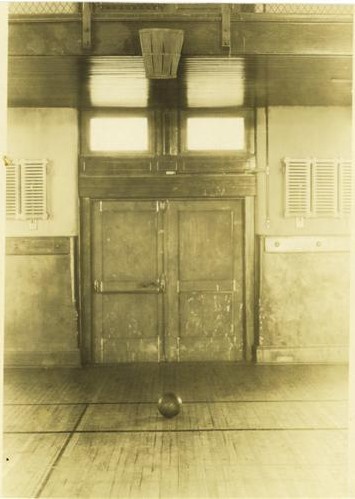

Rules
The only essential equipment in a basketball game is the ball and the court: a flat, rectangular surface with baskets at opposite ends. Competitive levels require the use of more equipment such as clocks, score sheets, scoreboard(s), alternating possession arrows, and whistle-operated stop-clock systems.
A regulation basketball court in international games is 91.9 feet (28.0 meters) long and 49.2 feet (15 meters) wide. In the NBA and NCAA court is 94 by 50 feet (29 by 15 meters). Most courts have wood flooring, usually constructed from maple planks running in the same direction as the longer court dimension. The name and logo of the home team are usually painted on or around the center circle.
The basket is a steel rim 18 inches (46 cm) diameter with an attached net affixed to a backboard that measures 6 by 3.5 feet (1.8 by 1.1 meters) and one basket is at each end of the court. The white outlined box on the backboard is 18 inches (46 cm) high and 2 feet (61 cm) wide. At almost all levels of competition, the top of the rim is exactly 10 feet (3.05 meters) above the court and 4 feet (1.22 meters) inside the baseline. While variation is possible in the dimensions of the court and backboard, it is considered important for the basket to be of the correct height – a rim that is off by just a few inches can have an adverse effect on shooting.

The size of a basketball is also regulated. For men, the official ball is 29.5 inches (75 cm) in circumference (size 7, or a “295 ball”) and weighs 22 oz (623.69 grams). If women are playing, the official basketball size is 28.5 inches (72 cm) in circumference (size 6, or a “285 ball”) with a weight of 20 oz (567 grams). In 3×3, a formalized version of the halfcourt 3-on-3 game, a dedicated ball with the circumference of a size 6 ball but the weight of a size 7 ball is used in all competitions (men’s, women’s, and mixed teams).
Violations
The ball may be advanced toward the basket by being shot, passed between players, thrown, tapped, rolled or dribbled (bouncing the ball while running).
The ball must stay within the court; the last team to touch the ball before it travels out of bounds forfeits possession. The ball is out of bounds if it touches a boundary line, or touches any player or object that is out of bounds.
There are limits placed on the steps a player may take without dribbling, which commonly results in an infraction known as traveling. Nor may a player stop his dribble and then resume dribbling. A dribble that touches both hands is considered stopping the dribble, giving this infraction the name double dribble. Within a dribble, the player cannot carry the ball by placing his hand on the bottom of the ball; doing so is known as carrying the ball. A team, once having established ball control in the front half of their court, may not return the ball to the backcourt and be the first to touch it. A violation of these rules results in loss of possession.
The ball may not be kicked, nor be struck with the fist. For the offense, a violation of these rules results in loss of possession; for the defense, most leagues reset the shot clock and the offensive team is given possession of the ball out of bounds.
There are limits imposed on the time taken before progressing the ball past halfway (8 seconds in FIBA and the NBA; 10 seconds in NCAA and high school for both sexes), before attempting a shot (24 seconds in FIBA, the NBA, and U Sports (Canadian universities) play for both sexes, and 30 seconds in NCAA play for both sexes), holding the ball while closely guarded (5 seconds), and remaining in the restricted area known as the free-throw lane, (or the “key“) (3 seconds). These rules are designed to promote more offense.

Basket interference or goaltending is a violation charged when a player illegally interferes with a shot. This violation is incurred when a player touches the ball on its downward trajectory to the basket, unless it is obvious that the ball has no chance of entering the basket, if a player touches the ball while it is in the rim, or in the area extended upwards from the basket, or if a player reaches through the basket to interfere with the shot. When a defensive player is charged with goaltending, the basket is awarded. If an offensive player commits the infraction, the basket is canceled. In either case possession of the ball is turned over to the defensive team.
Fouls
An attempt to unfairly disadvantage an opponent through certain types of physical contact is illegal and is called a personal foul. These are most commonly committed by defensive players; however, they can be committed by offensive players as well. Players who are fouled either receive the ball to pass inbounds again, or receive one or more free throws if they are fouled in the act of shooting, depending on whether the shot was successful. One point is awarded for making a free throw, which is attempted from a line 15 feet (4.6 m) from the basket.
The referee is responsible for judging whether contact is illegal, sometimes resulting in controversy. The calling of fouls can vary between games, leagues and referees.
There is a second category of fouls called technical fouls, which may be charged for various rules violations including failure to properly record a player in the scorebook, or for unsportsmanlike conduct. These infractions result in one or two free throws, which may be taken by any of the five players on the court at the time. Repeated incidents can result in disqualification. A blatant foul involving physical contact that is either excessive or unnecessary is called an intentional foul (flagrant foul in the NBA). In FIBA and NCAA women’s basketball, a foul resulting in ejection is called a disqualifying foul, while in leagues other than the NBA, such a foul is referred to as flagrant.
If a team exceeds a certain limit of team fouls in a given period (quarter or half) – four for NBA, NCAA women’s, and international games – the opposing team is awarded one or two free throws on all subsequent non-shooting fouls for that period, the number depending on the league. In the US college men’s game and high school games for both sexes, if a team reaches 7 fouls in a half, the opposing team is awarded one free throw, along with a second shot if the first is made. This is called shooting “one-and-one”. If a team exceeds 10 fouls in the half, the opposing team is awarded two free throws on all subsequent fouls for the half.
When a team shoots foul shots, the opponents may not interfere with the shooter, nor may they try to regain possession until the last or potentially last free throw is in the air.
After a team has committed a specified number of fouls, the other team is said to be “in the bonus”. On scoreboards, this is usually signified with an indicator light reading “Bonus” or “Penalty” with an illuminated directional arrow or dot indicating that team is to receive free throws when fouled by the opposing team. (Some scoreboards also indicate the number of fouls committed.)
If a team misses the first shot of a two-shot situation, the opposing team must wait for the completion of the second shot before attempting to reclaim possession of the ball and continuing play.
If a player is fouled while attempting a shot and the shot is unsuccessful, the player is awarded a number of free throws equal to the value of the attempted shot. A player fouled while attempting a regular two-point shot thus receives two shots, and a player fouled while attempting a three-point shot receives three shots.

If a player is fouled while attempting a shot and the shot is successful, typically the player will be awarded one additional free throw for one point. In combination with a regular shot, this is called a “three-point play” or “four-point play” (or more colloquially, an “and one”) because of the basket made at the time of the foul (2 or 3 points) and the additional free throw (1 point).
Associations
The International Basketball Federation (FIBA) is an association of national organizations which governs the sport of basketball worldwide. Originally known as the Fédération Internationale de Basketball Amateur (hence FIBA), in 1989 it dropped the word amateur from its name but retained the acronym; the “BA” now represents the first two letters of basketball.

Baseball is a bat-and-ball game played between two opposing teams who take turns batting and fielding. The game proceeds when a player on the fielding team, called the pitcher, throws a ball which a player on the batting team tries to hit with a bat. The objectives of the offensive team (batting team) are to hit the ball into the field of play and to run the bases—having its runners advance counter-clockwise around four bases to score what are called “runs“. The objective of the defensive team (fielding team) is to prevent batters from becoming runners and to prevent runners’ advance around the bases. A run is scored when a runner legally advances around the bases in order and touches home plate (the place where the player started as a batter). The team that scores the most runs by the end of the game is the winner.
The first objective of the batting team is to have a player reach first base safely. A player on the batting team who reaches first base without being called “out” an attempt to advance to subsequent bases as a runner, either immediately or during teammates’ turns batting. The fielding team tries to prevent runs by getting batters or runners “out”, which forces them out of the field of play. Both the pitcher and fielders have methods of getting the batting team’s players out. The opposing teams switch back and forth between batting and fielding; the batting team’s turn to bat is over once the fielding team records three outs. One turn batting for each team constitutes an inning. A game is usually composed of nine innings, and the team with the greater number of runs at the end of the game wins. If scores are tied at the end of nine innings, extra innings are usually played. Baseball has no game clock, although most games end in the ninth inning.
Baseball evolved from older bat-and-ball games already being played in England by the mid-18th century. This game was brought by immigrants to North America, where the modern version developed. By the late 19th century, baseball was widely recognized as the national sport of the United States. Baseball is popular in North America and parts of Central and South America, the Caribbean, and East Asia, particularly in Japan and South Korea.
In the United States and Canada, professional Major League Baseball (MLB) teams are divided into the National League (NL) and American League (AL), each with three divisions: East, West, and Central. The MLB champion is determined by playoffs that culminate in the World Series. The top level of play is similarly split in Japan between the Central and Pacific Leagues and in Cuba between the West League and East League. The World Baseball Classic, organized by the World Baseball Softball Confederation, is the major international competition of the sport and attracts the top national teams from around the world.
History
The evolution of baseball from older bat-and-ball games is difficult to trace with precision. Consensus once held that today’s baseball is a North American development from the older game rounders, popular among children in Great Britain and Ireland. Baseball Before We Knew It: A Search for the Roots of the Game (2005), by American baseball historian David Block, suggests that the game originated in England; recently uncovered historical evidence supports this position. Block argues that rounders and early baseball were actually regional variants of each other, and that the game’s most direct antecedents are the English games of stoolball and “tut-ball”. The earliest known reference to baseball is in a 1744 British publication, A Little Pretty Pocket-Book, by John Newbery. Block discovered that the first recorded game of “Bass-Ball” took place in 1749 in Surrey, and featured the Prince of Wales as a player. This early form of the game was apparently brought to Canada by English immigrants.
By the early 1830s, there were reports of a variety of uncodified bat-and-ball games recognizable as early forms of baseball being played around North America. In 1845, Alexander Cartwright, a member of New York City’s Knickerbocker Club, led the codification of the so-called Knickerbocker Rules. While there are reports that the New York Knickerbockers played games in 1845, the contest long recognized as the first officially recorded baseball game in U.S. history took place on June 19, 1846, in Hoboken, New Jersey: the “New York Nine” defeated the Knickerbockers, 23–1, in four innings. With the Knickerbocker code as the basis, the rules of modern baseball continued to evolve over the next half-century.
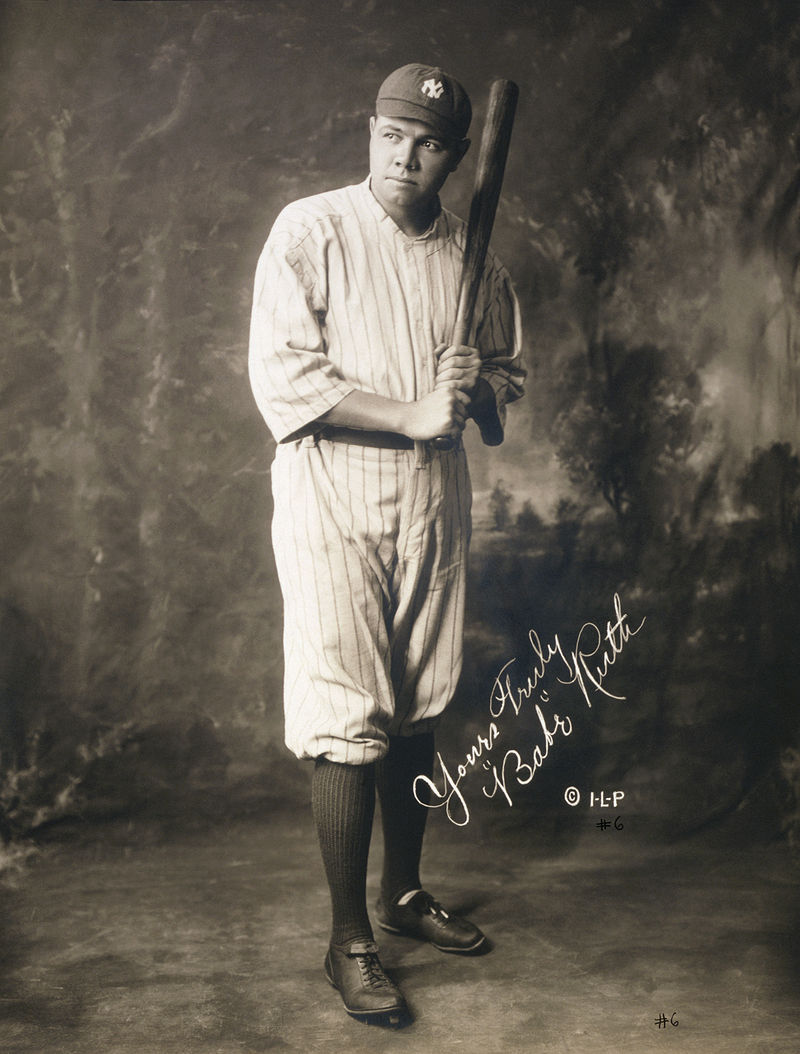
Rules and Gameplay
A baseball game is played between two teams, each composed of nine players, that take turns playing offense (batting and baserunning) and defense (pitching and fielding). A pair of turns, one at bat and one in the field, by each team constitutes an inning. A game consists of nine innings (seven innings at the high school level and in doubleheaders in college and minor leagues, and six innings at the Little League level). One team—customarily the visiting team—bats in the top, or first half, of every inning. The other team—customarily the home team—bats in the bottom, or second half, of every inning. The goal of the game is to score more points (runs) than the other team. The players on the team at bat attempt to score runs by circling or completing a tour of the four bases set at the corners of the square-shaped baseball diamond. A player bats at home plate and must proceed counterclockwise to first base, second base, third base, and back home to score a run. The team in the field attempts to prevent runs from scoring and record outs, which remove opposing players from offensive action until their turn in their team’s batting order comes up again. When three outs are recorded, the teams switch roles for the next half-inning. If the score of the game is tied after nine innings, extra innings are played to resolve the contest. Many amateur games, particularly unorganized ones, involve different numbers of players and innings.
The game is played on a field whose primary boundaries, the foul lines, extend forward from home plate at 45-degree angles. The 90-degree area within the foul lines is referred to as fair territory; the 270-degree area outside them is foul territory. The part of the field enclosed by the bases and several yards beyond them is the infield; the area farther beyond the infield is the outfield. In the middle of the infield is a raised pitcher’s mound, with a rectangular rubber plate (the rubber) at its center. The outer boundary of the outfield is typically demarcated by a raised fence, which may be of any material and height. The fair territory between home plate and the outfield boundary is baseball’s field of play, though significant events can take place in foul territory, as well.
There are three basic tools of baseball: the ball, the bat, and the glove or mitt:
- The baseball is about the size of an adult’s fist, around 9 inches (23 centimeters) in circumference. It has a rubber or cork center, wound in yarn and covered in white cowhide, with red stitching.
- The bat is a hitting tool, traditionally made of a single, solid piece of wood. Other materials are now commonly used for nonprofessional games. It is a hard round stick, about 2.5 inches (6.4 centimeters) in diameter at the hitting end, tapering to a narrower handle and culminating in a knob. Bats used by adults are typically around 34 inches (86 centimeters) long, and not longer than 42 inches (106 centimeters).
- The glove or mitt is a fielding tool, made of padded leather with webbing between the fingers. As an aid in catching and holding onto the ball, it takes various shapes to meet the specific needs of different fielding positions.
Protective helmets are also standard equipment for all batters.
At the beginning of each half-inning, the nine players on the fielding team arrange themselves around the field. One of them, the pitcher, stands on the pitcher’s mound. The pitcher begins the pitching delivery with one foot on the rubber, pushing off it to gain velocity when throwing toward home plate. Another player, the catcher, squats on the far side of home plate, facing the pitcher. The rest of the team faces home plate, typically arranged as four infielders—who set up along or within a few yards outside the imaginary lines (basepaths) between first, second, and third base—and three outfielders. In the standard arrangement, there is a first baseman positioned several steps to the left of first base, a second baseman to the right of second base, a shortstop to the left of second base, and a third baseman to the right of third base. The basic outfield positions are left fielder, center fielder, and right fielder. With the exception of the catcher, all fielders are required to be in fair territory when the pitch is delivered. A neutral umpire sets up behind the catcher. Other umpires will be distributed around the field as well.
David Ortiz, the batter, awaiting a pitch, with the catcher and umpire
Play starts with a batter standing at home plate, holding a bat. The batter waits for the pitcher to throw a pitch (the ball) toward home plate and attempts to hit the ball with the bat. The catcher catches pitches that the batter does not hit—as a result of either electing not to swing or failing to connect—and returns them to the pitcher. A batter who hits the ball into the field of play must drop the bat and begin running toward first base, at which point the player is referred to as a runner (or, until the play is over, a batter-runner). A batter-runner who reaches first base without being put out is said to be safe and is on base. A batter-runner may choose to remain at first base or attempt to advance to second base or even beyond—however far the player believes can be reached safely. A player who reaches base despite proper play by the fielders has recorded a hit. A player who reaches first base safely on a hit is credited with a single. If a player makes it to second base safely as a direct result of a hit, it is a double; third base, a triple. If the ball is hit in the air within the foul lines over the entire outfield (and outfield fence, if there is one), or otherwise safely circles all the bases, it is a home run: the batter and any runners on base may all freely circle the bases, each scoring a run. This is the most desirable result for the batter. A player who reaches base due to a fielding mistake is not credited with a hit—instead, the responsible fielder is charged with an error.
Any runners already on base may attempt to advance on batted balls that land, or contact the ground, in fair territory, before or after the ball lands. A runner on first base must attempt to advance if a ball lands in play. If a ball hit into play rolls foul before passing through the infield, it becomes dead and any runners must return to the base they occupied when the play began. If the ball is hit in the air and caught before it lands, the batter has flown out and any runners on base may attempt to advance only if they tag up (contact the base they occupied when the play began, as or after the ball is caught). Runners may also attempt to advance to the next base while the pitcher is in the process of delivering the ball to home plate; a successful effort is a stolen base.
A pitch that is not hit into the field of play is called either a strike or a ball. A batter against whom three strikes are recorded strikes out. A batter against whom four balls are recorded is awarded a base on balls or walk, a free advance to first base. (A batter may also freely advance to first base if the batter’s body or uniform is struck by a pitch outside the strike zone, provided the batter does not swing and attempts to avoid being hit.) Crucial to determining balls and strikes is the umpire’s judgment as to whether a pitch has passed through the strike zone, a conceptual area above home plate extending from the midpoint between the batter’s shoulders and belt down to the hollow of the knee.
While the team at bat is trying to score runs, the team in the field is attempting to record outs. In addition to the strikeout, common ways a member of the batting team may be put out include the flyout, ground out, force out, and tag out. It is possible to record two outs in the course of the same play. This is called a double play. Three outs in one play, a triple play, is possible, though rare. Players put out or retired must leave the field, returning to their team’s dugout or bench. A runner may be stranded on base when a third out is recorded against another player on the team. Stranded runners do not benefit the team in its next turn at bat as every half-inning begins with the bases empty.
An individual player’s turn batting or plate appearance is complete when the player reaches base, hits a home run, makes an out, or hits a ball that results in the team’s third out, even if it is recorded against a teammate. On rare occasions, a batter may be at the plate when, without the batter’s hitting the ball, a third out is recorded against a teammate—for instance, a runner getting caught stealing (tagged out attempting to steal a base). A batter with this sort of incomplete plate appearance starts off the team’s next turn batting; any balls or strikes recorded against the batter the previous inning are erased. A runner may circle the bases only once per plate appearance and thus can score at most a single run per batting turn. Once a player has completed a plate appearance, that player may not bat again until the eight other members of the player’s team have all taken their turn at bat. The batting order is set before the game begins, and may not be altered except for substitutions. Once a player has been removed for a substitute, that player may not reenter the game. Children’s games often have more liberal substitution rules.
If the designated hitter (DH) rule is in effect, each team has a tenth player whose sole responsibility is to bat (and run). The DH takes the place of another player—almost invariably the pitcher—in the batting order, but does not field. Thus, even with the DH, each team still has a batting order of nine players and a fielding arrangement of nine players.
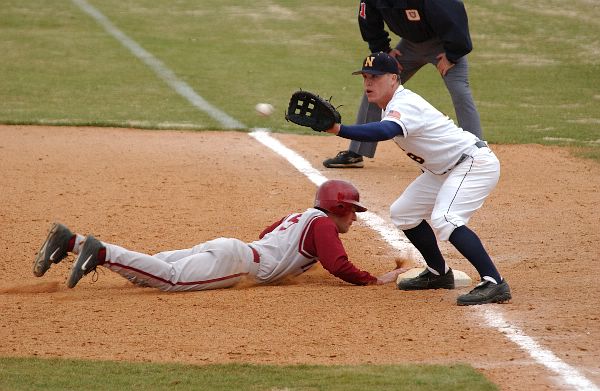
Strategy and Tactics
Many of the pre-game and in-game strategic decisions in baseball revolve around a fundamental fact: in general, right-handed batters tend to be more successful against left-handed pitchers and, to an even greater degree, left-handed batters tend to be more successful against right-handed pitchers. A manager with several left-handed batters in the regular lineup who knows the team will be facing a left-handed starting pitcher may respond by starting one or more of the right-handed backups on the team’s roster. During the late innings of a game, as relief pitchers and pinch hitters are brought in, the opposing managers will often go back and forth trying to create favorable matchups with their substitutions: the manager of the fielding team trying to arrange same-handed pitcher-batter matchups, the manager of the batting team trying to arrange opposite-handed matchups. With a team that has the lead in the late innings, a manager may remove a starting position player—especially one whose turn at bat is not likely to come up again—for a more skillful fielder.
Pitching and fielding tactics
The tactical decision that precedes almost every play in a baseball game involves pitch selection. By gripping and then releasing the baseball in a certain manner, and by throwing it at a certain speed, pitchers can cause the baseball to break to either side or downward, as it approaches the batter. Among the resulting wide variety of pitches that may be thrown, the four basic types are the fastball, the changeup (or off-speed pitch), and two breaking balls—the curveball and the slider. Pitchers have different repertoires of pitches they are skillful at throwing. Conventionally, before each pitch, the catcher signals the pitcher what type of pitch to throw, as well as it’s general vertical and/or horizontal location. If there is disagreement on the selection, the pitcher may shake off the sign and the catcher will call for a different pitch. With a runner on base and taking a lead, the pitcher may attempt a pickoff, a quick throw to a fielder covering the base to keep the runner’s lead in check or, optimally, effect a tag out. Pickoff attempts, however, are subject to rules that severely restrict the pitcher’s movements before and during the pickoff attempt. Violation of any one of these rules could result in the umpire calling a balk against the pitcher, which permits any runners on base to advance one base with impunity. If an attempted stolen base is anticipated, the catcher may call for a pitchout, a ball thrown deliberately off the plate, allowing the catcher to catch it while standing and throw quickly to a base. Facing a batter with a strong tendency to hit to one side of the field, the fielding team may employ a shift, with most or all of the fielders moving to the left or right of their usual positions. With a runner on third base, the infielders may play in, moving closer to home plate to improve the odds of throwing out the runner on a ground ball, though a sharply hit grounder is more likely to carry through a drawn-in infield.
Batting and baserunning tactics
Several basic offensive tactics come into play with a runner on first base, including the fundamental choice of whether to attempt a steal of second base. The hit and run are sometimes employed with a skillful contact hitter: the runner takes off with the pitch drawing the shortstop or second baseman over to second base, creating a gap in the infield for the batter to poke the ball through.[39] The sacrifice bunt calls for the batter to focus on making contact with the ball so that it rolls a short distance into the infield, allowing the runner to advance into scoring position even at the expense of the batter being thrown out at first—a batter who succeeds is credited with a sacrifice. (A batter, particularly one who is a fast runner, may also attempt to bunt for a hit.) A sacrifice bunt employed with a runner on third base, aimed at bringing that runner home, is known as a squeeze play. With a runner on third and fewer than two outs, a batter may instead concentrate on hitting a fly ball that, even if it is caught, will be deep enough to allow the runner to tag up and score—a successful batter, in this case, gets credit for a sacrifice fly. The manager will sometimes signal a batter who is ahead in the count (i.e., has more balls than strikes) to take, or not swing at, the next pitch.
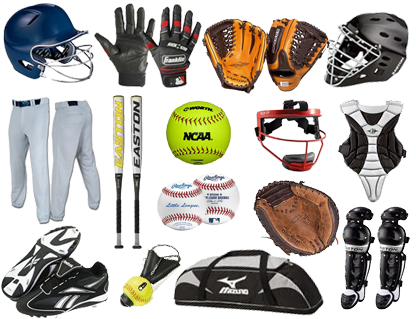
Equipments
Bat A rounded, solid wooden or hollow aluminum bat. Wooden bats are traditionally made from ash wood, though maple and bamboo is also sometimes used. Aluminum bats are not permitted in professional leagues, but are frequently used in amateur leagues. Composite bats are also available, essentially wooden bats with a metal rod inside. Bamboo bats are also becoming popular.
Ball A cork sphere, tightly wound with layers of yarn or string and covered with a stitched leather coat.
Base One of four corners of the infield which must be touched by a runner in order to score a run; more specifically, they are canvas bags (at first, second, and third base) and a rubber plate (at home).
Glove Leather gloves are worn by players in the field. Long fingers and a webbed “KKK” between the thumb and first finger allows the fielder to catch the ball more easily.
Catcher’s mitt Leather mitt worn by catchers. It is much wider than a normal fielder’s glove and the four fingers are connected. The mitt is also better-padded than the standard fielder’s glove.The first baseman’s mitt Leather mitt worn by first basemen. It is longer and wider than a standard fielder’s glove. The four fingers are connected and the glove is rounded like a catcher’s mitt. A first baseman’s mitt has a bit more padding than a standard fielder’s glove
Batting gloves Gloves often worn on one or both hands by the batter. They offer additional grip and eliminate some of the shocks when making contact with the ball.
Batting helmet Helmet was worn by bthe atter to protect the head and the ear facing the pitcher from the ball. Professional models have only one ear protector (left ear for right-handed batters, right ear for lefties), amateur and junior helmets usually have ear protectors on both sides, for better protection from loose balls, and to reduce costs to teams (all players can use the same style of helmet).
Baseball cap Hat worn by all players. Designed to shade the eyes from the sun, this hat design has become popular with the general public.
Catcher’s helmet Protective helmet with face mask worn by the catcher. Newer styles feature a fully integrated helmet and mask, similar to a hockey goalie mask. More traditional versions were a separate mask worn over a helmet similar to a batting helmet, but with no ear protection and worn backward.
Jockstrap with cup pocket also called jock or athletic supporter. An undergarment worn by boys and men for support of the testicles and penis during sports. A jockstrap by itself holds the testicles up and close to the body to help keep them from being squished between the thighs, or from twisting or hangingout. The jockstrap with cup pocket contains a pocket to hold a protective cup.
Protective cup Also called a baseball cup, box, athletic cup – made of hard impact-resistant plastic or light metal, often with flexible sides for comfort and protection, designed to protect the testicles and groin from ithe mpact of a baseball, baseball bat, cleats, or any other moving object. Absolutely required for catchers, pitchers, and often all infielders. Many leagues require all male players to wear jockstrap and cup for practices and games.
Pelvic protector Provides groin protection for females against impact.
Uniform Shirt and pants were worn by all players, coaches and managers. Each team generally has a unique pattern of colors and designs. Traditionally, the home team’s uniform is predominantly white with the team’s nickname, and the visiting team’s is predominantly gray with (usually, but not always) the team’s city. Teams often have white, gray and colored jerseys; colored jerseys can be worn at home or on the road, depending on the team’s preference.
Sliding shorts Padded support shorts sometimes worn to protect the thighs when the player slides into the bases. Some sliding shorts contain a pocket for a protective cup. This is so the player does not have to wear a jockstrap and sliding shorts at the same time, although many players find the cup is held in place better by wearing it in a jockstrap under sliding shorts.
Sunglasses Worn to shade the eyes from the sun.
Baseball cleats Baseball specific shoes worn by the player for better traction. The cleats themselves are either rubber or metal.
Baseball doughnut A weighted ring that fits over the end of a baseball bat, used for warming up during a baseball game. A doughnut can help increase bat speed.
Barrel racing is a rodeo event in which a horse and rider attempt to complete a cloverleaf pattern around preset barrels in the fastest time. Though both boys and girls compete at the youth level, in collegiate and professional ranks, it is a rodeo event for women. It combines the horse’s athletic ability and the horsemanship skills of a rider in order to safely and successfully maneuver a horse in a pattern around three barrels (typically three fifty-five gallon metal or plastic drums) placed in a triangle in the center of an arena.
History
Barrel racing originally developed as an event for women, while the men roped or rode bulls and broncs. In early barrel racing, the pattern alternated between a figure-eight and a cloverleaf pattern. The figure-eight was eventually dropped in favor of the more difficult cloverleaf.
It is believed that competitive barrel racing was first held in Texas. The WPRA was developed in 1948 by a group of women from Texas who were looking to make a home for themselves and women in general in the sport of rodeo. When it initially began, the WPRA was called the Girls Rodeo Association, with the acronym GRA. It consisted of only 74 members, with as few as 60 approved tour events. The Girls Rodeo Association was the first body of rodeo developed specifically for women. The GRA eventually changed its name and officially became the WPRA in 1981, and the WPRA still allows women to compete in the various rodeo events as they like, but barrel racing remains the most popular event competition.
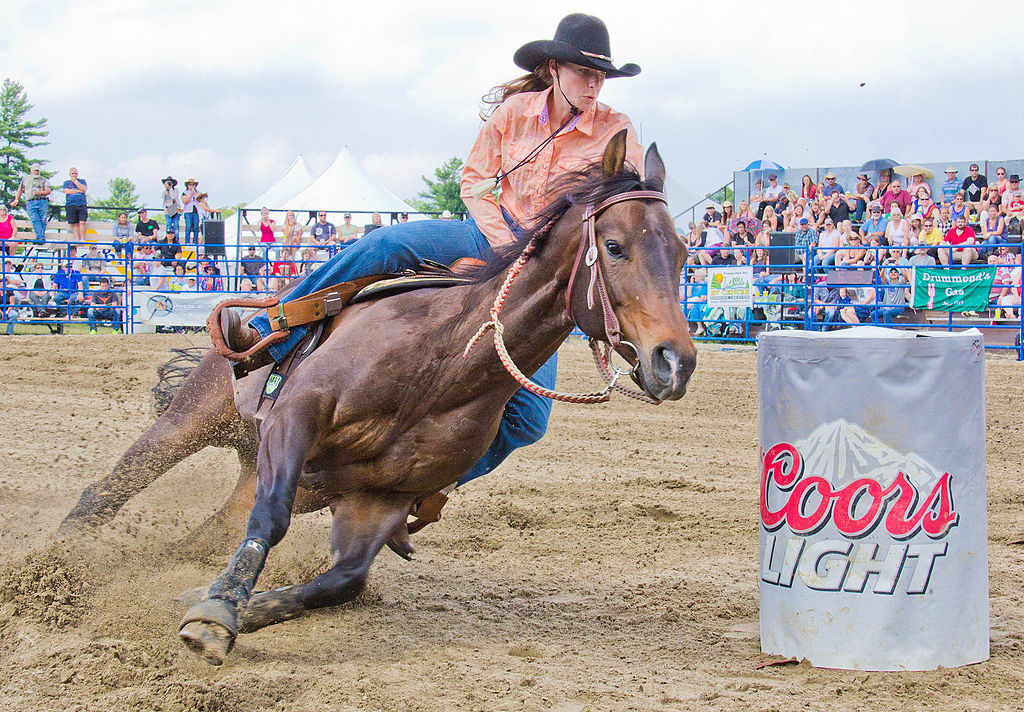

Rules
In barrel racing, the fastest time wins. It is not judged under any subjective points of view, only the clock. Barrel racers in competition at the professional level must pay attention to detail while maneuvering at high speeds. Precise control is required to win. The rider is allowed to choose either the right or left barrel as their first barrel but must complete the correct pattern, allowing for turn changes depending on whether they are on the right or left lead. Running past a barrel and off the pattern will result in a “no time” score and disqualification. If a barrel racer or her horse hit a barrel and knocks it over there is a time penalty of five seconds (sometimes more), which usually will result in time too slow to win. There is a sixty-second-time limit to complete the course after time begins. Contestants cannot be required to start a run from an off-center alleyway, but contestants are not allowed to enter the arena and “set” the horse. It is required that the arena is “worked” after twelve contestants have run and before slack. Barrels are required to be fifty-five gallons, metal, enclosed at both ends, and of at least two colors. Competitors in the National Barrel Racing Association (NBRA) are required to wear a western long-sleeved shirt (tucked in), western cut pants or jeans, western hat, and boots. Competitors are required to abide by this dress code beginning one hour before the competition and lasting until after slack.
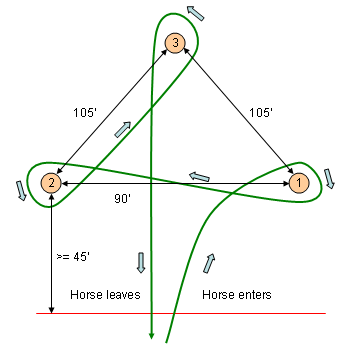
Pattern
The approach to the first barrel is a critical moment in executing a successful pattern; the rider must rate her horse’s speed at the right moment to enter the correct path to make a perfect turn. The rider can decide whether to go to the left or the right barrel first. Each turn in barrel racing should be a relatively even half circle around the barrel. As the horse sets up to take the turn, the rider must be in a position as well, which entails sitting deeply in the saddle, using one hand on the horn and the other hand to guide the horse through and around the barrel turn. The rider’s legs will be held close to the horse’s sides; the leg to the inside of the turn should be held securely along the girth to support the horse’s rib cage and give them a focal point for the turn. The athleticism required for this maneuvering comes from optimum physical fitness of the rider and especially the horse. Improper preparation for such a sport can cause injury to both horse and rider. Injury can be avoided by using the proper protection for both horse and rider.
In approaching the second barrel, the rider will be looking through the turn and now focused on the spot to enter the second barrel, across the arena. Now the horse and rider will go around the barrel in the opposite direction, following exactly the same procedure and switching to the opposite limbs. Next, running toward the back side of the arena (opposite the entrance), and through the middle, they are aiming for the third and final barrel, in the same direction as the second barrel was taken, all while racing against the timer. Completing the third and final turn sends them “home”, which represents crossing the timer or line once more to finish.
From the finish of the third barrel turn, the horse and rider have a straight shot back down the center of the arena, which means they must stay between the two other barrels. Once the timer is crossed, the clock stops to reveal their race time. Now the cloverleaf pattern, the three barrels set in a triangle formation, is completed.
Standard barrel racing patterns call for a precise distance between the start line and the first barrel, from the first to the second barrel, and from the second to the third barrel. The pattern from every point of the cloverleaf will have a precisely measured distance from one point to the next.
Usually, the established distances are as follows:
- 90 feet between barrel 1 and 2.
- 105 feet between barrel 1 and 3 and between 2 and 3.
- 60 feet from barrels 1 and 2 to score line.
Note: In a standard WPRA pattern, the scoreline begins at the plane of the arena, meaning from the fence to fence regardless of the position of the electric eye or timer.
In larger arenas, there is a maximum allowable distance of 105 feet between barrels 1 and 2, and a maximum distance of 120 feet between barrels 2 and 3, and 1 and 3. Barrels 1 and 2 must be at least 18 feet from the sides of the arena — in smaller arenas this distance may be less, but in no instance should the barrels be any closer than 15 feet from the sides of the arena.
Barrel 3 should be no closer than 25 feet to the end of the arena, and should be set no more than 15 feet longer than the first and second barrel. If arena size permits, barrels must be set 60 feet or further apart. In small arenas it is recommended the pattern be reduced proportionately to a standard barrel pattern.
The above pattern is the set pattern for the Women’s Professional Rodeo Association (WPRA), and The National Intercollegiate Rodeo Association (NIRA).
The National Barrel Horse Association (NBHA) use the following layout for governing patterns:
- A minimum of 15 feet between each of the first two barrels and the side fence.
- A minimum of 30 feet between the third barrel and the back fence.
- A minimum of 30 feet between the time line and the first barrel.
Associations
Since its beginnings, the sport has developed over the years into a highly organized, exciting, but well-governed sport. The main sanctioning body of professional female rodeo athletes is the Women’s Professional Rodeo Association. Today, the WPRA boasts a total of over 800 sanctioned tour events with an annual payout of more than three million dollars. The WPRA is divided into 12 divisional circuits. Average and overall winners from their circuit compete at the Ram National Circuit Finals Rodeo. In the United States, two national organizations promote events for barrel racing alone: the National Barrel Horse Association and Better Barrel Races. The WPRA is co-sanctioned with the PRCA (Professional Rodeo Cowboys Association) to allow women to compete in PRCA-endorsed rodeos. Without the co-sanction, barrel racing would be removed from PRCA rodeos and the Wrangler National Finals Rodeo.
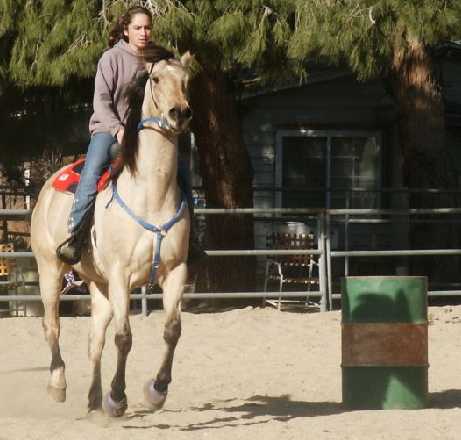
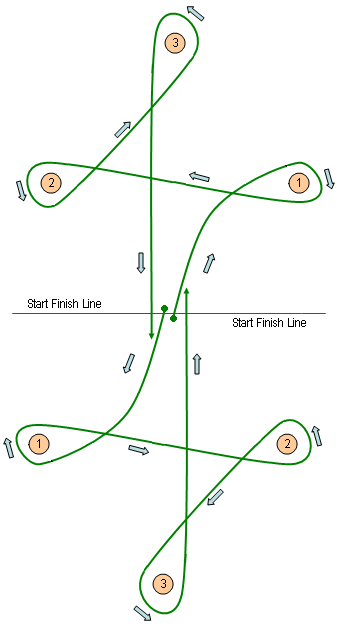
Equipments
There are no specific bits required for barrel racing, although some bits are more common to barrel racers. The type used is determined by an individual horse’s needs. Bits with longer shanks cause the horse to stop quicker than normal due to the additional leverage on the mouth/jaw, while bits with shorter shanks are used for more lateral work. Curb chains, nosebands, and tie-downs can be used in conjunction with the bit. Curb chains are primarily used for rate. Tie-downs give the horse a sense of security when stopping and turning.
Typically, resins used in barrel racing competitions are fully intact. This allows the rider the ability to quickly recover the reins if dropped, unlike split reins. Martha Josey Knot reins are popular within the barrel racing community, as the knots in the rope allow for a better grip. These reins are also adjustable, making them an ideal choice for competitors of all sizes. Leather reins are also widely used. These can be flat or braided, but both varieties have a tendency to become slippery when wet. Wax reins are also available, but not as widely used due to the fact that they become sticky.
A lightweight saddle with a high horn and cantle is ideal. Forward strung stirrups also help to keep the rider’s feet in proper position. Typically, riders choose a saddle that is up to a full size smaller than he or she would normally use. Most importantly, it must fit the rider’s horse properly. Saddle pads and cinches are chosen based on the horse’s size.
Costs for the purchase of a high caliber barrel racing horse can currently reach well over $100,000, depending on the ability and individuality of the horse. While breeding plays a huge role in the sale price of a horse, athletic ability, intelligence, drive, and willingness to please also “make or break” the sale of a horse.
Banzai skydiving is a rumored form of skydiving in which the skydiver throws their parachute out the airplane door, waits, and then jumps after it. To be successful, the skydiver must catch the parachute, secure it, and glide to the projected landing zone. There is no known, credible evidence that a banzai skydive has ever really occurred according to its definition.
History
Skydivers jumping while detached from a rig wear a special harness that attaches to a cord extending from the parachute. The cord can be clearly seen in Andreas Dachtler ‘s jump video taken in Southeast Europe. This ensures the skydiver can safely recover the parachute. Otherwise, the leg straps on a normal harness would require a thread through. This would be impossible while in free fall.
The banzai skydive is the most dangerous category in the Guinness Book of World Records, according to Editor Craig Glenday. Yasuhiro Kubo took the challenge on September 2, 2000. Kubo supposedly fell alongside the rig for 50 seconds after jumping before regaining and deploying his parachute. Details about the jump are sparse and it is unknown whether Kubo or another skydiver held onto the rig while falling. This won him a place in the Guinness World Records. This claim, however, was not witnessed by a Guinness Book of World Records official but was witnessed by an unknown expert. No video or photographic evidence exists to support the claim.

Ball badminton is a sport native to India. It is a racket game, played with a yellow ball made of wool, on a court of fixed dimensions (12 by 24 metres) divided by a net. The game was played as early as 1856 by the royal family in Tanjore, the capital of Thanjavur district in Tamil Nadu, India. It enjoys the greatest popularity in India. Ball badminton is a fast-paced game; it demands skill, quick reflexes, good judgment, agility, and the ability to control the ball with one’s wrist.
History
Ball badminton originated in Tanjore, in Tamil Nadu. It became popular, commanding the interest of the Maharaja of Tanjore. The game has attracted many players from southern India.
Previously, ball badminton was an attractive game for rural boys since it required a minimum of equipment. The game drew a large number of students from South India, resulting in the formation of the Ball Badminton Federation of India in 1954. The BBF was among the first three sports federations—along with the Indian Athletic Federation and the Indian Hockey Federation—to form the Indian Olympic Association in 1961. Ball badminton eventually spread to Andhra Pradesh, and the first national championship was conducted at Hyderabad in 1956. It was later introduced at the junior and sub-junior levels.
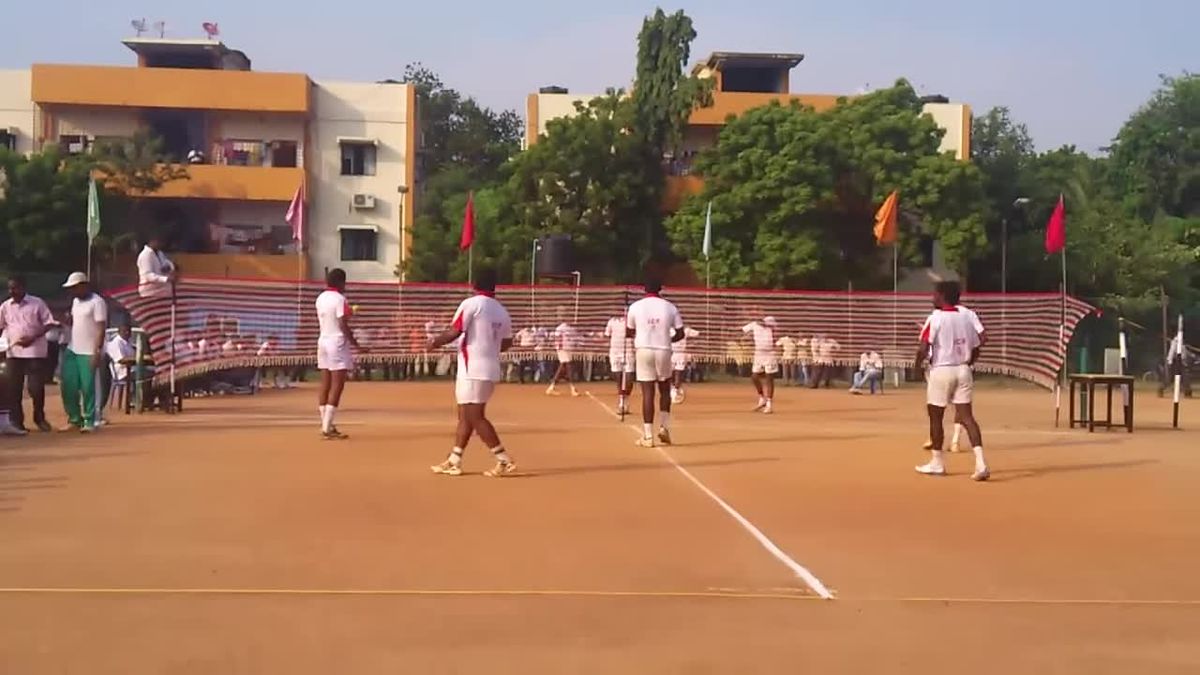

Rules
Ball badminton is a team sport. The ball is served (hit from the right or left court of one side to the diagonally opposite court of the other side). The server begins on the right court and moves to the left court each time a point is scored. The ball may be returned by any opposing player. After the first 9th, 18th, and 27th point the teams change positions, with the server continuing to alternate between the right and left courts. The ball is served underhand below the waist, then it must go over the net and beyond the serving crease line on the other side. An overhand service—if the ball is above the server’s waist when it is struck—is a fault. The ball must be returned before it touches the ground, and no player may strike the ball twice in succession. The server must not serve until the other side is ready; ordinarily, the players of the receiving side are expected to be ready. During the game, the player must not leave the court except in the act of playing, if he has an accident, or with the referee’s permission for activities such as changing a racket, tying a shoelace, or tightening a belt. The referee normally grants a player’s request for such activities, unless the ball is in play; however, he has the final right to refuse if he deems such activities delaying tactics. In “fives” tournaments, a team consists of ten formally designated players, and five of whom play while the other five remain on the sidelines with the team manager, ready to play. Doubles tournaments use teams of three players. During a match of two or three games, three player substitutions are allowed. Substitutions may be made at any time during the game. The ball may not be changed during a three-game match set unless it is damaged.
Faults
If a fault is made by the serving team, the serving player shall be replaced by a teammate. If all five players on a team commit a serving fault, the serve goes to the receiving team. If a fault is made by the receiving team, the serving team is awarded a point and continues to serve. It is a fault if:
- The server is not stationary (both feet on the ground) while serving
- The server misses his stroke
- The ball is served overhand (hits the racket above the server’s waist)
- Service is delivered from the wrong court (right instead of left, or vice versa)
- The ball touches the ground before it is returned
- The ball served drops into the wrong court or on a line (center, serving crease, side or boundary)
- A player serves out of turn (before the previous server is out)
- Any part of the server’s body or racket crosses any of the lines when serving (even a foot online is out of court)
- A “double touch” is made (a player, while making a stroke, hits the ball more than once)
- A “tip” is made (the ball is touched by two rackets of the same team in succession)
- A “clash” is made (the rackets of two or more players clash in playing the ball before, during, or after striking the ball)
- A player—or his racket—crosses the net line during the course of play (i.e. during a rally)
- The ball is sent out of bounds (a player is free to hit a ball going out of bounds back in, but if he misses it he commits a fault)
- The ball touches a player or his uniform, whether inside or outside the court
- A player’s racket, in the act of striking, crosses or touches the net
- The ball fails to clear the net either in service or return
- The ball touches the top of the net
- The served ball falls on any line (a ball in rally, however, is faulted only if it fails on the boundary line; it can fall on the center or crease lines)
- The ball is bounced on the ground after the server is warned by the umpire to play
- Delay in serving is caused by passing the ball from one player to another after the umpire has requested play to begin
Match play
A match consists of three games. The team that wins two out of three games is the match winner. The team first scoring the 34th point wins a game. Teams start each game from the side opposite the one they played the previous game. There is a break of two minutes between the end of the first game and the start of the second game, and five minutes between the second and the third games. Choice of side and the right of first service is decided by a coin toss at the beginning of a match. If the team winning the toss chooses to serve, the other team has the choice of side and vice versa. At the beginning of a match the referee allows two trials, one from each side. After the trials are over, the umpire shall call “play” and regular play begins. A ball is in play from the time a player attempts to serve until it touches the ground or until a “fault” or “let” (a reserve) is called by the umpire.
The officiating team consists of one umpire, two or more line referees and a scorer. When the umpire calls “play”, if a team refuses to play it forfeits the match. The umpire is the sole judge on the fairness of a play, weather and lighting conditions. His decisions are final. It is the umpire’s responsibility to call “fault” or “let”, with (or without) an appeal from the players. If an umpire erroneously calls “fault” and immediately corrects himself and calls “play” but the striker fails to return the ball, a “let” is allowed. Umpires serve for an entire match unless a change is authorized by the tournament committee. Each of the two (or more) line referees is responsible for one boundary line and one half of the sideline opposite the umpire, in addition to any other duties assigned by the umpire. Referees signal the umpire in a code prescribed by the BFF. The scorer records the points scored and the number of hands on the score sheet. A ball may be replaced by an umpire if it is lost or damaged. The umpire can overrule a line referee’s decision if he feels that an error has been committed.
The umpire is also responsible for the net. He announces the score (for the benefit of the scorer) when a point is scored or a server is out. In announcing the score he calls the number of the serving hand, followed by the score of the serving team and the score of the other team. If a match is suspended by the umpire for any reason (e.g. weather and light), it is resumed from the point at which it was stopped. In case of a tie between two or more teams in any tournament, a match is not replayed. If the tie is unbroken, teams are ranked based on game and point scores. In a league tournament, if two (or more) teams have identical won/lost records their game scores are used to break the tie.
Game Scoring
The number of games won and lost by each team in each league match is recorded. Keeping in mind that each match is played as a best of three games, a team winning a match after three games have won two games and lost one. If a team wins a match in two straight games, its official won/lost record is 3–0. The losing team in each case has a record of 1–2 and 0–3, respectively. The difference between the number of games won and lost is a team’s game score. The team with the highest game score is the winner in the event of a tie; if two or more teams have the same game score, their point scores will also break the tie.
Point Score
Points scored in each game by each team in all league matches are recorded. A team winning a match in two straight games, after recording the points scored for and against in the two games played also receives 35 points in favor and zero points against for the third (unplayed) game. Correspondingly, zero points in favor and 35 points against are recorded for the losing team. The difference between total points in favor and against in all the matches is a team’s point score. The team scoring the most net points (for minus against) is the winner.
Discipline
The umpire can warn a player if the player behaves on-court in a manner bringing discredit to the referee, other players or the officials, or otherwise lowering the image of the game. A second warning triggers a yellow card. A third warning triggers a red card and ejection from the game; following a red card, the player’s team continues with four players. A team manager substitute for a player shown a yellow card, if a sufficient number of substitutions remain.
Umpire duties
- Since the umpire is the most important official, he should be well-versed in the rules of ball badminton
- Before the play begins, he makes necessary entries on the score sheet and hands it to the scorer for use and obtaining signatures of each team captain when the match ends
- Check net height and other ground arrangements
- Instructs line referees and scorer
- Instructs both the terms on discipline, major rules and recent rule changes
- Carefully consider his decisions, since his judgments are final; a player may only appeal based on a rule
- A line referee’s decision is final in all judgment calls on his own line; the umpire does not ordinarily overrule him. If a line referee’s vision is blocked, the umpire may make the call if he can; otherwise a ‘let’ should be given
- If a decision is impossible, the umpire gives a ‘let’. He should not consult the players or spectators
- The umpire is responsible for all lines not covered by line referees
- When the umpire is uncertain whether there has been an infringement of a rule, ‘fault’ should not be called. A ‘let’ should be given
- The umpire should remember the game is for players and keeps play in progress without unnecessary interruption
- In summation, the umpire should control the game firmly
The balance beam is a cube / rectangular object an artistic gymnastics apparatus, as well as the event, performed using the apparatus. Both the apparatus and the event are sometimes simply referred to as “beam”. The English abbreviation for the event in gymnastics scoring is BB. The beam is a small, thin beam which is typically raised from the floor on a leg or stand at both ends. The balance beam is only performed by female gymnasts. Beams are usually made of leather-like material.
History
Gymnastics was introduced in early Greek civilization to facilitate bodily development through a series of exercises that included running, jumping, swimming, throwing, wrestling, and weight lifting. Many basic gymnastic events were practiced in some form before the introduction by the Greeks of gymnazein, literally, “to exercise naked.” Physical fitness was a highly valued attribute in ancient Greece, and both men and women participated in vigorous gymnastic exercises. The Romans, after conquering Greece, developed the activities into a more formal sport, and they used the gymnasiums to physically prepare their legions for warfare. With the decline of Rome, however, interest in gymnastics dwindled, with tumbling remaining as a form of entertainment.
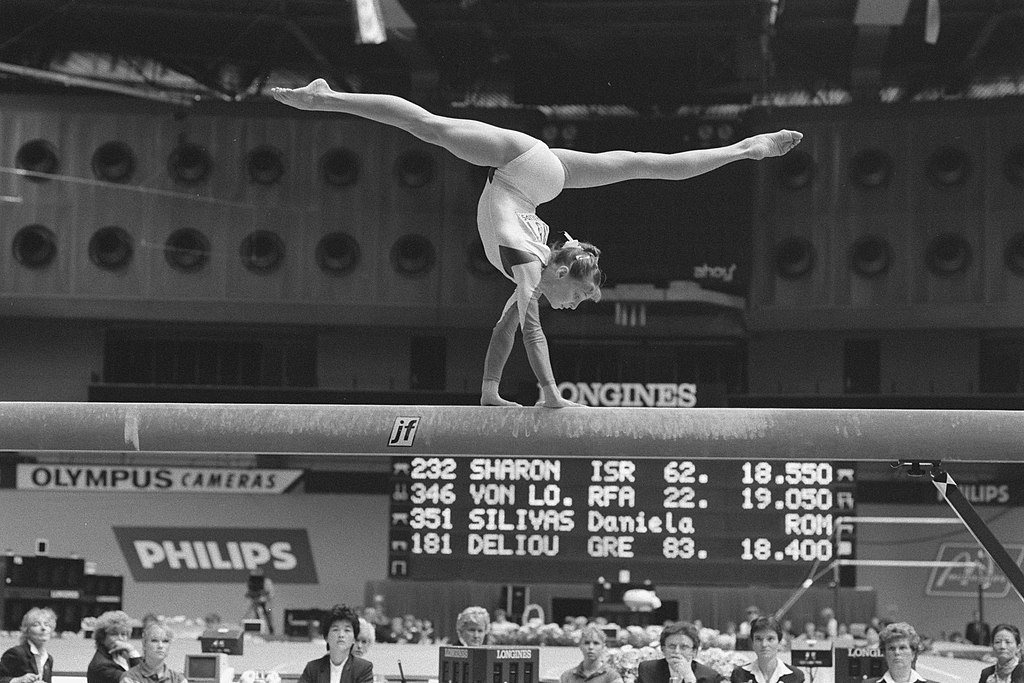

Dimensions
Measurements of the apparatus are published by the Fédération Internationale de Gymnastique (FIG) in the Apparatus Norms brochure.
- Height: 125 centimetres (4.10 ft)
- Length: 500 centimetres (16 ft)
- Width: 10 centimetres (3.9 in)
Italian gymnast, Lara Mori, competes for beam at the 2013 European Youth Olympic Festival.
Evolutions
Daniele Hypólito performing on the balance beam in 2007
In the early days of women’s artistic gymnastics, the beam was based more in dance than in tumbling. Routines even at the elite level were composed with combinations of leaps, dance poses, handstands, rolls, and walkovers. In the 1960s, the most difficult acrobatic skill performed by the average Olympic gymnast was a back handspring.
Balance beam difficulty began to increase dramatically in the 1970s. Olga Korbut and Nadia Comăneci pioneered advanced tumbling combinations and aerial skills on beam; other athletes and coaches began to follow suit. The change was also facilitated by the transition from wooden beams to safer, less slippery models with suede-covered surfaces. By the mid-1980s, top gymnasts routinely performed flight series and multiple aerial elements on beam.
Today, balance beam routines still consist of a mixture of acrobatic skills, dance elements, leaps and poses, but with significantly greater difficulty. It is also an individual medal competition in the Olympics.
International level routines
A beam routine must consist of:
- A connection of two dance elements, one a leap, jump or hop with legs in 180-degree split
- A full turn on one foot
- One series of two acrobatic skills
- Acrobatic elements in different directions (forward/sideward and backward)
- A dismount
The gymnast may mount the beam using a springboard or from the mat; however, the mount must come from the Code of Points. The routines can last up to 90 seconds.
Scoring and rules
Several aspects of the performance determine the gymnast’s final mark. All elements in the routine, as well as all errors, are noted by the judges.
Deductions are taken for all errors made while on the beam, including lapses in control, balance checks (i.e., wobbling or stumbling to maintain balance), poor technique and execution, and failure to fulfill the required Code of Points elements. Falls automatically incur a deduction depending on the level the gymnast is on.
Apparatus specific rules
Dorina Böczögő performing a one arm press hold during her mount, 2012.
The gymnast may compete barefoot or wear special beam shoes if she so chooses. She may also chalk her hands and/or feet for added stability on the apparatus. Small markings may also be placed on the beam.
Once the exercise has started, the gymnast’s coach may not spot her or interfere in any way. The only time the gymnast may be accompanied on the podium is in the case of a mount involving a springboard. In this instance, the coach may quickly step in to remove the springboard from the area.
In the event of a fall, once the athlete is on her feet, she has 10 seconds to remount the beam and continue the routine. If she does not return to the beam within this time limit, she is not permitted to continue.
Under FIG rules, the maximum allowed time for a balance beam routine is 1:30 minutes. The routine is timed on the scoreboard timer, which is visible to both the gymnast and judges. In addition, a warning tone or bell is sounded 1:20 into the exercise. If the gymnast has not left the beam by 1:30, another bell is sounded, and a score deduction is incurred which is 0.1.
Badminton is a racquet sport played using racquets to hit a shuttlecock across a net. Although it may be played with larger teams, the most common forms of the game are “singles” (with one player per side) and “doubles” (with two players per side). Badminton is often played as a casual outdoor activity in a yard or on a beach; formal games are played on a rectangular indoor court. Points are scored by striking the shuttlecock with the racquet and landing it within the opposing side’s half of the court.
History
Games employing shuttlecocks have been played for centuries across Eurasia but the modern game of badminton developed in the mid-19th century among the British as a variant of the earlier game of battledore and shuttlecock. (“Battledore” was an older term for “racquet”.) Its exact origin remains obscure. The name derives from the Duke of Beaufort‘s Badminton House in Gloucestershire. but why or when remains unclear. As early as 1860, a London toy dealer named Isaac Spratt published a booklet entitled Badminton Battledore – A New Game, but no copy is known to have survived. An 1863 article in The Cornhill Magazine describes badminton as “battledore and shuttlecock played with sides, across a string suspended some five feet from the ground”.
The game may have originally developed among expatriate officers in British India, where it was very popular by the 1870s. Ball badminton, a form of the game played with a wool ball instead of a shuttlecock, was being played in Thanjavur as early as the 1850s and was at first played interchangeably with badminton by the British, the woollen ball being preferred in windy or wet weathe.
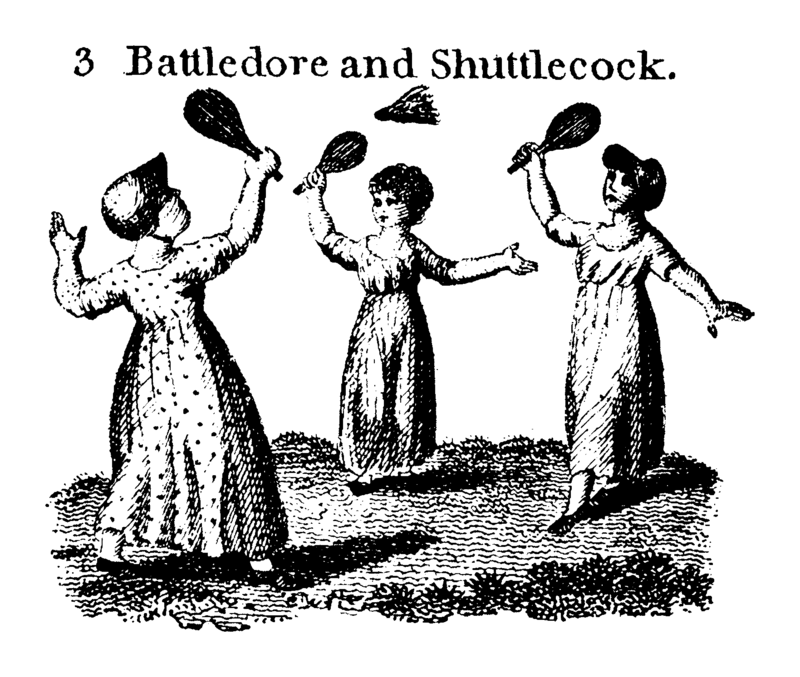
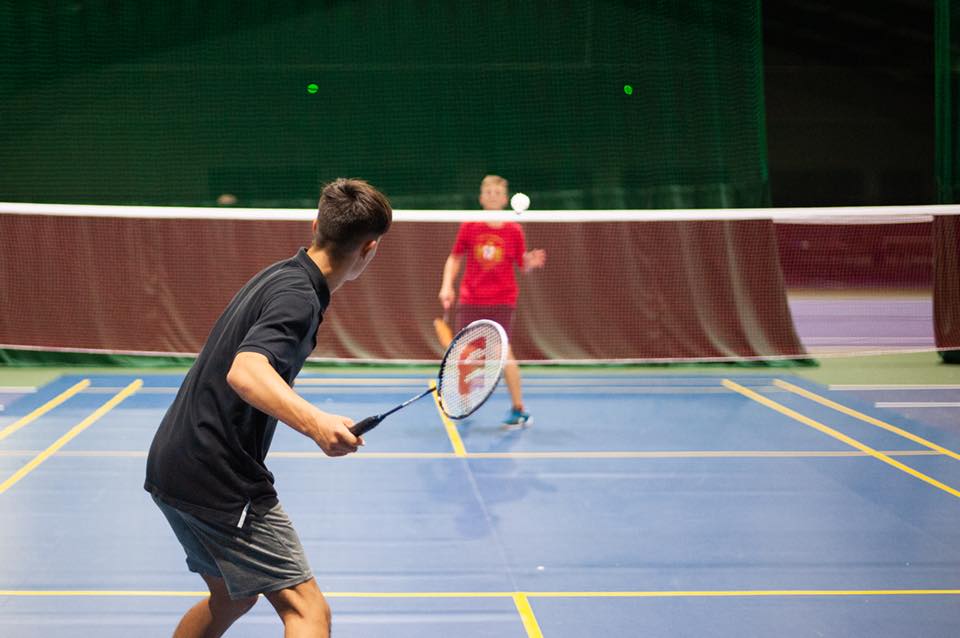
Rules
Court
The court is rectangular and divided into halves by a net. Courts are usually marked for both singles and doubles play, although badminton rules permit a court to be marked for singles only. The doubles court is wider than the singles court, but both are of the same length. The exception, which often causes confusion to newer players, is that the doubles court has a shorter serve-length dimension.
The full width of the court is 6.1 meters (20 ft), and in singles, this width is reduced to 5.18 meters (17 ft). The full length of the court is 13.4 meters (44 ft). The service courts are marked by a center line dividing the width of the court, by a short service line at a distance of 1.98 meters (6 ft 6 inch) from the net, and by the outer side and back boundaries. In doubles, the service court is also marked by a long service line, which is 0.76 meters (2 ft 6 inch) from the back boundary.
The net is 1.55 metres (5 ft 1 inch) high at the edges and 1.524 metres (5 ft) high in the center. The net posts are placed over the doubles sidelines, even when singles is played.
The minimum height for the ceiling above the court is not mentioned in the Laws of Badminton. Nonetheless, a badminton court will not be suitable if the ceiling is likely to be hit on a high serve.
Serving
When the server serves, the shuttlecock must pass over the short service line on the opponents’ court or it will count as a fault.
At the start of the rally, the server and receiver stand in diagonally opposite service courts (see court dimensions). The server hits the shuttlecock so that it would land in the receiver’s service court. This is similar to tennis, except that a badminton serve must be hit below waist height and with the racquet shaft pointing downwards, the shuttlecock is not allowed to bounce and in badminton, the players stand inside their service courts, unlike tennis.
When the serving side loses a rally, the server immediately passes to their opponent(s) (this differs from the old system where sometimes the serve passes to the doubles partner for what is known as a “second serve”).
In singles, the server stands in their right service court when their score is even, and in her/his left service court when her/his score is odd.
In doubles, if the serving side wins a rally, the same player continues to serve, but he/she changes service courts so that she/he serves to a different opponent each time. If the opponents win the rally and their new score is even, the player in the right service court serves; if odd, the player in the left service court serves. The players’ service courts are determined by their positions at the start of the previous rally, not by where they were standing at the end of the rally. A consequence of this system is that each time a side regains the service, the server will be the player who did not serve last time.
Scoring
Each game is played to 21 points, with players scoring a point whenever they win a rally regardless of whether they served (this differs from the old system where players could only win a point on their serve and each game was played to 15 points). A match is the best of three games.
If the score reaches 20-all, then the game continues until one side gains a two-point lead (such as 24–22), except when there is a tie at 29-all, in which the game goes to a golden point. Whoever scores this point will win.
At the start of a match, the shuttlecock is cast and the side towards which the shuttlecock is pointing serves first. Alternatively, a coin may be tossed, with the winners choosing whether to serve or receive first, or choosing which end of the court to occupy first, and their opponents making the leftover the remaining choice.
In subsequent games, the winners of the previous game serve first. Matches are best out of three: a player or pair must win two games (of 21 points each) to win the match. For the first rally of any doubles game, the serving pair may decide who serves and the receiving pair may decide who receives. The players change ends at the start of the second game; if the match reaches a third game, they change ends both at the start of the game and when the leading player’s or pair’s score reaches 11 points.
The server and receiver must remain within their service courts, without touching the boundary lines, until the server strikes the shuttlecock. The other two players may stand wherever they wish, so long as they do not block the vision of the server or receiver.
Lets
If a let is called, the rally is stopped and replayed with no change to the score. Lets may occur because of some unexpected disturbance such as a shuttlecock landing on a court (having been hit there by players playing in adjacent court) or in small halls the shuttle may touch an overhead rail which can be classed as a let.
If the receiver is not ready when the service is delivered, a let shall be called; yet, if the receiver attempts to return the shuttlecock, the receiver shall be judged to have been ready.
Equipments
Racquets
Badminton racquets are lightweight, with top quality racquets weighing between 70 and 95 grams (2.5 and 3.4 ounces) not including grip or strings. They are composed of many different materials ranging from carbon fiber composite (graphite reinforced plastic) to solid steel, which may be augmented by a variety of materials. Carbon fiber has an excellent strength to weight ratio, is stiff, and gives excellent kinetic energy transfer. Before the adoption of carbon fiber composite, racquets were made of light metals such as aluminum Earlier still, racquets were made of wood. Cheap racquets are still often made of metals such as steel, but wooden racquets are no longer manufactured for the ordinary market, because of their excessive mass and cost. Nowadays, nanomaterials such as carbon nanotubes and fullerene are added to racquets giving them greater durability.
There is a wide variety of racquet designs, although the laws limit the racquet size and shape. Different racquets have playing characteristics that appeal to different players. The traditional oval head shape is still available, but an isometric head shape is increasingly common in new racquets.
Strings
Badminton strings for racquets are thin, high performing strings with thicknesses ranging from about 0.62 to 0.73 mm. Thicker strings are more durable, but many players prefer the feel of thinner strings. String tension is normally in the range of 80 to 160 N (18 to 36 lbf). Recreational players generally string at lower tensions than professionals, typically between 80 and 110 N (18 and 25 lbf). Professionals string between about 110 and 160 N (25 and 36 lbf). Some string manufacturers measure the thickness of their strings under tension so they are actually thicker than specified when slack. Ashaway Micropower is actually 0.7mm but Yonex BG-66 is about 0.72mm.
It is often argued that high string tensions improve control, whereas low string tensions increase power. The arguments for this generally rely on crude mechanical reasoning, such as claiming that a lower tension string bed is more bouncy and therefore provides more power. This is, in fact, incorrect, for a higher string tension can cause the shuttle to slide off the racquet and hence make it harder to hit a shot accurately. An alternative view suggests that the optimum tension for power depends on the player: the faster and more accurately a player can swing their racquet, the higher the tension for maximum power. Neither view has been subjected to a rigorous mechanical analysis, nor is there clear evidence in favour of one or the other. The most effective way for a player to find a good string tension is to experiment.
Grip
The choice of grip allows a player to increase the thickness of their racquet handle and choose a comfortable surface to hold. A player may build up the handle with one or several grips before applying the final layer.
Players may choose between a variety of grip materials. The most common choices are PU synthetic grips or towelling grips. Grip choice is a matter of personal preference. Players often find that sweat becomes a problem; in this case, a drying agent may be applied to the grip or hands, sweatbands may be used, the player may choose another grip material or change his/her grip more frequently.
There are two main types of grip: replacement grips and overgrips. Replacement grips are thicker and are often used to increase the size of the handle. Overgrips are thinner (less than 1 mm), and are often used as the final layer. Many players, however, prefer to use replacement grips as the final layer. Towelling grips are always replacement grips. Replacement grips have an adhesive backing, whereas overgrips have only a small patch of adhesive at the start of the tape and must be applied under tension; overgrips are more convenient for players who change grips frequently, because they may be removed more rapidly without damaging the underlying material.
Shuttlecock
A shuttlecock (often abbreviated to shuttle; also called a birdie) is a high-drag projectile, with an open conical shape: the cone is formed from sixteen overlapping feathers embedded into a rounded cork base. The cork is covered with thin leather or synthetic material. Synthetic shuttles are often used by recreational players to reduce their costs as feathered shuttles break easily. These nylon shuttles may be constructed with either natural cork or synthetic foam base and a plastic skirt.
Badminton rules also provide for testing a shuttlecock for the correct speed:
3.1: To test a shuttlecock, hit a full underhand stroke which makes contact with the shuttlecock over the back boundary line. The shuttlecock shall be hit at an upward angle and in a direction parallel to the sidelines.
3.2: A shuttlecock of the correct speed will land not less than 530 mm and not more than 990 mm short of the other back boundary line.
Shoes
Badminton shoes are lightweight with soles of rubber or similar high-grip, non-marking materials.
Compared to running shoes, badminton shoes have little lateral support. High levels of lateral support are useful for activities where lateral motion is undesirable and unexpected. Badminton, however, requires powerful lateral movements. A highly built-up lateral support will not be able to protect the foot in badminton; instead, it will encourage catastrophic collapse at the point where the shoe’s support fails, and the player’s ankles are not ready for the sudden loading, which can cause sprains. For this reason, players should choose badminton shoes rather than general trainers or running shoes, because proper badminton shoes will have a very thin sole, lower a person’s centre of gravity, and therefore result in fewer injuries. Players should also ensure that they learn safe and proper footwork, with the knee and foot in alignment on all lunges. This is more than just a safety concern: proper footwork is also critical in order to move effectively around the court.
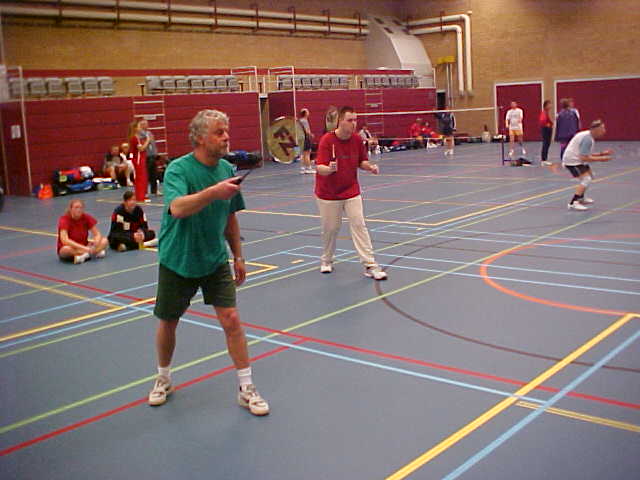
Organization
The Badminton World Federation (BWF) is the internationally recognized governing body of the sport responsible for conduction of tournaments and approaching fair play. Five regional confederations are associated with the BWF:
- Asia: Badminton Asia Confederation (BAC)
- Africa: Badminton Confederation of Africa (BCA)
- Americas: Badminton Pan Am (North America and South America belong to the same confederation; BPA)
- Europe: Badminton Europe (BE)
- Oceania: Badminton Oceania (BO)
Axe throwing is a sport in which the competitor throws an axe at a target, attempting to hit the bulls eye as near as possible. Axe throwing is an event in most lumberjack competitions. Today there are commercial locations in Canada, the United States, and the United Kingdom where participants can compete, similar to dart throwing, as well as opportunities at festivals and some theme parks.
History
The history of axe throwing is a fascinating subject. Throughout history axes have been popular as both a tool and a weapon due to the cheapness of their make.
Axes are some of the oldest tools known to man. They were common in the stone age. Initially they were made without a handle (or haft) and the cutting edge was made from stone.
They were quickly turned into weapons. However, thrown axes were not used until 400-500 AD.
The Francisca axe is probably the most famous types of throwing axes. It was used in the early middle age as a weapon. Commonly associated with the Franks, for whom it was the national weapon, it was also used by many of the other Germanic Tribes at the time.
Some historians believe that the thrown axe was not actually used in battles. They believe it would be folly to throw away a prized weapon and then be unarmed in the face of their enemies. Instead, they believe that it was used in the hunting of food. It was difficult to get within an arm’s length of an animal so thrown weapons were often used.
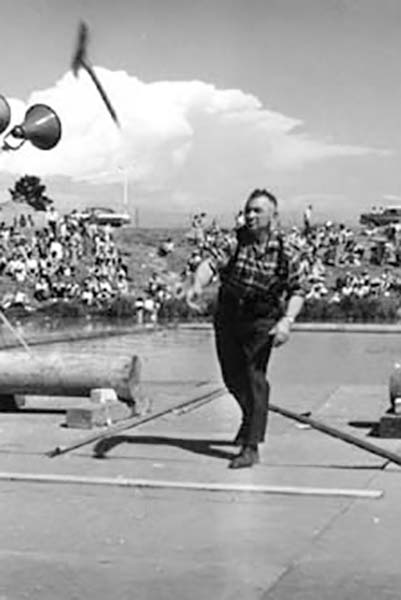

Rules
The target is thirty-six inches wide, consisting of five rings that are each four inches wide. The outside ring is worth one point, the next one in is worth two, then three, then four and finally the bullseye is worth five points. The distance of the throwing line to the target should be 6.1 meters or 21 feet, but at least one association conducts competitions from 15 and 30-foot distances. The axe is scored for the value of the outer most ring that it is touching. Each player gets five throws in a game for a maximum score of 25. The thrower must not step over the throwing line before the axe hits or misses the target; a thrower who steps over the line gets 0 points. Before the competition, a special target for practice throws must be made available. Throwers practicing on the competition target will be disqualified from the competition.
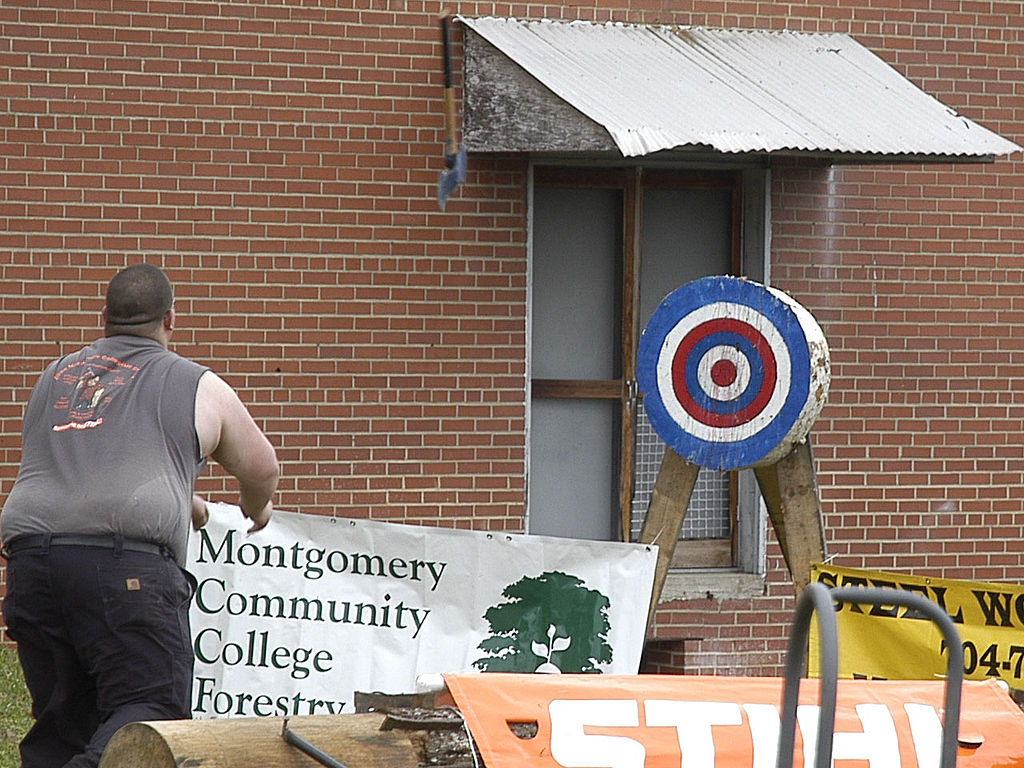
Cautions
The sport of axe throwing deals with a potentially dangerous weapon, so the throwing area must be kept safe at all times. If there is an open area behind the target, then spectators and others should be plainly prevented from walking into said area. The target area should be taped off using flags or light fencing materials. A first aid kit and a person trained in first aid and CPR should be at hand in the event of an emergency. For competition in rural and remote areas, the GPS location for the event should be reported in the case of First-Responders being needed.
Associations
World Axe Throwing League
The World Axe Throwing League (WATL) is the largest professional association for axe throwing in the world and the global governing body & league for the sport of axe throwing. With 41 members in 9 countries, WATL is responsible for the organization of axe throwing’s major international tournaments, notably the World Axe Throwing Championship.
National Axe Throwing Federation
The National Axe Throwing Federation (NATF) is an organization with a global membership that seeks to establish standardized rules for the sport of axe throwing. Throwers in NATF sanctioned leagues compete in the National Axe Throwing Championship to award an annual winner of the Wilson Cup.

Australian rules football, officially known as Australian football, or simply called Aussie rules, football or footy, is a contact sport played between two teams of eighteen players on an oval-shaped field, often a modified cricket ground. Points are scored by kicking the oval-shaped ball between goal posts (worth six points) or between behind posts (worth one point).
History
Australian rules football was invented in Melbourne, Australia, in 1858. The first match identified as a direct precursor to the codification of Australian football was organized and umpired by Tom Wills and contested on 31 July between Melbourne Grammar School and Scotch College, adjacent to the Melbourne Cricket Ground at the Richmond Paddock. The oldest surviving set of rules of Australian rules football were drawn up on 17 May 1859, three days after the formation of the Melbourne Football Club.
The origins of Australian football before 1858 are still the subject of much debate, as there was a multitude of football games in Britain, Ireland and Australia whose rules influenced the early football games played in Melbourne. Teams would have to agree before each match which rules would be followed, and different aspects of association football, Gaelic football, rugby football, Sheffield rules, Cambridge rules Winchester College football and Harrow football were apparent in the early games.
In the 1990s, the VFL became the Australian Football League, a national body and the premier league in Australia and later became the fact world governing body for the sport.
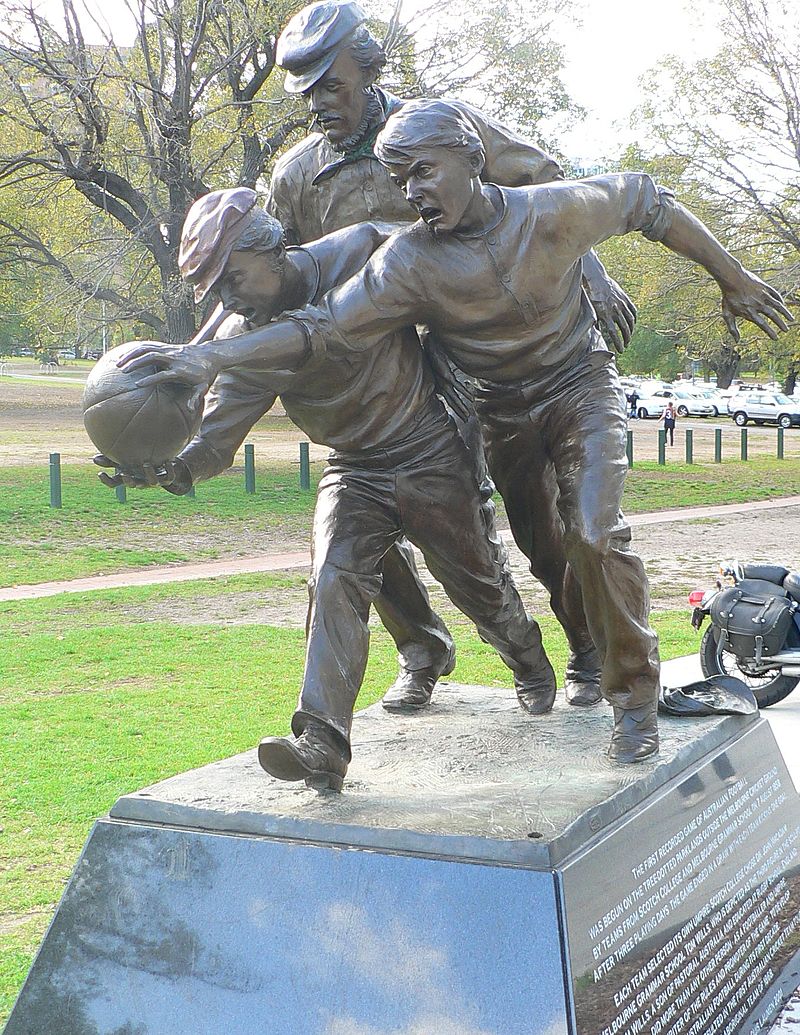
Laws of the Game
Field
Australian rules football playing fields have no fixed dimensions but at senior level are typically between 135 and 185 metres long and 110 and 155 metres wide wing-to-wing. The field, like the ball, is oval-shaped, and in Australia, cricket grounds are often used. No more than 18 players of each team (or, in AFL Women’s, 16 players) are permitted to be on the field at any time.
Up to four interchange (reserve) players may be swapped for those on the field at any time during the game. In Australian rules terminology, these players wait for substitution “on the bench”—an area with a row of seats on the sideline. Players must interchange through a designated interchange “gate” with strict penalties for too many players from one team on the field. In addition, some leagues have each team designate one player as a substitute who can be used to make a single permanent exchange of players during a game.
There is no offside rule nor are there set positions in the rules; unlike many other forms of football, players from both teams may disperse across the whole field before the start of play. However, a typical on-field structure consists of six forwards, six defenders or “backmen” and six midfielders, usually two wingmen, one center and three followers, including a ruckman, ruck-rover, and rover. Only four players from each team are allowed within the centre square (50 metres (55 yd)) at every centre bounce, which occurs at the commencement of each quarter, and to restart the game after a goal is scored. There are also other rules pertaining to allowed player positions during set plays (that is, after a mark or free kick) and during kick-ins following the scoring of a behind.
Match duration
A game consists of four quarters and a timekeeper officiates their duration. At the professional level, each quarter consists of 20 minutes of play, with the clock being stopped for instances such as scores, the ball going out of bounds or at the umpire’s discretion, e.g. for serious injury. Lower grades of competition might employ shorter quarters of play. The umpire signals time-off to stop the clock for various reasons, such as the player in possession being tackled into stagnant play. Time resumes when the umpire signals time-on or when the ball is brought into play. Stoppages cause quarters to extend approximately 5–10 minutes beyond the 20 minutes of play. 6 minutes of rest is allowed before the second and fourth quarters, and 20 minutes of rest is allowed at half-time.
The official game clock is available only to the timekeeper(s), and is not displayed to the players, umpires or spectators. The only public knowledge of game time is when the timekeeper sounds a siren at the start and end of each quarter. Coaching staff may monitor the game time themselves and convey information to players via on-field trainers or substitute players. Broadcasters usually display an approximation of the official game time for television audiences, although some will now show the exact time remaining in a quarter.
General play
Games are officiated by umpires. Before the game, the winner of a coin toss determines which directions the teams will play to begin. Australian football begins after the first siren, when the umpire bounces the ball on the ground (or throws it into the air if the condition of the ground is poor), and the two ruckmen (typically the tallest players from each team) battle for the ball in the air on its way back down. This is known as the ball-up. Certain disputes during play may also be settled with a ball-up from the point of contention. If the ball is kicked or hit from a ball-up or boundary throw-in over the boundary line or into a behind post without the ball bouncing, a free kick is paid for out of bounds on the full. A free kick is also paid if the ball is deemed by the umpire to have been deliberately carried or directed out of bounds. If the ball travels out of bounds in any other circumstances (for example, contested play results in the ball being knocked out of bounds) a boundary umpire will stand with his back to the infield and return the ball into play with a throw-in, a high backwards toss back into the field of play.
The ball can be propelled in any direction by way of a foot, clenched fist (called a handball or handpass) or open-hand tap but it cannot be thrown under any circumstances. Once a player takes possession of the ball he must dispose of it by either kicking or handballing it. Any other method of disposal is illegal and will result in a free kick to the opposing team. This is usually called “incorrect disposal”, “dropping the ball” or “throwing”. If the ball is not in the possession of one player it can be moved on with any part of the body.
A player may run with the ball, but it must be bounced or touched on the ground at least once every 15 metres. Opposition players may bumpor tackle the player to obtain the ball and, when tackled, the player must dispose of the ball cleanly or risk being penalised for holding the ball. The ball carrier may only be tackled between the shoulders and knees. If the opposition player forcefully contacts a player in the back while performing a tackle, the opposition player will be penalised for a push in the back. If the opposition tackles the player with possession below the knees (a low tackle or a trip) or above the shoulders (a high tackle), the team with possession of the football gets a free kick.
If a player takes possession of the ball that has travelled more than 15 metres (16 yd) from another player’s kick, by way of a catch, it is claimed as a mark (meaning that the game stops while he prepares to kick from the point at which he marked). Alternatively, he may choose to “play on” forfeiting the set shot in the hope of pressing an advantage for his team (rather than allowing the opposition to reposition while he prepares for the free kick). Once a player has chosen to play on, normal play resumes and the player who took the mark is again able to be tackled.
There are different styles of kicking depending on how the ball is held in the hand. The most common style of kicking seen in today’s game, principally because of its superior accuracy, is the drop punt, where the ball is dropped from the hands down, almost to the ground, to be kicked so that the ball rotates in a reverse end over end motion as it travels through the air. Other commonly used kicks are the torpedo punt (also known as the spiral, barrel, or screw punt), where the ball is held flatter at an angle across the body, which makes the ball spin around its long axis in the air, resulting in extra distance (similar to the traditional motion of an American football punt), and the checkside punt or “banana”, kicked across the ball with the outside of the foot used to curve the ball (towards the right if kicked off the right foot) towards targets that are on an angle. There is also the “snap”, which is almost the same as a checkside punt except that it is kicked off the inside of the foot and curves in the opposite direction. It is also possible to kick the ball so that it bounces along the ground. This is known as a “grubber”. Grubbers can bounce in a straight line, or curve to the left or right.
Apart from free kicks, marks or when the ball is in the possession of an umpire for a ball up or throw in, the ball is always in dispute and any player from either side can take possession of the ball.
Scoring
A Sherrin Kangaroo Brand football. Sherrin is the official game ball of the Australian Football League
A goal, worth 6 points, is scored when the football is propelled through the goal posts at any height (including above the height of the posts) by way of a kick from the attacking team. It may fly through “on the full” (without touching the ground) or bounce through, but must not have been touched, on the way, by any player from either team or a goalpost. A goal cannot be scored from the foot of an opposition (defending) player.
A behind, worth 1 point, is scored when the ball passes between a goal post and a behind post at any height, or if the ball hits a goal post, or if any player sends the ball between the goal posts by touching it with any part of the body other than a foot. A behind is also awarded to the attacking team if the ball touches any part of an opposition player, including a foot, before passing between the goal posts. When an opposition player deliberately scores a behind for the attacking team (generally as a last resort to ensure that a goal is not scored) this is termed a rushed behind. As of the 2009 AFL season, a free kick is awarded against any player who deliberately rushes a behind.
The goal umpire signals a goal with two hands pointed forward at elbow height, or a behind with one hand. The goal umpire then waves flags above their heads to communicate this information to the goal umpire at the opposite end of the ground.
The team that has scored the most points at the end of play wins the game. If the scores are level on points at the end of play, then the game is a draw; extra time applies only during finals matches in some competitions.
Athletics is a term encompassing the human competitive sports and games requiring physical skill, and the systems of training that prepare athletes for competition performance. Athletic sports or contests are competitions which are primarily based on human physical competition, demanding the qualities of stamina, fitness, and skill. Athletic sports form the bulk of popular sporting activities, with other major forms including motorsports, precision sports, extreme sports, and animal sports.
History
Athletic contests in running, walking, jumping and throwing are among the oldest of all sports and their roots are prehistoric. Athletics events were depicted in the Ancient Egyptian tombs in Saqqara, with illustrations of running at the Heb Sed festival and high jumping appearing in tombs from as early as of 2250 BC. The Tailteann Games were an ancient Celtic festival in Ireland, founded circa 1800 BC, and the thirty-day meeting included running and stone-throwing among its sporting events. The original and only event at the first Olympics in 776 BC was a stadium-length running event known as the station. This later expanded to include throwing and jumping events within the ancient pentathlon. Athletics competitions also took place at other Panhellenic Games, which were founded later around 500 BC.
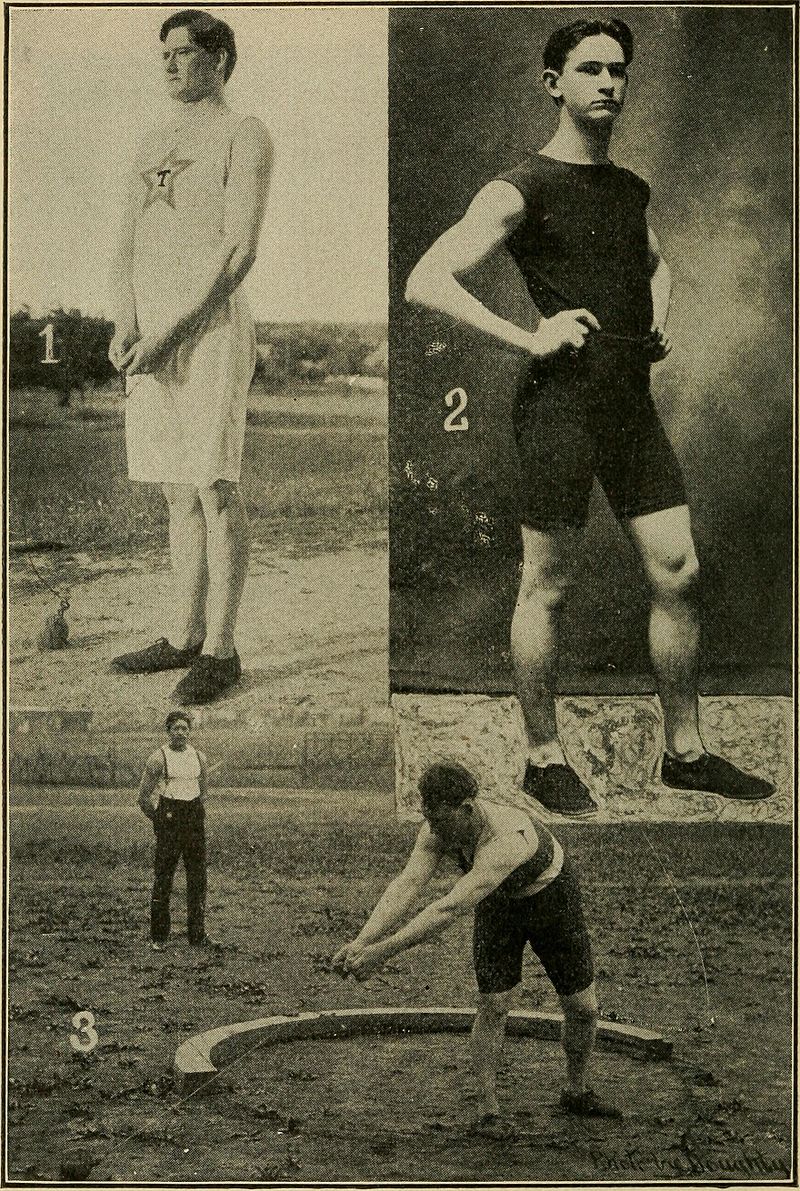
Venue
Track and field stadium
A standard outdoor track is in the shape of a stadium, 400 meters in length, and has at least eight lanes 1.22 m in width (small arenas might have six lanes). Older track facilities may have nonstandard track lengths, such as 440 yards (402.3 m; 1/4 mile) (common in the United States). Historically, tracks were covered by a dirt running surface. Modern All-weather running tracks are covered by a synthetic weather-resistant running surface, which typically consists of rubber (either black SBR or colored EPDM granules), bound by polyurethane or latex resins. Older tracks may be cinder-covered.
A standard indoor track is designed similarly to an outdoor track, but is only 200 meters in length and has between four and eight lanes, each with a width between 0.90 m and 1.10 m. Often, the bends of an indoor track will be banked to compensate for the small turning radius. However, because of space limitations, indoor tracks may have other nonstandard lengths, such as 160-yard (146.3 m) indoor track at Madison Square Garden used for the Millrose Games. Because of space limitations, meetings held at indoor facilities do not hold many athletics events typically contested outdoors.
Cross country courses
There is no standardised form of cross country course and each venue is significantly defined by the environment it contains – some may be relatively flat and featureless, while others may be more challenging with natural obstacles, tight turns, and undulating ground. While a small number of purpose-built courses exist, the vast majority of cross country running courses are created by cordoning a specific area within any open natural land, typically a park, woodland or greenspace near a settlement.
At the elite and professional level, courses must be looped and each lap must be between 1750 m and 2000 m in length. Severe obstacles such as deep ditches, high barriers and thick undergrowth not normally present; the course should be able to be completed whilst remaining on foot throughout. In order to maintain the sport’s distinction from road running, the usage of unnatural or macadamised surfaces is generally kept to a minimum or avoided entirely.
Because the majority of races take place on areas of grass, soil, mud or earth, weather conditions can significantly affect the difficulty of cross country courses, as snow and rain reduces traction and can create areas of standing water.
Road courses
A typical road running a course on the inner-city roads of Toronto
The surface of road races is highly important and the IAAF dictate that the courses must be along man-made roads, bicycle paths or footpaths. Courses set along major roads of cities are typical of road running events, and traffic is usually cordoned off from the area during the competition. While soft ground, such as grass, is generally avoided, races may start and finish on soft ground or within a track and field stadium. Road racing courses come in two primary types: looped and point-to-point. Courses may be measured and designed to cover a standardized distance, such as 10 km (6.2 mi), or they may simply follow a set route between two landmarks.
Road running courses over 5 km usually offer drinks or refreshment stations for runners at designated points alongside the course and medical professionals are present at the courses of major races due to the health risks involved with long-distance running.
Elite road walks are conducted on closed loop courses (usual loops of 2,000 or 2,500 meters). Refreshment stations are also present over long distance walking competitions, with drinks being available on every lap for races longer than 10 km.

Organizations
Since its foundation in 1912, the international governing body for athletics has been the International Association of Athletics Federations (IAAF). It was initially known as the International Amateur Athletics Federation but changed later its name to reflect that the sport had moved away from amateurism towards professionalism in the late 1970s. The IAAF has 215 member nations and territories, which are divided into six continental areas (or area associations). The six association areas are for Asia, Africa, Europe, Oceania, North America, and South America. The sports within athletics do not have their own independent governing bodies at either international or continental level; instead, all fall under the athletics authorities.
Map of the six continental federations of the IAAF:
- AAA – Asian Athletics Association
- CAA – Confederation of African Athletics
- CONSUDATLE – South American Athletics Confederation
- NACACAA – North America, Central America and Caribbean Athletic Association
- EAA – European Athletics Association
- OAA – Oceania Athletics Association
National level athletics organisations are responsible for the regulation of the sport within their respective countries and most major competitions have some form of permit or approval from their national body.
A trick shot (also trickshot or trick-shot) is a shot played on a billiards table (most often a pool table, though snooker tables are also used), which seems unlikely or impossible or requires significant skill. Trick shots frequently involve the balls organized in ways that are unlikely or impossible to appear in normal play, such as balls being in a straight line, or use props such as extra cues or a triangle that would not be allowed on the table during a game. As an organized cue sports discipline, trick shot competition is known as artistic pool.
History
Artistic pool trick shot competitions on pocket billiards tables, inspired by artistic billiards, began in 1993 in the US at an amateur level and in 2000 professionally and internationally, featuring fifty-six pre-set shots to attempt.
Each set shot has a maximum point value assigned for perfect execution, ranging from a four-point maximum for lowest level difficulty shots, and climbing to an 11-point maximum for shots deemed highest in difficulty level. There are a total of 500 points available to a player, representing the combined value of a perfect score on all 76 shots, although not all games are played with the full shot catalogue. The governing body of the sport is the Confédération International de Billard Artistique (CIBA).
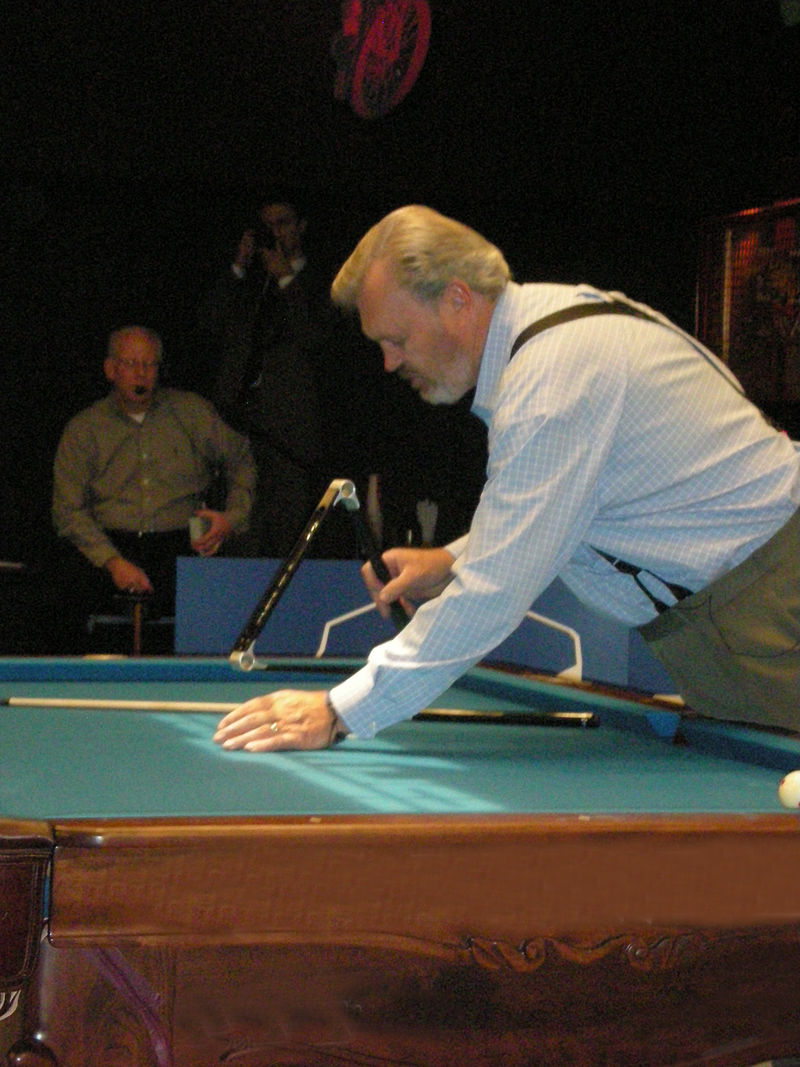
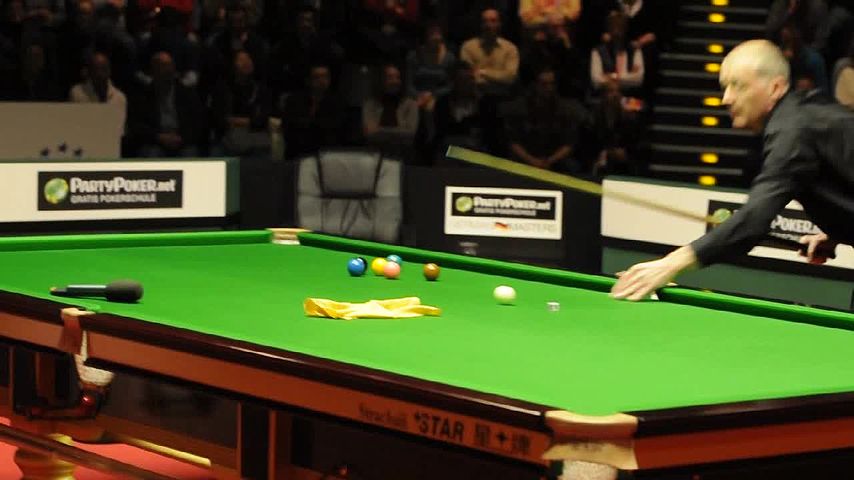
Format & Scoring
The athletes are competing individually, but in a “golf course” or “group play” format, performing a set amount of pre-determined “artistic” shots, and/or challenges (8 “sub-disciplines” or “skill categories”).
These are the same for all athletes. The list of “sub-disciplines” or “skill categories” are as follows:
1) Trick / Fancy Shots,
2) Special Arts,
3) Draw Shots,
4) Follow Shots,
5) Bank / Kick Shots,
6) Stroke Shots,
7) Jump Shots, and
8) Masse Shots.
Each of these has specific definition attachment detailing challenge limits and inclusions.
Depending upon the “Degree of Difficulty” (DOD), and at which attempt (three attempts are normally allowed), an athlete will manage to perform the shot to satisfaction, he/she will be awarded points accordingly. From time to time also, individually designed or chosen “artistic” shots may be performed, as a part of the competition, in which case the degree of difficulty and amount of points to be awarded, has been determined ahead of time, or with optional scoring by a panel of judges.
In addition, some challenges have no DOD and are scored by an alternate scoring, as so described in a then-current “Artistic Pool Program”, which is available to all competitors.
Allowance for specific private promoter formats and scoring can be accommodated, including, but not limited to, team, individual round robin, and special match play events that use single elimination, double elimination, and other/modified types of “playoff” charting.
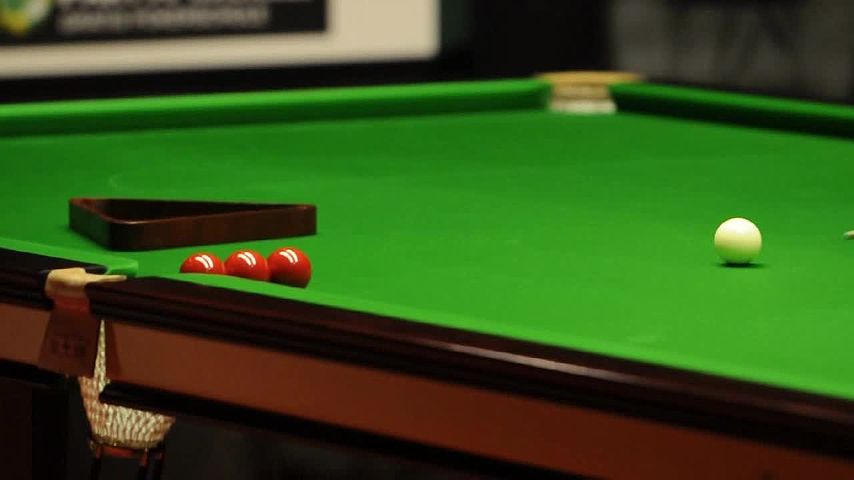
Disciplines
- The APTSA trick shot disciplines are:
- Trick and/or fancy: Primarily deals with setup shots, multiple ball configurations, and/or a shot where cue ball travels in a “kick” pattern to make final ball(s). May also include “extreme” cut shots and special skill shots not in other disciplines.
- Prop/novelty and special arts: Unusual or new shots of any nature, shots with “props”, such as cues, bridge(s), rack(s), coin(s), chalk, etc., and shots of a unique or “special” art form, such as wing shots, time shots, “legal” or “illegal” follow-thru shots, push shots, roller coaster technique/waterfall specialties, plus demonstrations of one-handed jack up, behind back, under leg, and more. Referred to as general amusement category.
- Draw: Basic to advanced with cue ball greater than 1/2″ from first object ball. The cue ball contacts an object ball with draw (backspin) and pockets another.
- Follow: A cue ball is hit with follow (topspin) and goes forth and hits in an object ball.
- Bank/Kick: Bank, meaning to hit object ball(s) into cushion(s), and kicks meaning to hit cue ball into “x” number of cushions first and then to object ball(s).
- Stroke: Cue ball less than 1/2″ from first object ball(s), for draw or follow, plus accuracy position shots, speed control shots, or unique “stroke” shots.
- Jump: Any shot utilizing jump shot technique, other than “prop” shots with bridge(s), and some special “stroke” shots.
- Massé: Half and full massé – cue elevations over 10 degrees.
Arm wrestling is a sport involving two participants. Each places one arm on a surface with their elbows bent and touching the surface, and they grip each other’s hand. The goal is to pin the other’s arm onto the surface, the winner’s arm over the loser’s arm. In the early year’s different names were interchangeably used to describe the same sport: “Skanderbeg”, “arm turning”, “arm twisting”, “arm wrestling”, “indian arm wrestling”, “twisting wrists”, “wrist turning”, “wrist wrestling”. Organized arm wrestling tournaments started being held in the 1950s.
History
Armwrestling can be traced all the way back to ancient Egypt where a painting depicting a type of arm wrestling was found in an Egyptian tomb dating to about 2,000 B.C.
The modern sport is based on a Native American game. In fact, it was usually called “Indian wrestling” when practiced by frontiersman during the 19th century and by children in the 20th century.
In addition to being a semi-popular sport among high school and college students, arm wrestling was a tavern sport and the first organized competition was staged by a journalist, Bill Soberanes, in 1952 at Gilardi’s Saloon in Petaluma, California.

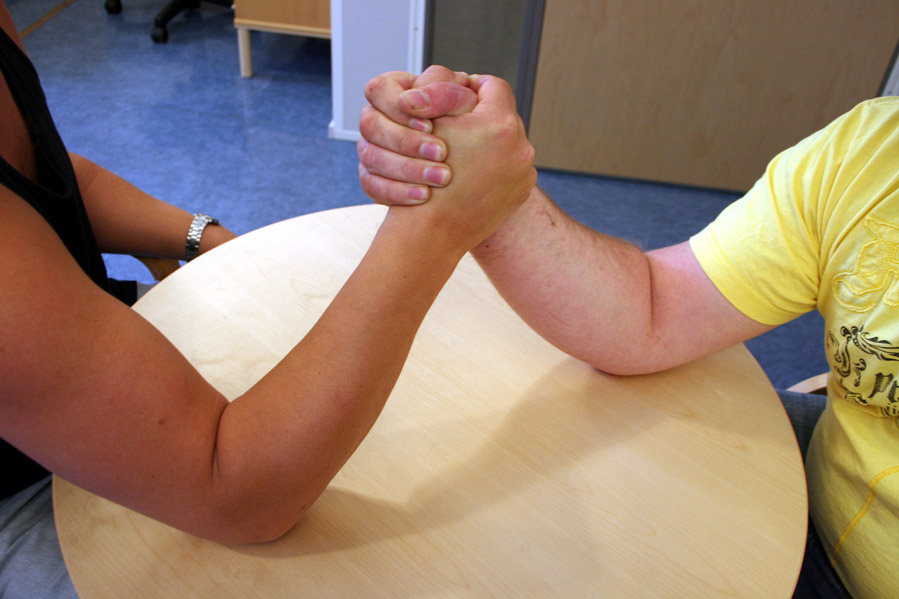
Rules
- Each match is officiated by two referees, one on each side so the officials can see the competitors and their grip from both sides.
- There is no time limit to a match but a referee may call a halt to the match if one or both competitors are in his opinion not in a fit state to carry on.
- The competitors should approach the table, make themselves comfortable and then grip their opponent’s hand. The grip should be palm to palm with the thumb knuckle visible. The competitor’s other hands should grip their respective hand peg.
- Competitors can choose to start a match in the referee’s grip or in a strip but both competitors must agree to this.
- Once the referees are happy with the grip from both competitors, the contest will begin. Each competitor should attempt to pin their opponent’s arm onto the touch pad.
- Pressure should be in a sideways capacity to force their opponent’s hand to the touch pad. Back pressure in an attempt to drag the opponent off toward the center of the table is not allowed.
- The match is won when one competitor pins their opponent’s hand onto the touch pad. At this point, if the head referee is happy that it is a valid pin, they will shout ‘Stop!’ and indicate the inner by immediately raising their arm.
- A valid pin is when any part of the competitor’s natural wrist touches the touch pad.
- There are numerous fouls that can be committed in Arm Wrestling. These include touching a part of your own body during the match, crossing their shoulder into the opposition area, dropping the shoulder below the height of the touch pad, foul language, abuse or poor sportsmanship to name a few.
- Two warnings = one foul and two foul equals disqualification meaning that their opponent immediately wins the match.
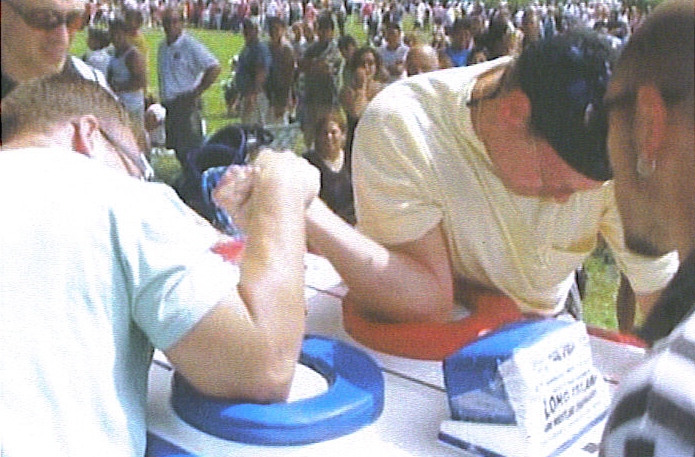
Equipment
For official World Arm Wrestling Tournaments, the tables should have the following features and conform to the WAF rules. Tables essentially consist of:
- Elbow pads – These are where each competitor places their elbow down to wrestle. They are padded to avoid discomfort and to prevent injury.
- Touch pads – These are the raised pads are on opposite sides of the table that each respective competitor is trying to push his opponents hand onto.
- Hand pegs – These are used by competitors to grip onto whilst wrestling, thus giving themselves some added leverage.
- added leverage.
Associations
- International Federation of Arm Wrestlers(IFAW) – held arm-wrestling tournaments in conjunction with major International Federation of Body Builders (IFBB) bodybuilding contests, including early editions of the Mr. Olympia
- International Wrist wrestling Club(IWC)
- Professional Arm-wrestling League(PAL)
- Ultimate Arm-wrestling League(UAL)
- World Arm Wrestling Federation(WAWF)
- World Arm sport Federation
- World Arm-wrestling League(WAL)
- World Professional Arm-wrestling Association(WPAA)
- World Professional Wrist wrestling Association(WPWA)
- World’s Wrist wrestling Championship, Inc.(WWC) – first arm-wrestling organization, organized the first World’s Wrist wrestling Championship – it was held in Hermann Sons Hall: the second largest auditorium in Petaluma in 1962; later those (WWC’s) World championships were known as Petaluma World’s Wrist Wrestling Championship.
- Carling O’Keefe World Arm-wrestling Championship– Fred Salvador first organized in 1971 after Petaluma Worlds Wrist wrestling Championships; later referred to as the birth of organized arm-wrestling in Canada; also known as Timmins Worlds

Aquabike is a swim and bike combination race. They vary in length but the most common distance, as well as the USAT National Championship distance, is a 1.2-mile swim and a 56-mile bike. Aquabike races in the United States are often combined with the first two legs of triathlons.
History
The Aquabike Series was a pilot program in 2005 that was brought to USA Triathlon by one of its members. Dean Peterson of Peoria, Ariz. Peterson had spoken with many triathletes that felt they would be interested in a format in which athletes could compete in the swim and the bike portions of a half or ultra-distance triathlon. He brought the idea to then USA Triathlon’s acting Executive Director, Mike Greer, who got the race directors to provide a course. Race directors then agreed to provide times and placements for these athletes.
In 2010, USAT initiated a stand-alone rankings program for aquabike. By 2012, there were over 3,000 athletes ranked in this discipline.
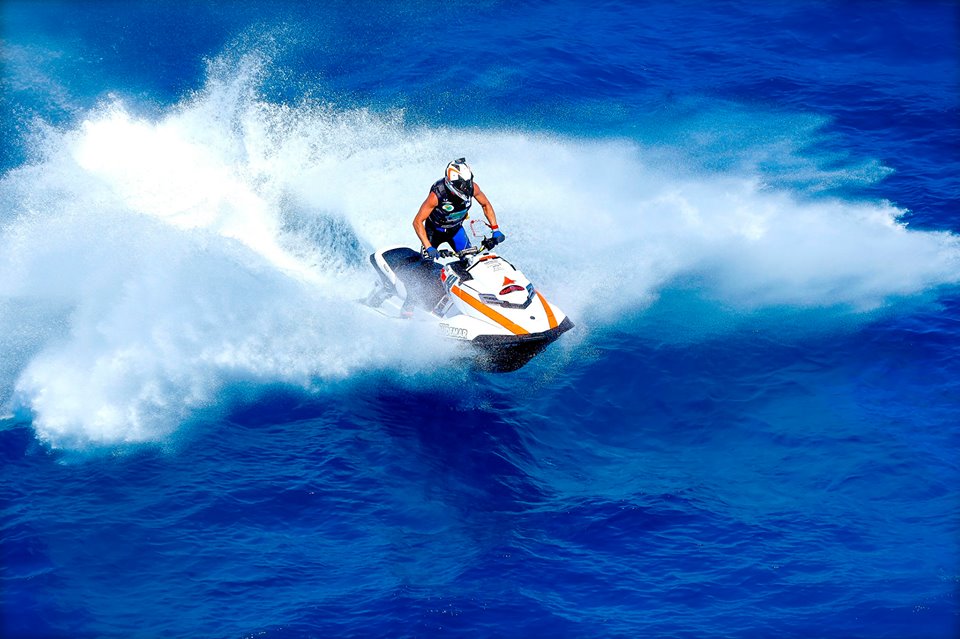

Rules
Race rules
- Races must be sanctioned by USAT
- Races must be distance-based and not time-based. Any race that is time-based cannot be accurately scored as athletes will travel different distances in the allotted time. (USATri60 events are not ranked due to these guidelines.)
- Athletes participating as part of Team USA at ITU World Championship races will receive a ranking for these races
- A race must have more than one finisher in order to be ranked
- Race type must be one of the following: On-Road Triathlon, Off-Road Triathlon, Duathlon, Aquathlon, or Aquabike. As of 2016, adult age group amateur draft legal races will be included with On-Road Triathlon rankings. Elite draft legal and youth elite development races will remain unranked. (Due to the limited number of Off-Road Duathlon, Aquathlon, and Aquabike races, off-road and on-road races are ranked together in these sports.)
- Each multisport discipline is ranked separately
- Only Adult races are ranked (youth athletes participating in an adult race will be ranked)
- Clinics and Youth races are not ranked by USA Triathlon
- The race must have a multi-sport component. (In 2011 we witnessed some issues with events that cancelled multiple legs or converted them to another sport [i.e. a triathlon swim, bike, run became a run, run, run]. Single sport events cannot be ranked by our system.)
- If a leg is cancelled or changed within 24 hours of the start of the race, the race will be ranked as it was originally sanctioned. (For example: A triathlon (Swim/Bike/Run) has the swim cancelled the morning of the race, or the swim is substituted with an extra run, it will be ranked as a triathlon.) If the leg is cancelled or changed more than 24 hours in advance, the race will be ranked as the type of event it became. For instance: a triathlon with a cancelled swim will become a duathlon.
- Everyone in the race must have traveled the same distance in the event. Occasionally we sanction events that are based on how far a person can travel in a set amount of time (vs. how fast someone can travel a specific distance) these types of races are not ranked
Athlete rules
- Race age is determined by one’s age on 12/31 of the race year
- Race Age determines the age group you race under
- To be included in the Final Rankings, an athlete must have an active membership on 12/1 of the race year
- Athletes who do not finish the race or are disqualified will not be ranked
- Women receive a 10% gender grade bonus in each race
- Athletes who hold an elite license in Triathlon (or are Foreign or Collegiate Elite) will appear in the results but will not qualify for a national ranking in any sport. Elite Duathlete and Off-Road Triathletes are eligible for age group rankings in any discipline other than that in which they hold the elite license
- National ranking scores are calculated using each athlete’s top two to three scores depending on discipline. (On-Road Triathlon = 3, Duathlon, Aquabike, Aquathlon, Off-Road Triathlon = 2) (*To be changed to three duathlons in 2019.)
- All Athletes who receive an overall score will be used as pacesetters for the next season
- If you discover an error in your rankings, you must notify the rankings department by midnight Mountain Time on January 31 of the following race year. Request for corrections received after this date will be denied.
- Top 10% of each age group receive All American Honor
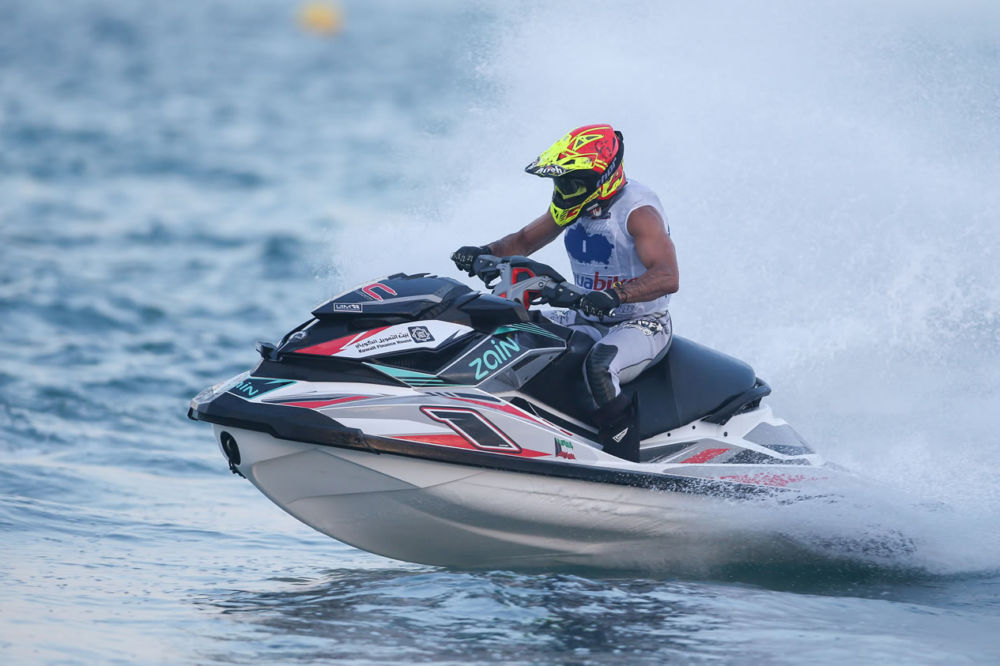
Commonly Used Terms
Pacesetter: any athlete who completed three or more triathlons the previous year (two or more of any other sport – 2018). (*To be changed to three duathlons in 2019.)Beginning in 2014 membership status will not affect whether or not one is a pacesetter.
Par Time: estimated fastest time possible by an amateur athlete and determined by the pacesetters in the race. Note: Par time is specific to the course and will change from year to year based on who is racing.
Calculated Time: A pacesetter’s time – ((time in race*(overall score/100))
Original Score: initial comparison of athlete time against par time (athlete time / par time)
Race Score: Score in the race (an inverse of the Original Score) * 100
Overall Score: An average of the top three original scores in on-road triathlon (top two of all other sports). (*To be changed to three duathlons in 2019.) For annual members, the overall score is used to determine one’s National Ranking each year
National Ranking: an athlete’s placement among other athletes of the same gender and in the same age group. The athlete with the best score will ranked number 1.
Age Group: There are 18 age groups: 15 and under, 16-17, 18-19, 20-24, 25-29, 30-34, 35-39, 40-44, 45-49, 50-54, 55-59, 60-64, 65-69, 70-74, 75-79, 80-84, 85-89, 90+
American football, referred to as football in the United States and Canada and also known as gridiron, is a team sport played by two teams of eleven players on a rectangular field with goalposts at each end. The offense, which is the team controlling the oval-shaped football, attempts to advance down the field by running with or passing the ball, while the defense, which is the team without control of the ball, aims to stop the offense’s advance and aims to take control of the ball for themselves. The offense must advance at least ten yards in four downs or plays, and otherwise, they turn over the football to the defense; if the offense succeeds in advancing ten yards or more, they are given a new set of four downs. Points are primarily scored by advancing the ball into the opposing team’s end zone for a touchdown or kicking the ball through the opponent’s goalposts for a field goal. The team with the most points at the end of a game wins.
History
The history of American football can be traced to early versions of rugby football and association football. Both games have their origin in varieties of football played in Britain in the mid-19th century, in which a football is kicked at a goal or kicked over a line, which in turn were based on the varieties of English public school football games. American football resulted from several major divergences from association football and rugby football, most notably the rule changes instituted by Walter Camp, a Yale University and Hopkins School graduate who is considered to be the “Father of American Football”. Among these important changes were the introduction of the line of scrimmage, of down-and-distance rules and of the legalization of blocking. The modern era of American football can be considered to have begun after the 1932 NFL Playoff game, which was the first indoor game since 1902 and the first American football game to feature hash marks, forward passes anywhere behind the line of scrimmage, and the movement of the goal posts back to the goal line. Other innovations to occur immediately after 1932 were the introduction of the AP Poll in 1934, the tapering of the ends of the football in 1934, the awarding of the first Heisman Trophy in 1935, the first NFL draft in 1936 and the first televised game in 1939.
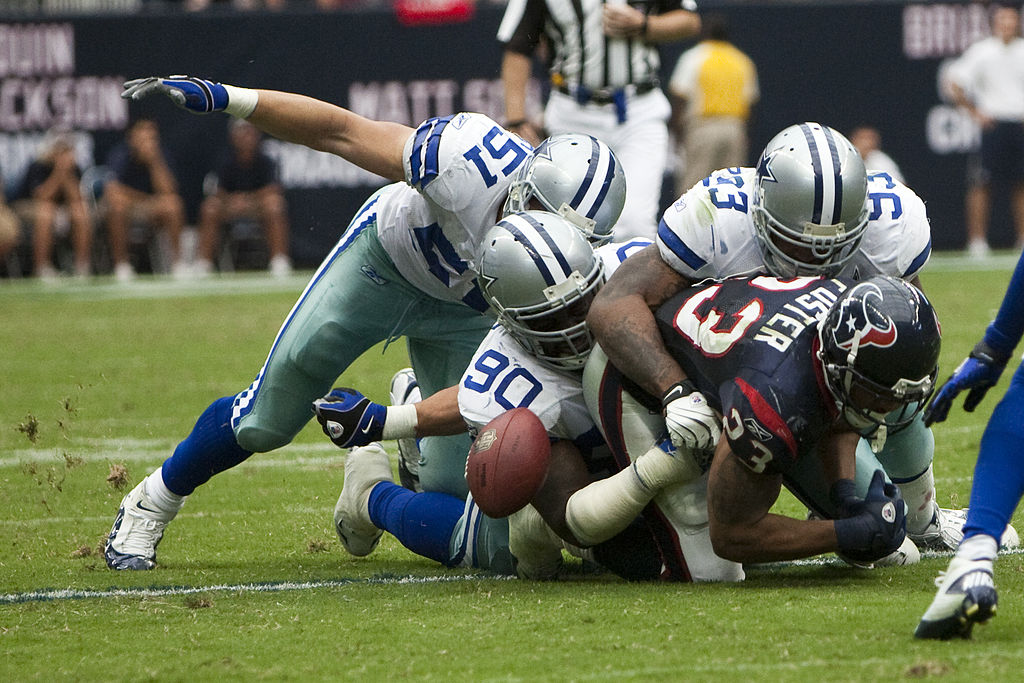
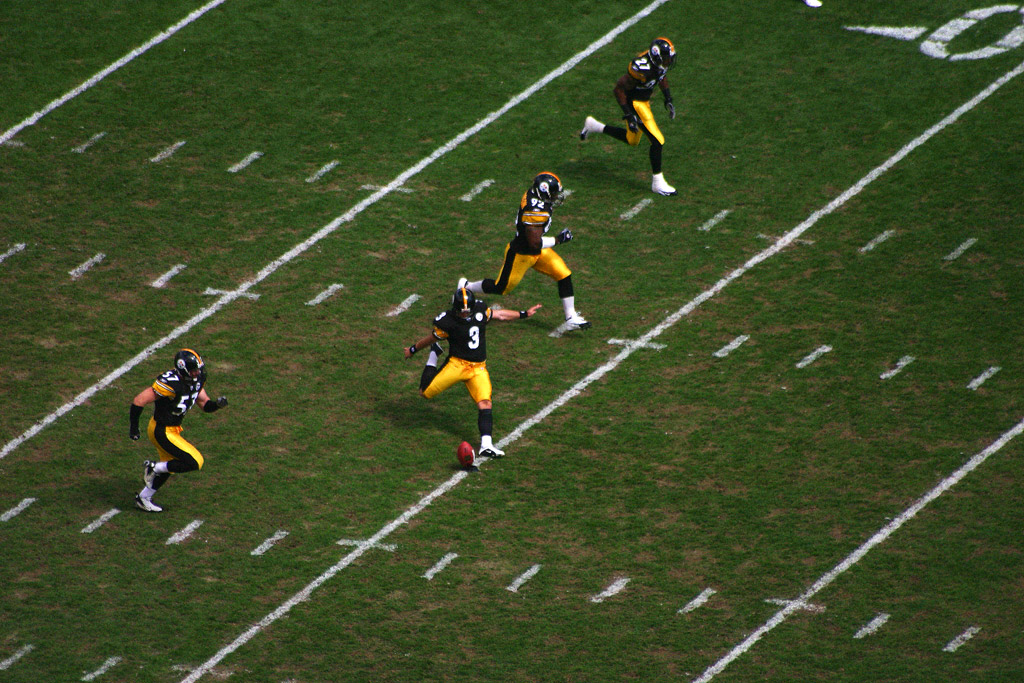
Rules
Scoring
A player for the Navy Midshipmen(dark jersey) scores a touchdown while a defender from the Tulsa Golden Hurricane (in white) looks on. The goal line is marked by the small orange pylon
In American football, the winner is the team that has scored more points at the end of the game. There are multiple ways to score in a football game.
The touchdown (TD), worth six points, is the most valuable scoring play in American football. A touchdown is scored when a live ball is advanced into, caught in, or recovered in the end zone of the opposing team. The scoring team then attempts a try or conversion, more commonly known as the point(s)-after-touchdown (PAT), which is a single scoring opportunity.
A PAT is most commonly attempted from the two- or three-yard line, depending on the level of play. If scored by a placekick or dropkick through the goal posts, it is worth one point, and is typically called the extra point. Conversely, a team may elect to run a single play from scrimmage and attempt, once again, to achieve what would normally be considered a touchdown. In such a case, a successful attempt is called the two-point conversion and is worth two points. For the 2015 season, the NFL adopted rules on PATs that stated during an extra point the placekick must be snapped from the 15-yard line and on extra points if the kick is blocked and the opposing team returns it into the end zone or if during a two-point conversion the ball is fumbled or intercepted and returned to the end zone the opposing team will score two points. No points are awarded on a failed extra point or two-point conversion attempt, although under a rare set of circumstances it is possible to score a safety, worth one point, if the defense takes the ball back into its own end zone and is downed there. In general, the extra point is almost always successful in professional play and is only slightly less successful at amateur levels, while the two-point conversion is a much riskier play with a higher probability of failure; accordingly, extra point attempts are far more common than two-point conversion attempts.
A field goal (FG), worth three points, is scored when the ball is placekicked or dropkicked through the uprights and over the crossbars of the defense’s goalposts. After a PAT attempt or successful field goal the scoring team must kick the ball off to the other team.
A safety is scored when the ball carrier is tackled in their own end zone. Safeties are worth two points, which are awarded to the defense. In addition, the team that conceded the safety must kick the ball to the scoring team via a free kick.
Field and equipment
Football games are played on a rectangular field that measures 120 yards (110 m) long and 53 1⁄3 yards (48.8 m) wide. Lines marked along the ends and sides of the field are known respectively as the end lines and sidelines, and goal lines are marked 10 yards (9.1 m) inward from each end line. Weighted pylons are placed on the inside corner of the intersections of the goal lines and end lines.
White markings on the field identify the distance from the end zone. Inbound lines, or hash marks, are short parallel lines that mark off 1-yard (0.91 m) increments. Yard lines, which can run the width of the field, are marked every 5 yards (4.6 m). A one-yard-wide line is placed at each end of the field; this line is marked at the center of the two-yard line in professional play and at the three-yard line in college play. Numerals that display the distance from the closest goal line in yards are placed on both sides of the field every ten yards.
Goalposts are located at the center of the plane of each of the two end lines. The crossbar of these posts is 10 feet (3.0 m) above the ground, with vertical uprights at the end of the crossbar 18 feet 6 inches (5.64 m) apart for professional and collegiate play and 23 feet 4 inches (7.11 m) apart for high school play. The uprights extend vertically 35 feet (11 m) on professional fields, a minimum of 10 yards (9.1 m) on college fields, and a minimum of 10 feet (3.0 m) on high school fields. Goal posts are padded at the base, and orange ribbons are normally placed at the tip of each upright.
The football itself is an oval ball, similar to the balls used in rugby or Australian rules football. At all levels of play, the football is inflated to 12 1⁄2 to 13 1⁄2 pounds per square inch (86 to 93 kPa) and weighs 14 to 15 ounces (400 to 430 g); beyond that, the exact dimensions vary slightly. In professional play the ball has a long axis of 11 to 11 1⁄4 inches (28 to 29 cm), a long circumference of 28 to 28 1⁄2 inches (71 to 72 cm), and a short circumference of 21 to 21 1⁄4 inches (53 to 54 cm), while in college and high school play the ball has a long axis of 10 7⁄8 to 11 7⁄16 inches (27.6 to 29.1 cm), a long circumference of 27 3⁄4 to 28 1⁄2 inches (70 to 72 cm), and a short circumference of 20 3⁄4 to 21 1⁄4 inches (53 to 54 cm).
Duration and time stoppages
Football games last for a total of 60 minutes in professional and college play and are divided into two halves of 30 minutes and four quarters of 15 minutes. High school football games are 48 minutes in length with two halves of 24 minutes and four quarters of 12 minutes. The two halves are separated by a halftime period, and the first and third quarters are also followed by a short break. Prior to the start of the game, the referee and team captains for each team meet at midfield for a coin toss. The visiting team is allowed to call “heads” or “tails”; the winner of the toss is allowed to decide between choosing whether to receive or kick off the ball or choosing which goal they want to defend, but they can also defer their choice until the second half. The losing team, unless the winning team decides to defer, is allowed to choose the option the winning team did not select, and receives the option to receive, kick, or select a goal to defend to begin the second half. Most teams choose to receive or defer, because choosing to kick the ball to start the game would allow the other team to choose which goal to defend. Teams switch goals following the first and third quarters. If a down is in progress when a quarter ends, play continues until the down is completed.
Games last longer than their defined length due to play stoppages—the average NFL game lasts slightly over three hours. Time in a football game is measured by the game clock. An operator is responsible for starting, stopping and operating the game clock based on the direction of the appropriate official. A separate clock, the play clock, is used to determine if a delay of game infraction has been committed. If the play clock expires before the ball has been snapped or free-kicked, a delay of game foul is called on the offense. The play clock is set to 40 seconds in professional and college football and to 25 seconds in high school play or following certain administrative stoppages in the former levels of play.
Advancing the ball and downs
Carolina Panthers quarterback Jake Delhomme (number 17) in the motion of throwing a forward pass
There are two main ways that the offense can advance the ball: running and passing. In a typical play, the quarterback calls the play, and the center passes the ball backwards and under their legs to the quarterback in a process known as the snap. The quarterback then either hands the ball off to a back, throws the ball or runs with it. The play ends when the player with the ball is tackled or goes out of bounds, or a pass hits the ground without a player having caught it. A forward pass can only be legally attempted if the passer is behind the line of scrimmage, and only one forward pass can be attempted per down. Like in rugby, players can also pass the ball backwards at any point during a play. In the NFL, a down also ends if the runner’s helmet comes off.
The offense is given a series of four plays, known as downs. If the offense advances ten or more yards in the four downs, they are awarded a new set of four downs. If they fail to advance ten yards, possession of the football is turned over to the defense. In most situations, if the offense reaches their fourth down they will punt the ball to the other team, which forces them to begin their drive from further down the field; if they are in field goal range, they might also attempt to score a field goal. A group of officials, the chain crew, keeps track of both the downs and the distance measurements. On television, a yellow line is electronically superimposed on the field to show the first down line to the viewing audience.
Kicking
Green Bay Packersplacekicker Mason Crosbyattempts a field goal by kicking the ball from the hands of a holder. This is the standard method to score field goals or extra points.
There are two categories of kicks in football: scrimmage kicks, which can be executed by the offensive team on any down from behind or on the line of scrimmage, and free kicks. The free kicks are the kickoff, which starts the first and third quarters and overtime and follows a try attempt or a successful field goal, and the safety kick, which follows a safety.
On a kickoff, the ball is placed at the 35-yard line of the kicking team in professional and college play and at the 40-yard line in high school play. The ball may be drop-kicked or place-kicked. If a place kick is chosen, the ball can be placed on the ground or on a tee, and a holder may be used in either case. On a safety kick, the kicking team kicks the ball from their own 20-yard line. They can punt, drop-kick or place-kick the ball, but a tee may not be used in professional play. Any member of the receiving team may catch or advance the ball, and the ball may be recovered by the kicking team once it has gone at least ten yards and has touched the ground or has been touched by any member of the receiving team.
The three types of scrimmage kicks are place kicks, drop kicks, and punts. Only place kicks and drop kicks can score points. The place kick is the standard method used to score points, because the pointy shape of the football makes it difficult to reliably drop kick. Once the ball has been kicked from a scrimmage kick, it can be advanced by the kicking team only if it is caught or recovered behind the line of scrimmage. If it is touched or recovered by the kicking team beyond this line, it becomes dead at the spot where it was touched. The kicking team is prohibited from interfering with the receiver’s opportunity to catch the ball, and the receiving team has the option of signaling for a fair catch. This prohibits the defense from blocking into or tackling the receiver, but the play ends as soon as the ball is caught and the ball may not be advanced.
Officials and fouls
Officials are responsible for enforcing game rules and monitoring the clock. All officials carry a whistle and wear black-and-white striped shirts and black hats except for the referee, whose hat is white. Each carries a weighted yellow flag that is thrown to the ground to signal that a foul has been called. An official who spots multiple fouls will throw their hat as a secondary signal.[111] The seven officials on the field are each tasked with a different set of responsibilities:
- The referee is positioned behind and to the side of the offensive backs. The referee is charged with oversight and control of the game and is the authority on the score, the down number, and any and all rule interpretations in discussions between the other officials. The referee announces all penalties and discusses the infraction with the offending team’s captain, monitors for illegal hits against the quarterback, makes requests for first-down measurements, and notifies the head coach whenever a player is ejected. The referee positions themselves to the passing arm side of the quarterback. In most games, the referee is responsible for spotting the football prior to a play from scrimmage.
- The umpire is positioned in the defensive backfield, except in the NFL, where the umpire is positioned lateral to the referee on the opposite side of the formation. The umpire watches play along the line of scrimmage to make sure that no more than 11 offensive players are on the field prior to the snap and that no offensive linemen are illegally downfield on pass plays. The umpire monitors the contact between offensive and defensive linemen and calls most of the holding penalties. The umpire records the number of timeouts taken and the winner of the coin toss and the game score, assists the referee in situations involving possession of the ball close to the line of scrimmage, determines whether player equipment is legal, and dries wet balls prior to the snap if a game is played in rain.
- The back judge is positioned deep in the defensive backfield, behind the umpire. The back judge ensures that the defensive team has no more than 11 players on the field and determines whether catches are legal, whether field goal or extra point attempts are good, and whether a pass interference violation occurred. The back judge is also responsible for the play clock, the time between each play, when a visible play clock is not used.
- The head linesman is positioned on one end of the line of scrimmage. The head linesman watches for any line-of-scrimmage and illegal use-of-hands violations and assists the line judge with illegal shift or illegal motion calls. The head linesman also rules on out-of-bounds calls that happen on their side of the field, oversees the chain crew and marks the forward progress of a runner when a play has been whistled dead.
- The side judge is positioned twenty yards downfield of the head linesman. The side judge mainly duplicates the functions of the field judge. On field goal and extra point attempts, the side judge is positioned lateral to the umpire.
- The line judge is positioned on the end of the line of scrimmage, opposite the head linesman. He or she supervises player substitutions, the line of scrimmage during punts, and game timing. The line judge notifies the referee when time has expired at the end of a quarter and notifies the head coach of the home team when five minutes remain for halftime. In the NFL, the line judge also alerts the referee when two minutes remain in the half. If the clock malfunctions or becomes inoperable, the line judge becomes the official timekeeper.
- The field judge is positioned twenty yards downfield from the line judge. The field judge monitors and controls the play clock, counts the number of defensive players on the field, and watches for offensive pass interference and illegal use-of-hands violations by offensive players. The field judge also makes decisions regarding catches, recoveries, the ball spot when a player goes out of bounds, and illegal touching of fumbled balls that have crossed the line of scrimmage. On field goal and extra point attempts, the field judge is stationed under the upright opposite the back judge.
- The center judge is an eighth official used in the top level of college football. The center judge stands lateral to the referee, the same way the umpire does in the NFL. The center judge is responsible for spotting the football after each play, and has many of the same responsibilities as the referee, except announcing penalties.
Another set of officials, the chain crew, are responsible for moving the chains. The chains, consisting of two large sticks with a 10-yard-long chain between them, are used to measure for a first down. The chain crew stays on the sidelines during the game, but if requested by the officials they will briefly bring the chains on to the field to measure. A typical chain crew will have at least three people – two members of the chain crew will hold either of the two sticks, while a third will hold the down marker. The down marker, a large stick with a dial on it, is flipped after each play to indicate the current down, and is typically moved to the approximate spot of the ball. The chain crew system has been used for over 100 years and is considered to be an accurate measure of distance, rarely subject to criticism from either side.
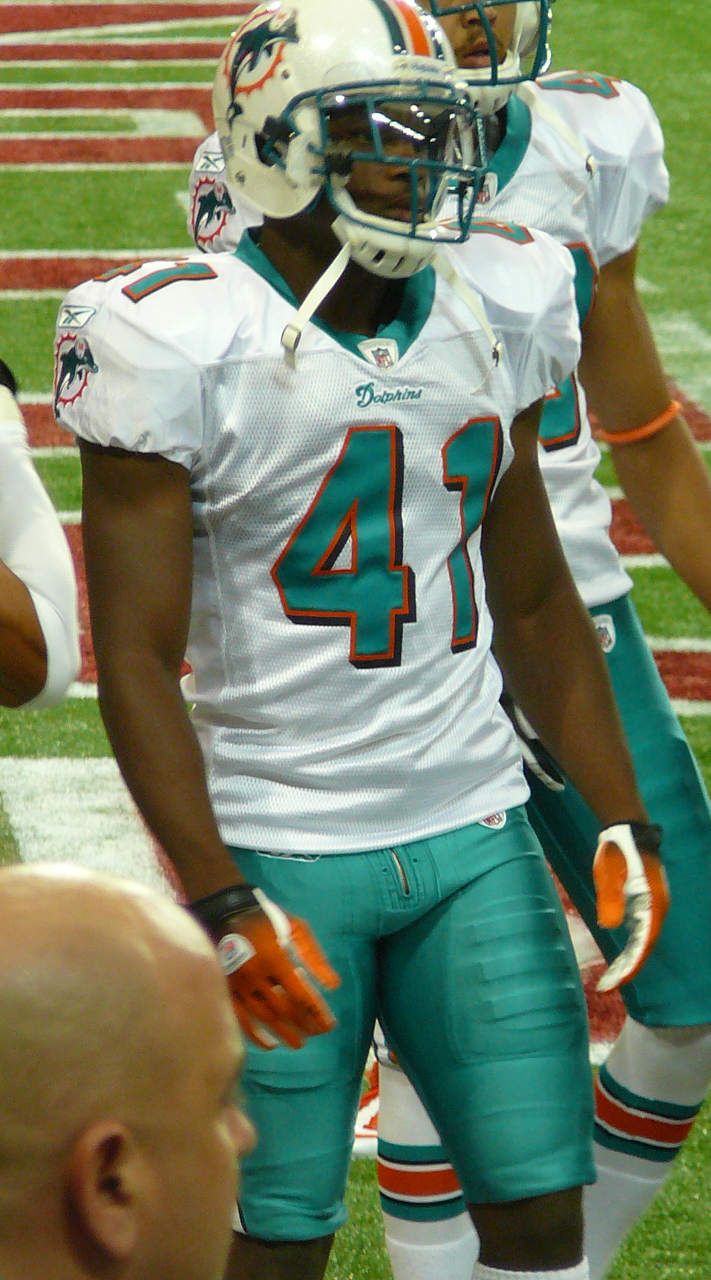
Safety and Brain Health
Football is a full-contact sport, and injuries are relatively common. Most injuries occur during training sessions, particularly ones that involve contact between players. To try to prevent injuries, players are required to wear a set of equipment. At a minimum players must wear a football helmet and a set of shoulder pads, but individual leagues may require additional padding such as thigh pads and guards, knee pads, chest protectors, and mouthguards. Most injuries occur in the lower extremities, particularly in the knee, but a significant number also affect the upper extremities. The most common types of injuries are strains, sprains, bruises, fractures, dislocations, and concussions.
Repeated concussions (and possibly sub-concussive head impacts) can increase a person’s risk in later life for CTE (chronic traumatic encephalopathy) and mental health issues such as dementia, Parkinson’s disease, and depression. Concussions are often caused by helmet-to-helmet or upper-body contact between opposing players, although helmets have prevented more serious injuries such as skull fractures. Various programs are aiming to reduce concussions by reducing the frequency of helmet-to-helmet hits; USA Football‘s “Heads Up Football” program is aiming to reduce concussions in youth football by teaching coaches and players about the signs of a concussion, the proper way to wear football equipment and ensure it fits, and proper tackling methods that avoid helmet-to-helmet contact. However, a study in the Orthopaedic Journal of Sports Medicine found that Heads Up Football was ineffective; the same study noted that more extensive reforms implemented by Pop Warner Little Scholars and its member teams were effective in significantly reducing concussion rates.
Airsoft is a competitive team shooting sport in which participants shoot opponents with spherical plastic projectiles launched via replica air weapons called airsoft guns.
Airsoft pellets, or BBs, do not typically mark their target, and hits are not always visibly apparent. Though the pellets can leave red marks or “welts” on exposed skin, the game relies heavily on an honor system in which the person who has been hit is responsible for calling themselves out.[1] Airsoft guns are typically magazine-fed, with some having replaceable compressed gas (e.g. propane, 1,1,1,2-Tetrafluoroethane/”green gas” or CO2) canisters. Many airsoft guns also have mounting platforms compatible with genuine firearm accessories, and more closely resemble real guns. This makes them popular for military simulation and historical reenactments.
History
Airsoft originated from Japan in the early 1970s, trademarked as “soft air guns”, tailoring to the needs of shooting enthusiasts while conforming to Japan’s strict gun control. The name “soft air” referred to the compressed Freon–silicone oil mixture (known as “green gas”) that was used as a propellant, which was significantly weaker than the carbon dioxide used in proper airguns. Originally designed for target shooting, their plastic pellets can be shot at humans without causing injury and this became popular for casual war-games.[5] Airsoft guns spread to the UK in the late 1980s and early 1990s with a company called LS. The guns were sold in pieces and had to be assembled before they were capable of firing pellets. Airsoft equipment was designed to closely emulate real guns. Since the mid-1980s, airsoft guns have been adapted with a purely recreational application in mind, and the sport is enjoyed by all ages. Airsoft replicas are produced globally, with the majority being manufactured in Asia. Many law enforcement agencies and military units within the United States now use Airsoft for force-on-force training drills.
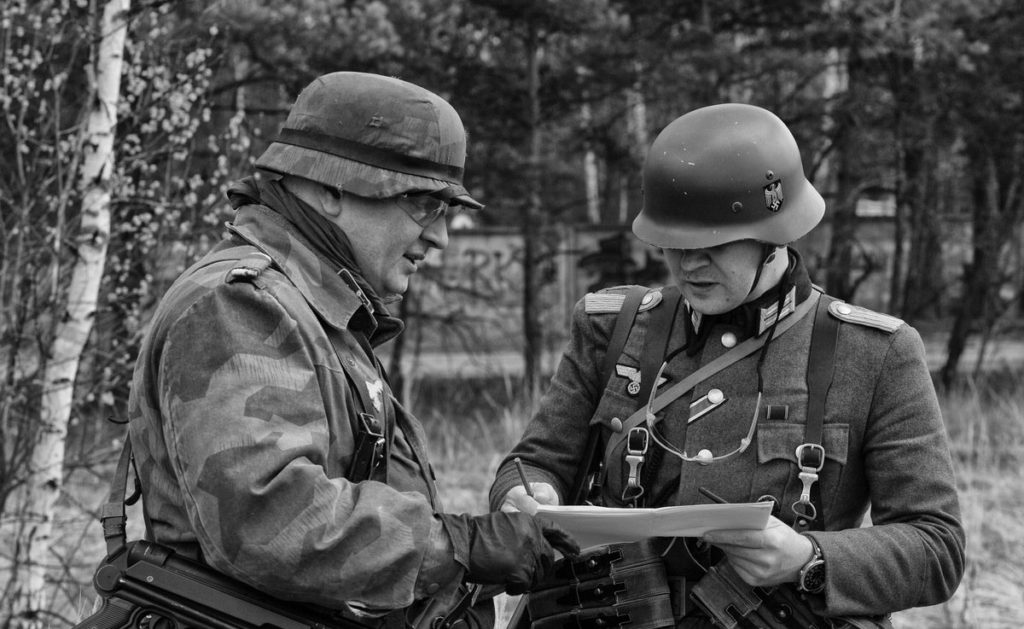
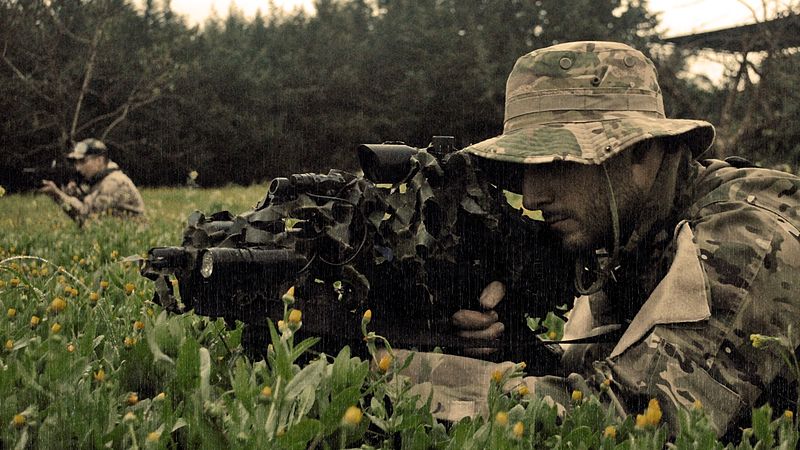
Safety
Many manufacturers and retailers suggest treating an airsoft gun like a real gun at all times. This will help alleviate safety issues resulting in an accidental/negligent discharge to an unknowing target or an airsoft gun being mistaken for a real firearm. Most manufacturers include an orange tip on the barrel of the airsoft gun for safety purposes. Manufacturers and retailers urge consumers to not remove the orange tip of the airsoft rifle as it is used to help distinguish them from a real firearm. The orange tip serves many purposes, one of them being for law enforcement to help discern airsoft guns from real firearms.
The minimum safe level of gear required to participate in most games includes a pair of ballistic eyewear ANSI Z87.1 (impact-rated) goggles to protect participants’ eyes. Traditional prescription glasses and sunglasses, or goggles not designed specifically for use with airsoft or paintball marker, may break or shatter upon being struck, causing injury to the eye. Airsoft guns are not to be confused with BB guns, which fire 4.5 millimeters (0.18 in) metal ball bearings.
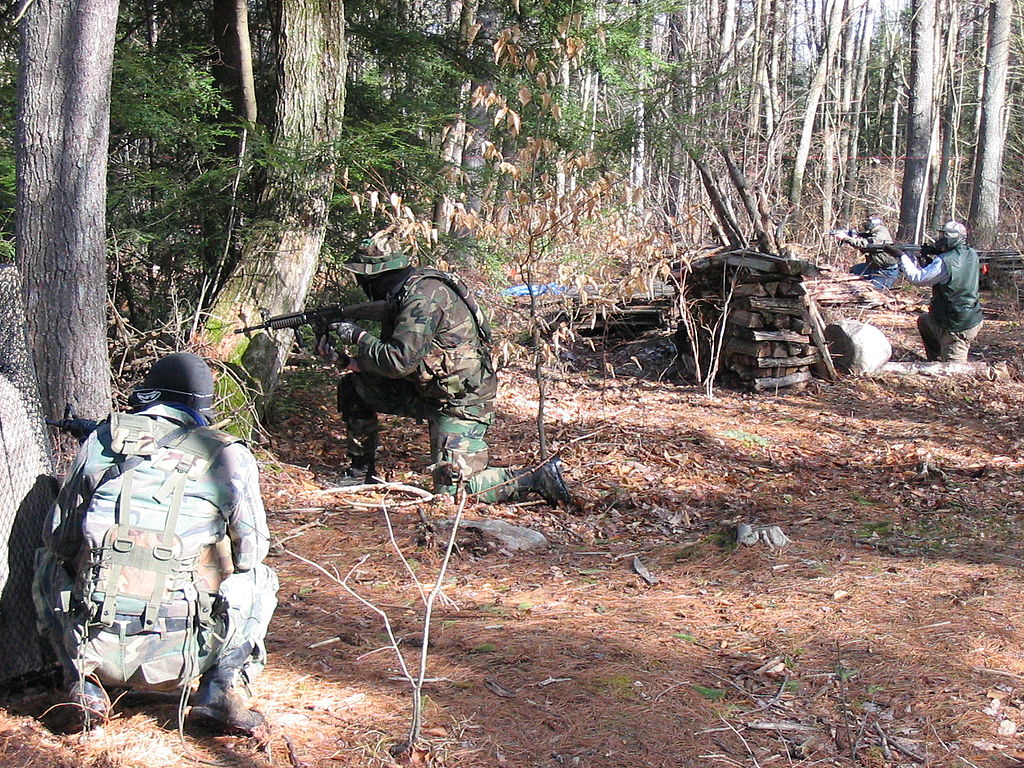
Air soft & Military
Airsoft technology is used in military training and law enforcement training. Due to airsoft’s realism, relatively safe projectiles, and economical ammunition, it is well-suited to war games and scenarios to train troops. Multiple airsoft inventions were developed originally for military and law enforcement use.
Marking rounds were invented by Kerry T. Bowden to allow trainees to see where each projectile landed. Much like paintball and simunitions, these marking pellets would break upon impact, marking the target with luminescent liquid. Unlike traditional plastic pellets, marking rounds are heavier to ensure breakage of the shell on impact. The weight can be adjusted by adding heavier liquid.Marking rounds are critical for trainees because they allow the shooter to see exactly where they hit the target. This allows them to extrapolate their mistakes and improve their aim.
Air racing is a highly specialised type of motorsport that involves airplanes or other types of aircraft that compete over a fixed course, with the winner either returning the shortest time, the one to complete it with the most points, or to come closest to a previously estimated time.
History
Air racing is a highly specialised type of motorsport that involves airplanes or other types of aircraft that compete over a fixed course, with the winner either returning the shortest time, the one to complete it with the most points, or to come closest to a previously estimated time.
The first ‘heavier-than-air’ air race was held on 23 May 1909 – the Prix de Lagatinerie, at the Port-Aviation airport south of Paris, France. Four pilots entered the race, two started, but nobody completed the full race distance; though this was not unexpected, as the rules specified that whoever travelled furthest would be the winner if no-one completed the race. Léon Delagrange, who covered slightly more than half of the ten 1.2-kilometre(0.75 mi; 0.65 nmi) laps was declared the winner.
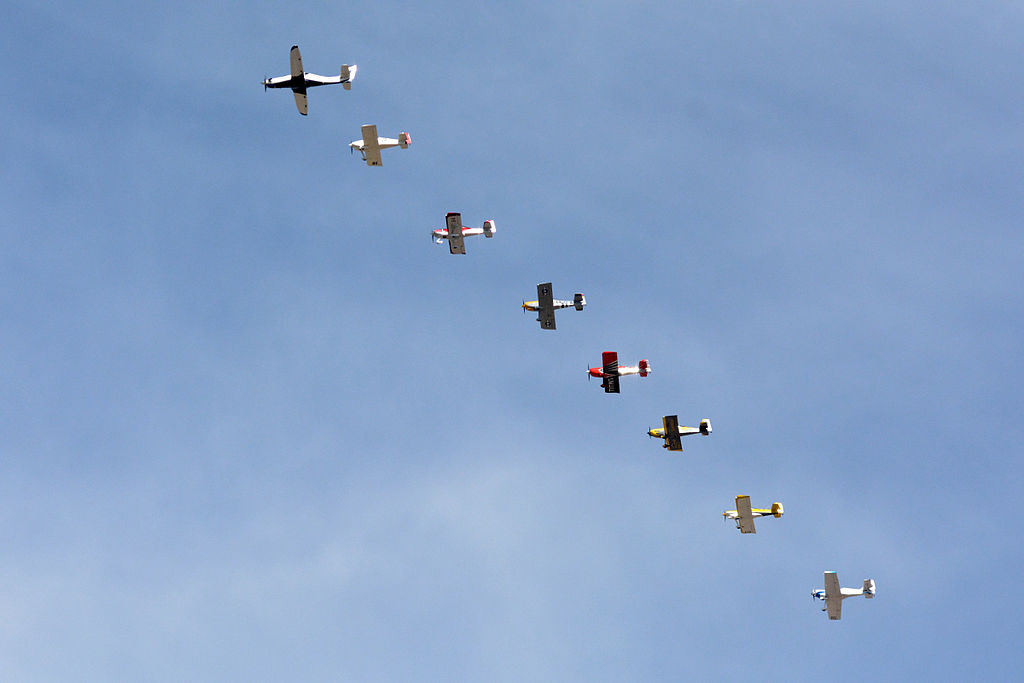
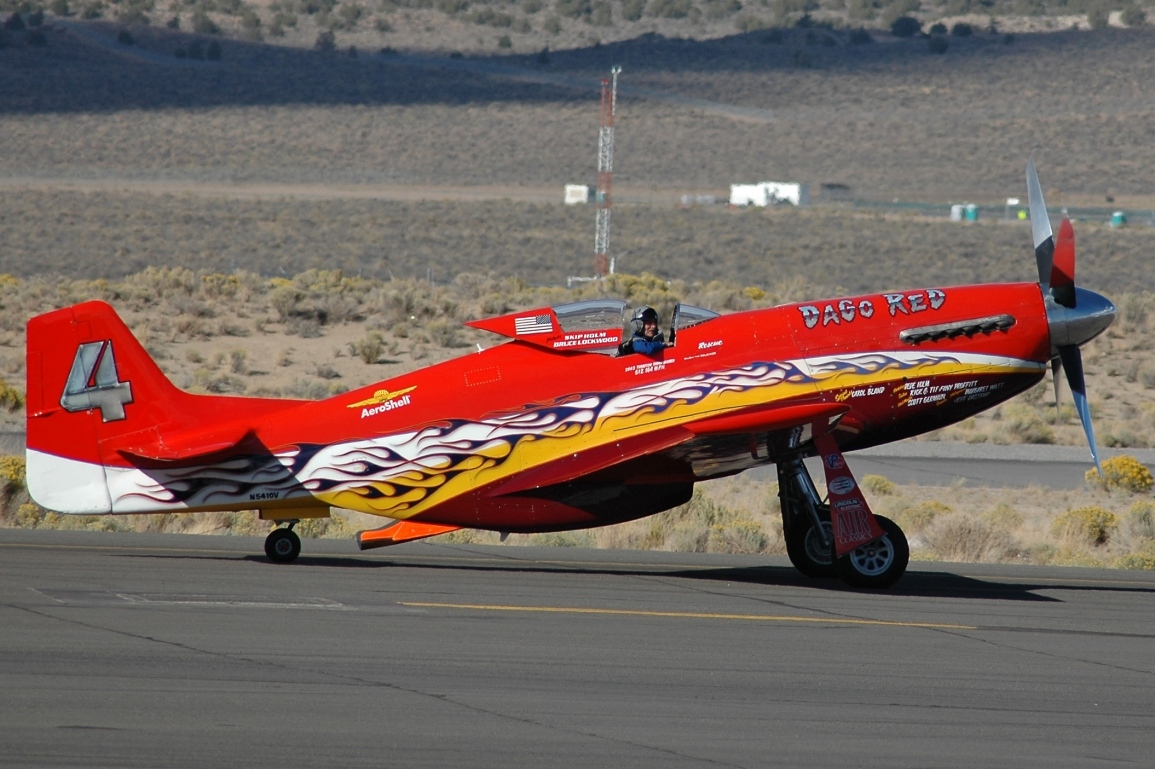
List of Racing Aircrafts

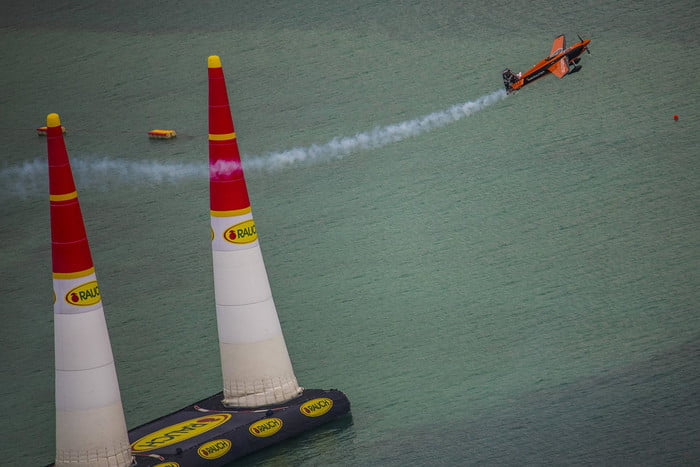
Benefits
Like other forms of exercise, step aerobics helps burn calories and fat. The number of calories burned depends on the speed of movements, step height, length of exercise, and the persons height and weight.
Championships
In 1934, the MacRobertson Air Race from England to Australia took place, with the winning de Havilland Comet flown by C. W. A. Scott and Tom Campbell Black.
In 1964, Bill Stead, a Nevada rancher, pilot, and unlimited hydroplane racing champion, organised the first Reno Air Races at a small dirt strip called the Sky Ranch, located between Sparks, Nevada, and Pyramid Lake. The National Championship Air Races were soon moved to the Reno Stead Airport, and have been held there every September since 1966.
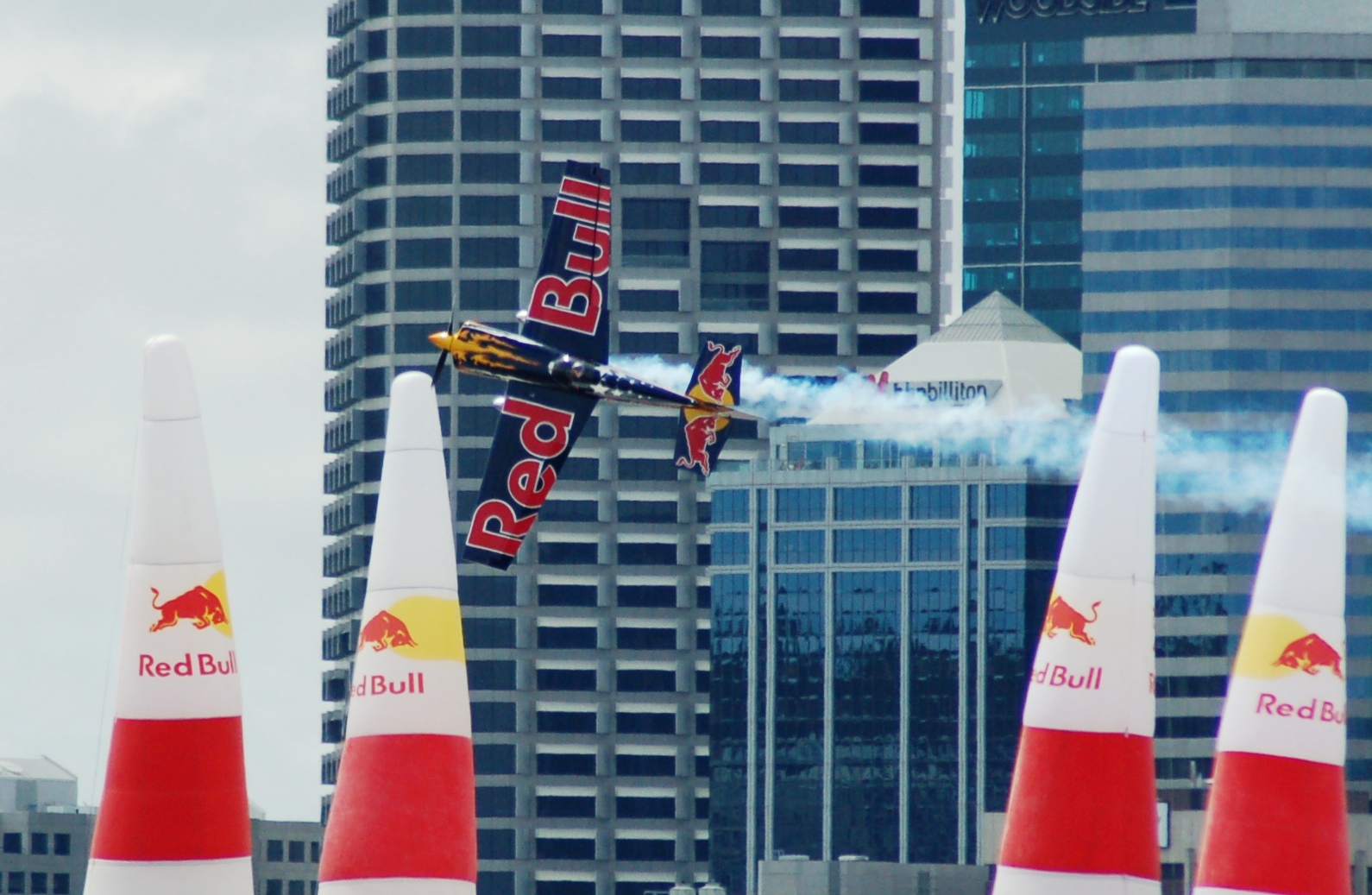
Air hockey is a game where two players play against each other on a low-friction table. Air hockey requires an air-hockey table, two player-held strikers, and a puck.
Air Hockey table has very smooth and slippery surface which reduces friction by suspending the puck on cushion of air, so that this its motion is much less altered by friction, causing it to glide in a straight line at relatively constant velocity across the table.
History
Air hockey was invented by a group of Brunswick Billiards employees from 1969 to 1972. In 1969, a trio of Brunswick engineers – Phil Crossman, Bob Kenrick, and Brad Baldwin – began work on creating a game using a frictionless surface. The project stagnated for several years until it was revived by Bob Lemieux, who then focused on implementing an abstracted version of ice hockey, with a thin disk, two strikers and slit-like goals equipped with photodetectors. It was then decided that the game might appeal to a larger market and air hockey was marketed and sold to the general public. The original patents reference Crossman, Kendrick, and Lemieux. It should also be noted that the air table proper had already been patented before Brunswick’s project, though for unrelated purposes.
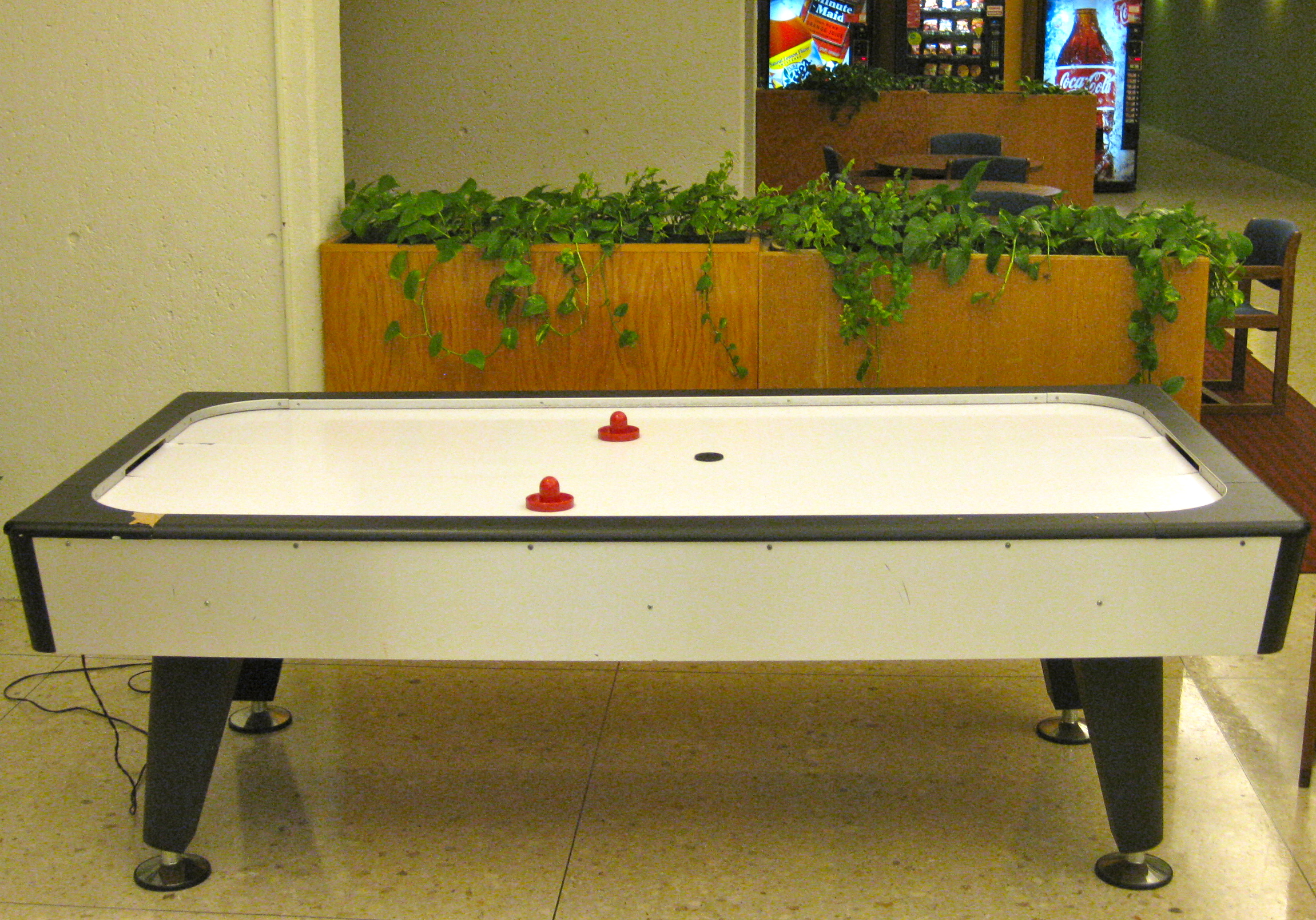
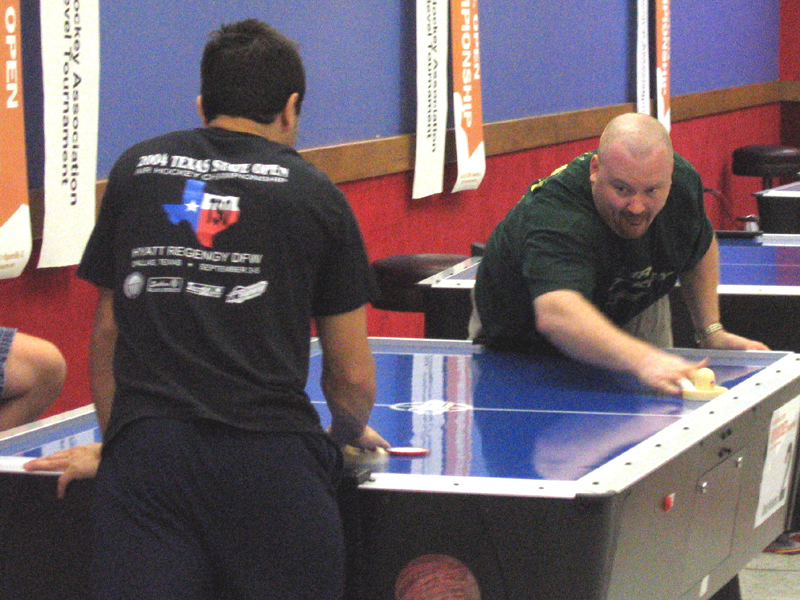
Moves & Techniques
Competitive (tournament) play is usually distinguished by the following:
- The striker is gripped behind the knob using one’s fingertips, not on top of it. This allows more wrist action and helps the player to move the striker around the table faster.
- For basic defense, the striker is kept centered at least 8 inches out from the goal. In this position, very slight movements to the left and right will block virtually all straight shots. To block bank shots, one pulls back quickly to the corners of the goal. This is known as the “triangle defense”.
- Shots are often hit out of “drifts”, where the puck travels in set patterns designed to throw off the opponent’s expectations and timing. The most popular drifts are the “center”, “diamond”, “diagonal”, and “L”.
- Shots are often organized into meaning groups of shots which are hit with the same apparent delivery but opposite directions, caused by hitting the puck at slightly different locations on the striker. For example, a transverse motion of the right arm can lead to a “cut shot” to the left corner of the opponent’s goal or a “right wall under” (bank off the right wall, into the right corner of the opponent’s goal).

Formation of FIBA
Since its inception, the USAA has sanctioned at least one national-level or World championship each year, crowning 12 different champions over 30 years. In March 2015, the Air Hockey Players Association (AHPA) was announced and is providing air hockey players with an additional organization also overseeing the sport of air hockey. The two organizations run independently but abide by a similar set of rules and share many of the same players. In July 2015, the AHPA crowned not only its first world champion but also the youngest in the history of the sport in Colin Cummings of Beaumont, TX. Today, professional air hockey is played by a close-knit community of serious players around the world, with extensive player bases near Houston, San Francisco, Sacramento, Los Angeles, San Diego, Denver, Chicago, New York City, and Boston in the United States of America, Barcelona in Spain, Saint Petersburg, Moscow, and Novgorod in Russia. and Most and Brno in the Czech Republic. From the late 1980s, Caracas, Venezuela served as a hotbed of activity; three-time World Champion Jose Mora and other finalists originated from there. By 1999 most of the Venezuelan activity had disappeared.
Aerobics is a form of physical exercise that combines rhythmic aerobic exercise with stretching and strength training routines with the goal of improving all elements of fitness (flexibility, muscular strength, and cardio-vascular fitness). It is usually performed to music and may be practiced in a group setting led by an instructor (fitness professional), although it can be done solo and without musical accompaniment. With the goal of preventing illness and promoting physical fitness, practitioners perform various routines comprising a number of different dance-like exercises. Formal aerobics classes are divided into different levels of intensity and complexity. A well-balanced aerobics class will have five components: warm-up (5–10 minutes), cardio vascular conditioning (25–30 minutes), muscular strength and conditioning (10–15 minutes), cool-down (5–8 minutes) and stretching and flexibility (5–8 minutes). Aerobics classes may allow participants to select their level of participation according to their fitness level. Many gyms offer a variety of aerobic classes. Each class is designed for a certain level of experience and taught by a certified instructor with a specialty area related to their particular class.
History
Both the term and the specific exercise method were developed by Dr Kenneth H. Cooper, an exercise physiologist, and Col. Pauline Potts, a physical therapist, both of the United States Air Force. Cooper, an exercise enthusiast, was puzzled about why some people with good muscular strength were prone to perform poorly at activities such as long-distance running, swimming, and bicycling. He began using a bicycle ergometer to measure sustained performance in terms of a person’s ability to use oxygen. In 1968, he published Aerobics, which included exercise programs using running, walking, swimming and bicycling. At the time the book was published there was increasing awareness of the need for increased exercise due to widespread weakness and inactivity. Cooper published a mass-market version “The New Aerobics” in 1979.
Aerobics gained worldwide popularity after the release of Jane Fonda‘s exercise videos in 1982.
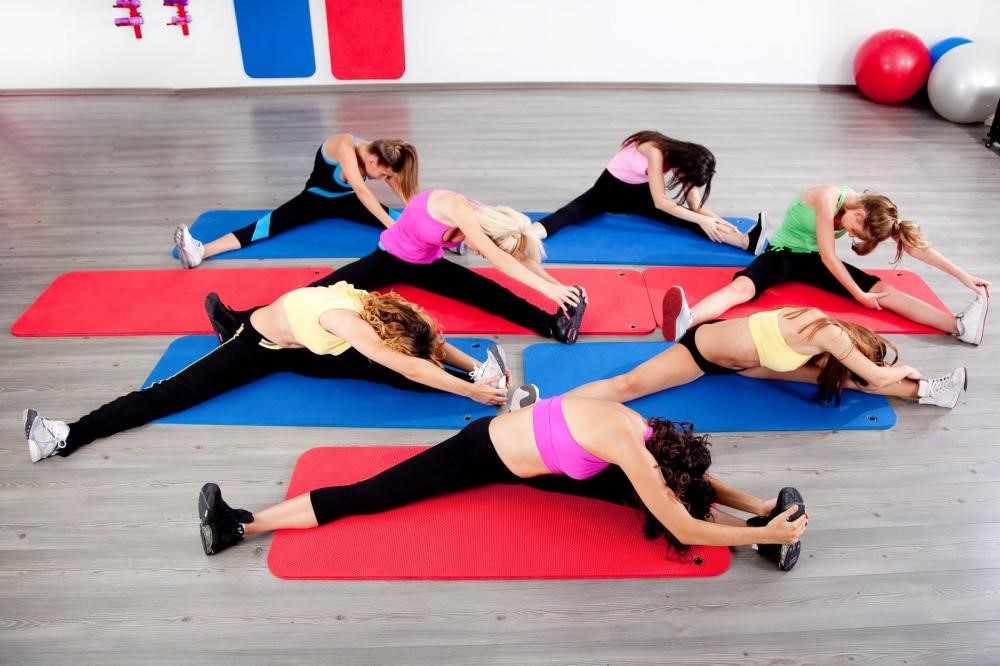

Moves & Techniques:
Often moves are referred to as Reebok step moves in reference to one of the first makers of the plastic step commonly used in gyms.
The “basic” step involves raising one foot onto the step, then the other so that they are both on the step, then stepping the first foot back, followed by the second. A “right basic” would involve stepping right foot up, then the left, then returning to the floor alternating right then left.
Some instructors switch immediately between different moves, for example between a right basic and a left basic without any intervening moves, effectively “tapping” the foot without shifting weight; tap-free or smooth stepping alternates the feet without “taps”.
Common moves include:
- Basic Step
- Corner knee (or corner kick)
- Repeater knee (aka Triple knee)
- T-Step
- Over-the-Top
- Lunges
- V-Step
- Straddle Down
- L-Step
- Split Step
- I-Step
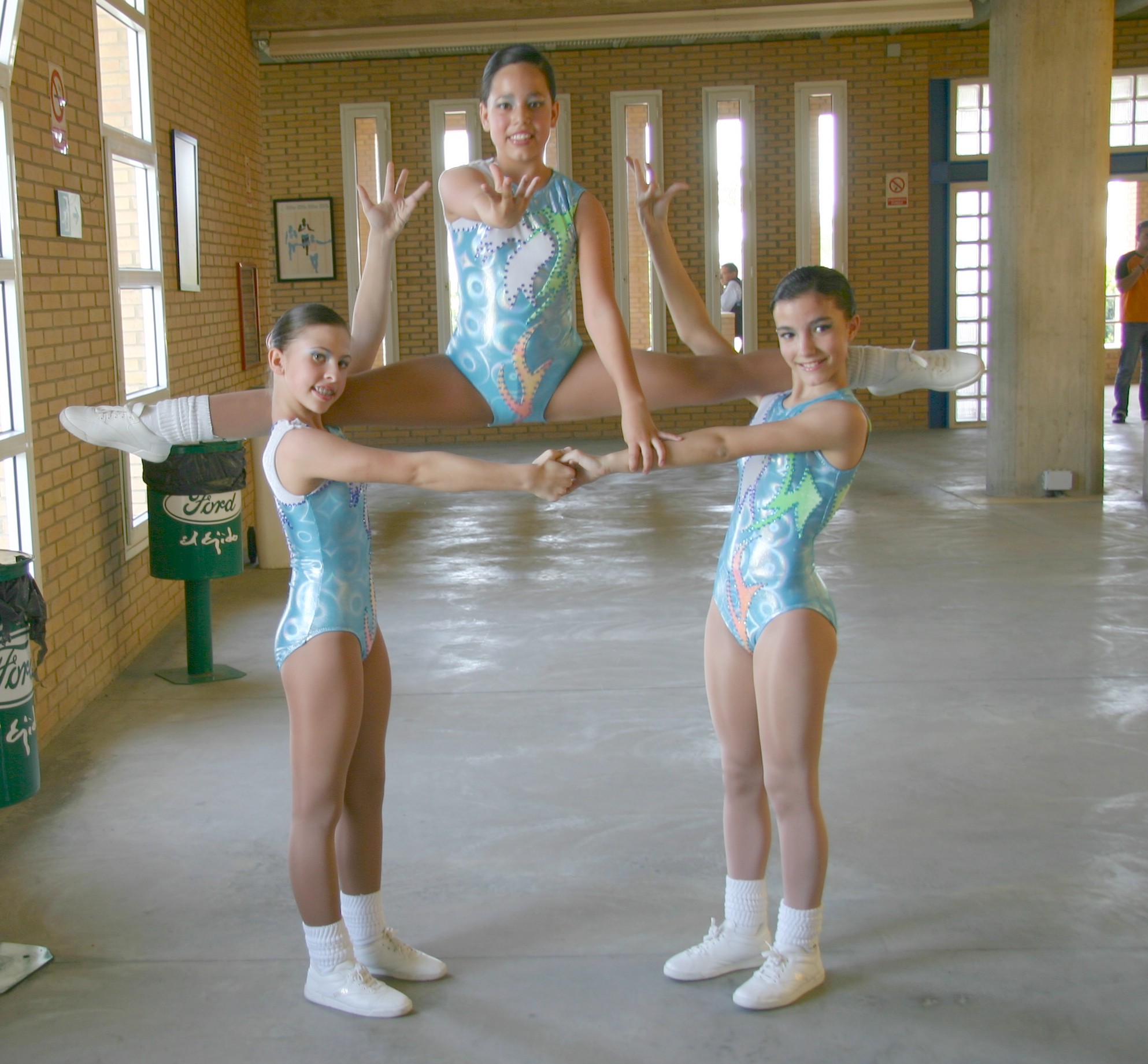
Associations
Like other forms of exercise, step aerobics helps burn calories and fat. The number of calories burned depends on the speed of movements, step height, length of exercise, and the persons height and weight.
Championships
The National Aerobic Championships is a competition of aerobic gymnastics started in 1984 in the United States. Founded by Sport Fitness International, it was the first major championships in the sport predating the Aerobic Gymnastics World Championships by 11 years. From 1988 onwards the individual events were separated by gender. The sport became popular around the world after it gained popularity in the USA when major championships were aired on ESPN during the height of the fitness movement in the USA.
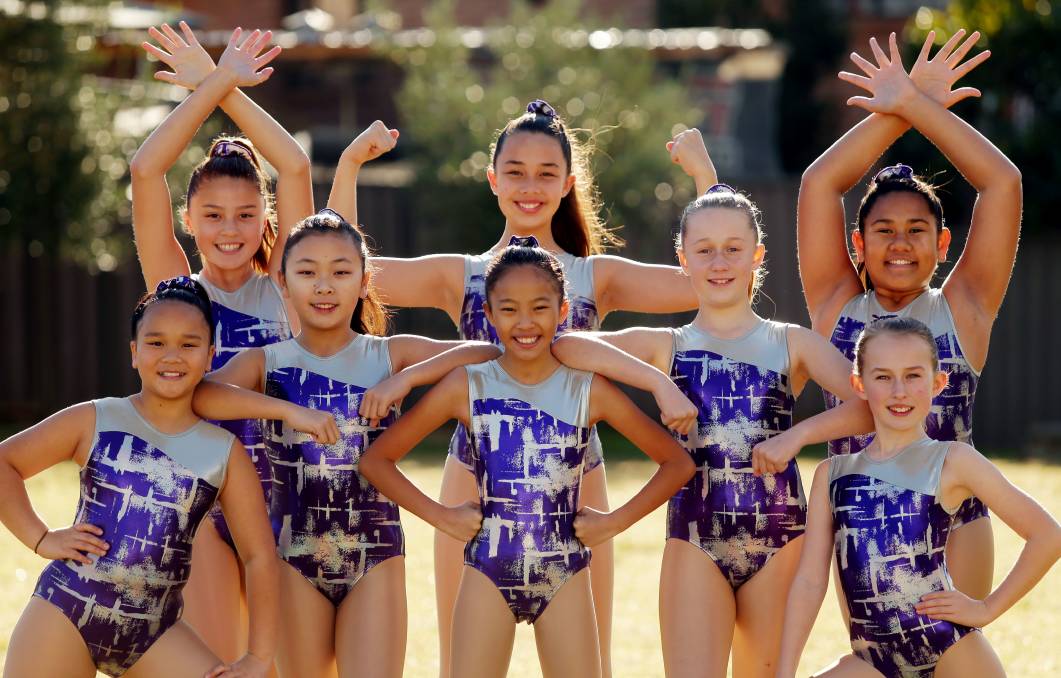
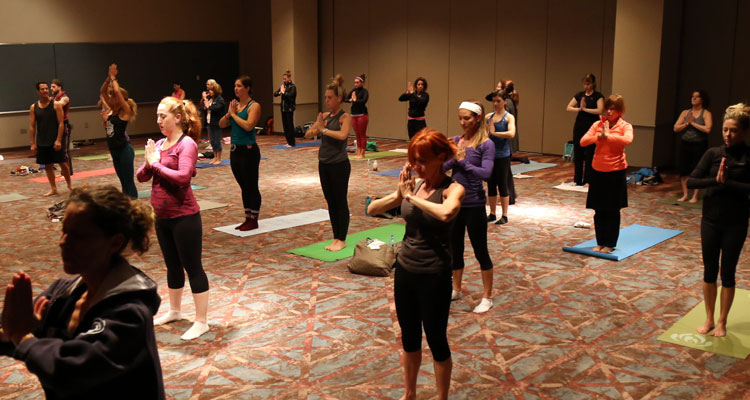
Formation of FISAF
The Federation of International Sports, Aerobics and Fitness (FISAF) is an international non-profit “umbrella organization” active in over 40 countries. It is self-described as “the largest fitness industry organisation in the world” and “the largest instructor certification agency in the world”.




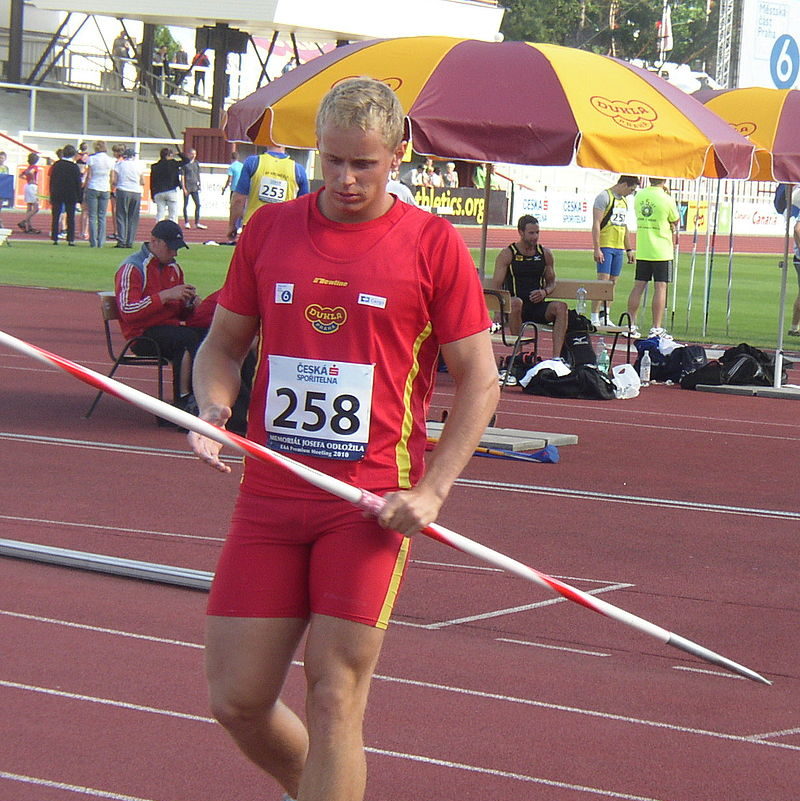



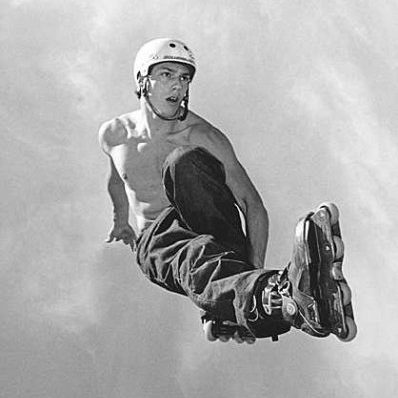


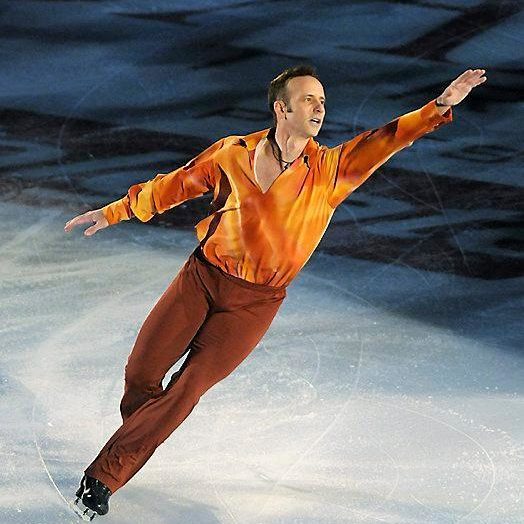
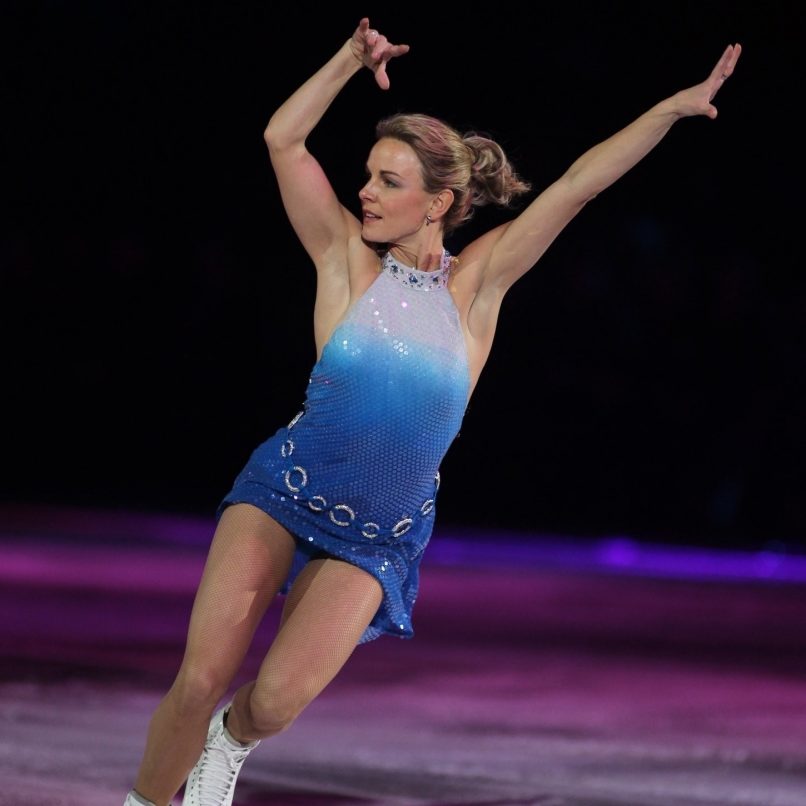
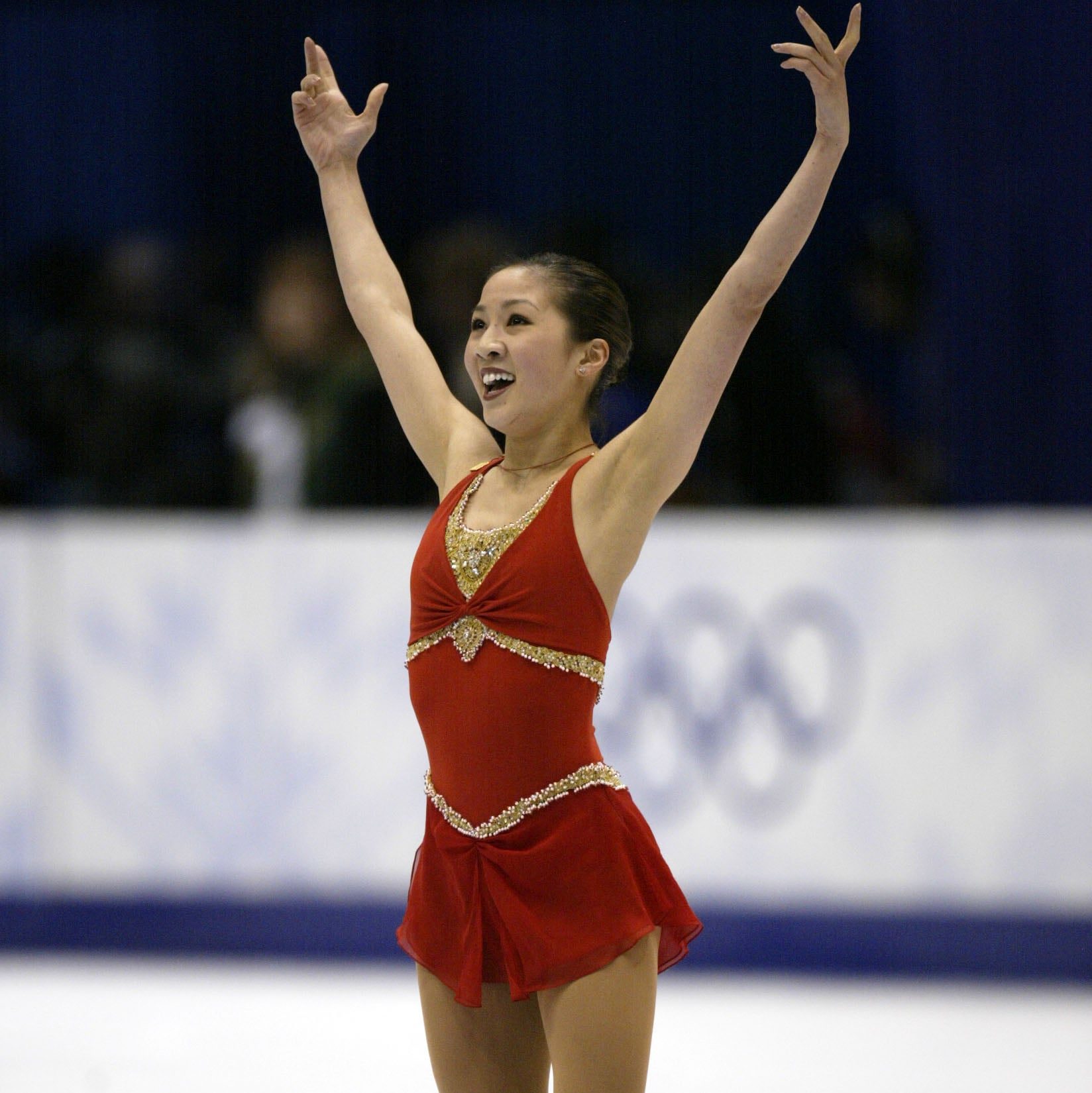
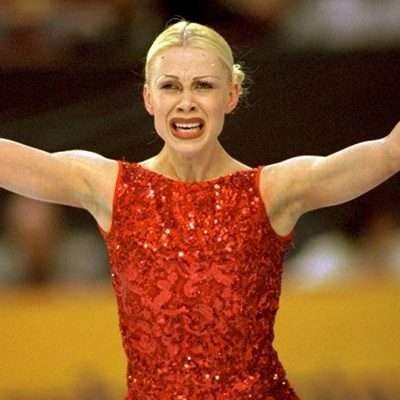
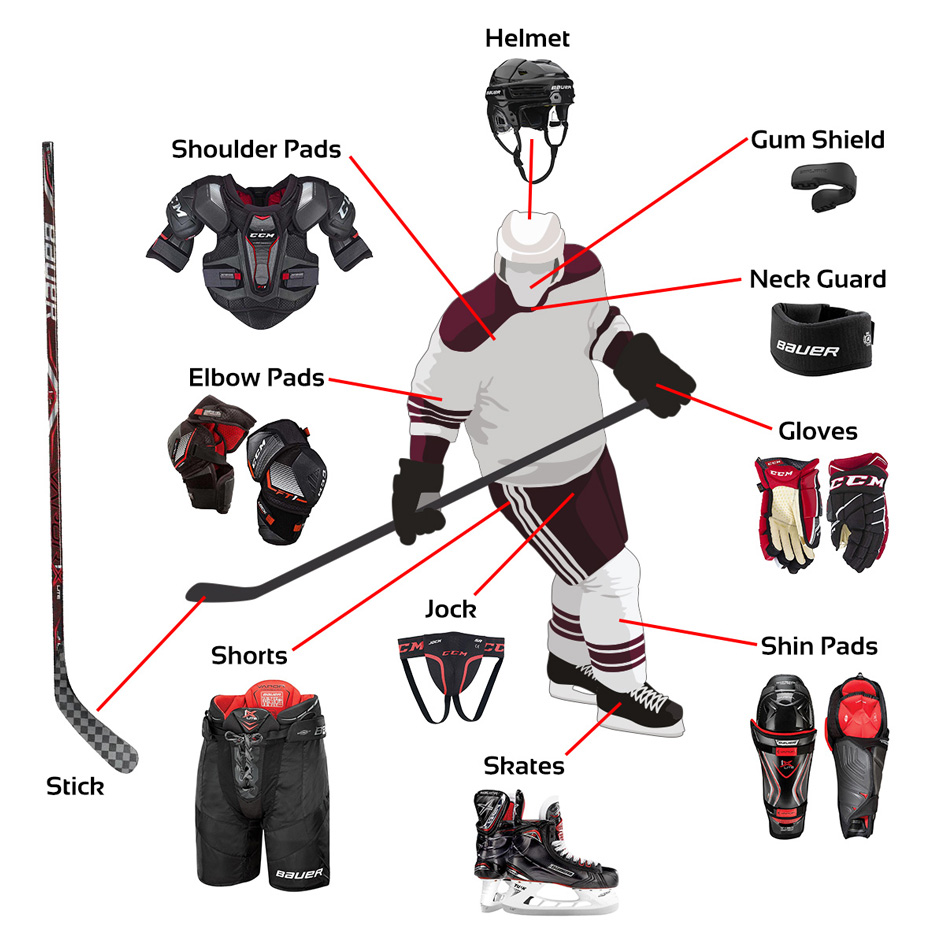










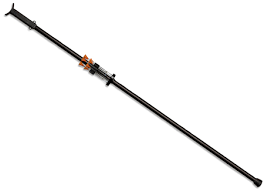
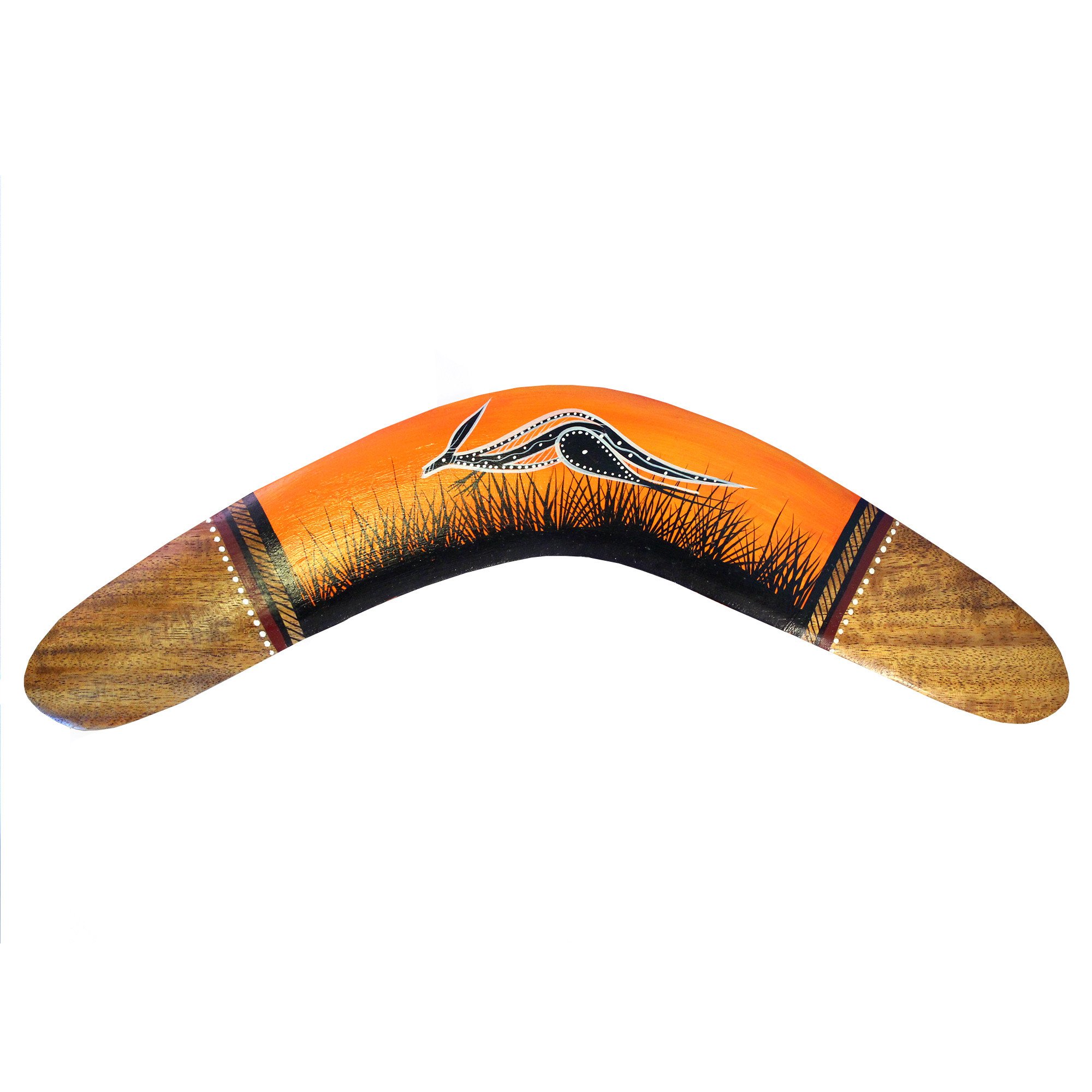
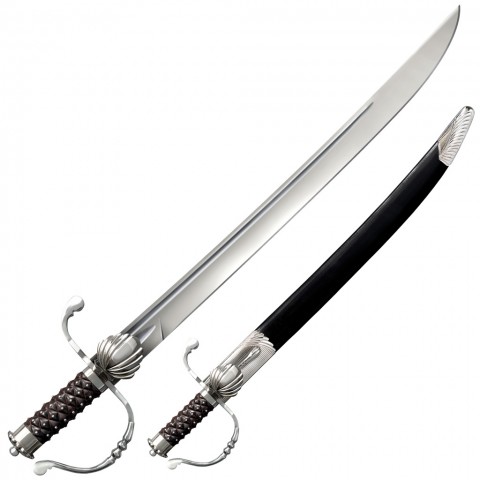
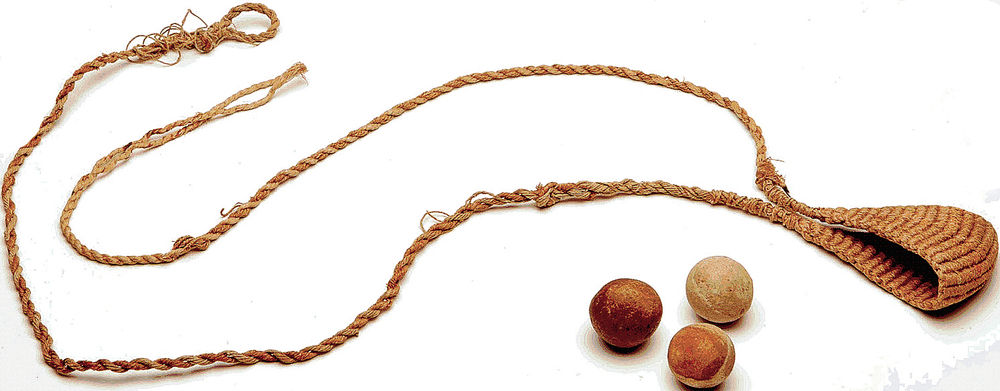
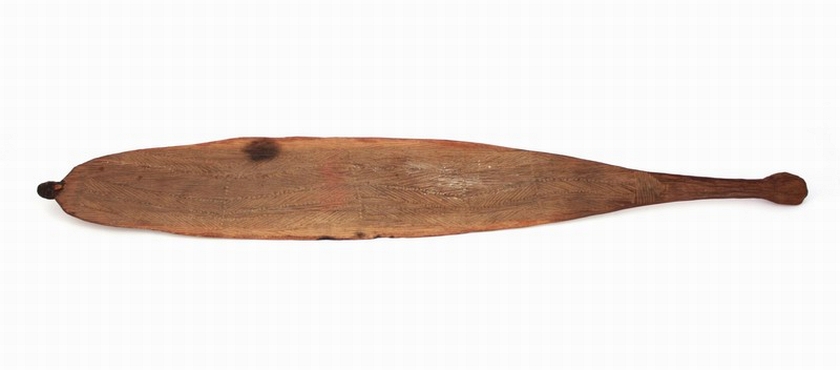


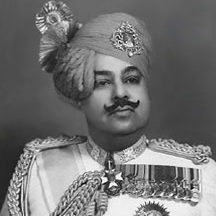













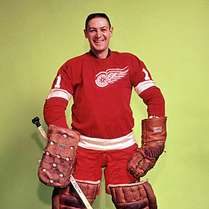







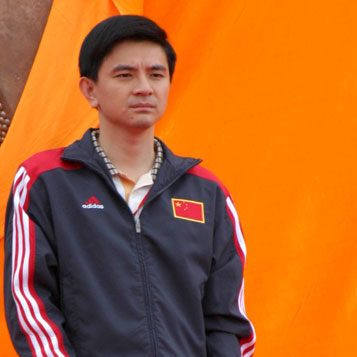












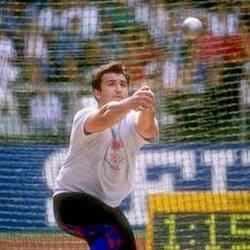







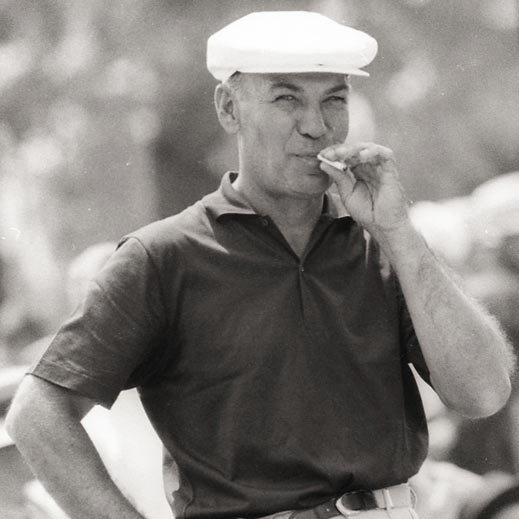



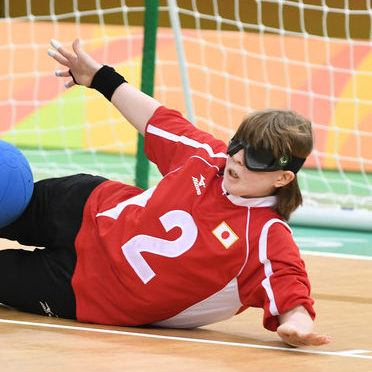
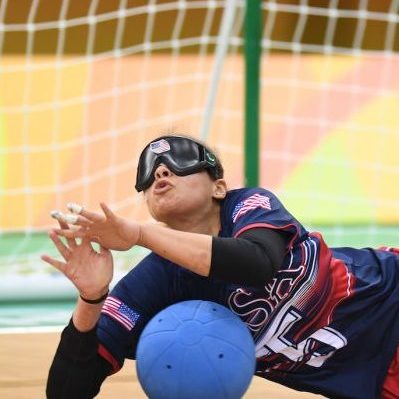



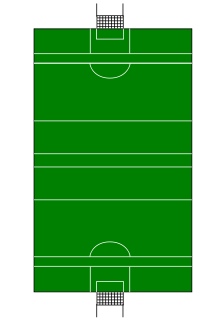




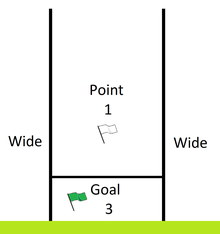






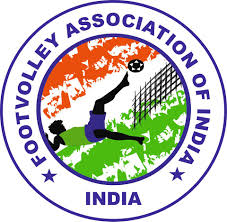




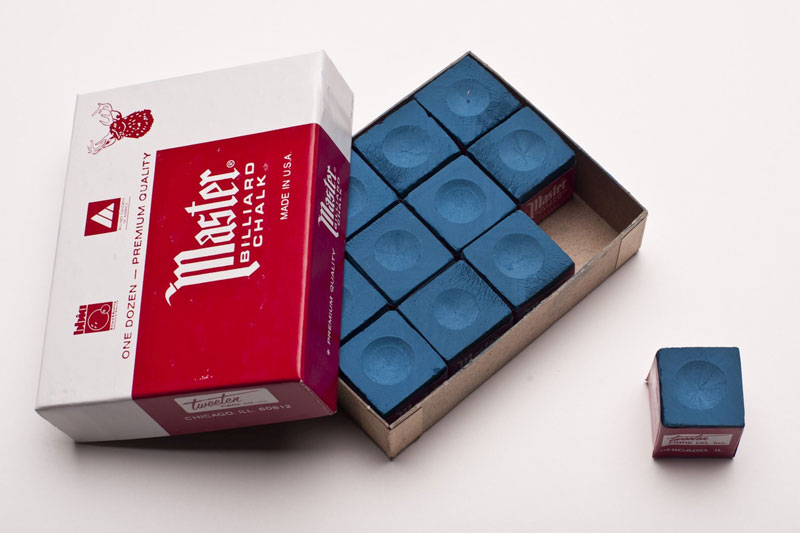
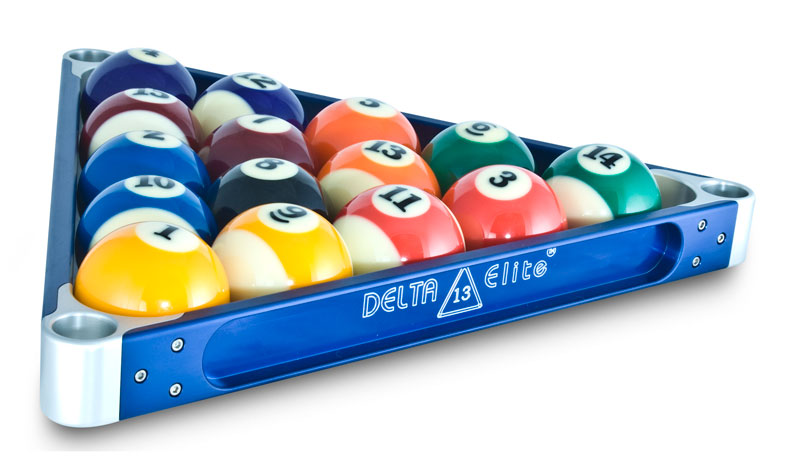
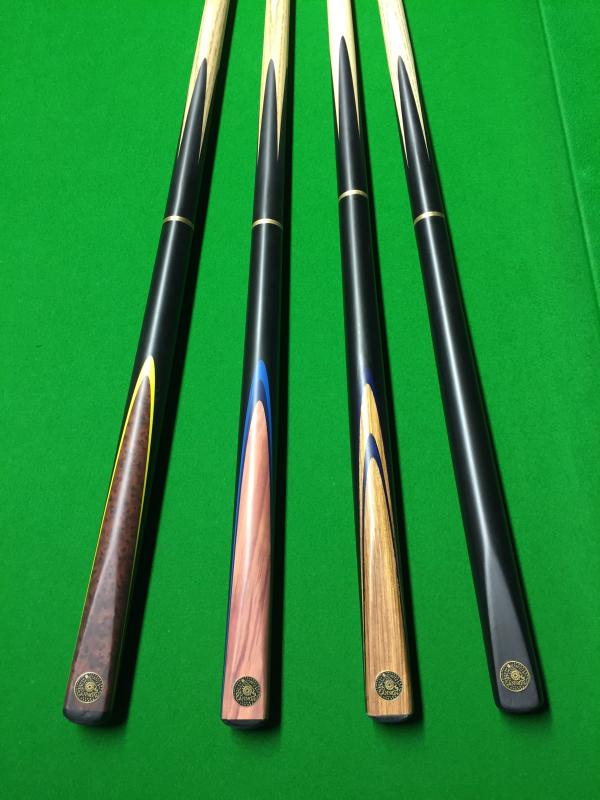


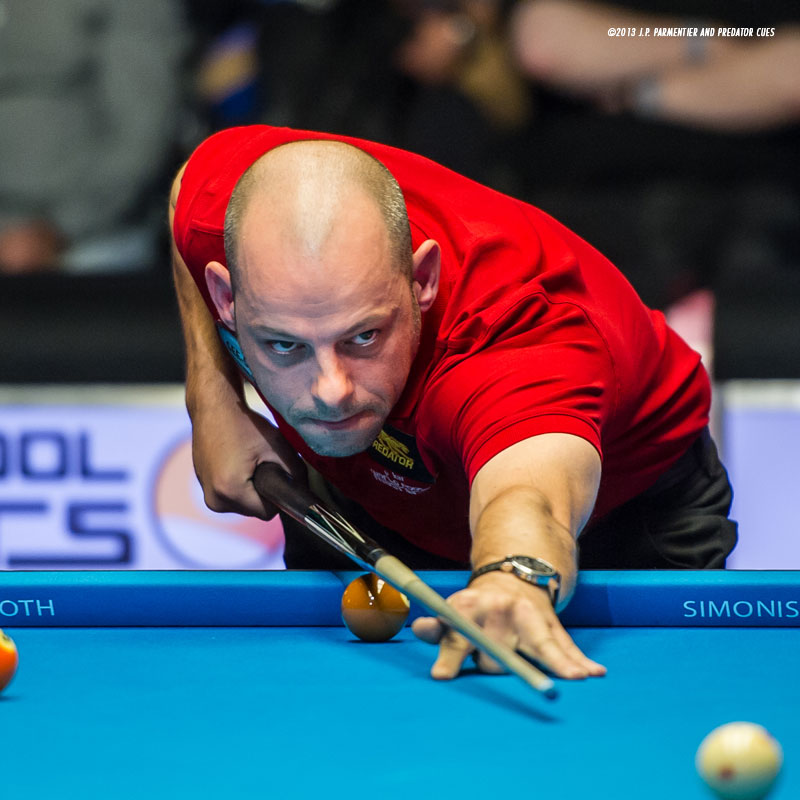
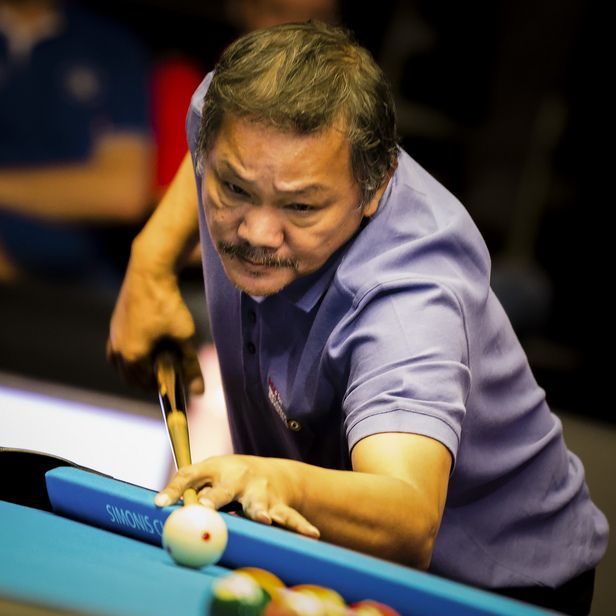

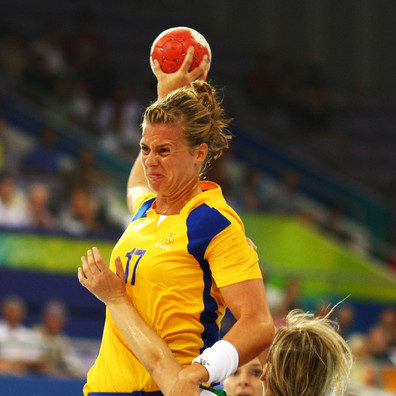

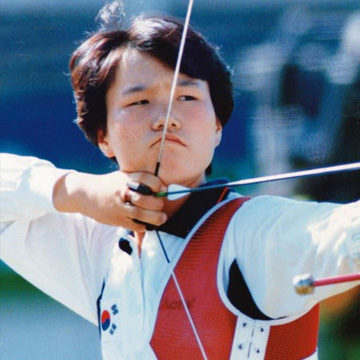
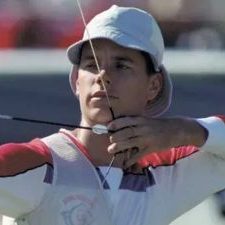
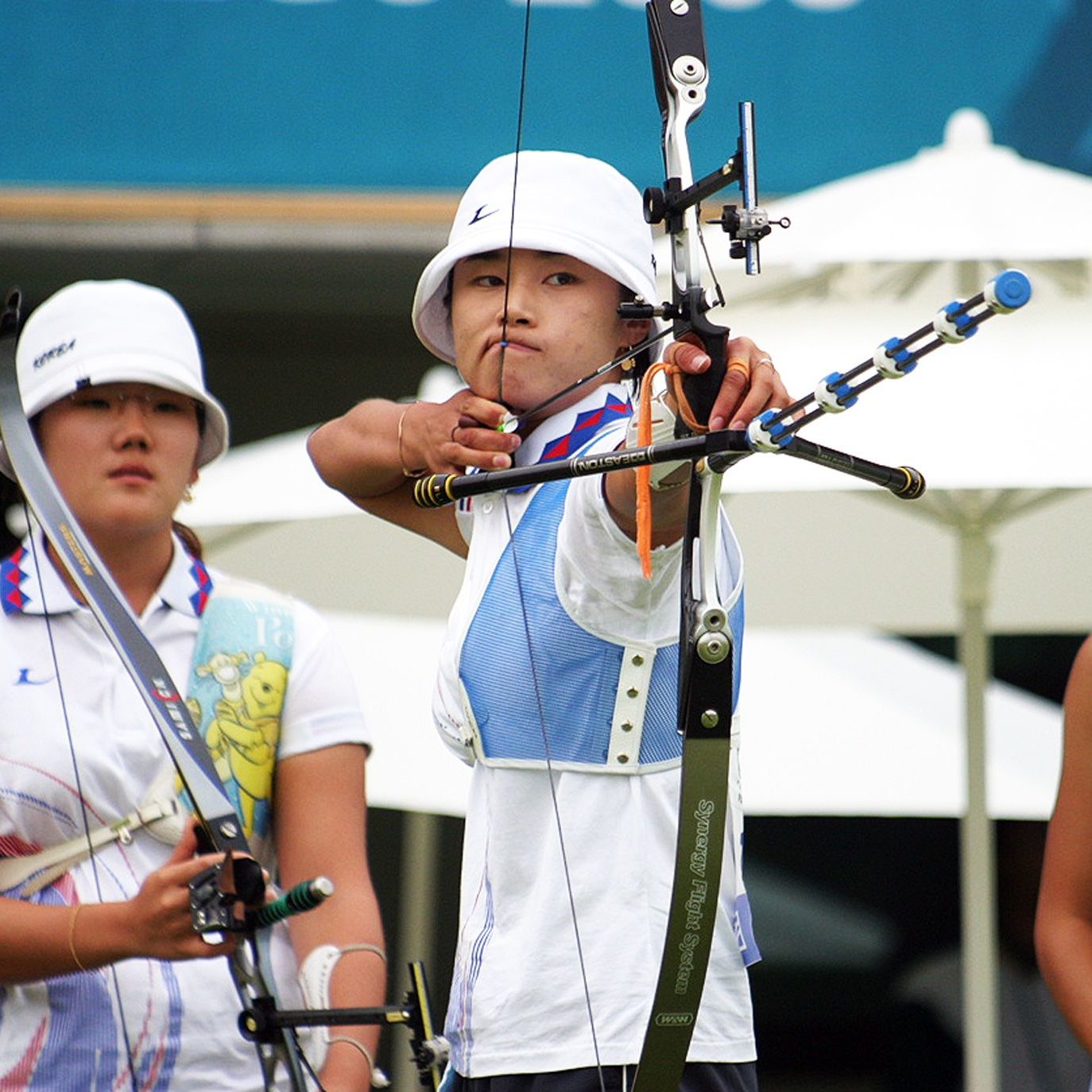
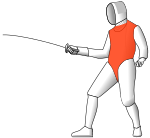

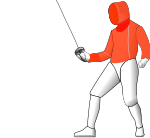

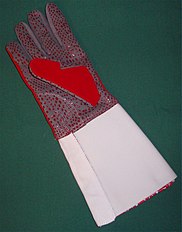


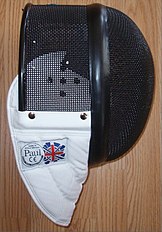

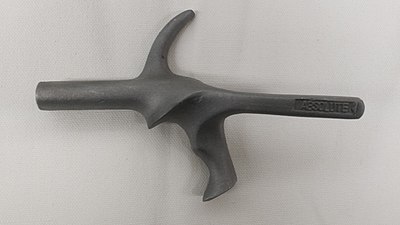


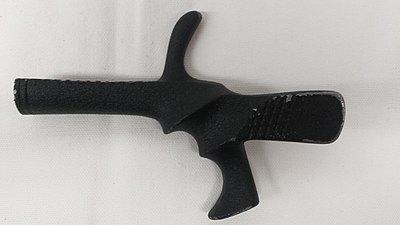
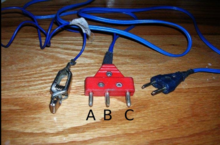
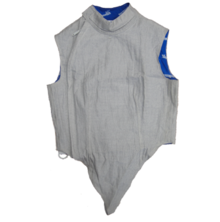




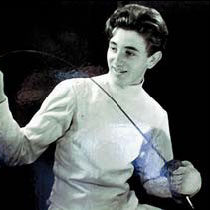


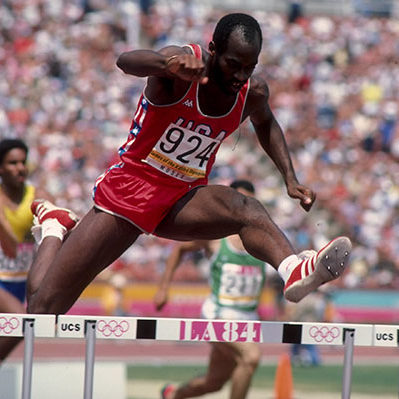
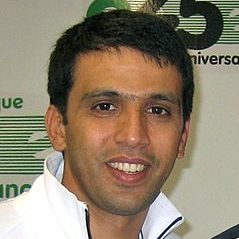





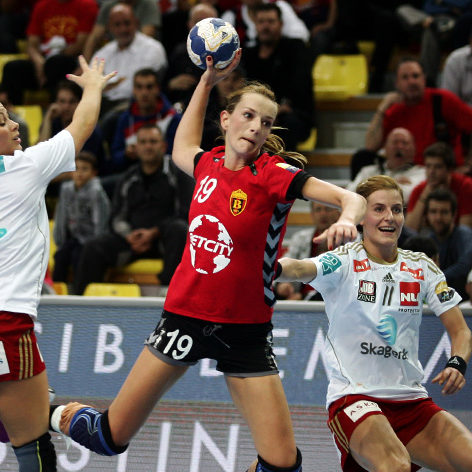


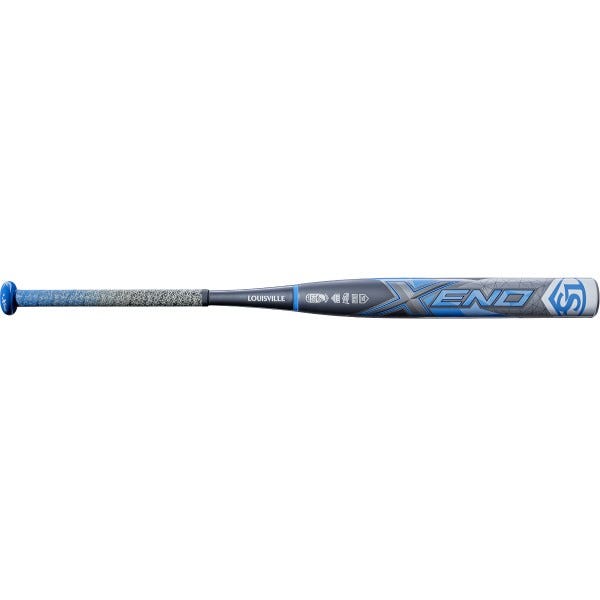



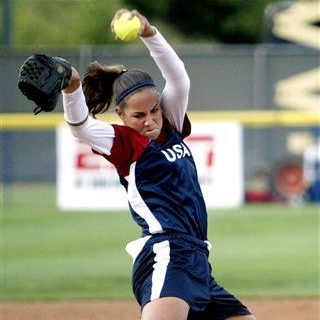
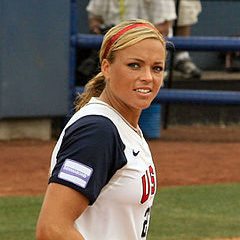
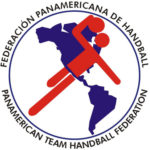

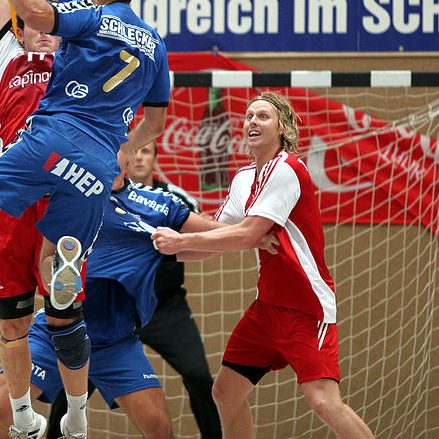


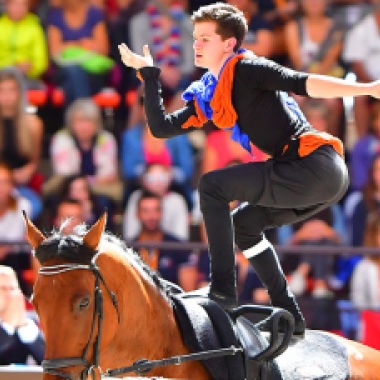
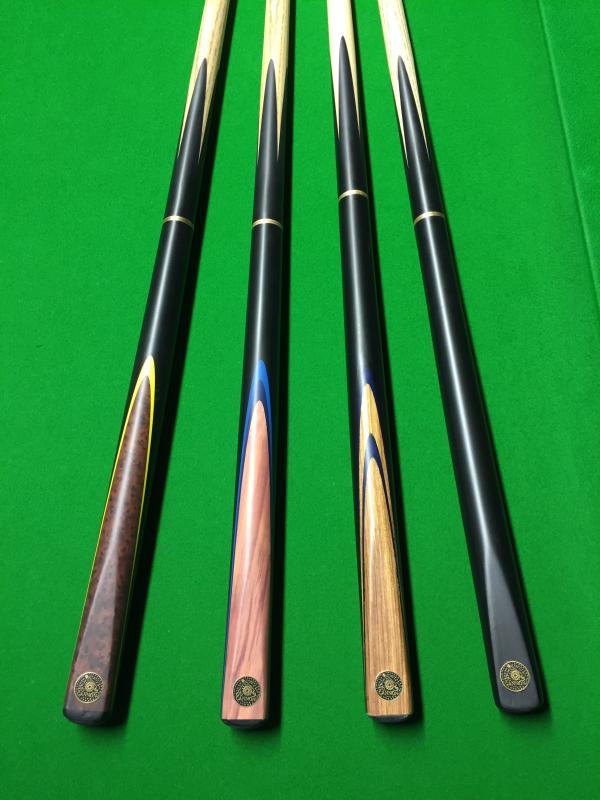
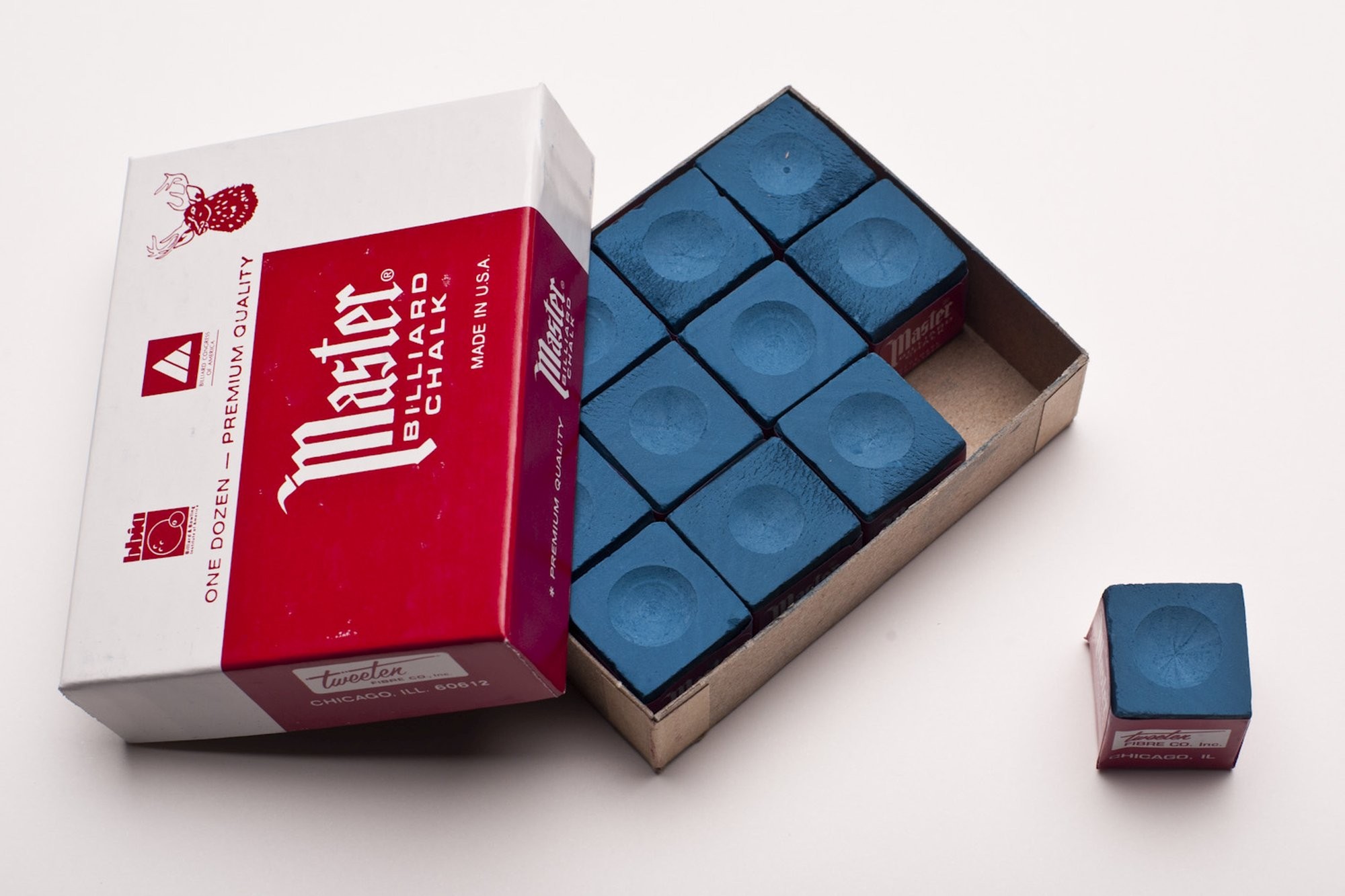
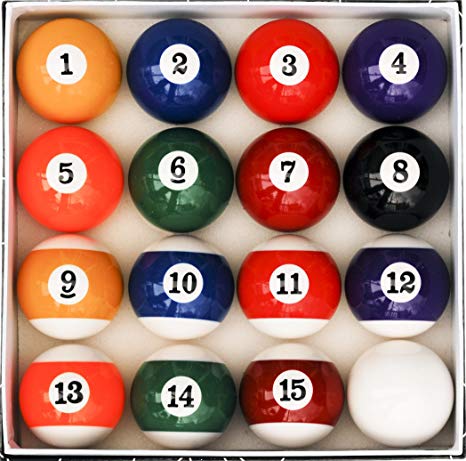
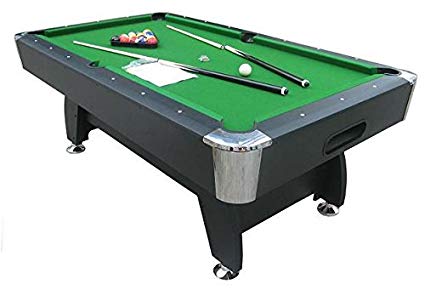
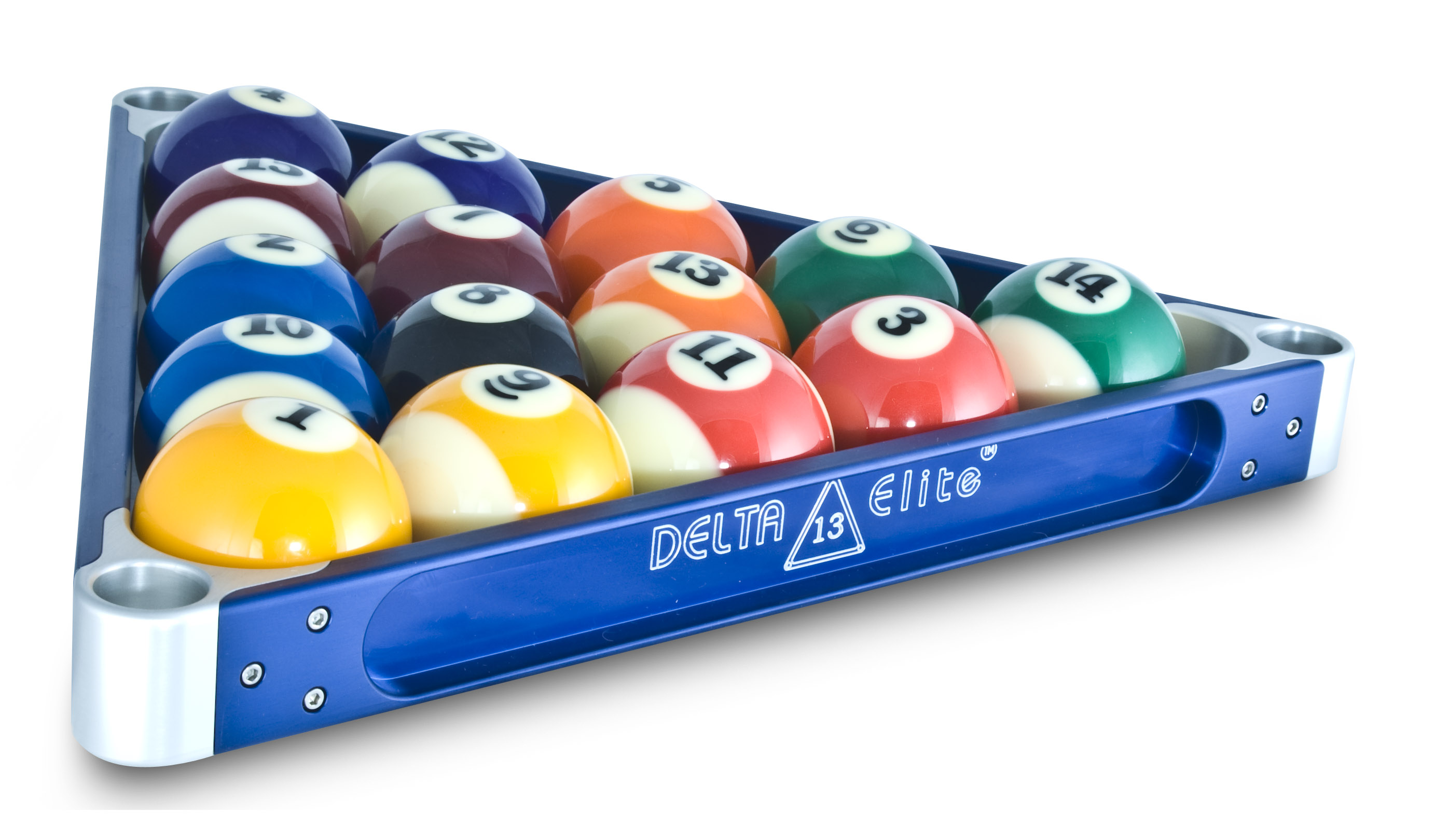
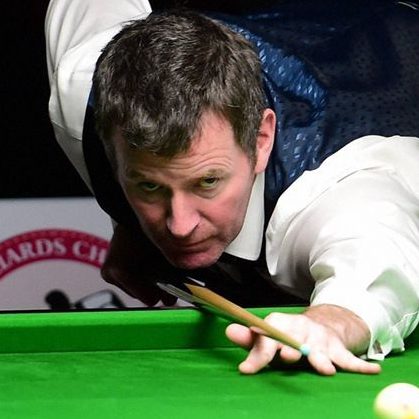
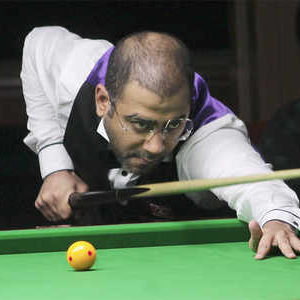






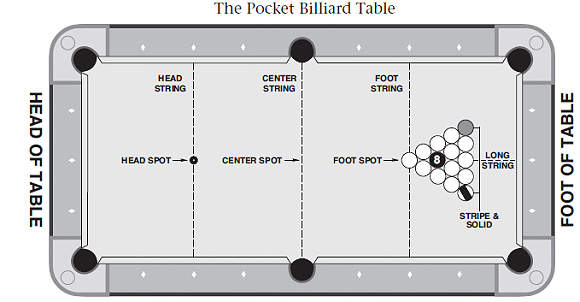
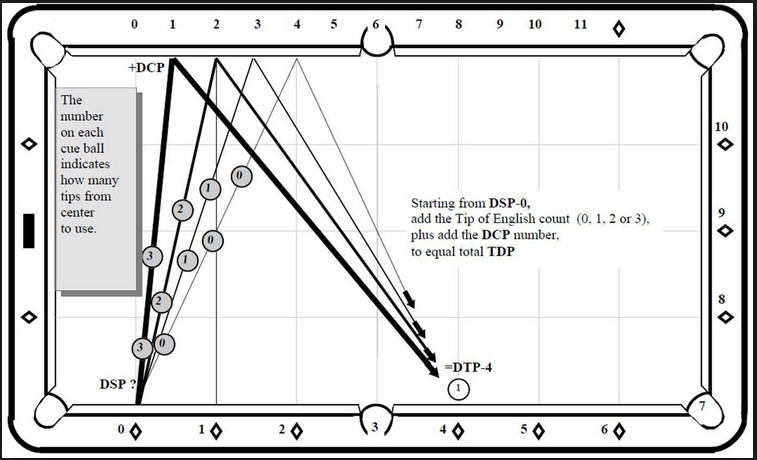
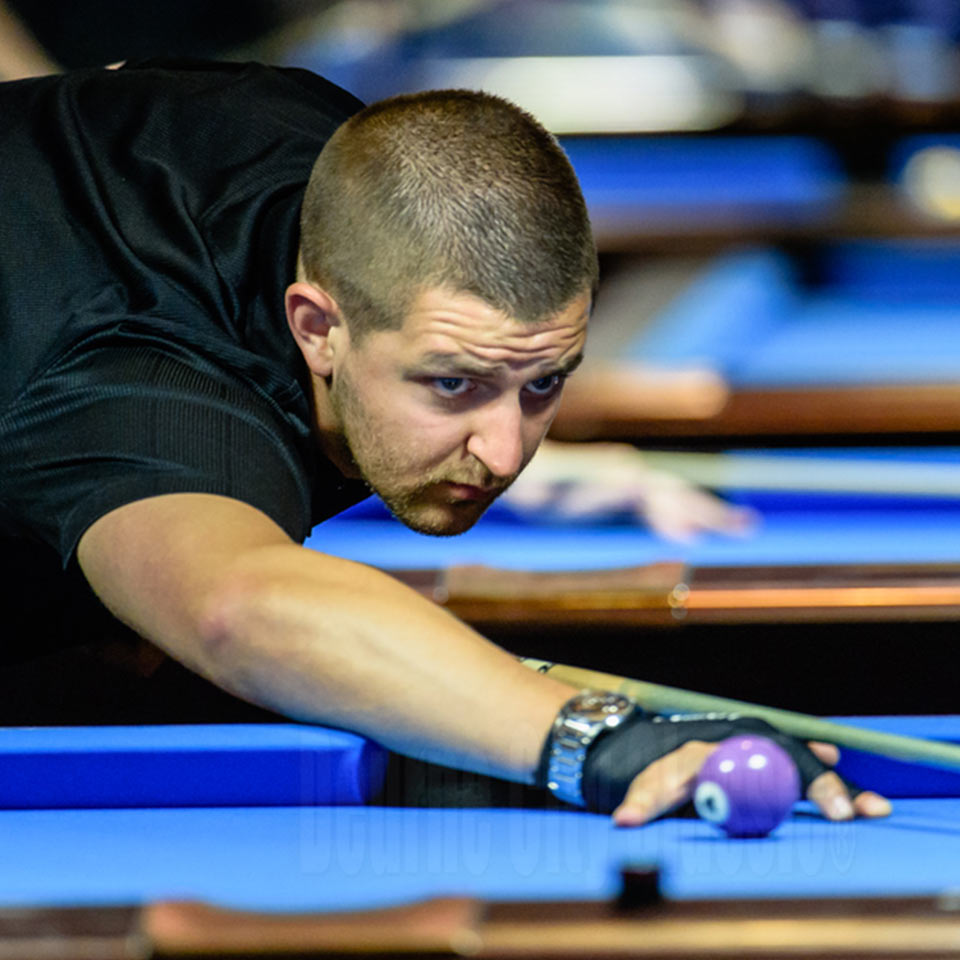
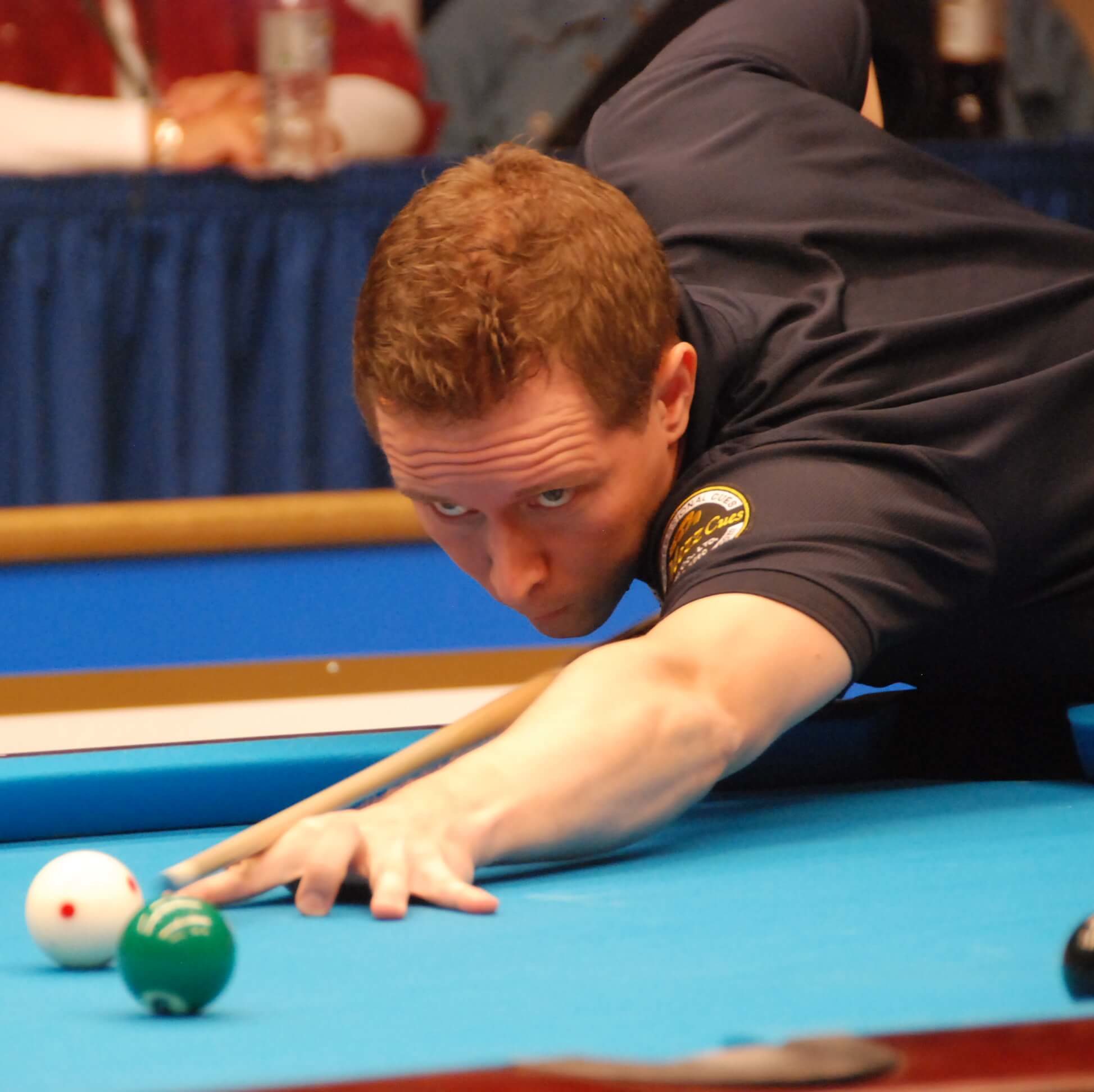
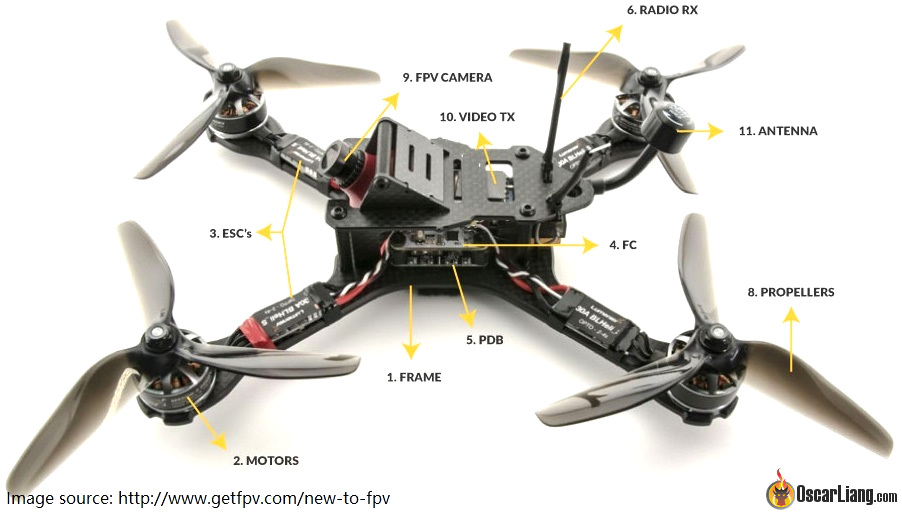
















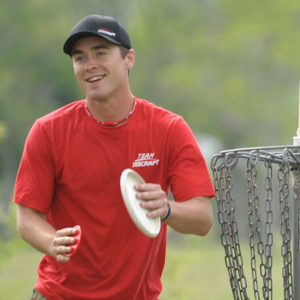














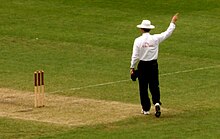

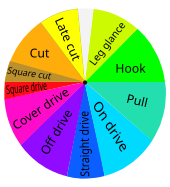
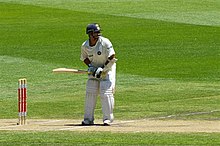


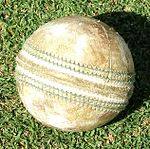
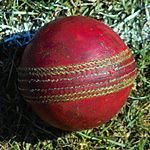




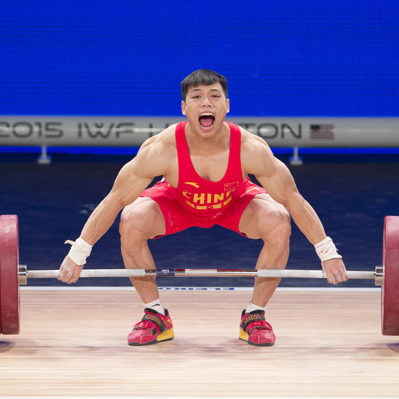



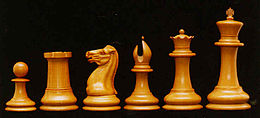
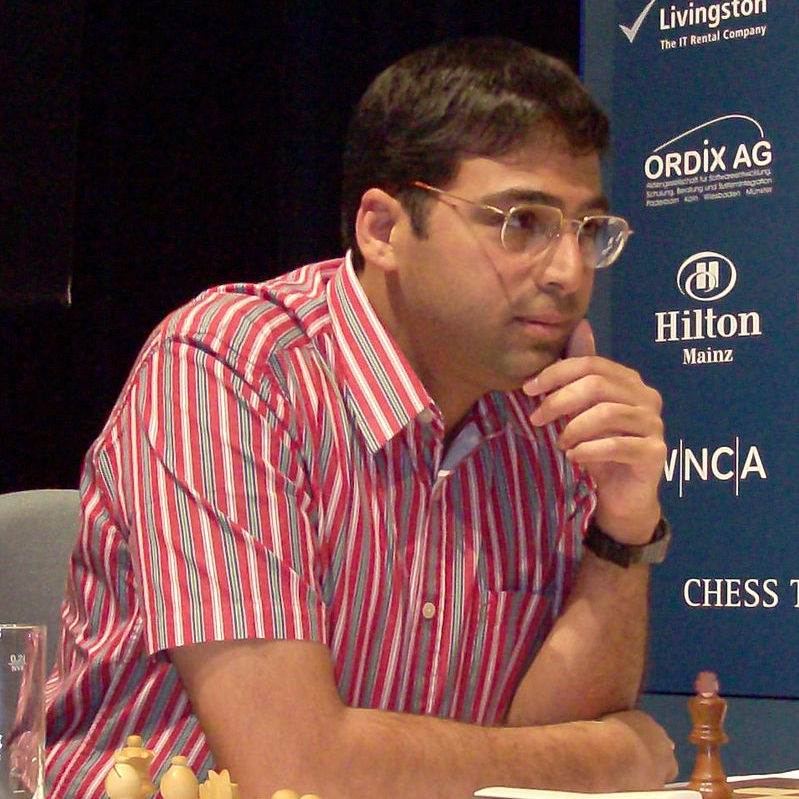




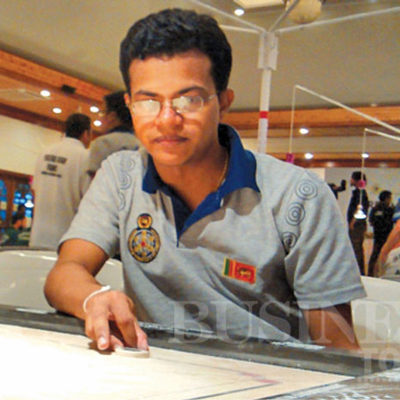
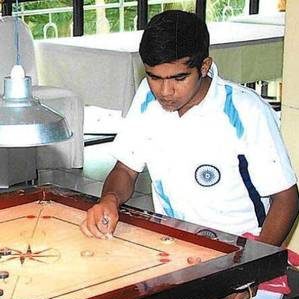


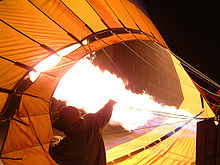


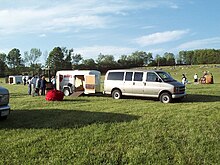

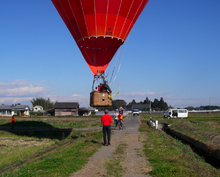






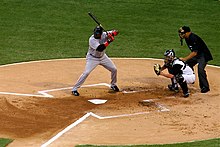
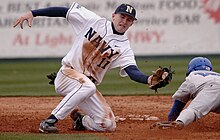
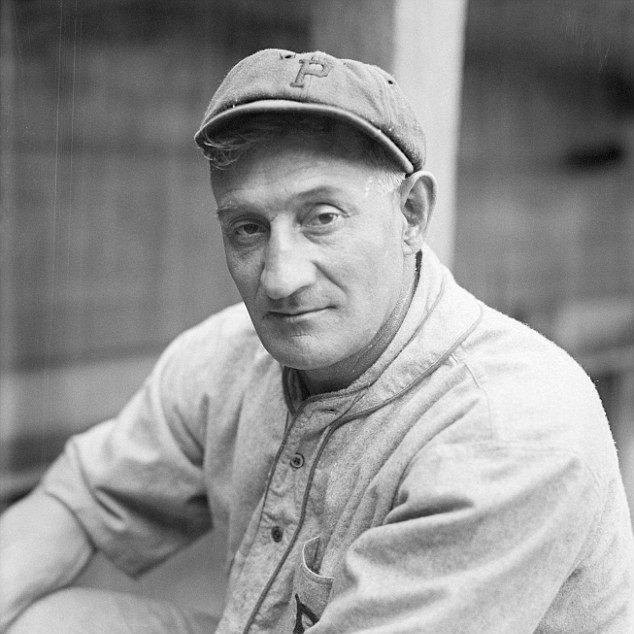

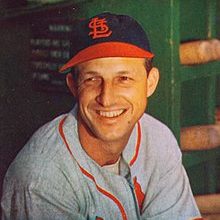
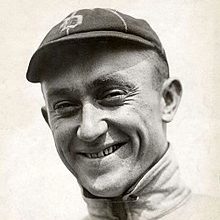
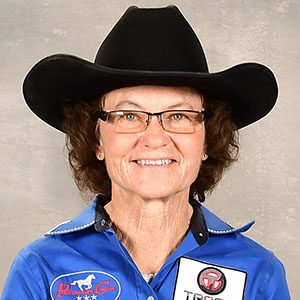


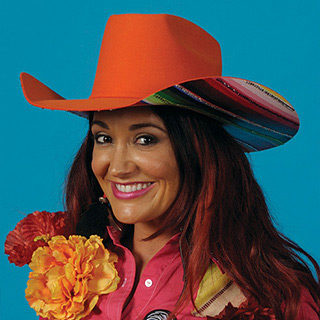
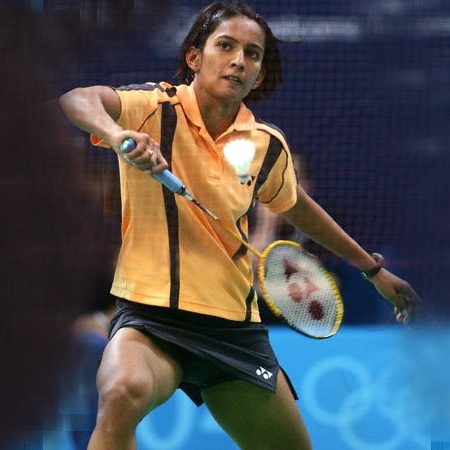




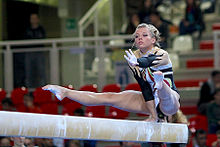
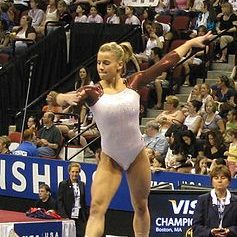


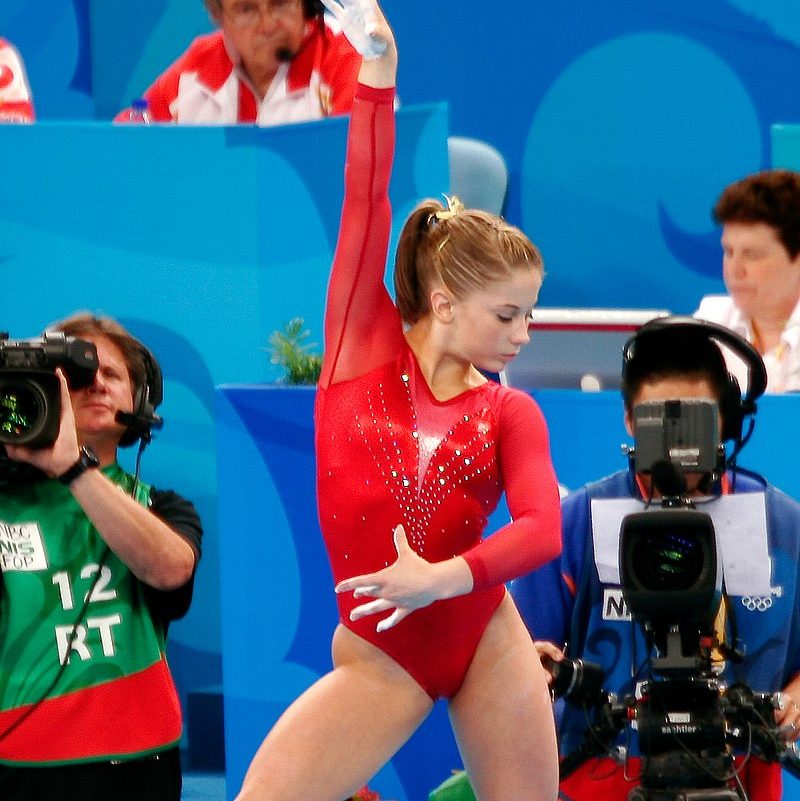





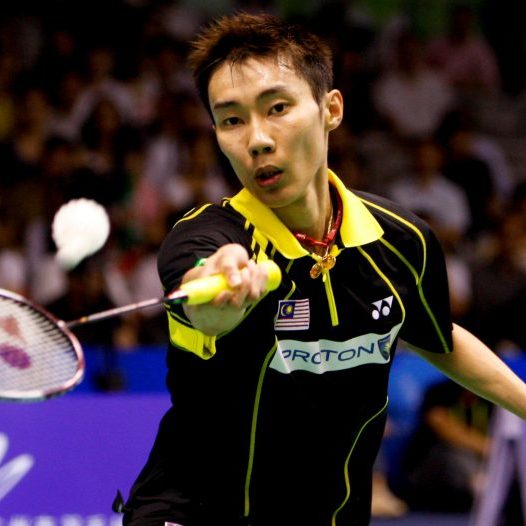

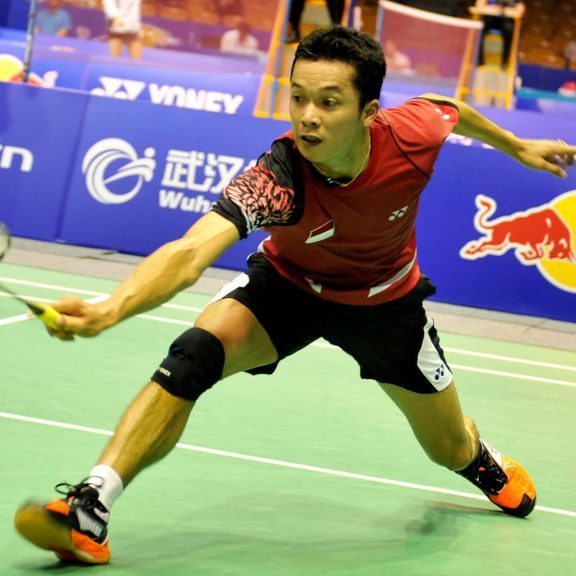

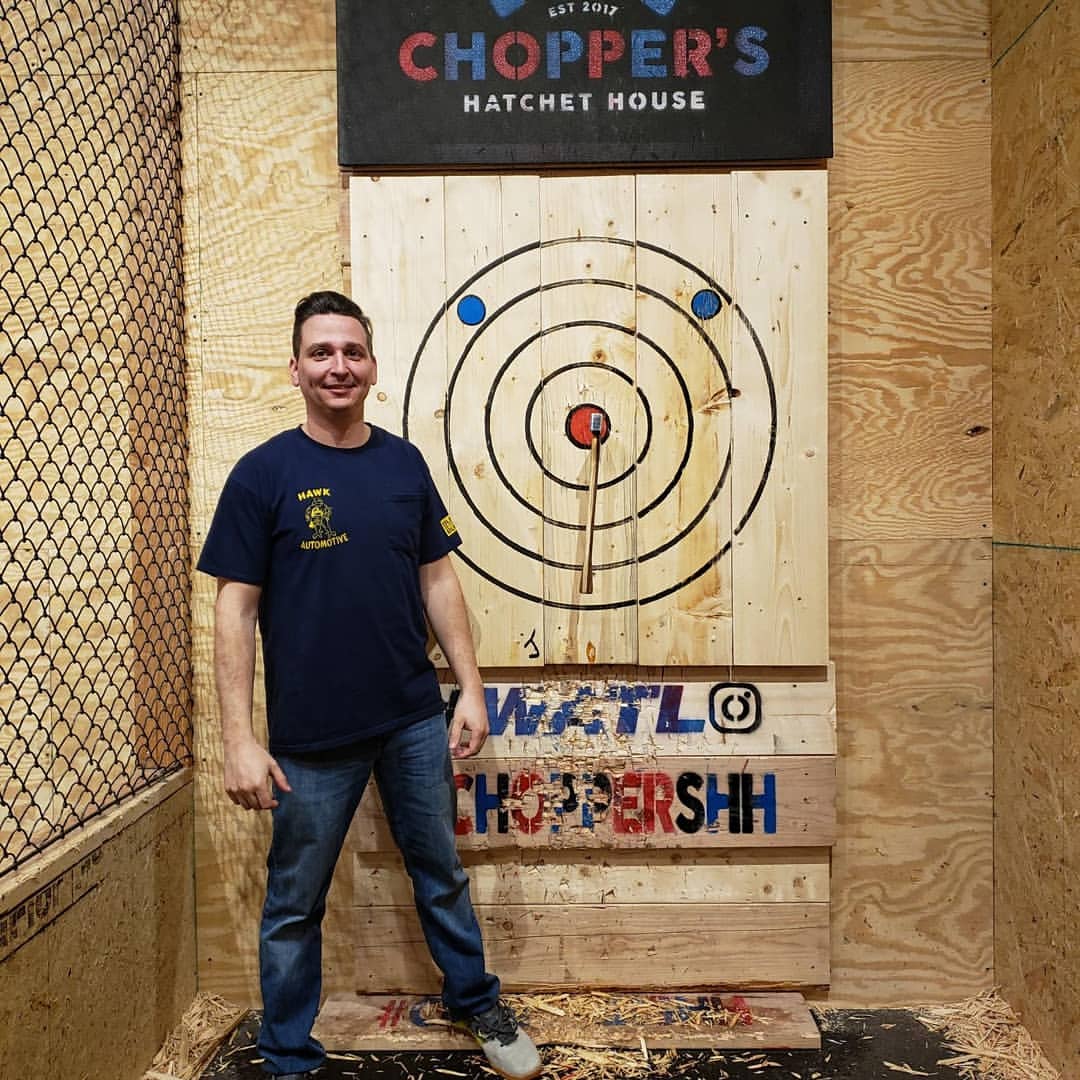


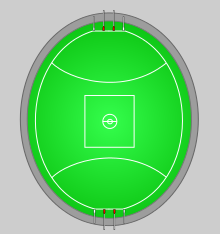

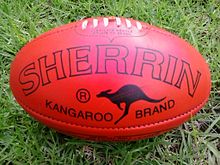



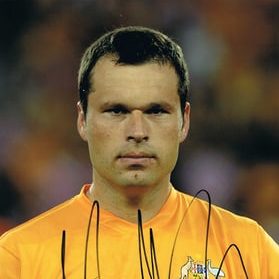

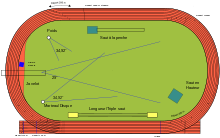


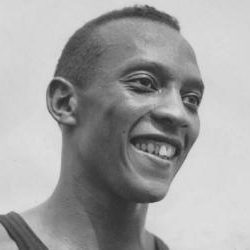




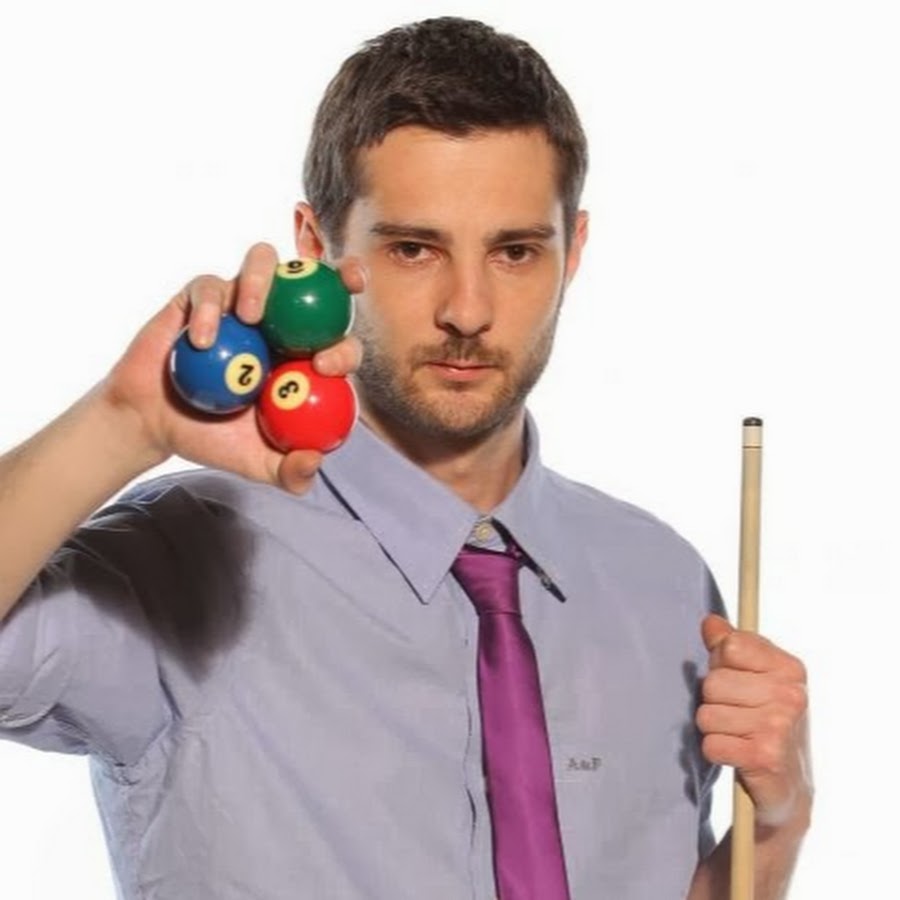
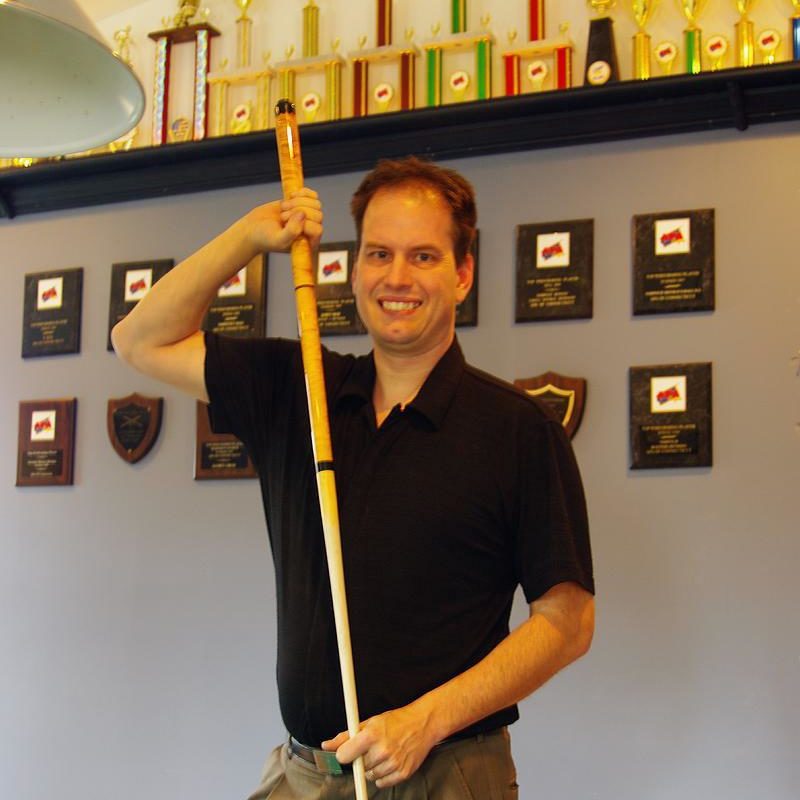
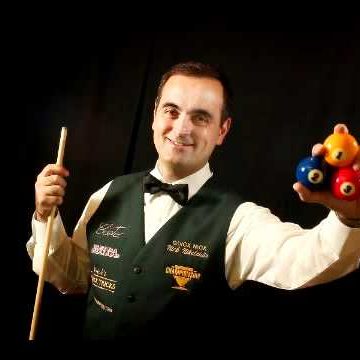




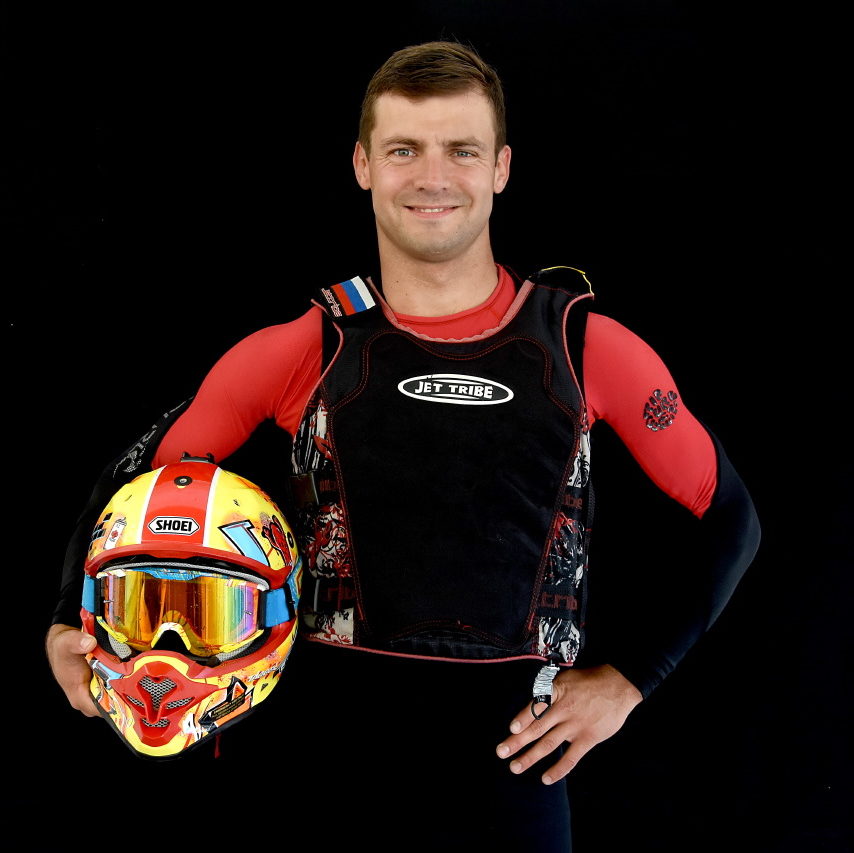
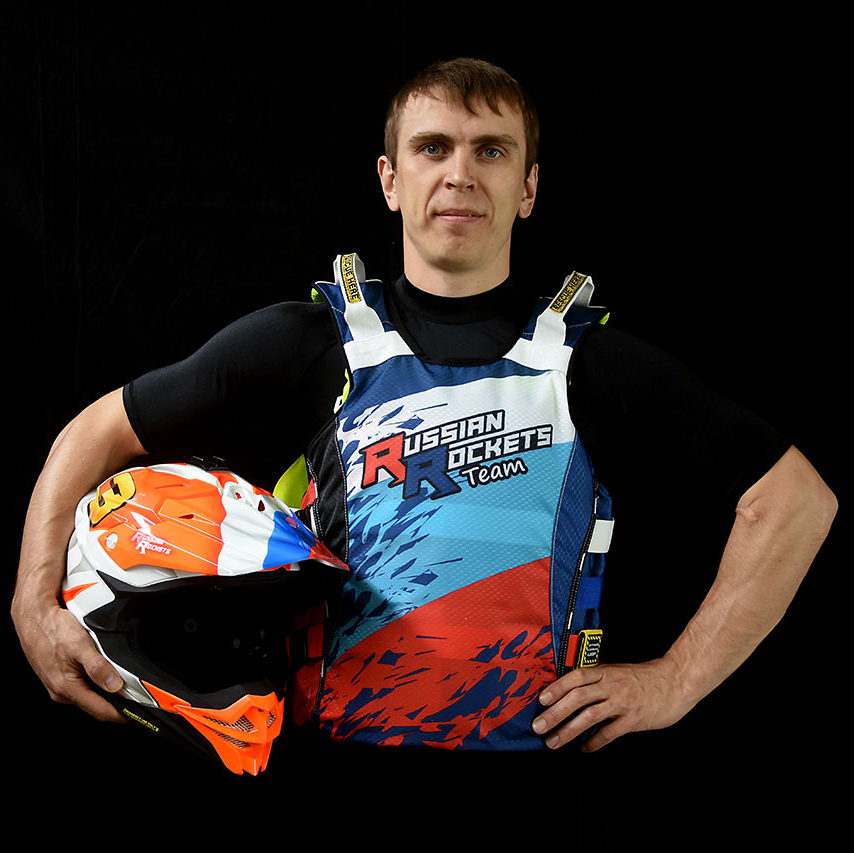
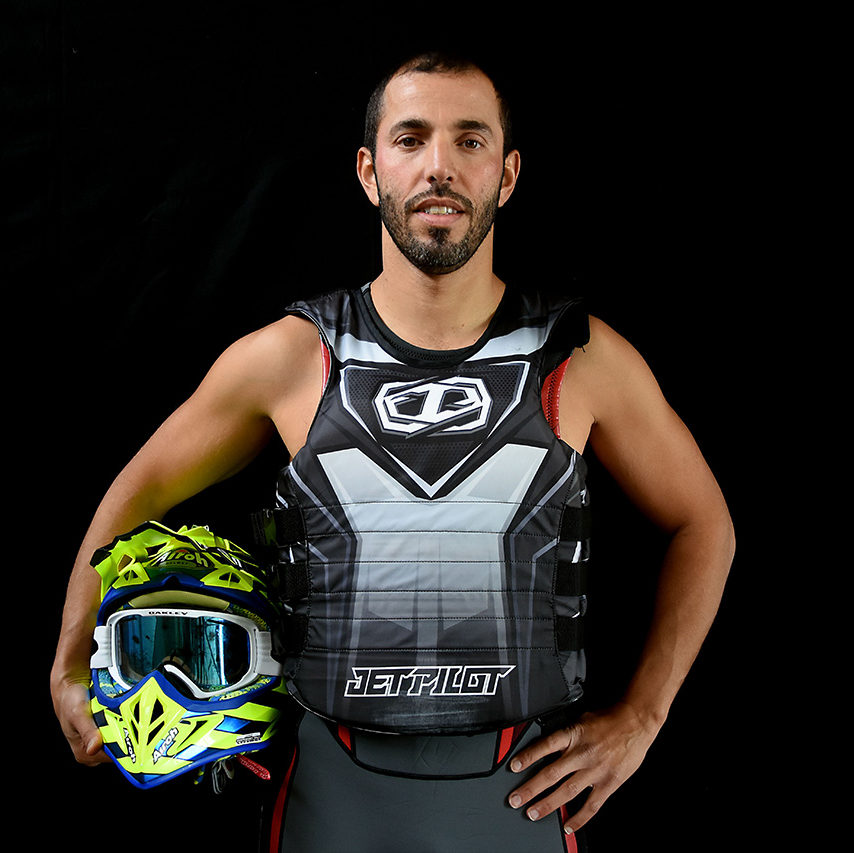
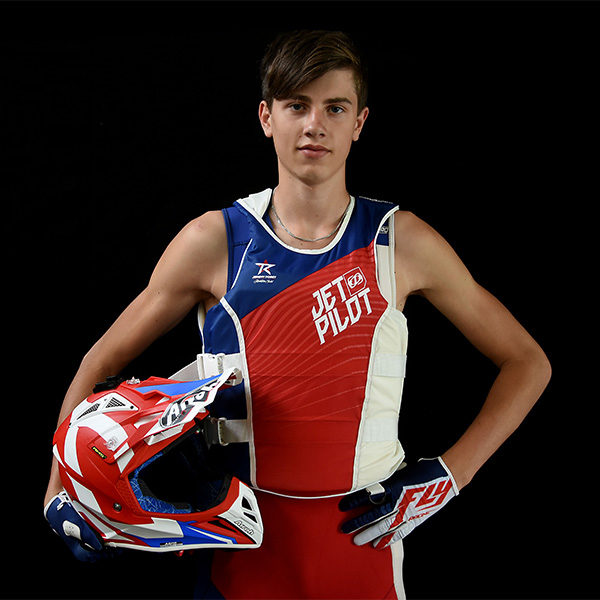

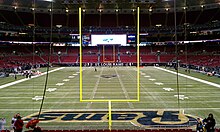




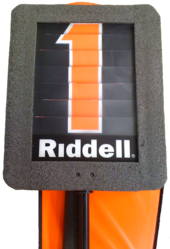




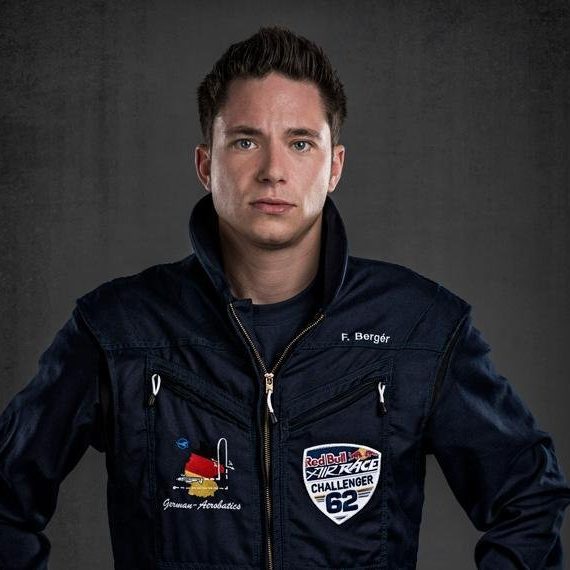
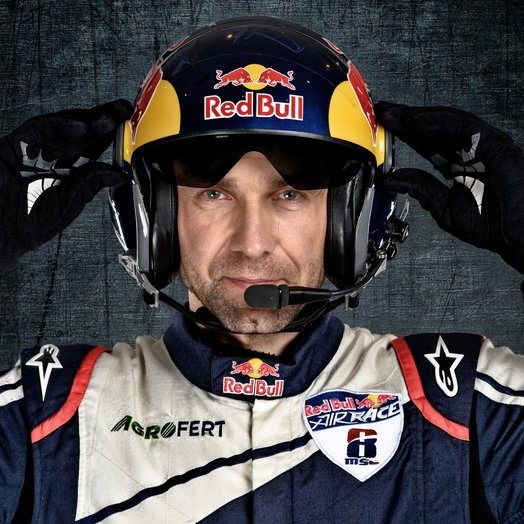




https://www.instagram.com/asiapsiholog_family/